timber 2022 Industry Yearbook
TIMBER TECHNOLOGY
Topics include: visual strength grading, timber connections, timber frame construction
TECHNICAL FEATURES
Sustainability: timber and carbon
The durability of CLT
UKCA marking for fire doors
INSPIRATIONAL CASE STUDY
Ibstock Place School Refectory: a grand timber hall with an intricate lattice roof And the winner is: Wood Awards 2021
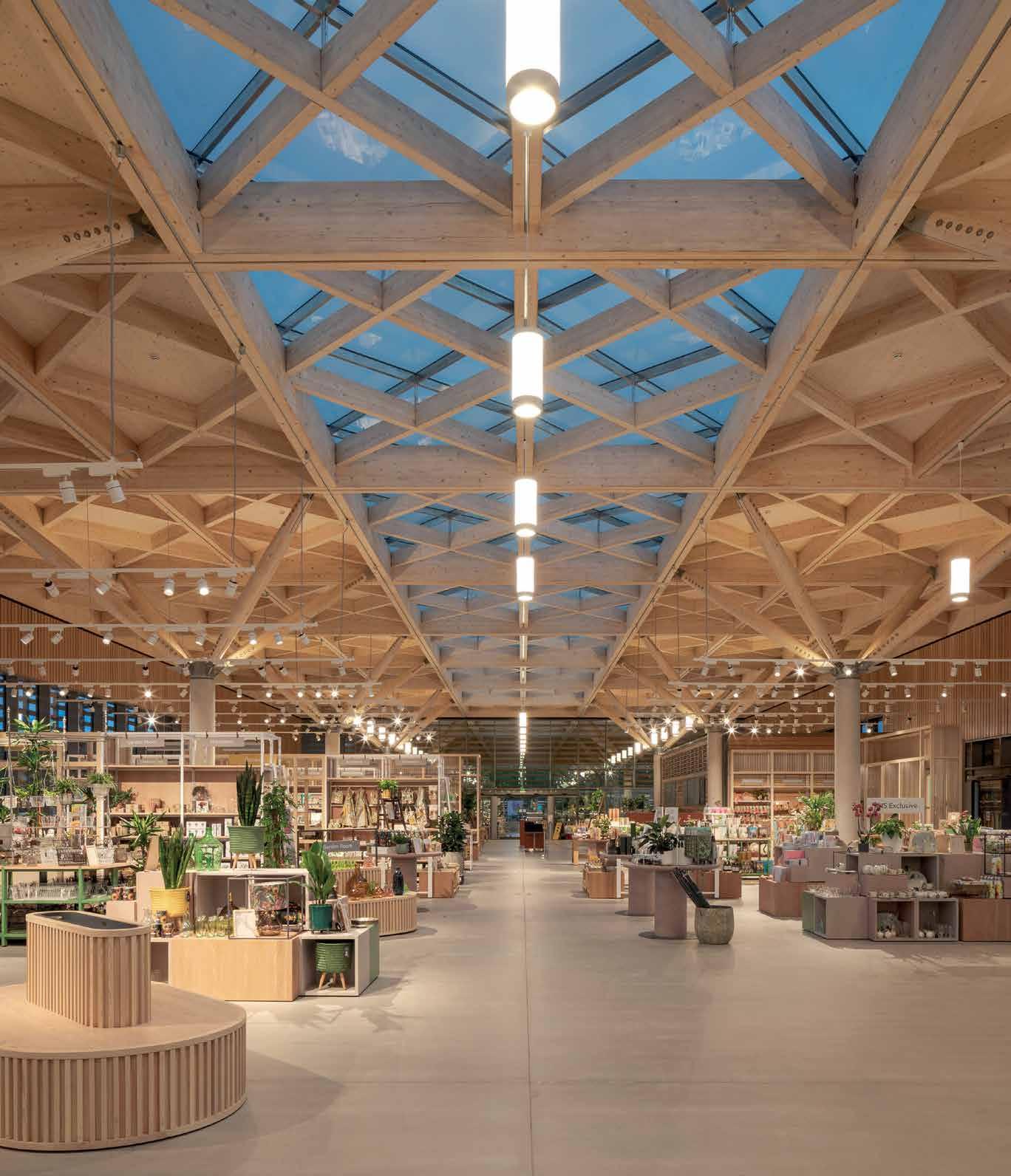
FIND A SUPPLIER BM TRADA certified companies
“Award winning, Ilulissat Icefjord Centre, is a unique building placed in a breathtaking environment in Greenland. Flame retardant treated oak panels with Woodsafe PRO”
“

“We can still improve - and we will”
I remain unwavering in my belief that wood will be the building material of choice in the future”
- Thomas Bengtsson, founder and CEO Woodsafe Timber Protection


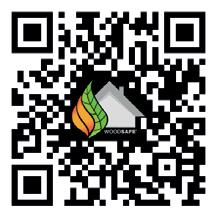 Credits to: Adam Mørk
Credits to: Adam Mørk

timber 2022 Industry Yearbook
TIMBER TECHNOLOGY
Topics include: visual strength grading, timber connections, timber frame construction
TECHNICAL FEATURES
Sustainability: timber and carbon
The durability of CLT
UKCA marking for fire doors
INSPIRATIONAL CASE STUDY
Ibstock Place School Refectory: a grand timber hall with an intricate lattice roof And the winner is: Wood Awards 2021

FIND A SUPPLIER BM TRADA certified companies
Published in 2022 by: Chiltern House, Stocking Lane
Hughenden Valley, High Wycombe
Buckinghamshire HP14 4ND
t +44 (0)1494 569600
e timberadvice@bmtrada.com
w www.bmtrada.com
While every effort is made to ensure the accuracy of the articles included, the company cannot accept liability for loss or damage arising from the information supplied. The opinions expressed do not necessarily represent or reflect the views of the publisher.
All rights reserved. No part of this publication may be reproduced, stored in a retrieval system, or transmitted in any form, by any means, electronic, mechanical, photocopying, recording or otherwise, without the prior permission of the copyright owners.

© 2022 Warringtonfire Testing and Certification Ltd

The publisher gratefully acknowledges the support of the firms whose advertisements appear in this publication. While every care has been taken in compiling this publication, the publisher cannot accept responsibility for any inaccuracies, or for the products or services advertised.
All photographs and illustrations are © Warringtonfire Testing and Certification Limited unless otherwise credited.
Production by:
Open Box Media and Communications
13 Premier House, St Paul’s, Birmingham B3 1RB
t +44 (0)121 200 7820
e inside@ob-mc.co.uk
w www.ob-mc.co.uk
We are committed to sustainable forest management and this publication is printed by Buxton Press who are certified to ISO14001:2015 Standards (Environmental Management System). Buxton prints only with 100% vegetable based inks and uses alcohol free printing solutions, eliminating volatile organic compounds as well as ozone damaging emissions.
07 Welcome: foreword
Providing timber expertise
Welcome to another edition of BM TRADA’s Timber Industry Yearbook and a fresh collection of technical timber articles.
09 News: industry updates
A year of change
Spotlight on 2021 activities and initiatives.
16 Events: Wood Awards
Celebrating communal school life
Highly commended for the Education & Public Sector Award, Ibstock Place School Refectory is a reimagined grand timber hall that offers a soothing visual and aural space for pupils.
20 Events: Wood Awards And the winners are...
A look at those who came top in the 2021 Wood Awards.
Timber technology
22 Advisory service
BM TRADA: technical timber, our experts and services
Ben Sharples gives an overview of expertise provided by the BM TRADA technical timber team.
26 Wood knowledge Timber training: who benefits?
Phil O’Leary explains how BM TRADA’s courses can help companies apply best practice principles.
29 Wood knowledge
How to become a competent visual strength grader
Nick Clifford explains what visual strength grading is and gives an overview of the specialist training available from BM TRADA.
32 Wood knowledge Specifying and sourcing timber in construction
An extract from Wood Information Sheet 2/3-10 Timbers – their properties and uses, which had a major update in 2021.
34 Engineering An introduction to timber connections
An extract from BM TRADA’s newest publication series with guidance for engineers.
37 Timber frame The importance of cavity barriers
Robin Lancashire explains the key role of cavity barriers and how they can limit the spread of fire.
41 Timber structures: sustainability
Storage solutions: timber and carbon
Toby Maclean discusses the key factors relating to the timber carbon store, both in new timber growth and in harvested wood products.
47 Timber structures: sustainability
Are timber structures good for the planet?
Will Hawkins investigates how a sustainably built environment offers carbon benefits.
ISBN: 978-1-909594-93-7
Cover image: The Welcome Building RHS Garden Bridgewater
Photo: Peter Cook
54 Timber structures: sustainability
Material matters: low-carbon timber design
Will Arnold considers how the efficient use of timber in construction can contribute to a more sustainable future.
04 | Timber 2022 Welcome Contents
63 Timber structures: sustainability
Affordable low-carbon timber homes: a balancing act Jae Cotterell outlines the challenges of construction budgets versus sustainability.
68 Timber structures: sustainability
Timber structures in building refurbishment
The retention, repair and retrofit of timber building structures has now become a priority to preserve the embodied carbon stored in the building fabric. James Walker describes the skills required.

77 Timber structures: off-site construction
Manufacturing a biogenic built environment
Robert Hairstans discusses the Biogenic Built Environment Framework: collaborative projects where research, innovation, commercialisation and education work in concert.
84 Timber structures: engineered timber CLT for private residential projects
Lee Murphy talks to three architects about their recent CLT projects.
93 Timber structures: engineered timber Moisture dynamics: the durability of CLT
Lewis Taylor summarises the findings from research on moisture dynamics in CLT by BM TRADA and Stora Enso.
96 Protection: preservation
Understanding how to protect timber
Kevin Underwood explores the external factors that can have a negative effect on timber and ways that timber can be protected.
105 Protection: preservation Product information in the wood protection sector
Gordon Ewbank explains how the new Code for Construction Product Information (CCPI) will help reinforce the drive for change in treated wood product information.
115 Landscape and exteriors: cladding
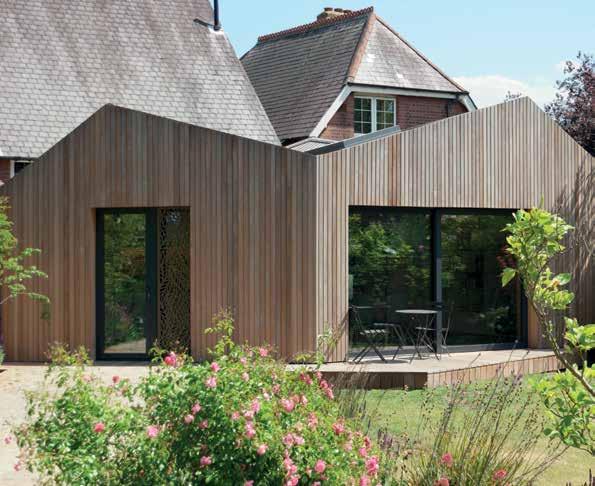
Avoiding common clangers
Janet Sycamore identifies issues that can affect a cladding project.
120 Landscape and exteriors: specification
Timber for use in garden and landscape construction
Paul Hensey explains how to specify timber for external use.
127 Joinery: case study
Innovative renovation
How windows and staircases can be used to transform a space, no matter the size.
132 Joinery: fire doors
UKCA marking for pedestrian doorsets with fire-resisting and smoke control characteristics
There is still significant confusion among fire door manufacturers regarding UKCA marking. Peter Barker explains the current regulatory and legislative landscape.
145 Materials: certification
Explaining UKCA marking
Making sense of the post-Brexit changes to the certification of construction products.
158 Materials: timber flooring
Sustainable wood flooring: an analysis
Peter Kaczmar discusses how to establish the environmental credentials of timber flooring products.
170 Education: architecture
Studio Bark – No Building As Usual
Addressing learning, diversity and the climate emergency through a live build.
Tabitha Binding reports.
175 BM TRADA: bookshop Publications
The best books on timber design and construction.
177 BM TRADA: directory Certified companies
BM TRADA certified companies for the supply of timber products and services.
Timber 2022 | 05 www.bmtrada.com TRADA Contents Welcome
16 84

Providing timber expertise
Welcome to another edition of BM TRADA’s Timber Industry Yearbook and a fresh collection of technical timber articles.
Following a year of upheavals related to the pandemic and the post-Brexit transition, 2021 became the best performing year in several decades for many across the timber industry. There has been an incredible demand for timber, driven partly by the need for sustainable building solutions, and the industry has worked extensively to meet it. Raw material prices soared.
Additionally, the market for garden offices, DIY projects and general home improvements flourished as remote workers spent more time in their homes. Furthermore, we have seen an uptake in the specification of timber by professionals driven to do their part to achieve net zero carbon. We are in a state of transition and we have seen this reflected first-hand in the thirst for knowledge about the practicalities of using timber, as demonstrated by callers to BM TRADA’s technical helpline.
It is against this backdrop that many of the articles included in this edition of Timber 2022 have been written, and thus reflect the ongoing developments and changes within the timber industry at this time.
Technical timber knowledge
Written by our BM TRADA technical timber team, on the topics of wood knowledge, engineering and timber frame best practice, Timber 2022 includes articles covering:
• visual strength grading (p29)
• timber properties and uses (p32)
• an introduction to timber connections (p34)
• cavity barriers in timber frame construction (p37).
We have also provided an introduction to this team and the services and training that they provide.
Sustainable construction
We continue to focus on the increasing need to build more sustainably during the climate emergency. Articles addressing these issues cover:
• how carbon is stored in timber (p41)
• how timber structures are good for the planet (p47)
• how to achieve low-carbon timber design (p54)
• examples of affordable low-carbon homes (p63)
• timber structures in building refurbishment (p68).
How we can help you
BM TRADA informs and assists those working in the timber industry through the provision of highquality independent advice. In 2022, we’re upping the game on every front.
Publications and the BM TRADA Bookshop
We remain committed to running the BM TRADA Bookshop and maintaining our publications and technical information. These publications can be bought from our bookshop at bookshop.bmtrada.com and through other well-known suppliers.
Technical helpline
BM TRADA’s technical team of experts answer thousands of your calls every year. We are delighted to announce that we are going to continue offering this service free of charge for the entirety of 2022.
We respond to everyone who calls with queries and will try to assist with straightforward advice or point you in the right direction, whether that’s to a specific publication or another service.
Webinar programme
Following on from a year experimenting with technical webinar programmes, we’re continuing to run these throughout 2022. We will be repeating two series that were incredibly popular – Structural timber engineering in early spring and Fundamentals of timber in late spring –as well as delivering new ones, which are intended to help people on learning journeys alongside their work.
We hope you enjoy Timber 2022. n
Timber 2022 | 07 www.bmtrada.com
Welcome Foreword
Need we say more? or call: 01786 819 225 uk.westfraser.com UK’S ONLY MANUFACTURER OF ZERO-ADDED FORMALDEHYDE OSB UK’S MOST SPECIFIED P5 FLOOR UK’S FIRST MANUFACTURER MDF
A year of change
Spotlight on 2021 activities and initiatives.
Post-Brexit legislative change
The UK Construction Products Regulation (UK CPR) – the new regulatory framework for construction products following the UK’s departure from the EU – came into effect on 1 January 2021, with recognition of the CE mark to cease in Great Britain by the end of the year.

However, the Government confirmed in August that businesses will have an extra year to start using UKCA marking, the new product safety marking in the UK. This enables CE-marked goods to continue being placed on the market in Great Britain until 1 January 2023 where businesses were due to begin using the UKCA marking by the end of 2021, including for construction products.
Technical advice
It is imperative that those involved with construction products – including manufacturers and importers – understand their new obligations. To aid this transition, BM TRADA has provided an overview of the new UKCA marking requirements in a new free technical bulletin – launched initially in February, and further updated in spring 2022 to reflect the legislative changes mentioned above. See page 145 for an extract from this bulletin >>
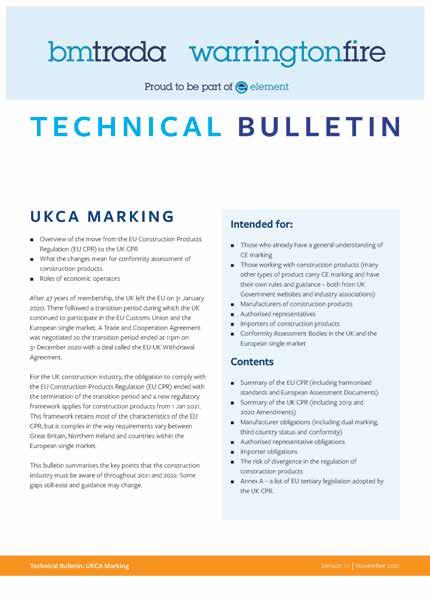
Timber 2022 | 09 www.bmtrada.com
Llanbedr – affordable timber housing in Wales
News Industry updates
Photo: Willams Homes
There’s
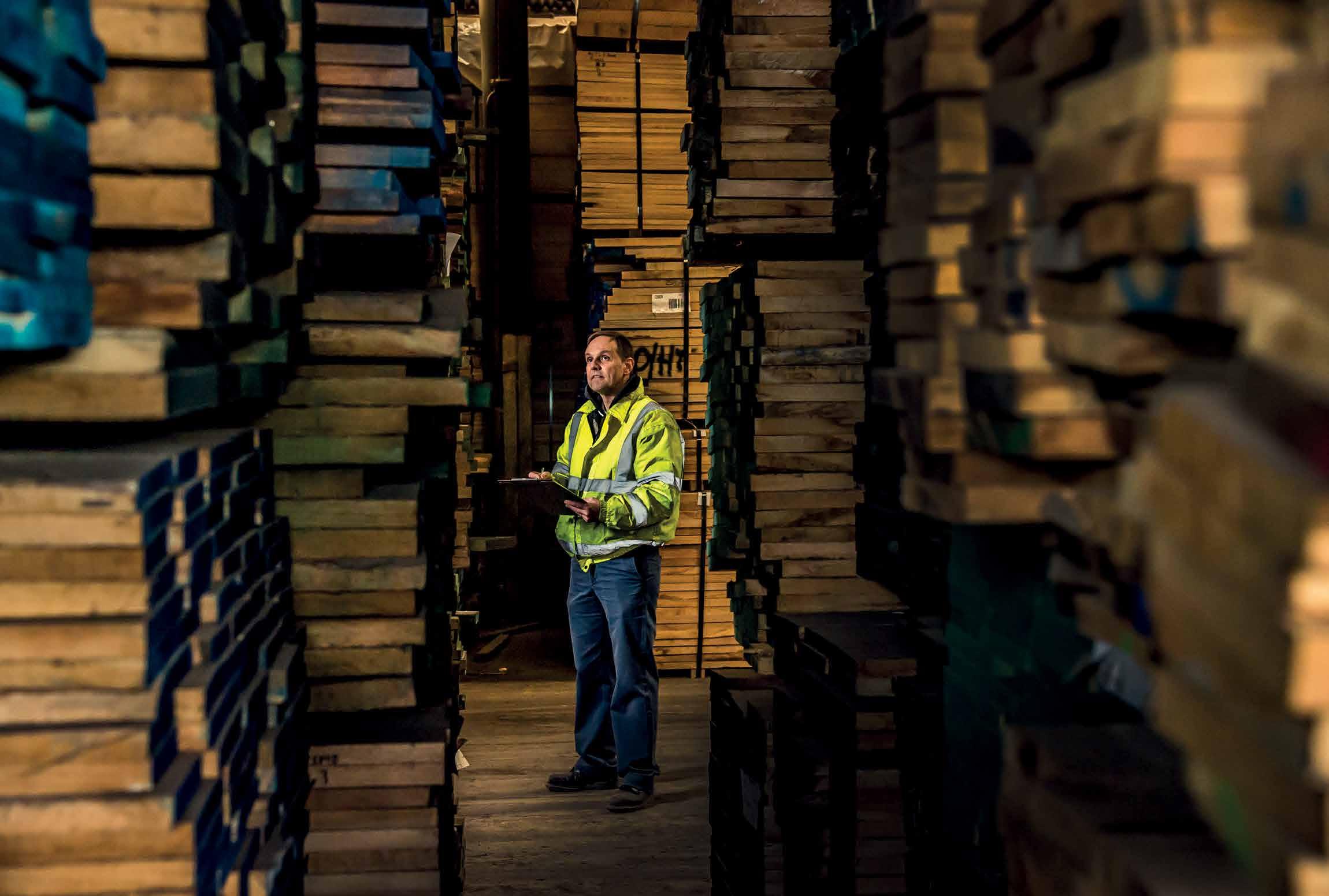
Better, connected. www.timberconnection.co.uk Get Lost
nothing James loves more than to lose himself in our warehouse, amongst thousands of cubic metres of imported hardwoods and premium grade softwoods to find the perfect pack for you.
Brand-new guidance on timber and carbon is also due to be published in spring 2022 and will be available to buy from the BM TRADA Bookshop. Part of the Wood Information Sheet series, WIS 2/3-72 Carbon and timber in construction for building designers is a timely in-depth review of all the complex issues around the subject, and provides holistic guidance on whole-life carbon calculations and how to minimise carbon emissions in the built environment.
Another imminent publication is the Research Summary Crosslaminated timber and moisture, which outlines the findings of extensive research undertaken by BM TRADA in collaboration with Stora Enso. This summary includes:
• information about the performance of end-grain sealers, adhesive tapes, panel joint types, and temporary protection membranes on rates of water uptake
• the influence of solar gain and temperature on water uptake
• drying rates
• implications for designers and contractors of crosslaminated timber.
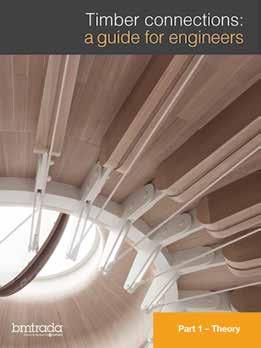
Our full programme of webinars also launched in 2021 with great success and attracted more than 3,000 sign-ups across the year. Experts from BM TRADA and Warringtonfire – including Lewis Taylor, Phil O’Leary, Peter Barker, Hugh Mansfield-Williams and Mostafa Jafarian – presented on topics such as fire performance, UKCA marking, structural timber engineering, the nature of wood and moisture in timber.
Publications in progress
Part 1 of Timber connections: a guide for engineers is an exploration of the underlying theory of connections and will be particularly helpful for engineers who find this topic challenging. Planned additions to this series include Part 2 – Further topics, Part 3 – Worked examples and Part 4 –Proprietary connectors, which will be released during 2022.
The series will assist the engineer with connection typology, design detail and the steps involved in verification by calculation. Technical illustrations, calculations and worked examples support the comprehensive textual analysis of the topics and challenges of timber connections.
There is also considerable demand for best practice information on how to design, specify and install cladding, particularly in response to evolving regulatory requirements. The long-awaited 4th edition of External timber cladding is being prepared by Dr Ivor Davies and BM TRADA’s technical consultants. This enlarged edition contains guidance on the key recommendations in BS 8605-2. It explains their background and practical application, while giving additional guidance that is not available in the BS 8605 series.
The new edition of External timber cladding, to be published in 2022, will include:
• an outline of the benefits of timber compared to other cladding materials
• discussion of each stage in the design and construction process
• expanded guidance on fire safety and structural performance
• new construction details for the main connections and junctions on a timber-clad wall
• information on the latest material options such as modified woods and surface coatings.
Home-Grown Homes
Since launching in April 2018, the Home-Grown Homes project team has been diligently investigating Wales’ potential to become a high-value forest nation. Home-Grown Homes, of which BM TRADA was a key delivery partner, concluded at the beginning of 2021 with a full report for the Welsh Government identifying which supply chain interventions may be most effective and how they might be applied, as well as a comprehensive list of outputs.
The project’s key findings and recommendations are summarised in the project report, while practical tools and guidance have also been developed for social housing developers, architects and engineers, timber frame manufacturers and wood processors, forestry managers and land owners.
Robin Lancashire, BM TRADA’s senior timber frame consultant, has been involved since the project launch and co-wrote the output Making the right choices – a guide to improving the build quality of new build timber frame social housing with fellow BM TRADA consultants Lewis Taylor, Adam Moring and Gavin Fidler.
These resources are all available for free download on the Woodknowledge Wales website. >>
Timber 2022 | 11 www.bmtrada.com News Industry updates
— our Mission
Train Emergency Services, International Search & Rescue and HM Armed Services



Exceed project and customer expectations as standard
— our services
62 Peterborough r oad Southampton, Hampshire, S o 14 6HX 023 8033 4929 | 07920 038057


jon@fallenandfoundartisans.co.uk
Mill trees into shoring timber to aid in rescue operations and humanitarian rescue efforts
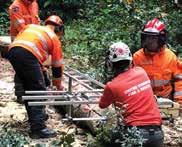
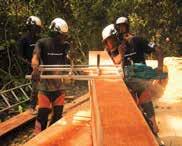
Provide timber for a variety of projects, bespoke products, construction and crafts

Mobile Sawmilling - Logosol B1001 Bandsaw Mill | Chainsaw Milling - Granberg Alaskan Mills
Forestry – Hand Cutting and Timber Production | Arboricultural Consultancy and Contracting

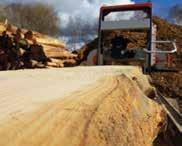

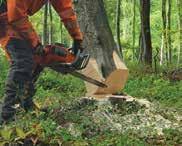
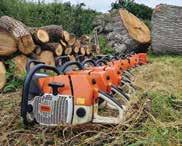

Bespoke Furniture Production and Commissions undertaken | Re-purposed Forestry and Arboricultural Timber Sales Freelance LANTRA Instructor (Ground Based Chainsaw operations)
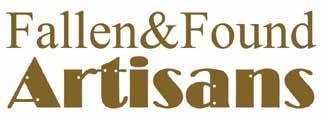

12 | Timber 2022
RE- CLAIM RE- SAW RE- PLANT
RE SCUE RE- PURPOSE
to respond to incidents and capacity building missions
Awards
Two highlights of the UK timber industry calendar are the much-anticipated ceremonies of the Wood Awards and the TTJ Awards. Both continued with some adjustments as a result of the ongoing pandemic.
The TTJ Awards 2021 – its 25th anniversary – proceeded as a hybrid event, allowing people to tune in from across the UK. Winners on the day included timber mainstays English Woodlands Timber, Arnold Laver, Accsys Technologies and International Plywood.
The Wood Awards 2021 – see page 20 for more – saw Magdalene College Library, a ‘tour de force of architectural design and achievement’, take the coveted Gold Award to become the latest winner of winners. Other winners included The Alice Hawthorn, St John Street, The Boathouse, Built: East Pavilion, The Welcome Building RHS Garden Bridgewater, Gayles Farm 5 and the Iso-Lounge Chair.
This year, however, also saw the addition of the FSC® Furniture Awards to the UK calendar – a new extension of the awards that have been running in Italy since 2019. Organised by the Forest Stewardship Council®, the goal of the FSC® Furniture Awards is to recognise and celebrate the commitment of FSC®-certified companies in the indoor and outdoor furniture categories.
Twelve awards for indoor and outdoor furniture were given to FSC®-certified companies active in the furniture sector across Italy, the UK, Germany, Poland and Croatia.
Two UK-based companies – Community Products (UK) Ltd and Buoyant Upholstery Ltd – were on the winners’ list for environmentally friendly outdoor furniture and play equipment for toddlers, and exemplary corporate social responsibility policies respectively.
TRADA and TTF merger
TDUK is a new cross-sectoral organisation formed by the merger of the Timber Research and Development Association (TRADA) and the Timber Trade Federation (TTF) in 2021.
TRADA and TTF operated as separate brands initially but as of December 2021 the combined organisation is now known as TDUK (Timber Development UK), with a new brand identity. Many plans are in progress for the new organisation, including a sustainability committee which has to date produced a technical paper on carbon calculation. n
References
• www.bmtrada.com/certification-services/third-partycertification-non-fire/ukca-marking-for-construction-products
• woodknowledge.wales
• Books, Wood Information Sheets and Research Summaries mentioned are available to buy from bookshop.bmtrada.com
• Assessing the carbon-related impacts and benefits of timber in construction products and buildings, Technical Paper, TDUK, November 2021
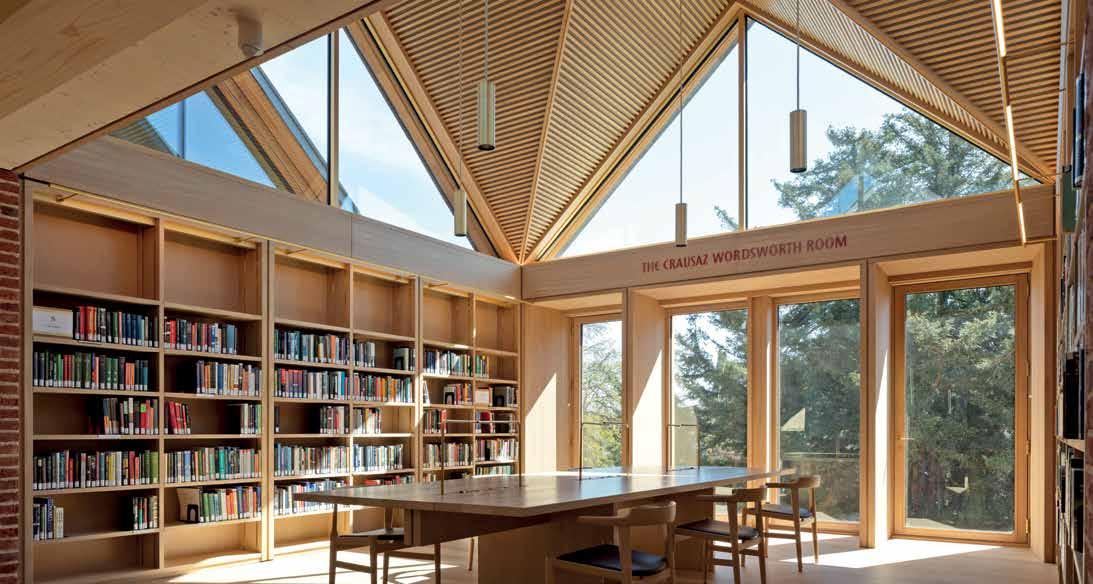
Timber 2022 | 13 www.bmtrada.com
News Industry updates
Magdalene College Library.
FSC-A000503
Photo: Niall McLaughlin Architects / Nick Kane
TIMBER DEVELOPMENT UK
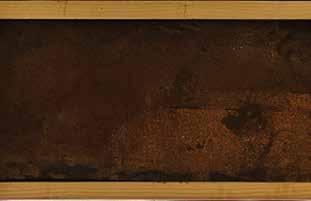



Timber Development UK has been formed from the merger of two of the largest and longest established organisations in the supply chain, Timber Trade Federation (TTF) and Timber Research and Development Association (TRADA).
Bringing these two associations together as one will create the largest, most comprehensive supply chain body in the UK, spanning from sawmill to specifier and all points in between.
We want to use this new organisation to capitalise on the growing interest in designing with timber and to act as an agent of change towards more sustainable, low carbon forms of construction.

We will help facilitate this by
•Enabling greater dialogue throughout the supply chain, from designers to manufacturers to suppliers, all within the same organisation;
•Developing the UK’s largest, most comprehensive online library of technical specification and design guidance;
•Providing regular training, CPD and webinars to hear from other practitioners and share best practice;
•Working with the UK university network via our University Engagement Program (UEP) to ensure the next generation of specifiers is equipped with the information and tools to confidently design with timber;
•Delivering the tools, training, guidance and auditing to ensure only correctly marked, legal and sustainable timber products are placed on the UK market;
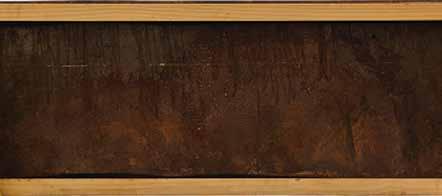

•Developing supply-chain level market data to make accurate business decisions on purchasing and supply;
•Publicising and promoting the benefits of timber via our newsletters, magazines and digital outputs;
•Promoting best practice via competition such as The Wood Awards, the University Design Challenge and other activities;
•Facilitating and hosting networking and discussion opportunities via lectures, dinners, exhibitions and drinks evenings around the country.
Timber Development UK will be launching as a fully integrated organisation in summer 2022. In the meantime please visit www.trada.co.uk and www.ttf.co.uk to keep up to date on our activities.

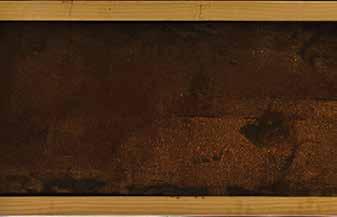

















SOURCING
NETWORKING EVENTS
e: ttf@ttf.co.uk | p: 020 3205 0067 | w: ttf.co.uk THE BUILDING CENTRE, 26 STORE STREET, LONDON, WC1E 7BT This image has been modified | Please see Built East Pavilion. Winner of Small Projects category at the Wood Awards | Architect: OGU Architects + Donald McCrory Architects | Timber Distributor: International Timber | Find out more www.woodawards.com
SPECIFYING GUIDANCE
TRAINING
Celebrating communal school life
Highly commended for the Education & Public Sector Award, Ibstock Place School Refectory is a reimagined grand timber hall that offers a soothing visual and aural space for pupils.
Maccreanor Lavington Architects has created a new school refectory with three dramatic vaulted roofs, each a diamond-grid lattice of glued laminated (glulam) timber beams rising to a glazed lantern. It stands in the grounds of Ibstock Place School in Roehampton, south-west London, and the three vaulted volumes define the primary functions of the building –dining hall, servery and kitchen.
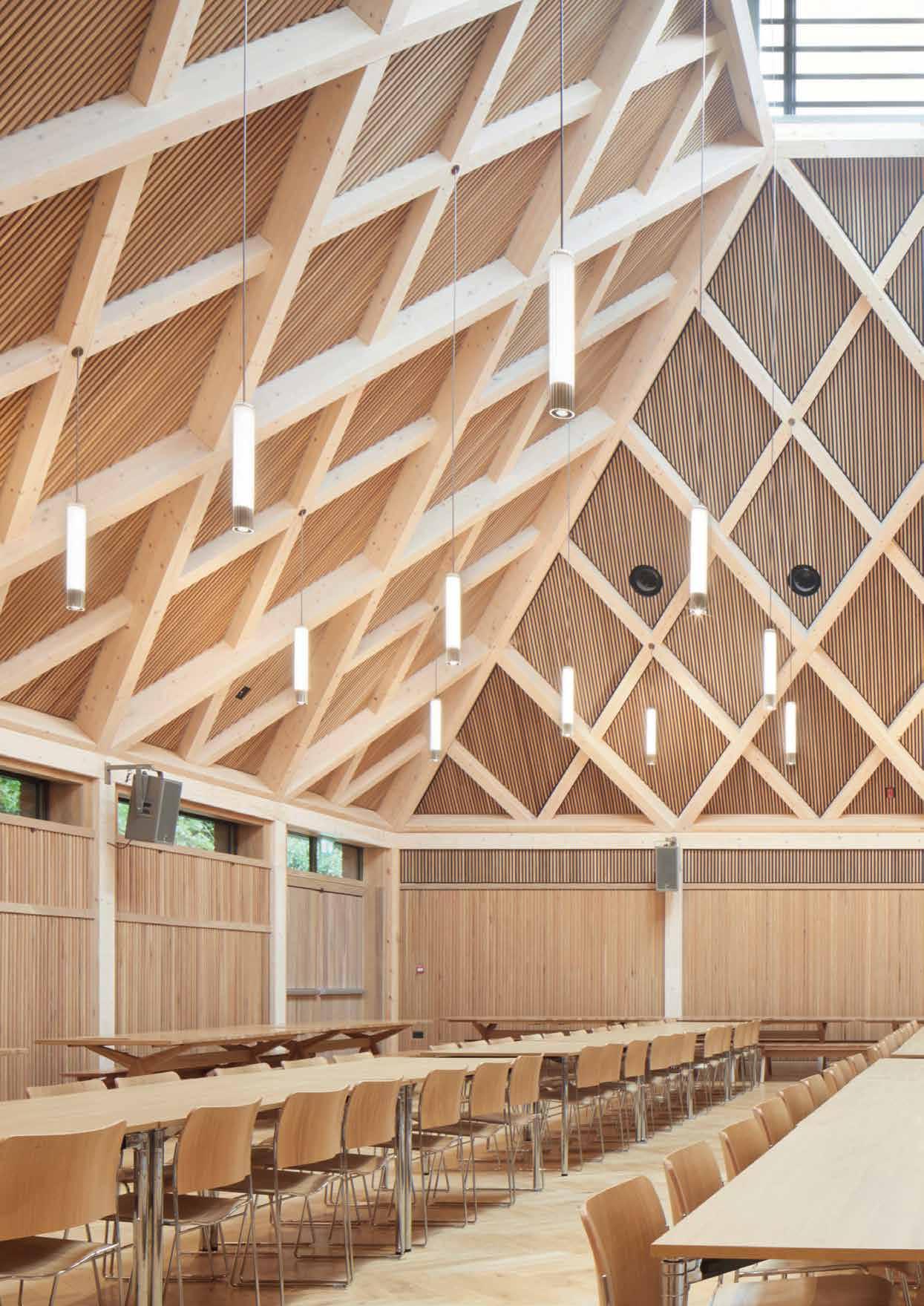
Every day 1,200 pupils come here for lunch – the dining hall can seat up to 500 pupils at any one time – and the lofty spaces aim to help celebrate communal school life. As the architect explains: ‘To create an interior that was celebratory while warm, welcoming and comfortable to use, we naturally looked at timber, both as a structural element and as a finish. In our practice, we use timber for its low-carbon qualities, visual warmth and character; and because of the quality and programming benefits that prefabrication of timber components can offer.’
The transformation
Ibstock Place is a private co-educational school for pupils from nursery to sixth form, and occupies the house and grounds of a former 16-bedroom Edwardian mansion with additional school buildings – theatre, classrooms and new refectory – all set between mature trees in the original landscaped gardens. Running alongside the eastern garden boundary, the refectory has a backdrop of mature London plane trees, and its external materials, clay-tiled roofs and London stock brickwork walls make reference to the neighbouring buildings on the site. The gentle roof pitches descend to relatively low eaves to reduce the visual impact of the large internal volumes. A colonnade with brick piers runs along the main facade of the refectory and links it to paths leading to other parts of the school. >>
Events Wood Awards FSC-A000503 / PEFC/16-44-002 16 | Timber 2022
Project details
Ibstock Place School Refectory
Completion date: December 2019
Building type: Refectory
Location: Roehampton, south-west London
Architect: Maccreanor Lavington Architects
Structural engineer: engineersHRW
Main contractor: Feltham Construction Ltd
Structural timber supply and installation: Constructional Timber (Manufacturers) Ltd, Barnsley
Joinery: D Smith, Royston; AAS Projects and Design, Rickmansworth
Timber suppliers: Mosser Leimholz GmbH (glulam), Austria; X-Lam Dolomiti Srl (CLT), Italy; Havwoods UK (floor)
Timber elements: Roof structure, wall linings, staircases, handrails and balustrades, internal linings and acoustic panels, doors, windows and floors
Timber species: PEFC™-certified Austrian spruce, FSC®-certified American white oak, FSC®-certified European oak
 Ibstock Place School Refectory
Photo: Jack Hobhouse
Ibstock Place School Refectory
Photo: Jack Hobhouse
Events Wood Awards
Each roof structure has a similar hierarchy of elements: a series of primary 160mm x 520mm glulam beams with secondary 160mm x 440mm glulam beams incline in opposite directions to create the main diagrid. They rise from the steel ring beam at the eaves to a timber ring beam at the lantern or to the corner hip beams. Fixed between them are inclined 160mm x 200mm glulam beams, creating a subsidiary diamond lattice.
The team also considered the idea of using the glulam beams as a two-way spanning diagrid. As Greg Nordberg of engineersHRW explains:

‘This format reduced the stresses on individual members but created more onerous connections, meaning that equivalent sized sections would be required. Overall, the hierarchical approach was just as efficient and more economical.
‘The stiffness of the roof geometry and the truss action of the roof were considered with separate models to provide an envelope of forces for element design and examine alternative load paths for disproportionate collapse.’
Although the refectory is built on the footprint of former dining facilities, the architect has trebled the usable floor area by inserting a generous sixth form study area, mezzanine gallery and part of the servery above the kitchen, and by excavating a generous basement for stores.

The lattice structure is exposed and the diamond-shaped spaces between the inclined glulam beams are filled with oak-slatted panels that provide acoustic absorption. The glulam beams rise to projecting glazed lanterns, which fill the deep spaces below with natural light and support the natural ventilation strategy. Below the roof, the internal walls are panelled with matching oak slats; doors and floor finishes are also made from oak.

Roof design
In shape, the timber roof structures are truncated pyramids with a complex geometry; they enclose spaces of different sizes and rise at different inclinations to lanterns that are of different size but all terminate at the same height.
The corner hip beams act in compression to transfer the bulk of vertical loads from the roof to the steel ring beam. At the eaves, the first floor structures to the smaller hall and the kitchen provide restraint to the ring beam to reduce deflection under vertical loads. The in-plane action of these floors transfers lateral loads to diagonally braced bays at the corners of the building. The lanterns consist of welded steel frames that transfer horizontal loads across the openings at the top of the roof and stiffen the edges of the ring beam.
The geometry of the diamond grid lattice was fine-tuned to minimise variations in size of the oakslatted acoustic panels set between them. As a result, only four different sizes of diamondshaped panel were used throughout the project and they are of a manageable size for manual handling. The oak
18 | Timber 2022
A colonnade runs along the main facade of the refectory, linked by paths to other parts of the school.
Photo: Jack Hobhouse
The timber-lined bays are attractive and comfortable places to eat.
Photo: Jack Hobhouse
During assembly the glulam beams were supported by an internal loadbearing scaffold.
Photo: Constructional Timber
Events Wood Awards
slats are lined with acoustic fabric panels and incorporate concealed cabling for lighting, data and other services. They were prefabricated and fully finished off-site.
The assembly of beams at different inclinations was complex; the glulam had to be fabricated with millimetre precision and connections to it had to be designed and fabricated. The inclined 160mm x 520mm and 160mm x 440mm glulam beams are connected by concealed hangers or galvanized flitch plates depending on their load requirements. Connections between the glulam beams and the steel ring beam structure that supports them are made with galvanised steel plates, which were specially developed for the project by engineersHRW and specialist timber contractors Constructional Timber. The glulam roof structures are overlaid with a cross-laminated timber (CLT) deck that contributes to the in-plane stiffness of the inclined roof planes.
Roof installation
Once the timber-faced steel ring beam at the eaves was installed, a loadbearing scaffold was erected that mimicked the internal volumes of the roofs. The upper timber ring beams at the lanterns were fixed in position onto the scaffold together with the four corner hip beams that were dropped into place by crane and
rotated to their final positions. The bases of the main glulam beams were then craned onto angled reveals set in the eaves ring beam and positioned at the correct angle onto the roof lantern ring beam or corner hip beam. The scaffolding gave tolerance to position these elements and allowed the roof to support its own weight while the rest of the structure was installed.
Andrew King of Constructional Timber adds: ‘With restricted site access, all deliveries were arranged using only rigid vehicles, which was challenging as the corner hip beams were nearly 11m long and weighed 1.2 tonnes. For the installation sequence, it was key to fix the level of the lantern ring beams off the loadbearing scaffold supplied by the main contractor. The lantern ring beams were levelled to the correct height before the twin hip beams were craned into position. The members were all supplied fully protected and with their fire treatment applied so as to reduce site time and potential for damage.’
Timber finishes
It was important to the architect to ensure that the different timbers used – spruce glulam structure, oak timber linings and joinery, and oak engineered wood floors – would harmonise in the long term, in particular to avoid the possibility that the glulam might be affected by sunlight exposure and become a contrast to the more muted hue of the aged oak finishes. The practice worked closely with the timber coating company Renner Wood Coatings, which undertook accelerated ageing of the different finishes in its laboratory and produced a whitetinted fire-proof finish that is UV-stable.
Sustainability
The refectory has been awarded a BREEAM ‘Excellent’ rating for its long lifespan and low-carbon impact in use. Timber is the primary material for structure and finishes, and is all either PEFC™- or FSC®-certified. Passive measures include lanterns for stack ventilation and daylight, colonnades that contribute to shading and cooling, together with on-site renewables. n
Awards
Wood Awards 2021, Education & Public Sector – Highly commended
Structural Timber Awards 2021, Architect of the Year – Finalist

Structural Timber Awards 2021, Project of the Year – Winner
AJ Architecture Awards 2021, School Category – Winner
New London Awards 2021, Learning Category – Winner
Further information
To find out more and download the full case study, visit www.trada.co.uk/casestudies
Timber 2022 | 19 www.bmtrada.com
FSC-A000503
/ PEFC/16-44-002
Oak-slatted acoustic panels are fitted between the glulam beams.
Photo: AAS Projects & Design Ltd
And the winners are…
A look at those who came top in the 2021 Wood Awards.
3The Alice Hawthorn
North Yorkshire
This charming country pub has transformed its accommodation offering with the addition of 12 guest rooms, eight of which are made entirely of timber frame. The home-grown Douglas fir frame is complemented by larch cladding and poplar ply sarking. Winner of the Commercial and Leisure Award

4Magdalene College Library Cambridge
The new Cambridge University library has a glued laminated (glulam) and cross-laminated timber structure, and is populated with oak shelves and tables. The roof is formed from a grid of timber lanterns that bring light in but limit glare and overheating. Winner of both the Gold Award and the Education & Public Sector Award
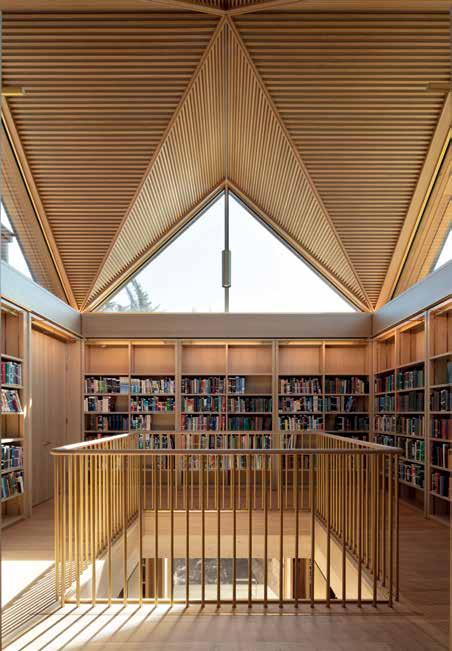
3St John Street London
This Victorian apartment was reimagined using solid oak joinery, including bookshelves, wall panelling and pocket doors. Oak chevron parquet flooring throughout and lime-washed birch plywood in the bedrooms add to the careful calibration and crafted joinery. Winner of the Interiors Award

20 | Timber 2022
Photo: Niall McLaughlin Architects / Nick Kane
Events Wood Awards
Photo: Hufton + Crow
Photo: Emil Eve Architects / Mariell Lind Hansen
5The Welcome Building RHS Bridgewater Manchester
This visitor centre sits on the site of the new Royal Horticultural Society garden of Worsley New Hall. The roof comprises a glulam timber diagrid supported by structural glulam ‘trees’. Timber decking extends from the building to the lake and the roof is clad in vertical larch.
Winner of the Structural Award
4The Boathouse

Devon
Yellow cedar tiles and cladding adorn the roof and exterior of this practical and beautiful family home. Inside, the upstairs floor is made from Douglas fir and the long, straight grain of the wood has been deliberately exposed on all levels to show off its beauty.

Winner of the Private Building Award
Belfast
The Belfast truss used in this pavilion’s design represents the area’s history of manufacturing ingenuity. Traditional craft skills were combined with innovative technologies to create bespoke building components that could be rapidly assembled on site.
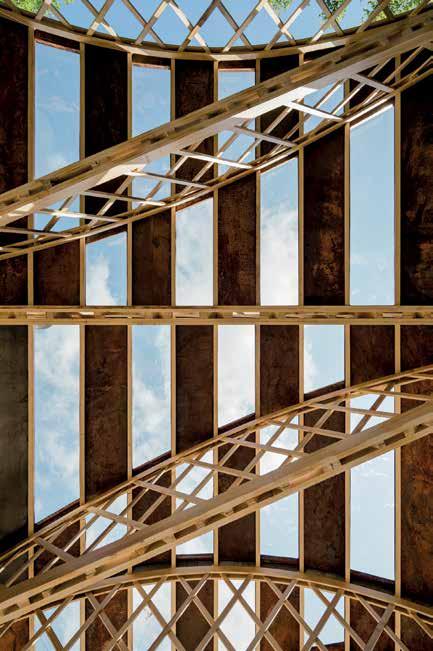

Winner of the Small Project Award
For more information on each of the Wood Awards winners, visit www.woodawards.com
Timber 2022 | 21 www.bmtrada.com
Events Wood Awards
Photo: OGU Architects / Joe Laverty
Photo: Jim Stephenson 5Built: East Pavilion
Photo: Peter Cook
BM TRADA: technical timber, our experts and services
Ben Sharples gives an overview of expertise provided by the BM TRADA technical timber team.
BM TRADA helps companies that are using timber in building projects – whether at the design stage, during construction, or when retaining timber during historical building restoration.
Its technical timber team offers specialist expert consultancy, advice and training in all aspects of the timber and construction industries, providing value-adding services to construction and engineering clients, product manufacturers and insurers, as well as to the education sector. There is a wealth of knowledge within a team of qualified individuals who, between them, have dozens of years of combined experience in working with timber.
Introducing some of BM TRADA’s timber consultancy experts...
Phil O’Leary
Technical Manager, leading BM TRADA’s technical timber team.
Together with a wealth of knowledge and experience in the visual strength grading of timber, Phil specialises in:

• condition surveys, performance assessments and determining the structural strength of timber in many situations
• timber quality, performance characteristics, deterioration and preservation
• serving as an expert witness in establishing the causes of timber failures

• developing and presenting highly regarded topical and bespoke training courses on a range of timber subjects.
Phil also sits on the BSI’s Wood Preservation Committee and the Wood Protection Association’s Technical Committee. See page 26 for Phil’s article on timber fundamentals and how training is used in companies to develop wood knowledge.
Hugh Mansfield-Williams
Wood Technology Technical Manager for the assessment and certification of construction products and systems.
Hugh has particular expertise in:
• products for loadbearing timber structures
• evaluating product type testing and calculation
• routes to approval for construction products so that they can be placed on the market.
Hugh participates in standards development and other technical committees in both the UK and Europe. See page 145 for Hugh’s article on UKCA marking.
22 | Timber 2022
Timber technology Advisory service
Dr Keerthi Ranasinghe
Principal Engineer for Structural Timber at BM TRADA and Warringtonfire.
Keerthi is a technical expert on structural timber, with a wide range of experience in structural investigations. He is a member of BSI committees on structural engineering, and the UK representative on European Working Groups responsible for Eurocode 5.

Keerthi is author of several specialist publications, including:
• Eurocode 5 Span Tables
• Timber connections: a guide for engineers
• TimberSizerPro and TimberConnectionsPro to Eurocode 5 software.
Additionally, he is:
• revising editor for the Manual for the Design of Timber Building Structures to Eurocode 5 (2nd ed).
• a project team member for the technical editing of the connections chapter of the second generation of Eurocode 5, due for release in 2023.
Keerthi delivers CPD training and workshops on structural timber engineering and on Eurocode 5 at both BM TRADA and the Institution of Structural Engineers UK. See page 34 for an extract from his latest publication, Timber Connections: a guide for engineers.
Robin Lancashire
Senior Timber Frame Consultant in BM TRADA’s technical timber team. Robin has a long and distinguished career in promoting best practice in timber frame construction.
Holding a BSc in Building and with more than 20 years’ experience in the industry, Robin was instrumental in developing BM TRADA’s frameCHECK service; his technical expertise has helped countless architects, main contractors, developers, housing associations, building control and warranty providers with impartial advice during design, construction and in use.
When he’s not providing professional advice, Robin:
• delivers practical training on timber frame technology
• represents BM TRADA on the Structural Timber Association’s Technical Committee
• is a regular speaker at industry conferences
• contributes to trade journals.
Robin has co-authored several important books, including Timber frame construction (5th ed), the acknowledged technical manual for the timber frame industry. See page 37 for Robin’s article on the importance of cavity barriers in timber frame construction.

www.bmtrada.com Timber technology Advisory service
>>

Nick Clifford
Senior Technical Timber Consultant in BM TRADA’s technical timber team.
Nick has more than 20 years’ experience in providing clear, concise, high-quality advice on timber-related issues to architects, engineers, contractors, developers, conservation bodies and public clients.
A qualified visual strength grader for timber with expertise in species identification, fungal decay, insect damage and wood preservation, Nick specialises in:
• carrying out independent condition surveys and inspections, diagnosing defects and writing expert witness reports
• assessing the condition of timber structures, flooring, cladding and decking.
Nick teaches visual strength grading and speaks regularly on timber-related subjects. See page 29 for Nick’s article on visual strength grading.
Lewis Taylor
Senior Timber Frame Consultant in BM TRADA’s technical timber team.
A highly respected expert in the science, technology and regulation of timber frame building, Lewis also consults on thermal performance, thermal bridging, airtightness, low-energy design and acoustic control. Most of his professional work is carried out under BM TRADA’s frameCHECK service and he:



• leads some of the timber industry’s latest research results on timber moisture content
• conducts independent quality inspections and condition surveys, evaluates design details, and investigates defects and their remedy
• speaks at trade events and delivers CPD.
Lewis is on the Technical Committees for both the Trussed Rafter Association and Robust Details and is co-author of several books, including the technical manual Timber frame construction (5th ed). See page 93 for Lewis’s article on his recent CLT and durability work.
frameCHECK
BM TRADA’s nationwide frameCHECK service offers architects, engineers, contractors and housing associations independent thirdparty advice on the design and build quality of timber-framed buildings.
BM TRADA services
The BM TRADA technical timber team can assist with any project involving any aspect of timber. Some of the types of consultancy we are often involved with include:
• Timber condition and structural surveys
• Design detail evaluation
• Timber frame inspection and consultancy
• Timber joinery inspections
• Timber cladding and decking inspections
• Timber and insect species identification
• Timber coatings inspection, testing and consultancy
• Timber expert witness services
• Timber training
About the author
Ben Sharples Commercial Lead Timber Services, BM TRADA
Ben works closely with the technical timber team to ensure that we deliver our full potential and provide the excellence within the construction industry that we strive to achieve.
Further information
For technical advice or consultancy services, contact the BM TRADA technical timber team on +44 (0) 1494 569601 or visit www.bmtrada.com/advisory-services
Timber 2022 | 25 www.bmtrada.com Timber technology Advisory service
Timber training: who benefits?
Timber training can help individual practitioners or a whole team of employees from the start of a building process right through to completion. BM TRADA develops and delivers courses for clients across and along the whole supply chain. These courses become a necessity for some suppliers; for example, the Visual Strength Grading course is designed to train delegates to strength grade timber, and forms an important part of the process for companies to place structural timber on the market.
Timber properties and uses
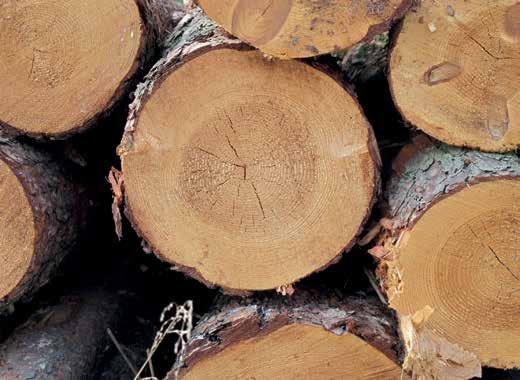
In recent years we have been more frequently asked by a broad range of users or suppliers of timber and timber products to deliver courses on timber as a material. These clients range from retailers and timber suppliers to engineers and architects, manufacturers and installers.
Often the first thing we are asked to provide is a course on a list of products and/or an end use. This can be challenging and sometimes limiting. To help with this we set up a course on Timber Properties and Uses, which provides delegates with a broad knowledge of how timber behaves and performs in any application and can be applied to most timber species and timber-based products.
Applying the principles
The following example illustrates and reinforces the importance of concepts that we are trying to convey.
A builder goes to his local timber merchant with their client, who is decidedly fussy about the quality of the timber they want to source to make bespoke wide planked flooring. A young lad named Steve shows the pair the best quality timber they have in stock and discovers during the conversation that the floorboards are going to be laid over underfloor heating.
Now Steve has been on one of our training courses and remembers an exercise with various scenarios that we use to show how to work out the expected shrinkage (and expansion) of timber. The aim of the exercise is to show how shockingly large the amount of shrinkage can be in a floor and how to reduce the risk of having large gaps developing between boards. We look at how to determine the moisture content of timber at the start of a given set of conditions (temperature and relative humidity), and work out the subsequent shrinkage after the underfloor heating has been turned on. We then show the difference between large, medium and small movement timbers, and demonstrate how to design and lay the floor to reduce and accommodate the shrinkage.
Steve remembered and knew that wide gaps between adjacent boards is a common complaint from end users. He couldn’t (and wasn’t expected to) remember any of the figures or numbers from the training exercise. However, he recalled that the moisture content at time of laying was important and that it was prudent to have narrower boards so that there were more gaps to accommodate the shrinkage. That is to say the more gaps you have, the narrower the average gap is between adjacent boards and, therefore, there is significantly less risk of unsightly or unacceptable large gaps appearing.
He managed to convince the builder and their client to select considerably narrower boards to make the bespoke flooring.
So, who gained from this advice? All three parties did. The builder’s client had a floor that behaved and functioned as they wanted and expected; the builder wasn’t called back to undertake costly repairs or be involved in a dispute; the timber merchant gained a reputation for being knowledgeable and wasn’t dragged into a potential dispute regarding the quality of the timber.
The combination of course content and an attentive attendee paid off.
26 | Timber 2022
Phil O’Leary explains how BM TRADA’s courses can help companies apply best practice principles.
Timber technology Wood knowledge
Scots pine at Keldy forest
Learning outcomes
Understanding how and when timber shrinks and swells, the difference in the three different planes in timber, the difference between species, fibre saturation point – knowledge of all these factors, and more, can be applied to timbers in most uses, if not all.
What is fibre saturation point and what are the three planes of timber? What are two of the properties that make Western red cedar a better choice for external cladding than oak in regards to their response to changes in moisture content? Well, I’m not going to tell you today, but you can probably find three out of the four answers fairly easily by searching online.
However, do you know what else you need to know? It’s difficult to type in search terms when you don’t know what you should be researching because you are not aware what questions you should be asking and you don't know what you don't know.
Fundamentals of timber
Following on from our Timber Properties and Uses course (which takes approximately a day to deliver), we have developed an eight-part series (45 minutes each), called Fundamentals of Timber. Part of the challenge is that there is not one logical order to follow, as so many of the principles of and topics relevant to timber are interrelated. But we have devised an order that we think best addresses the key issues.
Delegates who have attended Module 1: ‘What you need to consider when using and specifying timber’ will have a good understanding of what topics to research. While this first module doesn’t go into any details or explain any of the principles, the subsequent seven modules do. This is a huge subject area and although we can’t cover everything in this course, the fundamentals are fully explained.
Other courses
BM TRADA offers specific courses on topics such as timber frame, scaffold board grading or Eurocode 5, but the principles in Fundamentals of Timber still apply and give you a good grounding and better understanding of working with timber. n
About the author
Phil O’Leary Technical Manager, Timber Consultancy BM TRADA

Further information
For more information on BM TRADA timber training courses, visit www.bmtrada.com/training

Timber 2022 | 27 www.bmtrada.com
Timber technology Wood knowledge
Cupping can occur if timber is not specified and designed correctly

70 Cowcross St London EC1M 6EJ 0203 780 7355 ianchalkarchitects.com
How to become a competent visual grader
There are many benefits to employers who have a qualified grader on staff. Nick Clifford outlines what visual strength grading is and gives an overview of the specialist training available from BM TRADA.
The days when there were plentiful resources of virgin growth logs from which large, long, near-perfect structural timbers could be cut are long gone. Modern timber markets must use smaller and younger trees grown and harvested sustainably. Yields would be too low if perfect timber was always required for structural applications, so wood with naturally occurring strength-reducing features is used.
What is strength grading?
Strength grading is the evaluation of these features, either by machine or visually. BM TRADA’s Visual Strength Grading (VSG) course teaches delegates how to:
• recognise and measure strength-reducing defects
• apply the appropriate strength-grading rules
• categorise each piece based on its quality.
You might question why trained visual strength graders are needed today when machines can efficiently grade high volumes of timber for structural uses, but there are distinct advantages to both methods. Visual graders can easily switch back and forth between grades, lengths and cross-section sizes, which is an advantage where smaller volumes of timber are needed in a range of sizes and grades. Visual graders are also mobile and have the potential to travel for grading at multiple sites, whereas machine grading needs a significant initial cost outlay and the machines are usually large, immobile and better suited for high volumes of a single grade or cross-section size in a single location.
Strength-reducing features
A basic principle of visual strength grading is to evaluate the effect of wood’s naturally occurring strength-reducing features on the cross-section (width x thickness) at the worst-affected point along the length of an individual piece. Some grading rules
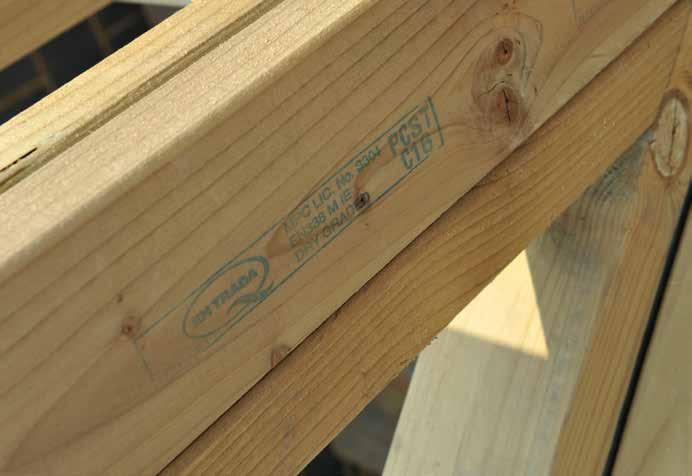
change based on the grade or the size of the cross-section. Other rules stay the same for all grades. Knot rules are based on their size as well as their location within the piece. A grader must be able to select the right knot or cluster to assess when there are several to choose from and apply the rules accordingly.
Grain direction is very important as it can significantly reduce strength and must be measured and deemed within (or not) the allowable slope of grain, remembering that the maximum slope limit changes for different grades. Wane, which occurs as a consequence of processing, is also frequently present because square or rectangular lengths are cut from round logs. It reduces the cross-section but it is acceptable, within limits.
Biological attack
Biological attackers reduce the strength of a piece by an indeterminate amount. Fungal decay and most wood-boring insect damage is therefore unacceptable in structural timbers and is not allowed. However, mould and sap-stain fungi are allowed, since they only affect the aesthetics and not the strength of a piece. >>
Timber 2022 | 29 www.bmtrada.com Timber technology Wood knowledge
A graded section of timber should display the relevant strength class stamp
Shrinkage
Shrinkage caused by drying (either naturally over time or by kilning) sets up stresses that can cause fissures in wood, particularly in larger sizes, and also distortion such as bow, twist and spring. The depth of splits/fissures/checks/shakes, as well as the length (but not their width), influences loadbearing capacity so there are rules for allowable fissures. Checks or shakes (fissures that do not entirely pass through the whole cross-section) have limits on their length but they are unlimited if their depth is less than half the thickness of a piece. Fissures passing through the full thickness are correctly called splits, and these have much tighter limits as their influence on strength is much greater. Permissible limits for fissures vary for different grades and cross-section sizes.
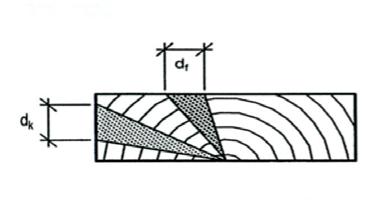

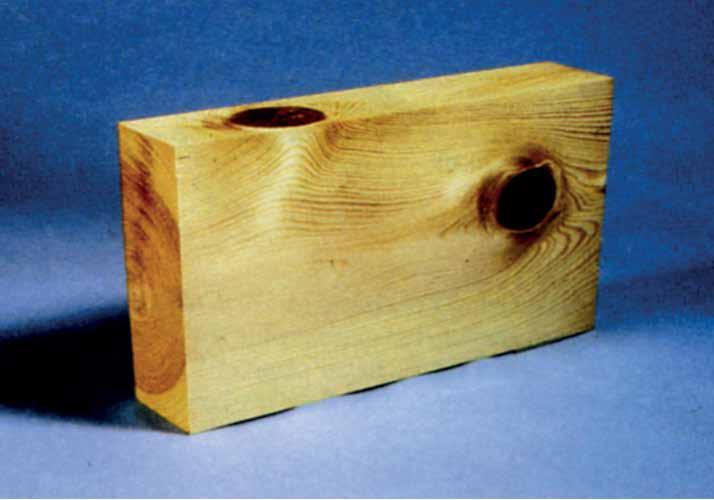
Qualification and assessment
Delegates who pass a BM TRADA VSG course and exam are deemed competent strength-graders. They must join a third-party certification scheme to receive their personal grader number and stamp before they can structurally grade timber for commercial use. Certification schemes include regular audits to check grading records are maintained and up to date, and also to regularly assess individual grader performance as part of their ongoing monitoring.
Regular assessments of graders are important not just because good-quality graders often produce higher yields than poor graders, but also because grading skills can quickly become rusty without sufficient practice: incorrectly graded structural timbers potentially carry huge liabilities. BM TRADA consultants have investigated failed timbers that have caused injuries and unfortunately the occasional fatality. We have also been asked to comment when disputes arise over timber quality. One of the first things we check, or are asked, is whether or not the piece met the grade that was stamped on it.
Visual strength grading courses
The following aspects of visual strength grading are covered by BM TRADA’s specialist courses.

Terminology
Basic terms such as GS or SS, C16 and C24, D24, D30, THA, TH2 that are common for structural timber in the UK will be familiar to those who have attended a VSG grader course. A competent grader must understand the difference between strength grade and strength class. Different timber species have a wide range of properties, including their strength, so categorising the timber by quality (grading) isn’t the full picture when it comes to assigning a strength class. It’s important to know the species and source of the wood, for example whether it was imported, or grown in the UK.

30 | Timber 2022
Knot distribution Knot position
Edge and face knots
Timber technology Wood knowledge
A piece of timber being visually strength graded
Species recognition
The species recognition aspect of the course helps delegates to begin to separate one timber from another based on macro-features such as knot size, colour and distribution, as well as grain pattern, heartwood/sapwood boundary and rate of growth. This helps to ensure that the correct strength class is assigned and stamped on the wood after grading.
Examination and assessment
Understanding the principles of strength grading is tested through an exam. If you can identify the defects in a piece and measure them correctly, you have a great chance of passing. The courses are not memory tests and people are not expected to memorise the numerous grading rules and variations between grades – in the real world you can check the rules as you grade using the appropriate standard, so you can refer to the rules that are included in the course booklet at any time throughout the course and exam.
BM TRADA softwood VSG courses run several times each year and the hardwood VSG courses run once or twice annually. Attending a BM TRADA VSG course guarantees an improved understanding of timber. Passing the course and
the exam authorises delegates to carry out strength grading for their company, while all delegates will be better placed to talk to customers and clients with a greater knowledge of not just structural timber, but of wood generally. n

About the author
Nick Clifford Senior Timber Technical Consultant BM TRADA

Further information
To find out more about BM TRADA’s Visual Strength Grading courses, visit www.bmtrada.com/training/timber-training
Further reading
• WIS 2/3-10
Timber properties and uses, BM TRADA, 2021
• WIS 4-7 Timber strength grading and strength classes, BM TRADA, 2021
Timber 2022 | 31 www.bmtrada.com
Timber technology Wood knowledge
Different types of wood, such as the hardwood pictured, have different properties so it is important to know the species and the source of the wood
Specifying and sourcing timber in construction

The following is an extract from Wood Information Sheet 2/3-10 Timbers – their properties and uses, which had a major update in 2021.
Timber is a versatile material, its properties suited to a very wide range of uses both structural and non-structural. Wood Information Sheet (WIS) 2/3-10 offers an overview of the considerations a specifier should take into account when deciding whether the properties of a timber are suitable for a particular end use.
Specifying timber
While trees capture carbon dioxide from the atmosphere, store carbon as a ‘building block’ of timber and release oxygen back into the atmosphere, timber is both renewable
and recyclable. Timber has therefore gained a very welldeserved reputation for being an environmentally friendly and versatile material.
Timber is used widely in a range of applications and evidence of its versatility is all around us. It can be used for numerous external and internal purposes, ranging from structural posts, beams, joists and rafters, to nonstructural external timber cladding, fencing, windows and doors, and interior flooring. It is also used for furniture and specialist uses such as musical instruments and tool handles.
32 | Timber 2022
Timber technology Wood knowledge
Hodges Place (Knox Bhavan Architects). Photo: Dennis Gilbert
When choosing from the range of timber species available, a specifer should establish which properties are required of the timber to achieve the desired performance for a particular end use.
Sustainable sourcing
Prior to 31 December 2020 and the UK’s final departure from the EU Customs Union and the European single market, timber traded in the UK had to comply with the EU Timber Regulation (EUTR).1 Since 1 January 2021, the UK construction industry must follow the UK Government’s own Timber and Timber Products Placing on the Market Regulations (UKTR).2 While the UKTR has many of the same requirements as the EUTR, it will lead to some changes for timber suppliers. The EUTR requires that timber placed on the European market is supplied in accordance with the relevant national laws of the country of origin. It also requires evidence of supply chain traceability. Under UKTR, operators must collect and demonstrate much more detailed due diligence procedures. They are obliged to ensure there is ‘negligible risk’ of illegally harvested timber entering their supply chains, for example; your timber supplier will have dealt with this requirement.3
Chain of custody certification schemes to support the sustainable sourcing process are available, such as those operated by the Forest Stewardship Council® (FSC®) and the Programme for the Endorsement of Forest Certification (PEFC™). These third-party certification schemes verify that timber suppliers are part of an unbroken ‘chain of custody’ system, which provides proof that the timber used to process or manufacture an end product was sourced from a well-managed forest. Certification labels on the end product demonstrate compliance with schemes such as those maintained by FSC® and PEFC™.4
Some species, notably tropical hardwoods prized for their decorative features, are no longer readily available. For example, rosewood (Dalbergia nigra) is listed under Appendix I to the Convention on International Trade in Endangered Species (CITES), meaning trade is severely restricted, whereas other Dalbergia spp. may be available. For an indication of whether a species is under threat or endangered, refer to:
• Checklist of CITES Species5
• The IUCN Red List of Threatened Species.6
British-grown timber is available for a number of end uses, particularly for sawn timber, particleboard and fibreboard.7 n
Further information
The full version of this Wood Information Sheet is available to buy from bookshop.bmtrada.com
References
1. Regulation (EU) No 995/2010 of the European Parliament and of the Council of 20 October 2010 laying down the obligations of operators who place timber and timber products on the market

2. www.gov.uk/guidance/regulations-timber-and-flegt-licences
3. More information can be found at gov.uk
4. For more information, see WIS 2/3-58 Sustainable timber sourcing, BM TRADA, 2019
5. http://checklist.cites.org
6. www.iucnredlist.org
7. For more information, see WIS 2/3-67 Specifying Britishgrown timbers, BM TRADA, 2022. This WIS contains a detailed set of species data sheets for a number of Britain’s timbers including oak, ash and Douglas fir
8. For more information, see WIS 2/3-63 Modified wood products, BM TRADA, 2021
Timber 2022 | 33 www.bmtrada.com
FSC-A000503 / PEFC/16-44-002 Timber technology Wood knowledge
An introduction to timber connections
The following extract comes from BM TRADA’s newest publication series with guidance for engineers.
Timber has been used as a construction material for generations. From the early Japanese ‘Tateana Dwellings’ to the architecture of the Victorian era of England, the ingenious use of timber as a construction material is evident, through techniques developed independent of country or continental boundaries.
Local abundance of the material and the ease of conversion with the most basic of tools meant that solutions to some of the fundamental problems of construction seemed to have been found with relative ease in timber. The forming of a rudimentary curved notch on the underside of a round log to form a gravity fit in early cabin constructions, for example, is still used today, albeit with modern tools that allow this joint to be made more precise.
Studying the evolution of timber roofs from ancient times to the modern trussed rafter constructions, one can clearly see how our understanding of the modern ‘triangulated’ structures has been heavily influenced by the ingenuity of early timber constructions.
Understanding timber
Being a natural material with varying properties and limitations in available sizes, designing with timber warrants a specialist understanding of the product. Strength and stiffness properties of timber are dependent on the species of wood and the geographical region of growth, as well as on the humidity and the temperature of the environment to which the structure is exposed. Duration of loading also has an effect. All these should be considered when designing structures with timber.
Optimising the use of available sizes of the material makes designing connections an integral part of any timber engineering project, with anisotropy and the variability of the material adding greater complexity to the problem.
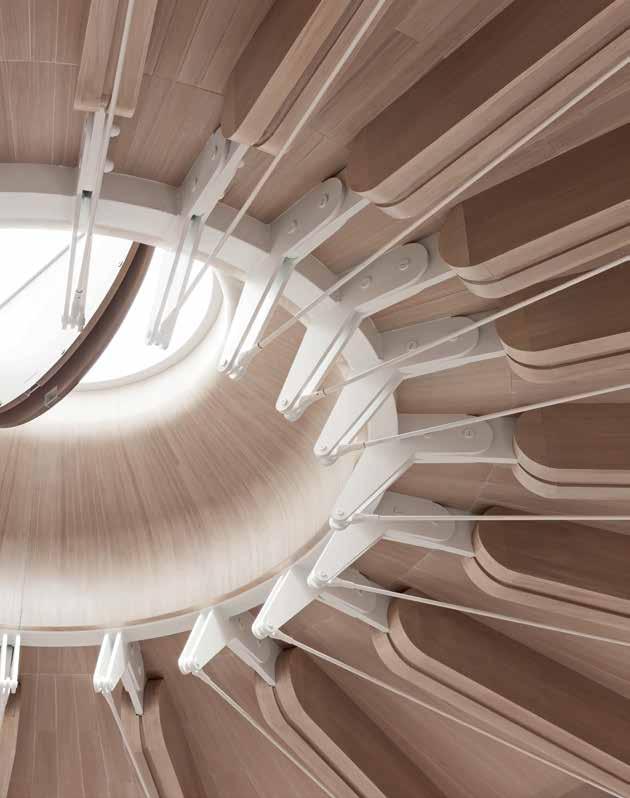
Resolving connections
Most complex timber engineering projects require the connections to be resolved first, or at least in parallel with the sizing of the members, as the member sizes are most likely to be governed by the requirements of the connections. Intensity of the loads to be transferred between timber members across a joint, and the geometry of the group of fasteners forming the connection, will determine the stress levels generated within the timber surrounding each fastener.
34 | Timber 2022
Royal Academy Music Recital Room. Photo: Adam Scott
Timber technology Engineering
When such stresses are managed through proper calculations and appropriate detailing, localised failures within members, which could ultimately lead to the failure of the connection and the structure as a whole, can be easily prevented.
At the most basic level, timber connections can be classified as:
• all-timber (carpentry) connections
• connections involving metal fasteners or connectors
• glued connections.
Combinations of these three types are also possible and are widely used.
Metal fasteners or connectors
Connections involving metal fasteners or connectors can be further divided into two main groups based on the mechanism of force transfer between the fastener and the timber members being connected. The first group involves dowel-type fasteners, such as nails, staples, bolts, dowels and screws, where the loads being transferred across the joint generate bending and tensile stresses in the fasteners, as well as embedment and shear stresses within the timber along the shank of the fastener. These are the most frequently used fasteners in contemporary connections.
The second group also involving metal fasteners are the surface or partial penetration fastener types such as punched metal plate fasteners, nailing plates, toothed metal plate fasteners, split and shear ring fasteners, where the load transfer is related to the surface area of the timber members and associated metalwork.
Dowel-type connections
Dowel-type connections involve the most common metallic fastener types in use, which includes nails, staples, bolts, dowels and screws. In discussing these connections, it is vital to understand the characteristics of these fasteners, their specifications and the load-carrying mechanisms involved.
Modern design methods for connections, such as the European Yield Model based calculations presented in Eurocode 5, require the designers to establish the capacity of an individual fastener in a given joint, before looking at combining them in a group to form the joint.
The sequence of steps shown in Figure 1 should be followed to calculate the capacity of dowel-type connections, for which the dimensions of the materials to be connected are assumed. Some of these dimensions may need modification later to suit the calculations, or a different connection specified if the member sizes should remain unaltered. n
Further information
Timber connections: a guide for engineers. Part 1 – Theory is available to buy from bookshop.trada.co.uk
• Part 1 – Theory aims to explain the theoretical principles of timber connections, primarily the dowel-type connections.
• Part 2 will supplement Part 1, containing advanced topics such as fire resistance, brittle failure and durability.
• Part 3 will contain worked examples highlighting some of the principles discussed in the first two parts.
• Part 4 will look at recent connection exemplars, with the focus on engineering aspects.
• Part 5 will complete the series by looking at proprietary connectors commonly available on the market.
Further reading
• Ross, P., Hislop, P., Mansfield-Williams, H., Young, A., Concise illustrated guide to timber connections, ISBN 978-1-90510-851, BM TRADA, 2012
• WIS 2/3-36 Design of structural timber connections, BM TRADA, 2017

Timber 2022 | 35 www.bmtrada.com
Timber technology Engineering
Figure 1: Connections design flow diagram
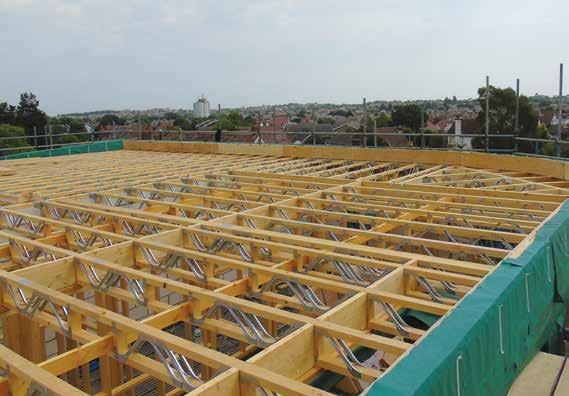
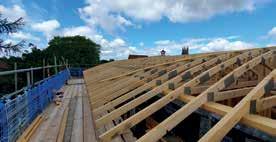

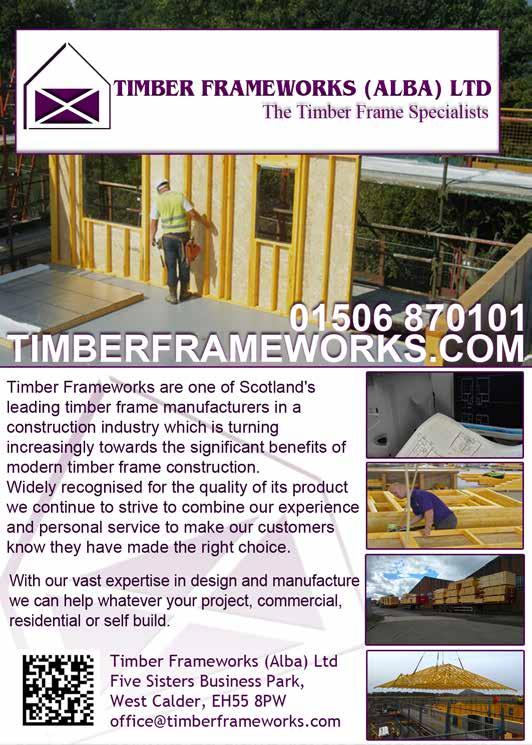
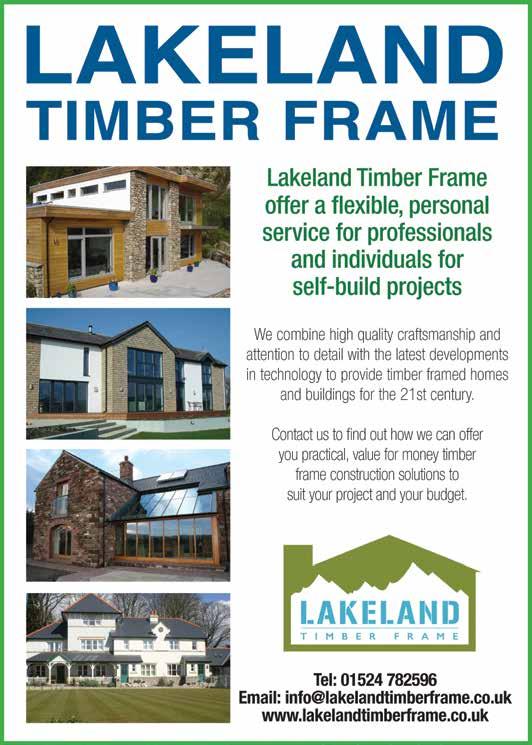
36 | Timber 2022
ENGINEERING EXPERTS Harmony Timber Frame is a leading manufacturer of off-site construction and engineered Timber Frame Kits.
Harmony Timber Frame UK, Unit 1b/2a, Canterbury Ind Park, Island Road, Hersden, Canterbury, Kent, CT3 4HQ
TIMBER
• Fabric First • Reduced Site Construction Time • Accurate • Manufactured Offsite • Environmentally Friendly For more information contact us today on: 01227 209 087 www.harmonytimber.co.uk
GLULAM ROOF & FLOOR CASSETTES
The importance of cavity barriers
Robin Lancashire explains the key role of cavity barriers in timber frame construction and how they can limit the spread of fire.
While the importance of cavity barriers is increasingly recognised, the construction industry still needs to concentrate on ensuring that they are installed correctly, so that in the event of a fire they can perform as intended.
Cavity barrier performance
Recent fire events in various building types have turned attention to the performance of cavity barriers and how they are installed in buildings. The cavity barrier plays a critical role in preventing fire and smoke from travelling unseen through what can be an extensive network of connected spaces in a building. Acting much like a chimney, a cavity can allow fire and smoke to travel fast and unseen, making it difficult to fight fires, causing extensive damage and risking lives. National building regulations tell us where cavity barriers should be installed, what they should be constructed of and how they should be fitted. There are some regulatory differences between the nations that make up the UK, both in terminology and specific requirements, but the principles are all the same – limit the spread of fire in a cavity.
Balancing ventilation and fire safety
When building with timber frame, it is important to accommodate the requirement for cavity barriers along with the need to provide an environment where timber elements can remain dry and below the decay threshold (a moisture content of 20% or less). Timber frame construction needs a drained and vented external wall cavity behind all types of cladding. This provides a space where moisture vapour that travels though from the warm side of the wall to the cold side can ventilate away, without forming as damaging interstitial condensation.
The external wall cavity is also a line of defence from the outside: it prevents wind-driven rain or leaks through the cladding from directly wetting the timber frame structure by letting moisture drain away freely. The challenge therefore is to provide cavity barriers where required, while allowing the timber frame structure to drain and vent.
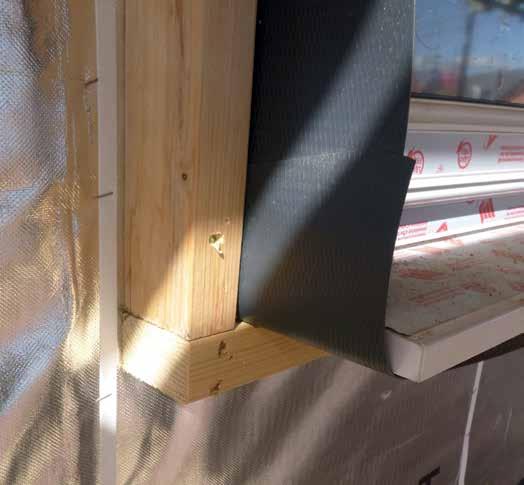
Timber Frame Construction (5th edition) is the go-to publication for those designing and building with this increasingly popular material. The cladding chapter of the book provides detailed sections of various cladding types, along with information on how external wall cavities are closed at required locations, while still providing the necessary drainage and ventilation.
Fire resistance
It may be surprising to learn that timber is listed in the building regulations as a material that can be used to provide the necessary fire resistance of a cavity barrier. However, it is the material of choice for cavity barriers around window and door openings, and with claddings that are supported by the timber frame structure. In the event of a fire, the timber slowly chars at a predictable rate so it can provide the required period of fire resistance. It can be installed in continuous lengths, is reasonably robust during construction and fulfils other roles while acting as a cavity barrier. >>
Timber 2022 | 37 www.bmtrada.com
Timber cavity barrier around a window
Timber technology Timber frame
Whether it’s a bespoke one-off design or multiples, Timber Frame Management (TFM) has sustainability and climate change at the forefront when designing and manufacturing your project.
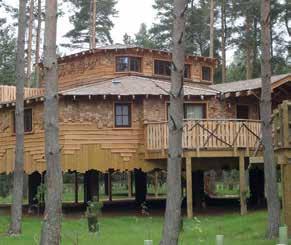
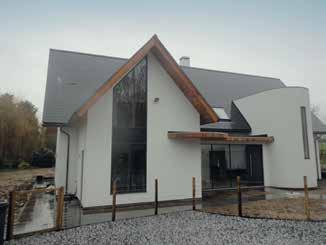
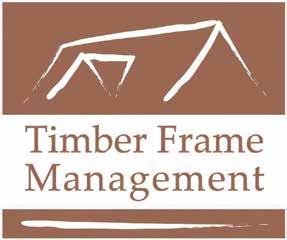
Timber is a natural carbon store and a renewable resource which makes it an ideal and environmentally conscious building material. The offsite manufacturing process produces less waste than traditional construction meaning less material ends up in landfill. Even after transportation, timber often has a negative carbon footprint.


TFM have recently invested in a new wood fired heater so that even the small off cuts from the optimised CNC cutting process in the factory are used to warm the building.
Join forces with us on your next project and become a part of the sustainable building revolution.
• Speed of build
• Low carbon footprint

• Reduced build times
• Positive environmental impact
• Significantly reduced carbon compared with traditional build methods


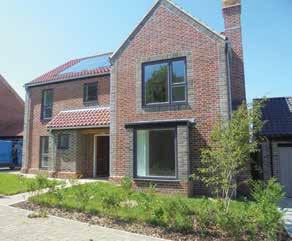
Join forces with us on your next project and become a part of the sustainable building revolution.

The typically red polythene covered strips of mineral wool that adorn many timber frame buildings under construction are a common sight: these perform well as a cavity barrier if they are fitted in a continuous line and are sized to be installed under compression to fully close the cavity. Remember that in the event of a fire, the polythene sleeve quickly burns, providing no support to keep it in place. Precise sizing to ensure a compression fit of the mineral wool core is therefore critical to stop these strips falling down the cavity and failing. They can also be easily damaged or dislodged during the construction phase.
Although more expensive than timber or mineral wool, intumescent cavity barriers are gaining popularity. In the early stages of a fire and exposure to heat, they are designed to swell up, closing the cavity against further fire and smoke. In their inactive state they can contribute to good drainage and ventilation through a clear cavity. This can simplify detailing and reduce the need for what can be unsightly drainage slots.

Party walls
Cavities are not only found in external walls. The other key area where they occur is in party walls. Timber frame buildings rely on cavities to reduce acoustic transfer between areas of the same building. These cavities need closing at compartment lines to prevent fire and smoke having a direct route between them. Hard materials cannot be used as cavity barriers here as these would provide a route for acoustic transfer, so wire reinforced mineral wool or polythene sleeved mineral wool cavity barriers tend to be used in these locations. It is critical that they are fixed and sized to close the cavity and remain in place at compartment lines.
While most cavity barriers are installed at edges of cavities and along compartment lines, there are other locations where they are required by national building regulations. The relevant statutory documents should be consulted. n

BM TRADA frameCHECK
BM TRADA’s frameCHECK team specialises in providing consultancy on the design and construction of timber frame buildings. Its work assists all those involved in timber frame construction by helping to ensure that buildings can be detailed and constructed to best practice. Typical consultancy work involves evaluating drawing details and visiting sites under construction to provide specific advice. Whether you are an architect, contractor, surveyor or building owner, consider using the frameCHECK service, which has been helping raise the standards of timber frame construction for more than 25 years.
Timber 2022 | 39 www.bmtrada.com About the author Robin Lancashire Senior Timber Frame Consultant BM TRADA Further information For technical advice or consultancy services, contact the BM TRADA technical timber team on +44 (0) 1494 569601 or visit www.bmtrada.com/advisory-services Further reading • Timber frame construction, 5th edition, ISBN 978-1-900510820, BM TRADA, 2011 • WIS 0-3 Introduction to timber frame construction, BM TRADA, 2020
Sheathing with breather membrane over Flexible cavity barrier of wire reinforced mineral wool or approved cavity barrier Cavity barrier: Typically proprietary third party approved sleeved mineral wool cavity barriers Party wall Party wall junction with external wall Timber technology Timber frame
Junction of element firestopped with plasterboard linings
Sill detail
LET’S BUILD A DURABLE AND SUSTAINABLE FUTURE FOR GENERATIONS TO COME BY MAKING THE MOST OF EVERY TREE.
A WIDE RANGE OF TIMBER PRODUCTS: Glulam, CLT, C24, cladding, decking, fencing and landscaping timbers, UC4 15/20-year warranted timbers, wood composite cladding, decking and fencing and wood pellets.
LOCALLY SOURCED AND CERTIFIED TIMBER SPECIES: Pine, Douglas Fir, Spruce.

Elisabeth PIVETEAU : +44 (0) 7821 807 788 | elisabeth.piveteau@piveteau.com Adrian HOWDEN : +44 (0) 7743 004 578 | adrian.howden@piveteau.com PIVETEAUBOIS.COM -
Storage solutions: timber and carbon
Toby Maclean discusses the key factors relating to the timber carbon store, both in new timber growth and in harvested wood products.
Alarge part of any timber product is carbon. By mass around 50% of the dry weight of most timber is carbon, so for every tonne of timber there is 0.5 tonnes of carbon locked inside, equivalent to over 1.8 tonnes of carbon dioxide (CO2) removed from the atmosphere. Of course, the converse is also true: for every tonne of timber that naturally decays or burns, 1.8 tonnes of CO2 is released.
It is therefore important to lock CO2 as carbon in new wood growth and then to keep it locked in the derived timber product for as long as possible. Carbon stores can be created in:
• Forests – through new wood growth with afforestation policies, by forestry management practices and in new forests.
• The built environment – using timber as harvested wood products (HWP). Buildings can be a great long-term carbon store.

The carbon store in forests
Woody biomass (above ground), trunk and branches
15 to 20% 1
5%
Carbon stored is simply a function of tree growth. After a period of establishment, most trees exhibit a period over decades of relatively fast growth followed by declining growth rates as they mature Woody biomass (below ground), roots
Litter (on the forest floor) 5%
Soil (top 1m) 70% to 75%
Carbon store added to on an annual basis and also releases some carbon as parts of the store decay
Carbon capture rate can be similar to that in the woody biomass and can also be at risk of release if the soil is disturbed
UK forests that cover only 13%2 of the UK land area compared to an EU average of 38%3 nevertheless absorbed around 18 Mt carbon dioxide equivalent (CO2e) per year4 in 2017, which is around 2.6% of the UK’s carbon footprint (measured on a consumption basis) of 700 Mt CO2 e per year as of 2018.5 By contrast, the forests in the EU28 (the 28 member countries of the EU before the UK left) as a whole in the years 2010 to 2020 absorbed an average of 440 Mt CO2 e each year, which is around 10% of the EU carbon footprint.6
Other important forest functions aside, such as conserving the soil carbon and biodiversity, increasing forest cover in the UK would provide a useful increase in atmospheric CO2 removals. Once established, in commercial forestry especially, it is important to harvest (and replant) the mature trees regularly to maintain carbon sequestration rates >>
Timber 2022 | 41 www.bmtrada.com
structures Sustainability
of forest % of UK total forest carbon store (approx.)
store
Timber
Part
Carbon
Table 1: UK total carbon forest store
Timber in a house in Lavenham, Suffolk, dating from as early as the 14th Century.
Photo: Toby Maclean


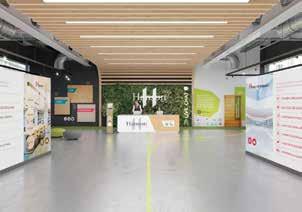

42 | Timber 2022
Note: NAI = net annual increment in m³ and so directly comparable to carbon increases in the above ground biomass. The NAI of an unharvested commercial forest falls to almost zero after 150 years or so but the higher the proportion of harvesting then the higher the NAI remains.
The carbon store in harvested wood products
The carbon store in HWPs is best conserved and grown by increasing:
• the amount of sustainably grown timber8 entering the HWP store
• longevity of HWPs
• reusing the HWP at the end of life in as close to its original form as possible (with minimum processing and degrading of the timber).
The maximum size of the carbon store in HWPs that can be created is linearly proportional to the amount of timber that enters the store and the lifetime of the products before the carbon within them is released. If the amount of timber entering the store is doubled, the carbon store doubles. If the average longevity of those products is doubled, the carbon store doubles in size too.
The annual volume of timber felling in the EU28 in 2015 was around 430 Mm3,9 which represents approximately 315Mt CO2 absorbed from the atmosphere during growth, based on a common timber density and moisture content. For every ten years the lifetime of those products can be extended, this would represent an additional 3,150 Mt CO2 to the HWP carbon store – which is similar to the annual production CO2 emissions of the same EU28 area.
Carbon release is not inevitable at the end of a product’s life, and everything should be done to ensure that as little carbon as possible is emitted as the product moves on to its next life.
The various uses of timber can be thought of as a cascade down the possible applications, with long-life, unprocessed uses at the top and progressively shorter life or more highly processed uses further down. This cascade concept implies that as much timber as possible is used in its first life in solid timber products and then re-used in the same form for as long and as many times as possible. When it can no longer be used in the same form, then it can be processed into a product one level down the cascade, such as a particleboard, and so on until eventually it reaches the base of the cascade as fuel.
Summary
The carbon store that can be grown in the built environment. Source: Based on work by Allt Environmental Ltd
Commercial forestry will not always provide the optimum carbon sequestration policy for an area of land, although research suggests that sustainable commercial forestry, harvested regularly, can bring substantially more carbon benefit than the equivalent area planted as conservation forests.10 There are many competing and valid demands of forestry including biodiversity, socio-economic and amenity factors. However, the combination of commercial forestry and the built environment is unique in providing the opportunity to both sequester carbon from the atmosphere while also constructing buildings. >>
Timber 2022 | 43 www.bmtrada.com
Timber structures Sustainability 050 100 150 200 250 300 NAI of unharvested forest NAI of forest with 3/8 of NAI harvested each year NAI of forest with 3/4 of NAI harvested each year NA I Years
This is 3/8
initial NAI This is 3/4
initial NAI
Source:
Effect of harvesting on the NAI of forests
of
of
How the NAI of forests with different levels of removals declines with maturity.
After Morison et al [7] and based on work by Allt Environmental Ltd
A and B The maximum carbon store in the built environment is equal to the average lifespan of timber products multiplied by the carbon in the timber introduced to the store each
C The carbon store levels off at the maximum life of any product in the store Maximum store life = 120 years, average store life = 46 years Maximum store life = 120 years, average store life = 23 years 120 years Carbon store Time C B A
year
SUPPORTING YOUR JOURNEY TO NET ZERO
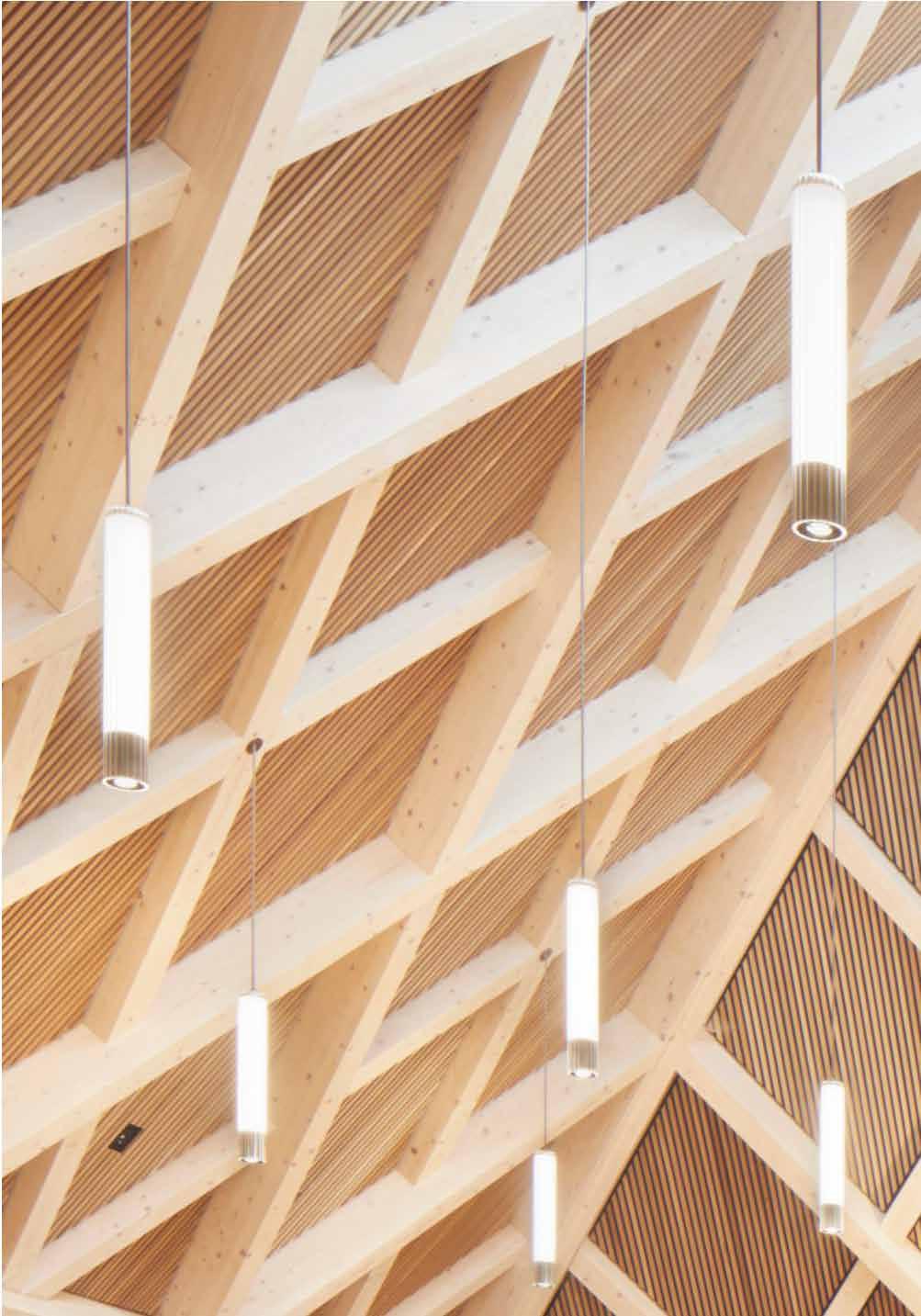
e: ttf@ttf.co.uk | p: 020 3205 0067 | w: ttf.co.uk THE BUILDING CENTRE, 26 STORE STREET, LONDON, WC1E 7BT
About the author
Toby Maclean
 Environmental Structural Engineers
Environmental Structural Engineers
Further information
To find out more about timber and sustainability, please visit www.trada.co.uk/sustainability
Further reading
WIS 2/3-72 Carbon and timber in construction for building designers, BM TRADA, 2022
References
1 All figures for carbon stores in forests in the UK from: www.forestresearch.gov.uk/tools-and-resources/statistics/ forestry-statistics/forestry-statistics-2016-introduction/ uk-forests-and-climate-change/forest-carbon-stock/
[accessed 13 September 2021]
Note: the report State of Europe’s Forests 2020 gives the carbon stores for Europe as: above-ground biomass 29%, below-ground biomass 7%, litter 8% and soil 54% – see Fig 1.4.1 https://foresteurope.org/wp-content/uploads/2016/08/ SoEF_2020.pdf [accessed 13 September 2021]
Timber structures
Sustainability
2 Reid et al., State of the UK's Woods and Trees 2021, Woodland Trust, 2021
3 FOREST EUROPE, 2020: State of Europe’s Forests 2020
4 www.ons.gov.uk/economy/environmentalaccounts/bulletins/ woodlandnaturalcapitalaccountsuk/ecosystemservicesf orenglandscotlandwalesandnorthernireland2020#wood land-natural-capital-accounts-ecosystem-services-data [accessed 13 September 2021]
5 https://assets.publishing.service.gov.uk/government/ uploads/system/uploads/attachment_data/file/979588/ Defra_UK_carbon_footprint_accessible_rev2_final.pdf [accessed 13 September 2021]
6 FOREST EUROPE, State of Europe’s Forests 2020
7. Morison, J., Matthews, R., Miller, G., Perks, M., Randle, T., Vanguelova, E., White, M. and Yamulki, S., Understanding the carbon and greenhouse gas balance of forests in Britain, ISBN 978-0-85538-855-3, Forestry Commission Research Report, Forestry Commission, Edinburgh, i–vi + pp1–149, 2012
8. All timber, without exception, should be from FSC ® or PEFCTM certified sources
9. FOREST EUROPE, State of Europe’s Forests 2020
10. Commercial afforestation can deliver effective climate change mitigation under multiple decarbonisation pathways, see doi.org/10.1038/s41467-021-24084-x [accessed 20 September 2021]
11. Jungmeier, G., Werner, F., Jarnehammar, A. et al., ‘Allocation in LCA of wood-based products experiences of cost action E9 part i. methodology’, Int J LCA 7, 290–294 (2002): https://doi.org/10.1007/BF02978890
Timber 2022 | 45 www.bmtrada.com
Allt
Forestry Sawmill Round wood Wood industry P&P industry Part. board industry Tops and branches CHP Landfill Timber Wood fibre Wood fibre Wood chips bark, saw dust, side-cuts, Saw dust, shavings Bark, black liqueur sludge Landfill gas Heat and electricity Particle board Paper & packaging Wood waste Wood products Reuse & recycle wood In use In use In use Waste wood Waste part. board Waste paper & packaging Aim to stay in this rectangle for multiple lives for as long as possible Wood chips Solid wood Reuse & recycle part. board Reuse & recycle paper & packaging
FSC-A000503 / PEFC/16-44-002
The cascade concept. Source: After Jungmeier et al [11]

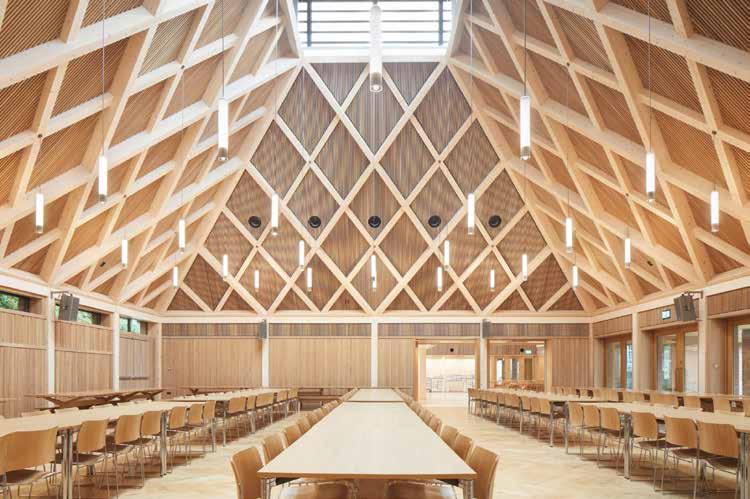





@CONSTRUCTIONAL TIMBER @CONSTRUCTIONALT CONSTRUCTIONAL TIMBER Constructional Timber (Manufacturers) Ltd Unit 16 Industry Road, Carlton, Barnsley, S71 3PQ 01226 727211 Sales@constructionaltimber.com Specialists in Engineered Timber Laminated Timber Structures Cross Laminated Timber Glulam Stock Beams Feature Trusses Hybrid Structures Hundegger K2 CNC Machining
www.constructionaltimber.com
Hundegger K2 Industry CNC
Are timber structures good for the planet?
Will Hawkins investigates how a sustainably built environment offers carbon benefits.
The prospect of long-lived timber products, such as building structures, creating an anthropogenic carbon sink and thereby acting in opposition to climate change is a tantalising and exciting one for structural engineers. As well as being described in scientific literature,1 this idea is gaining attention in mainstream media2 as the public appetite for positive climate solutions understandably grows.
The equivalent mass of carbon dioxide stored within timber is greater than that of the timber itself, at around 1.64 kgCO2/ kg. Timber has been considered a carbon-negative material on projects, with designers claiming that biomaterials, used in sufficient quantities, can ‘more than compensate’3 for emissions used in concrete foundations and steel connections, creating structures with negative embodied carbon. Is it true that increased material consumption can lower emissions? Is this a sustainable design approach?
Understanding carbon
In discussing embodied carbon, a distinction is made between fossil carbon, emitted through combustion of fossil fuels, and biogenic carbon, which is sequestered via photosynthesis, stored in biological matter such as timber, and typically re-released through combustion or decomposition at end of life as part of a cycle.
Fossil carbon
For most timber produced today, significant quantities of fossil carbon are released through growing, planting and protection of seedlings, construction and maintenance of access roads, thinning, harvesting, debarking, limbing, sawing and kiln-drying (if gas-fired), as well as the production of surface treatments, adhesives and any post-processing into engineered products. These emissions occur at the beginning of a building’s life cycle, creating an immediate and longlasting warming effect.
Transport distances to factories and then to site can also be large, as can the quantity of timber wasted through offcuts. Despite this, studies show that timber building structures have a lower embodied fossil carbon than concrete and
steel equivalents.4 This gap is likely to increase in future, since most timber production processes can be electrified relatively simply, leading to reduced emissions with grid decarbonisation, whereas the production of cement and steel typically features hard-to-avoid emissions from chemical reactions and the high temperatures that drive them.
Biogenic carbon
Biogenic carbon is removed from the atmosphere as trees grow and can be stored within timber structures. The longer this remains locked away, the greater the potential climate benefits. If a building gets demolished, the fate of its biogenic carbon depends on the waste disposal method and cannot be predicted with certainty.
In the UK, the majority of waste timber is currently burnt as biofuel to generate electricity,5 offsetting grid production. The remainder is largely downcycled into chipboard, animal bedding, MDF or compost, most of which are short-lived products likely to re-enter the waste stream or decompose quickly. Less than 1% of the UK’s waste timber goes to landfill. Based on these statistics, it is currently reasonable to assume that most of a timber structure’s biogenic carbon re-enters the atmosphere shortly after demolition. We might reasonably hope and expect that this may not be the case in future, perhaps due to a reduction in demolition rates, new expertise in component re-use or even new technologies for bioenergy with carbon capture and storage. However, today’s codes of practice for life cycle carbon assessment stipulate that end-oflife assumptions must be based on today’s norms.
Climate benefits
Even when temporary, the storage of biogenic carbon in longlived structures has climate benefits. Although harvesting a tree stops its growth, it enables the re-planting of new saplings which, once they reach their vigorous growth phase, sequester carbon more rapidly than mature trees. If this is combined with the steady accumulation of biogenic carbon in timber products, then the total quantity can, in theory, exceed that of a mature forest (Figure 1). This highlights the benefit of locking timber away in structures compared to alternative use as biofuel or in short-lived products. The longer the structure remains in use, the better. >>
Timber 2022 | 47 www.bmtrada.com Timber structures Sustainability
TRUSSES, GABLE PANELS
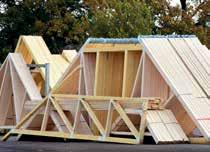
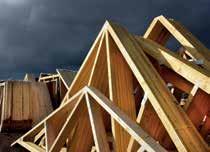
METAL WEB POSI-JOISTS
ROOF PANEL SYSTEMS
FEATURE TRUSSES
SIPS PANELS, SPANDREL PANELS
TIMBER FRAME, I-JOIST
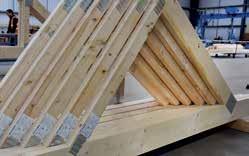


ROOFING & FLOORING METALWORK
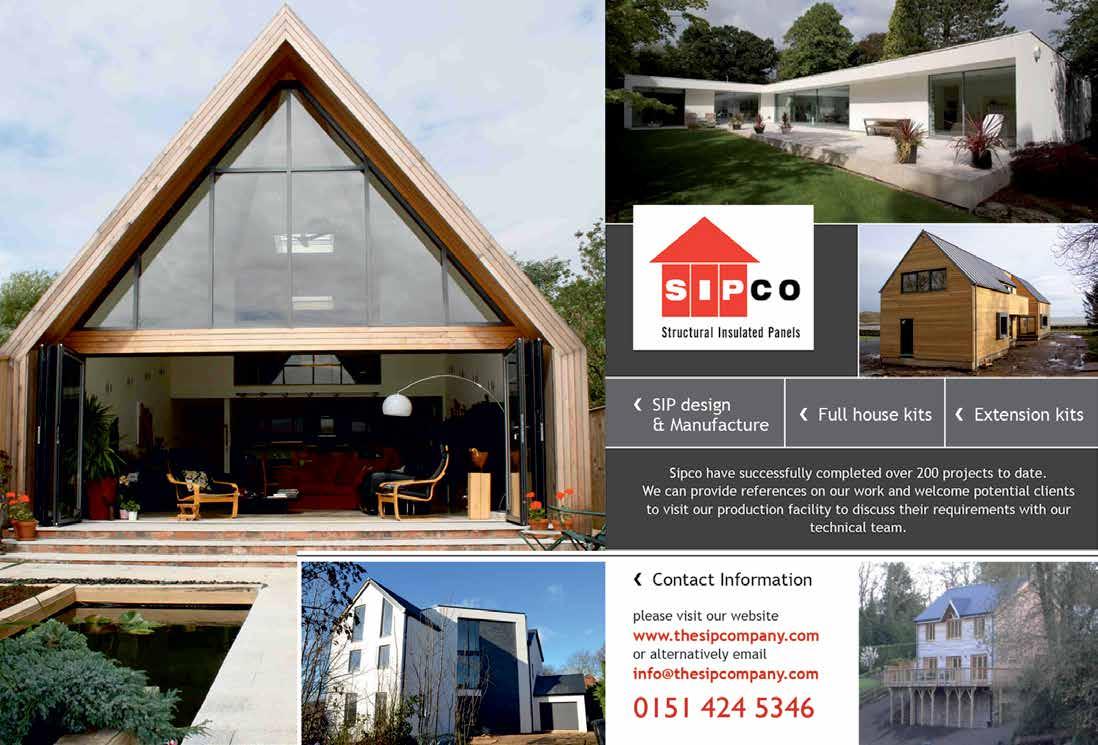
FLOOR CASSETTES
ATTIC TRUSS ROOM IN THE ROOF
CHIPBOARD DECKING


48 | Timber 2022
www.crendon.co.uk “...better by design” Crendon Timber Engineering Ltd Structural Timber Supplier of the Y PORCHES GLULAM DORMERS SIPS FASTRACK SUPPLY & FIT ROOF & FLOOR CASSETTES POSI-ATTIC
Despite the potential benefits of biogenic carbon storage, the most recent 2019 version of the European Standard EN 15804,7 which covers Environmental Product Declarations (EPDs), does not enable these to be fully captured.8 It takes a product system approach, where any biogenic carbon entering must also leave at end of life, specifically forbidding permanent biogenic carbon storage. However, there are several options available to designers wishing to communicate the benefits of biogenic carbon storage:
1. Report biogenic carbon separately, acknowledging its temporary nature.
2. Show the life cycle embodied carbon of a project graphically, highlighting the timing of fossil and biogenic carbon fluxes.
3. For a more detailed analysis, any carbon emission history can be converted directly to climate impacts including absolute temperature change using dynamic life cycle assessment (DLCA).9
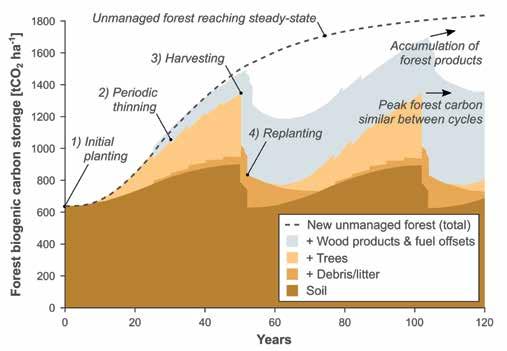
The latter two options require an assumption to be made about the timing of biogenic carbon sequestration. As well as the ‘instantaneous’ approach adopted by EN 15804, which models biogenic uptake with production, alternative ‘backwardslooking’ and ‘forwards-looking’ approaches are sometimes considered, particularly when using DLCA. The former accounts for past sequestration from harvested trees, whereas the latter starts at zero and synchronises sequestration with those replanted, thereby capturing the importance of replanting and the benefits of using faster-growing species.9
Other factors
Much of the discussion and analysis of timber structures is focused, understandably, around carbon and climate.
However, biodiversity loss driven by pollution and habitat destruction is an equally urgent crisis. Across the EU, forest areas have increased by 9% since 1990,10 although one-third of the total are single species. Compared to multi-species forests, these monocultures are worse for biodiversity, soil health, recreational value and resistance to disturbance (and carbon loss) from pests, fire and wind.11 While biodiversity is considered a key element of sustainable forestry, evidence suggests that there is an inverse relationship between biomass production and biodiversity conservation,12 although of course steel and concrete also require land to produce and thus negatively impact biodiversity.
Another common question surrounding increased uptake of timber is supply. Across EU forests, 73% of the annual increment is currently harvested,9 total stored carbon is increasing and there is some scope for additional removals. However, demand for forest products is set to increase dramatically in the coming decades, driven by rising demand for low-carbon materials and biofuel for transport, heating and electricity.
One study13 estimates that timber demand will outstrip supply by 40% to 100% in the EU by 2050, based on current decarbonisation plans. At a global scale, the World Bank predicts a quadrupling of demand for roundwood by 2050. Ideally, long-lived products should be prioritised, re-used and then recycled progressively with energy only as a final option; however coming decades will likely see increased competition for timber across all users. The UK is already seeing record timber prices, due in part to supply and import constraints, but also to demand being at an ‘all-time high’.14 Meanwhile, concrete prices have remained steady (Figure 2); lean design will be increasingly important if timber structures are to remain cost competitive. >>
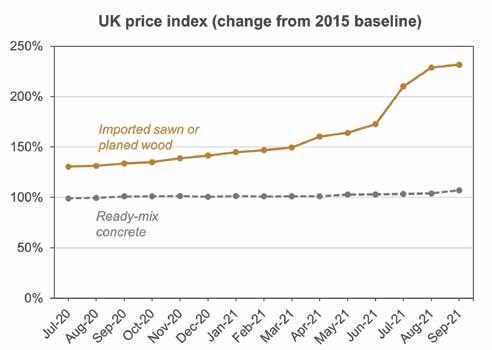
Timber 2022 | 49 www.bmtrada.com
Timber structures Sustainability
Figure 1: Biogenic carbon storage example for a UK stand of sitka spruce with 50-year rotation period, plus accumulation in forest products, compared to a similar unmanaged forest6
Figure 2: Most structural timber used in the UK is imported. The price of timber imports to the UK have more than doubled since 2015, while that of concrete has remained flat.15

Conclusion
Although many of the issues surrounding timber, the climate and biodiversity are nuanced and hotly debated, several key principles for sustainable design and specification can be concluded:
• Design with timber in mind – Timber frequently has a lower embodied fossil carbon than alternatives, regardless of biogenic carbon storage.
• Know your material – Sustainable certification (e.g. FSC® , PEFCTM) is a minimum requirement, but practices can still vary considerably. It’s best to trace and investigate supply chains, forestry practices, rotation periods and transportation distances wherever possible.
• Delay re-release of biogenic carbon – This can be achieved by designing for durability and component re-use, diverting low-value fuelwood into structures, or reusing timber destined for recycling, incineration or landfill.
• Design lean – Efficient material use remains the most sustainable approach to timber structures, minimising fossil emissions, costs and pressure on land and biodiversity while ensuring that more projects can make use of timber: a valuable, sustainable, yet finite resource. n
the author
Will Hawkins Lecturer in Structural Engineering Design University of Bath

Further reading
To find out more about timber and sustainability, visit www.trada.co.uk/sustainability
References
1. Churkina, G., et al., ‘Buildings as a global carbon sink’, Vol 3, Nature Sustainability, 2020, pp269–276 (www.nature.com/articles/ s41893-019-0462-4)
2. Smedley, T., ‘Could wooden buildings be a solution to climate change?’, BBC, 2019 (www.bbc.com/future/article/20190717climate-change-wooden-architecture-concrete-global-warming)
3. Fairs, M., ‘Serpentine Pavilion’s use of biomaterials “more than compensates” for concrete emissions, says Aecom’, dezeen, 2021 (www.dezeen.com/2021/06/16/carbon-emissions-serpentinepavilion-biomaterials-concrete-aecom)
FSC-A000503 / PEFC/16-44-002
4. Hart, J., D’Amico, B. and Pomponi, F., ‘Whole-life embodied carbon in multistory buildings: Steel, concrete and timber structures’, Vol 25, Issue 2, Journal of Industrial Ecology, 2021, pp403–418 (https://onlinelibrary.wiley.com/doi/10.1111/jiec.13139?af=R); Skullestad, J. L., Bohne, R. A., Lohne, J., ‘High-rise Timber Buildings as a Climate Change Mitigation Measure – A Comparative LCA of Structural System Alternatives’, Vol 96, Energy Procedia, September 2016, pp112–113 (www.sciencedirect.com/ science/article/pii/S1876610216307512?via%3Dihub); Himes, A., Busby, G., ‘Wood buildings as a climate solution’, Vol 4, Developments in the Built Environment, November 2020 (www.sciencedirect.com/science/article/pii/S2666165920300260#)
5. For more information, see WIS 2/3-59 Recovering and minimising wood waste, BM TRADA, 2020
6. Adapted from Morison, J., Matthews, R., Miller, G., Perks, M., Randle, T., Vanguelova, E., White, M., and Yamulki, S., Understanding the carbon and greenhouse gas balance of forests in Britain. Research Report, Forestry Commission, UK (No.018), 2012
7. BS EN 15804:2012+A2:2019 Sustainability of construction works. Environmental product declarations. Core rules for the product category of construction products, BSI, 2021
8. Anderson, J., Assessing the carbon-related impacts and benefits of timber in construction products and buildings, Timber Development UK, Technical Paper, 2021
9. Hawkins, W., et al., ‘Embodied carbon assessment using a dynamic climate model: Case study comparison of a concrete, steel and timber building structure’, Vol 33, Structures, October 2021, pp90–98 (www.sciencedirect.com/science/article/pii/ S2352012420307323)
10. State of Europe’s Forests 2020, Forest Europe, 2020 (https:// foresteurope.org/wp-content/uploads/2016/08/SoEF_2020.pdf)
11. Felton, A., Lindbladh, M., Brunet, J. and Fritz, Ö., Forest ecology and management, 260(6), 2010, pp939–947
12. Naumov, V., et al., ‘How to reconcile wood production and biodiversity conversation? The Pan-European boreal forest history gradient as an “experiment”’, Vol 218, Journal of Environmental Management, July 2018, pp1–13 (www. sciencedirect.com/science/article/pii/S0301479718303281?casa_ token=dOXam2xFyVQAAAAA:M_dQAz5n00yiE3tEb_3qF4NVv4P 3zKDWge8VOYWj-fBzrJdm1FfBGUTt7NTg6eXucKED4Itj)
13. EU Biomass Use in a Net-Zero Economy: A course correction for EU biomass, Material Economics, 2021 (https:// materialeconomics.com/publications/eu-biomass-use)
14. Trading Post-Brexit, Timber Trade Federation, 2021 (https:// ttf.co.uk/download/trading-post-brexit-report-timber-tradefederation-member-survey-feb-2021)
15. www.gov.uk/government/statistics/building-materials-andcomponents-statistics-october-2021
Timber 2022 | 51 www.bmtrada.com
Sustainability
Timber structures
About



52 | Timber 2022
Material matters: low-carbon timber design
Will Arnold considers how the efficient use of timber in construction can contribute to a more sustainable future.

54 | Timber 2022
Millennium Line 2
– Brentwood Station.
Timber structures Sustainability
Photo: Nic Lehoux
With the Intergovernmental Panel on Climate Change (IPCC) report 2021 sounding a ‘code red for humanity’, the science is now unequivocally clear: the climate is changing, it is human induced and it will get considerably worse unless drastic action is taken.1 Predictions for a 2°C warmer world indicate that by 2100 (less than 79 years from now) future generations will experience significant increases in the occurrence of climate events: heatwaves (three times as frequent), extreme rainfall (1.5 times more often) and flooding (a 12-fold increase in economic damages).2
Significant changes must be made across every aspect of our lives to prevent catastrophe. So what role does timber in construction play?
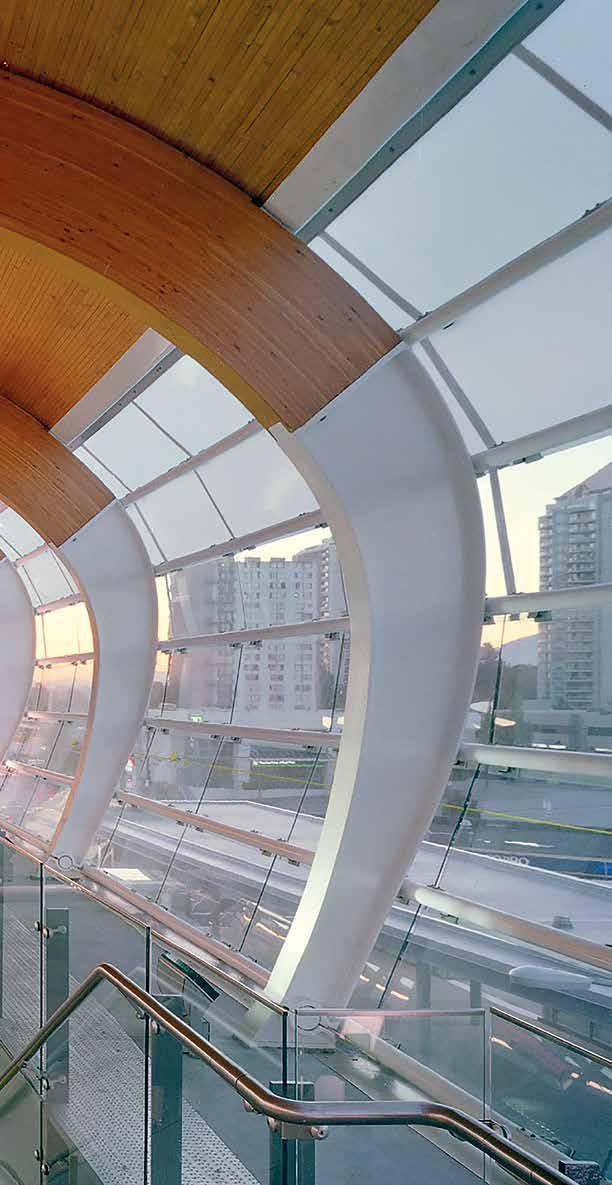
Using carbon-sensitive timber
With embodied carbon responsible for around 10% of global emissions, the choice of how we construct buildings and what they are made from has never been more important. In recent years, there has been significant progress in the development of new timber technologies, allowing for longer spans, more dramatic architecture and quicker construction.
However, if timber construction is going to be part of the solution to the climate crisis, then it must be considered properly. To be carbon-sensitive, the timber used in construction must be:
• used efficiently
• detailed to last forever
• sourced from a low-carbon supplier.
Low-carbon design
Simply switching out other construction materials for timber, without changing any other aspects of the design, can lead to gross inefficiencies. Timber has unique properties that dictate the manner in which it should be used – and if it is to be used efficiently, the design process must reflect the qualities of the timber products chosen for the particular application.
Structural designers must remember that the optimal form for a timber building has direct load paths with minimal >>
Timber 2022 | 55 www.bmtrada.com
“One of the unique properties of biogenic materials, such as timber, is that their growth causes carbon to be sequestered from the atmosphere and locked away within the material. This is a favourable factor that helps to combat climate change.”
Timber structures Sustainability




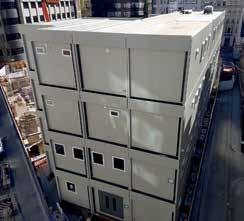


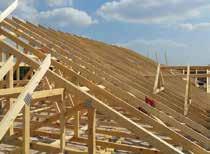
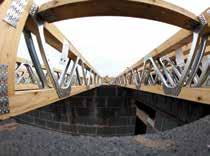


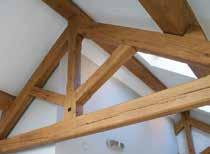
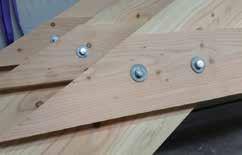

56 | Timber 2022 Trust Kingston Modular to deliver for your clients and to deliver your return on investment. Working across multiple sectors to deliver modular build projects on time and on budget. Whether it’s a multi storey hospital or a luxury leisure home, there is no project too bespoke for Kingston Modular. • 150 Years Experience • Shorter Build Times • Quality Control • Cost Effective • Bespoke Design and Build Options No project too bespoke Expertise from start Get in touch today. enquiries@kingstonmodular.com 01482 835 835 www.kingstonmodular.com Wyckham Blackwell for all your Timber Engineering Solutions TRUSSED RAFTERS METAL WEB EASI-JOISTS ROOF PANEL SYSTEMS FEATURE TRUSSES SIPS PANELS, PORCHES SPANDREL PANELS TIMBER FRAME TIMBER TREATMENT TIMBER & SHEET MATERIAL FLOOR CASSETTES “...better by design” www.wyckhamblackwell.co.uk Tel: 01675 442233 PORCHES SIPS ROOF & FLOOR CASSETTES EASI-JOIST GLULAM DORMERS EASI-ATTIC
structural heroics and complexities. Transfer structures (e.g. due to changes in column spacings) add significant material to a scheme – and sub-optimal structural arrangements (e.g. due to complex architectural geometry) add more material still. This is all material that could be omitted by opting for a simpler, continuous design, which would be quicker and cheaper to build.
Loadbearing walls or columns spaced similarly to domestic construction is usually optimal; with 4m to 6m spans suiting most circumstances. Longer spans are possible, but deflection and vibration start to govern the design, quickly adding material at an exponential rate. In an open-plan office, having a column every 6m might seem closer than we are used to – but materiality matters, and many would argue that it is preferable to sit close to a natural material, rather than far away from one that is artificially made.
Circular economy
One of the unique properties of biogenic materials, such as timber, is that their growth causes carbon to be sequestered from the atmosphere and locked away within the material. This is a favourable factor that helps to combat climate change, and reforestation is on the agenda for most major world economies as part of their sustainability commitments.
However, we must not view sequestration in isolation – it is part of a carbon cycle, whereby carbon leaves the atmosphere (through sequestration into a tree) and later re-enters it (when the tree dies and rots, or is felled and burnt).
Similarly, this sequestration doesn’t mean that a timber structure absorbs carbon from the atmosphere. Instead,
a timber structure locks away sequestered carbon for a prolonged period, until the decision is made to dismantle the structure and, for example, downcycle the timber into a more short-lived product (for example, chipboard or animal bedding) or burn it for fuel.

From an environmental perspective, the challenge is to lock that carbon away for as long as possible, meaning that good detailing to guard against water, rot and fire is important. Planning for a circular economy is essential, enabling the timber elements to be reused in several more structures in the future – though we mustn’t forget that the potential to save carbon in the future has to be balanced against the certainty of today’s emissions. Taking the decision to increase circularity at the expense of today’s emissions is a gamble and requires delicate consideration.
Timber sourcing
Finally, once a structure has been efficiently configured and detailed with the future in mind, one step remains – sourcing it.
It goes without saying that all timber used on every project should be FSC® or PEFCTM certified (so that felled trees are replaced with new saplings) – but how do carbon emissions feature in sourcing? >>
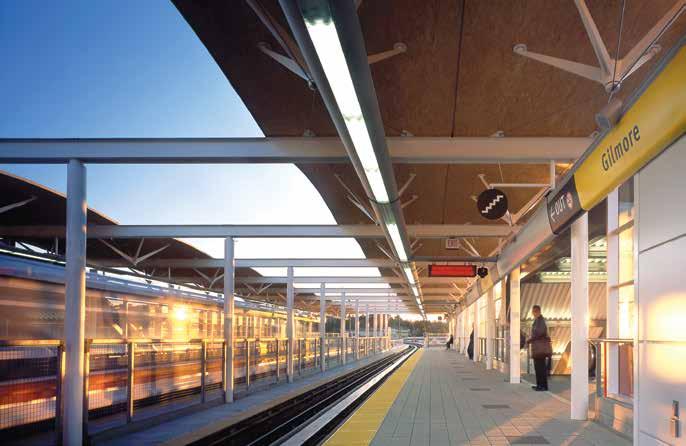
Timber 2022 | 57 www.bmtrada.com
Timber structures Sustainability
Millennium Line – Gilmore Station. Photo: Nic Lehoux
FSC-A000503 / PEFC/16-44-002
Millennium Line – Gilmore Station. Photo: Nic Lehoux
a nail-plated timber frame revolution...

Openwall offer a true open panel timber frame system building upon the proven design adaptability and volume manufacturing efficiency of trussed rafters & metal web joists, taking the next evolutionary step to provide a modern method of construction which is simple, sustainable, and cost effective.
For over twenty years the unique nail-plated timber frame system has combined the scalability and reliability of traditional methods of construction with the high performance and controlled quality of advanced systems.



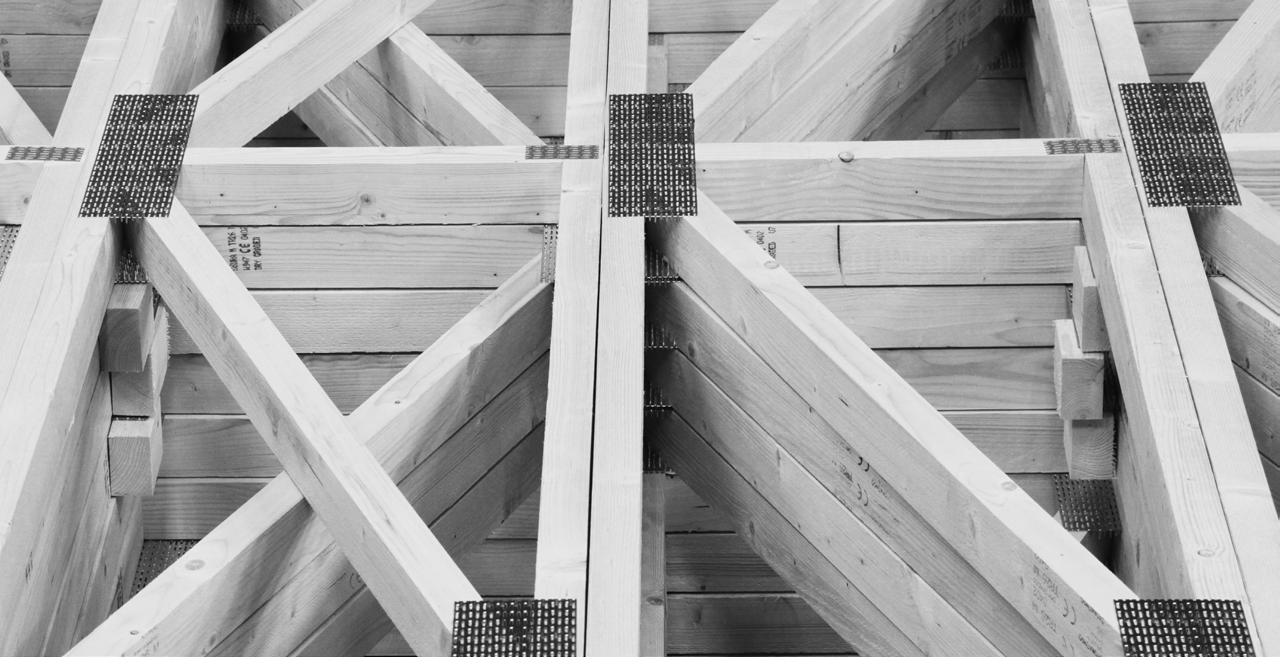
offsite innovation www.openwalloffsite.com access@openwalloffsite.com tel: +44 (0)151 245 4770 fully ukca/ce marked structure|robust detail for party walls ease of onsite inspection CONFIDENCE economies of scale and manufacture|improved project viability direct & indirect cost benefits COST EFFECTIVE efficient & affordable thermal performance|adhesive free structure reduced overall materials & supply chain SUSTAINABLE fast, flexible install|space-saving detailing|light & durable panels SIMPLE
Remember, producing a timber product is not carbon-negative. While the timber has carbon locked away within it from decades of sequestration in the past, the actual process of felling trees, turning logs into timber products and then into structural frames will always require energy. The priority therefore is to find the lowest-carbon means to turn trees into structural frames, and there is a large variation in the emissions produced by different manufacturers of the same material.
For a timber project to minimise its emissions, it needs to prioritise those manufacturers working on technological developments to reduce production emissions. Many are looking at burning biomass as a way to minimise emissions, but even burning waste wood releases emissions,3 and so the challenge is to find ways to produce timber structures without burning anything at all, instead using renewable-powered energy to dry and process the wood.
Looking ahead
If designed well, detailed carefully and specified thoughtfully, timber structures can play a significant role in reducing the construction industry’s emissions. This requires the whole team – from client to contractor – to work together to prioritise sustainability. The industry has never been better equipped to start tackling emissions and it has never been more important than it is now. n

About the author
Will Arnold
Head of Climate Action

The Institution of Structural Engineers (IStructE)
Further reading
To find out more about timber and sustainability, please visit www.trada.co.uk/sustainability
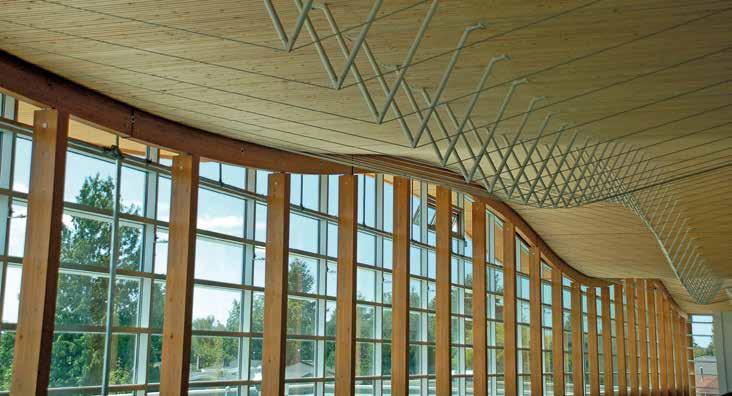
• FSC® website fsc.org
• PEFCTM website www.pefc.org
Further reading
• WIS 2/3-59 Recovering and minimising waste wood, BM TRADA, 2020
• WIS 4-28 Durability by design, BM TRADA, 2019
• WIS 4-33 Life Cycle Assessment, BM TRADA, 2020
References
1. Climate Change 2021: The Physical Science Basis, Contribution of Working Group I to the Sixth Assessment Report of the Intergovernmental Panel on Climate Change, IPCC, Cambridge University Press, 2021
2. Figures taken from sources referenced at www.carbonbrief. org/analysis-when-might-the-world-exceed-1-5c-and-2c-ofglobal-warming
3. www.chathamhouse.org/2017/02/woody-biomass-powerand-heat
Timber 2022 | 59 www.bmtrada.com
Timber structures Sustainability
Samuel Brighouse Elementary. Photo: SP
Slave Lake Boreal Centre. Photo: Robert Lemermeyer
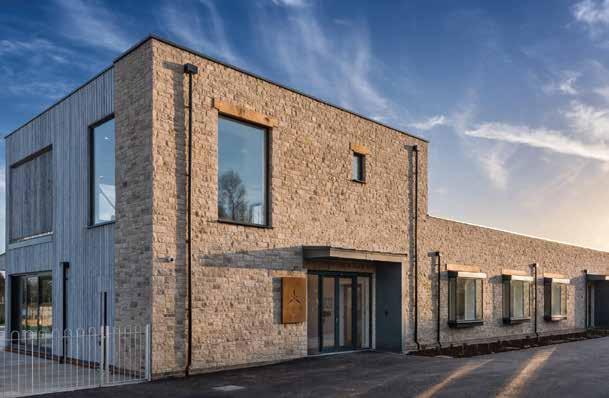

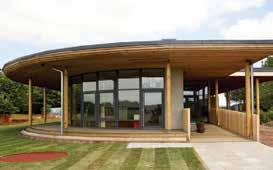























60 | Timber 2022 SIPS Market leaders in good quality, reliable SIP builds offering you: • Cost certainty • Reduced build programme • Excellent fabric performance • Design warranty assurance For more information contact us today on: 01432 842999 www.glosfordsips.co.uk Glosford Timber Solutions, Holmer Road, Hereford HR4 9BP A BETTER WAY TO BUILD SIPs - Structural Insulated Panel system PORCHES SIPS GLULAM ROOF & FLOOR CASSETTES It’s 4x2 but not as you know it. 45mm x 95/145mm in 3.6m and 4.8m lengths 01992 578877 hoppings.co.uk • C24 strength class softwood • Multi-application high performance pine • Suitable for use above/in ground contact • 25 year performance warranty • 30 year desired service life
As a proud partner of Beyond Zero Homes, Robertson precision-engineered and erected the zero-carbon, timberframed COP26 House.

Robertson Timber Engineering

Our in-house team designs, manufactures and erects precisionengineered timber, and has a portfolio that speaks for itself.
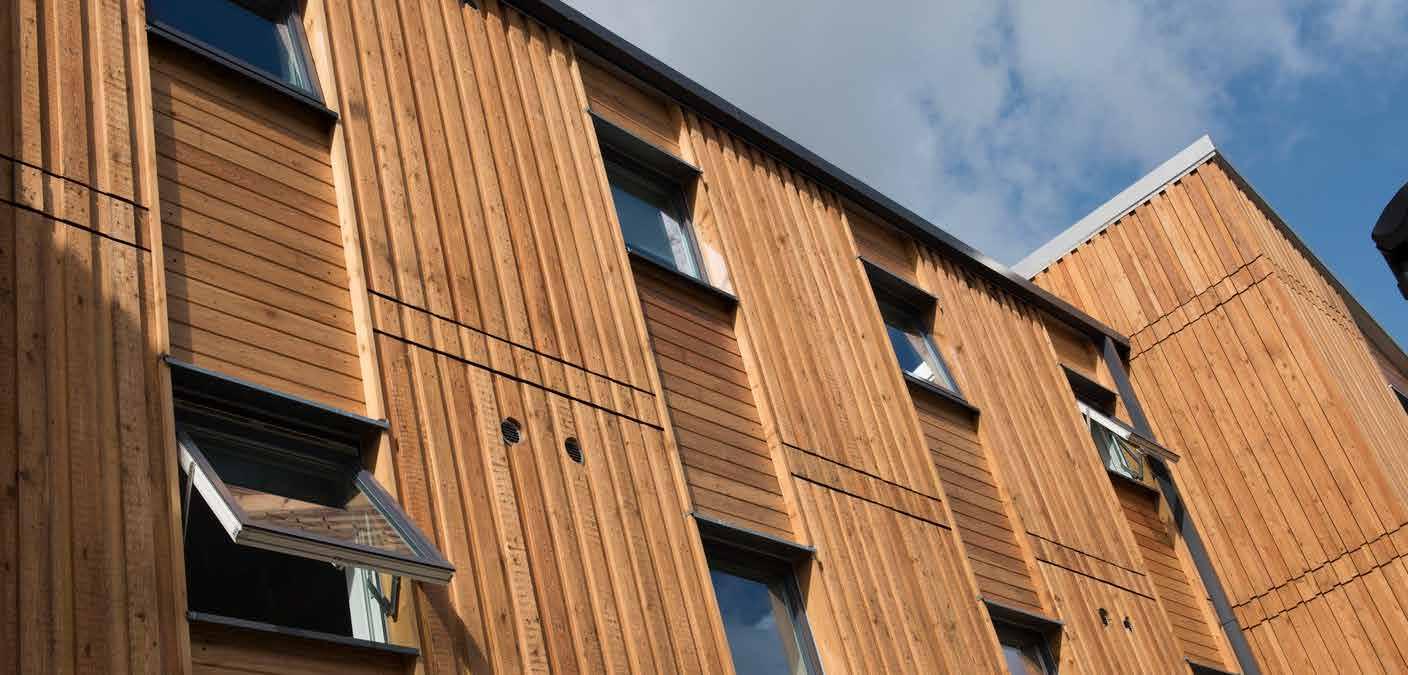
Efficiency, quality, value and sustainability are core to how we’ve been successfully delivering for our customers for over thirty years.

And as part of one of the largest familyowned construction, infrastructure and support service businesses in the UK, we bring knowledge and perspective across sectors and all phases of construction.
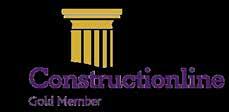
When we work together, sustainable progress is assured. It’s the Robertson Way.
www.robertson.co.uk
 COP26 House - image by Fourfifteen
UHI Student Accommodation
COP26 House - image by Fourfifteen
UHI Student Accommodation

Affordable low-carbon timber homes: a balancing act
Jae Cotterell outlines the challenges of construction budgets versus sustainability.
Many think that a sustainable, climate-ready future requires new housing to be built using timber, wherever feasible. This reflects a significant shift from the belief that energy efficiency alone would be required, and we are beginning to appreciate that embodied carbon is also critical to reduce carbon emissions sufficiently.
The UK building culture has been rooted in masonry construction and in recent decades there have been modest increases, across all sections of construction, in the amount
of insulation used, generally using high embodied carbon insulation. The necessary shift of emphasis towards timber structures reflects its low-carbon and renewable credentials. Building in timber frame also enables use of modern methods of construction (MMC), which assist with erection speed, quality control systems and waste management.
With the need for highly insulated and airtight homes, timber can offer carefully targeted solutions, instead of simply tweaking traditional construction methods. The potential benefits to the environment are significant. However, there are caveats and pitfalls to be avoided, or at least carefully considered. Here are three examples where specifying timber and claiming eco-credentials must be carefully balanced against environmental impacts and the potential for elevated costs.
Protecting limited resources
First, there is the over-use of timber itself – it is after all a limited resource, and we suffer from a lack of biodiverse forests both worldwide and in the UK. Planting for use as a ‘product’ is not the same as enlarging existing established woodland, and we need to keep this in mind. Allocating large areas of land for single growth ‘tree farms’ reduces land available for biodiversity and other activities such as supporting generation of renewable energy and increased local food production – land is under great pressure in the context of building a decarbonised economy.
When specifying timber, we must consider resource efficiency and newer timber products; using laminated veneers such as I-joists can be a good fit for smallscale developments as they enable minimisation of structure and maximisation of insulation.
Claims of carbon offsetting through sequestration in the timber elements can be misleading and could simply reflect extravagant use of the timber itself. Certainly, if we are looking at affordable housing and switching to timber frame construction, appropriate >>

Timber 2022 | 63 www.bmtrada.com Timber structures Sustainability
Figure 1: Small section I-joists using laminated veneers. Photo: Passivhaus Homes Ltd

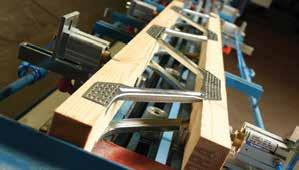






64 | Timber 2022 We are highly experienced in delivering infrastructure and groundworks schemes for local, national and international authorities, agencies and developers. We are able to bring a highly experienced team to every project, committed to providing efficient, cost effective, and innovative solutions. CONTACT ALAN LANE: ALAN@LANE-CE.COM 07703 522 569 LANE-CE.COM Our services include: ground works, tunneling & shafts, temporary works, hard landscaping, general building, concrete & form works, and hire service. Lane CE_Trada advert_185x126mm.indd 1 23/02/2021 10:38 Find your local branch: DWB Anglia Limited Mapledean Industrial Estate, Maldon Road, Latchingdon, Essex, CM3 6LG Tel: 01621 744455 Email: anglia@dwbgroup.co.uk DWB Boston Limited Units C2-C5 Boston Trade Park, Norfolk Street, Boston, Lincolnshire, PE21 9HG Tel: 01205 362468 Email: boston@dwbgroup.co.uk DWB Roof Truss Limited Suttonfields Industrial Estate, Stockholm Road, Hull, East Yorkshire, HU7 0XW Tel: 01482 833313 Email: hull@dwbgroup.co.uk DWB Remote Design Office 118 Hickman Road, Galley Common, Nuneaton, Warwickshire, CV10 9NG Tel: 07980 710 102 Email: nuneaton@dwbgroup.co.uk www.dwbgroup.co.uk Talk to us. We’ve been helping architects, specifiers, contractors, builders and homeowners design amazing living spaces for over 30 years. Roof Trusses // Posi-Joist // Laminated Timber // Attic Trusses // Spandrel Panels CREATING ADDITIONAL SPACE? Visit Linkedin for our latest projects and news
use of timber is key to minimising both the environmental impact as well as cost. The amount of timber structure required to meet an efficient wall or roof build can vary significantly, easily doubling the amount of timber required (e.g. a 360mm I-joist frame versus a 90mm cross-laminated timber panel). Even within a frame type (e.g. structural insulated panels, I-joists or solid timber studs) the timber frame fraction¹ (TTF) can vary significantly. If you want to maximise thermal efficiency (and therefore cost), you must also keep these timber fractions low, certainly aiming for <15%. A useful analysis of the TFF and its impact is referenced under ‘Further reading’. If you design or specify a frame with a high structural ratio and/or high timber fraction, then thermal and resource efficiency, as well as cost, are likely to be impacted negatively.
Reducing operational carbon
Second, to achieve low carbon, consider the use of timber beyond the structural frame. Low carbon involves reducing operational carbon too, and to achieve low heat demands we must specify lots of insulation along with designing to remove or minimise thermal bridging.
With a structurally efficient timber frame, 85% of a wall or roof construction might be insulation (certainly at Passivhaus or net zero carbon performance levels). The carbon intensity of the insulation is therefore even more important than your structural elements – that is if your whole construction solution is to reduce carbon sufficiently to meet net zero energy targets.
Using high performance insulations within a frame will significantly increase the embodied carbon impact. To provide comparative figures:
• a loose wood fibre insulation might be as low as 12kgCO2e/m3
• a wood fibre board around 40kgCO2e/m3

• a high performance PIR insulation commonly above 130kgCO2e/m3
Of course, you only require about half the depth of a higher performance insulation, to achieve similar U-values, but it is clear to see how the embodied carbon figures will still be significantly impacted by insulation choice. Certainly, a low-carbon house involves more than specification of timber structure. The further advantage of using lower embodied carbon insulations (wood fibre would be a good low-carbon choice) is that generally these insulations are also vapour permeable and enable the natural breathable properties of timber to be maintained across the entire element (roof or wall). This allows for potential drying to external air and follows timber best practice.
External finishes
Third, the carbon intensity of the finished house will also be significantly impacted by choice of the external finish. A frame might be finished in several ways, from timber cladding all the way to full brick outer skins.
The choice of cladding materials has expanded over recent years and it is worth considering newer options on the market that are lower in carbon, are robust over the lifetime of the building and offer practical disposal options at end of life. Architects currently frequently specify timber frame while >>
Timber 2022 | 65 www.bmtrada.com
structures Sustainability
Timber
Figure 2: Laminated veneer lumber. Photo: Passivhaus Homes Ltd
Learn more by visiting: www.posi-joist.co.uk


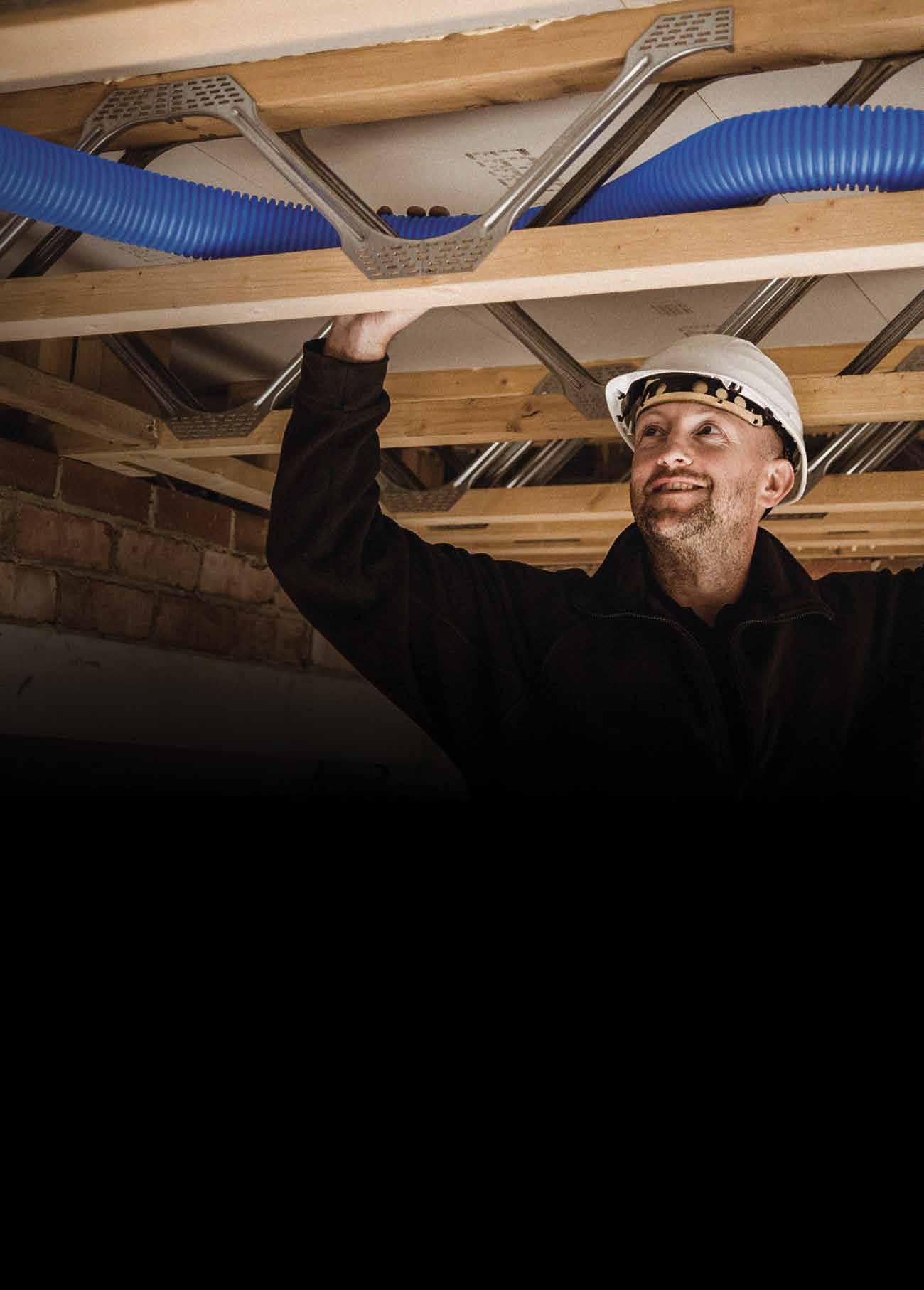
also designing with brick outer finishes – this will be a highcost and high embodied carbon option. However, brick does offer a durable and robust finish that can maintain an excellent aesthetic appeal over time.
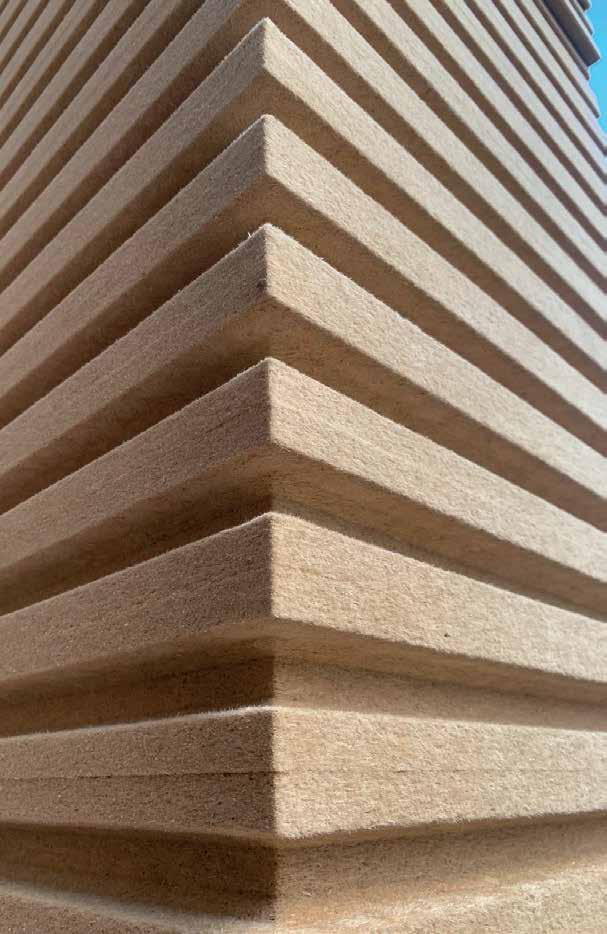
Timber cladding is typically cheaper and much lower in carbon cost, but appearance can significantly degrade with age if it is not designed, specified, built and maintained well. Choosing to use timber cladding needs that extra level of care to ensure durability and aesthetic quality over time. There are an increasing number of modified timbers now available, along with other material cladding options – considering these materials can introduce variety in the design, be cost effective, lower the carbon intensity, and offer good maintenance and appearance characteristics.
Timber structures
Sustainability
Having reduced the embodied carbon with a timber shell, consideration of the final finishes should form part of a properly integrated specification. There is much potential for use of a wider variety of durable and recyclable finishing materials, ones that could add cost value. We don’t need to revert to brick facades. A limited use of more carbon-intense options in critical areas and in locations where they might be optimally appreciated (e.g. around entrances) could be another useful strategy.
Summary
Delivering affordable low-carbon timber houses sits at the top of the built environment agenda and taking time to consider how to approach this thoughtfully would be time well spent. Achieving environmentally appropriate solutions requires broad considerations and an understanding that simply specifying timber frame will not be good enough. n
About the author
Jae Cotterell Passivhaus Homes Ltd Co-creator of the PH15 System –winner of the Ashden Award 2020 for scaleable climate change solutions

Further information
For more information, visit www.phhomes.co.uk
To find out more about timber and sustainability, visit www.trada.co.uk/sustainability
Further reading
• Innovative timber construction, ISBN 978-1-9005-875, BM TRADA, 2012
• Low energy timber frame buildings: designing for high performance, 2nd edition, ISBN 978-1-900510-80-6, BM TRADA, 2011
• Zaccaro, F., Littlewood, J. R. and Hayles, C., ‘An Analysis of Repeating Thermal Bridges from Timber Frame Fraction in Closed Panel Timber Frame Walls: a Case Study from Wales, UK’. Email fzaccaro@cardiffmet.ac.uk for more information.
References
1. Timber frame fraction (TFF) or timber to insulation ratio.
Timber 2022 | 67 www.bmtrada.com
Figure 3: Wood fibre insulation. Photo: Passivhaus Homes Ltd
The approach to timber structures in building refurbishment
The retention, repair and retrofit of timber building structures has now become a priority to preserve the embodied carbon stored in the building fabric. James Walker describes the skills required.

68 | Timber 2022 Timber structures Sustainability
Velvet Mill, Lister Hills, Bradford.
Photo: Urban Splash / Joel Chester Fildes
The lowest carbon building is one that has already been built. Whether maintaining a structure or refurbishing a building, when there is timber involved, appropriate skills and expertise are required to avoid condemning structural elements because of damage, decay or insufficient strength.
The approach
There are guiding principles of conservation for the restoration and refurbishment of historic buildings,1,2 but a new set of principles are required for a net zero future where carbon release is minimised and building life is maximised:

1. Do the minimum intervention possible to achieve the client’s objectives.
2. Question and revise the client’s objectives as knowledge about the building is gained.
3. Maintain existing load paths and magnitudes where possible.
4. Reuse existing materials where possible or source new materials with the lowest environmental impact.
5. Prioritise the design solution and details likely to have the longest life.
6. Construction details should be reversible to facilitate future adaptation or deconstruction.
Timber is an excellent material choice for the vertical extension of buildings made from all major construction materials due to its high strength-to-weight ratio, which helps to minimise additional load on the foundations.
One of the drivers for building refurbishment will be the retrofit of new technologies to improve the operational energy performance of buildings. Even relatively new buildings are likely to require additional insulation (pay careful attention to the building physics) and more efficient mechanical and electrical systems (ideally in accessible zones separate from the structure). >>
Timber 2022 | 69 www.bmtrada.com
Timber structures Sustainability
“Timber is an excellent material choice for the vertical extension of buildings made from all major construction materials due to its high strength-to-weight ratio, which helps to minimise additional load on the foundations.”

Any building refurbishment project should adopt the following workflow, which may be iterative:
1. Desktop study
2. Survey
3. Appraisal
4. Design integration
5. Modify, repair and reinforce.
Survey
To assist future designers, we must record the design information of buildings, ideally within the fabric of the building itself to mitigate against the loss of electronic information.
A traditional 2D measured survey may be appropriate for simple interventions. New technology can survey a building in 3D using laser acquired point cloud measurements, supplied as a 3D CAD model (Figure 1). This allows designers to integrate the new building components with the existing building and exploit the benefits of Building Information Modelling (BIM) and Modern Methods of Construction (MMC).

A structural survey is essential to identify the existing structural members and assess their condition. A complete understanding of the building structure is unlikely without opening-up works with follow-on surveys, product/species identification, testing and/or visual grading.3 Timber is particularly susceptible to moisture-related biological attack, and areas of rot and decay should be identified and repaired as necessary.
Appraisal
The building surveyor should be familiar with the common methods of timber construction as used over the past 40 years and the myriad of timber technologies available.4 See Table 1
Structural member What to assess
Sawn softwood walls, roofs and joists
Engineered joists
The strength properties for sawn softwood timber can be conservatively assumed to be C16,5 but C24 can often be demonstrated by in-situ grading. A powerful magnet can help locate the fixings through the dry lining and determine the centres of the studs.
The bending strength and stiffness of timber I-joist and metal web joist floors can be derived based on the area of the flanges and the distance from the neutral axis. The shear strength and stiffness of I-joists can be approximated from the thickness, depth and material of the web, while for metal web joists a truss analogy can be used with strength limited by the anchorage capacity of the metal ‘web’ and stiffness is based on the slippage of the connection.
Glued laminated timber (glulam)
Glulam beams are difficult to visually grade since they may be a ‘combined’ grade where the outer laminations are a higher grade than the central laminations. Glulam columns are normally ‘homogeneous’ grade to ensure uniform buckling behaviour. For preliminary design, assuming a C24 solid section is a good starting point.
Lamimated veneer lumber (LVL)
Strength and stiffness depend on whether the veneers are all unidirectional or contain some cross-grain veneers – look at the end/edge or take a small core sample. Most LVL is manufactured from softwood, but beech LVL is darker in colour.6 For preliminary design, assuming a C27 solid section is a good starting point.
Crosslaminated timber (CLT)
Trussed rafters
Generally manufactured from C24 lamellas of different thickness and comes in a variety of different layups. A core sample, in an area of low stress, can identify the layup for analysis using the γ -method for mechanically jointed beams.7
Extremely efficient in their use of material and difficult to adapt without significant intervention. Specialist software including appropriate nail plate models is required for checking.
Racking boards
Look out for oriented strand board or other structural racking boards in walls, but remember that nonwood-based racking boards are now commonly used to satisfy fire requirements.
Timber 2022 | 71 www.bmtrada.com
Figure 1: 3D CAD model under construction from laser surveyed point cloud data.
Source: James Walker
Timber structures Sustainability >>
Table 1: Assessment of different timber construction methods











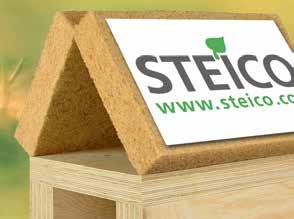

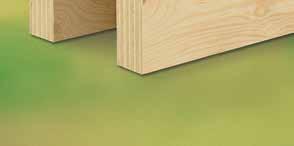



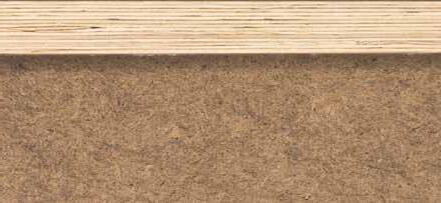





Innovative construction products for the buildings of tomorrow
joist For roofs, floors and walls ENGINEERED BY NATURE Craftsm anshipConstruction excellence Planning|Support | Performance energye cient | healthy Timber frame 2.0 sustainableWorldleader in wood fibreinsulation The ecologicalSTEICO BuildingSystemIndustrial Stores CO2
STEICO
Where it is not possible to assess the strength of a structural member, an alternative approach is to calculate the load supported by the structural element and ensure that the new loading arrangement does not increase the internal stresses on the member. If stresses exceed the limits of the structural members, reinforcement may be required. However, Eurocode 5 and other modern design codes are primarily written for new buildings and alternative means of demonstrating suitable reliability may be appropriate for existing buildings.8
Repairs and reinforcements
Modern self-tapping timber screws and bonded plates and rods can be used to repair and reinforce existing timber elements. Design rules will be included in the next version of Eurocode 5. In the meantime, design methods can be found in academic papers9,10 and screw manufacturers’ European Technical Assessments (ETA).11 Adhesives are particularly good for repairs where the original strength and stiffness of the structural member needs to be reinstated (Figure 2 ), but glued elements should be designed to be easily deconstructed at end of life. Adhesive repairs should be carried out by a specialist contractor.
About the author
James Walker MEng MSc CEng MICE MIStructE Technical Director Milner Associates
Further information
For more information, see Timber in refurbishment, BM TRADA, 2010, available from the BM TRADA bookshop www.bmtrada. com/bookshop or visit www.trada.co.uk/sustainability
References
1. Yeomans, D., Repair of Historic Timber Structures, second edition, ICE Publishing, 2020
2. Lawrence, A., and Ross, P., Appraisal and Repair of Timber Structures, second edition, ICE Publishing, 2020
3. BS 4978:2007+A2:2017 Visual strength grading of softwood. Specification, BSI
4. Structural Timber Engineering Bulletin 2: Engineered wood products and an introduction to timber structural systems, Structural Timber Association, 2014
5. BS EN 338:2016 Structural timber. Strength classes, BSI
6. www.trada.co.uk/wood-species
7. BS EN 1995-1-1:2004+A2:2014 Eurocode 5: Design of timber structures – General. Common rules and rules for buildings, BSI
8. Macchioni, N. et al., ‘Guidelines for the on-site assessment of historic timber structures’, in International Journal of Architectural Heritage, 2013

Conclusion
Building designers need to adapt their skills to ensure existing building stock can be continually updated, refurbished and renewed in a net zero carbon landscape. Timber is the perfect material for building extensions made of any material, but to modify an existing timber requires good knowledge of standard building practices and the growing range of timber products. n

9. Dietsch, P. and Brandner, R., ‘Self-tapping screws and threaded rods as reinforcement for structural timber elements – a state-of-the-art report’, in Construction and Building Materials, 2015
10. Branco, J., Dietsch, P. and Tannert, T., Reinforcement of Timber Elements in Existing Structures, Springer, 2021
11. ETA-11/0030, Rotho Blaas Self-tapping screws and threaded rods, ETA Denmark, 2020
Timber 2022 | 73 www.bmtrada.com
structures Sustainability
Figure 2: Example of an adhesive repair in the moisture-damaged tension zone of a CLT floor panel. Photo: James Walker
Timber
TIMBER ENGINEERING EXPERTS


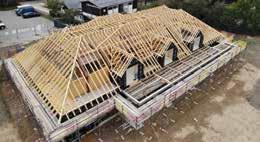


Sustainable sourcing through Global Supply Chain arrangements
When it comes to choosing the right wholesale supplier for your business, you can count on ELLEN ENTERPRISES for quality products at affordable prices. We offer a wide selection of goods to individuals or businesses globally.

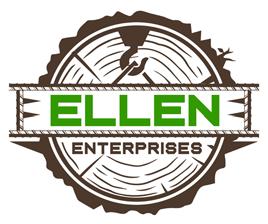
Some of the products and goods available include:
ShEET MaTERIaLS
VaRIouS PLywood aNd oRIENTEd STaNdaRd BoaRdS (oSB)



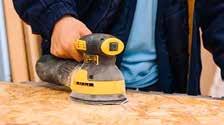



SoLId SawN LuMBER
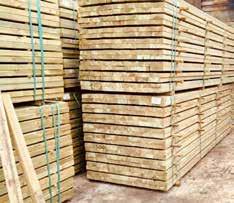

SwaN CaRCaSSINg & CLS
SCaffoLdINg
woodEN aNd LVL SCaffoLdINg
INSuL aTIoN
PL aSTERBoaRd
PLuMBINg SuPPLIES
Call 020 4551 9589
74 | Timber 2022 • Technical Expertise • Reduced Costs • Unrivalled Service Standards • Speed Of Install • Superior Product Quality For more information contact us today on: 01227 712 322 www.harmonytimber.co.uk Harmony Timber Solutions UK, Unit 1b/2a, Canterbury Ind Park, Island Road, Hersden, Canterbury, Kent, CT3 4HQ
GLULAM ROOF & FLOOR CASSETTES
Solutions is a leading manufacturer of off-site construction and engineered Timber Frame Kits.
Harmony Timber
today or visit www.ELLEN.enterprises
us to discuss your requirements or to use our fREE product specification service for your project.
Contact
SSH - Hexagon Head Connector Screw
SSH timber screws are the best techincal solution for fixing connectors to timber elements. They significantly reduce installation times on site compared to conventional nailing methods. They can be used outdoors (15-year service life) and offer excellent resistance in treated timber.
Up to 20% higher load bearing capacities than LAG screws.




Includes both a 6-lobe drive and a hexagonal head, enabling various ways of installation. Precision engineered to meet any demand.
Building Safer, Stronger Structures

Simpson Strong-Tie® now offers a complete range of connectors and fasteners for almost every application when it comes to Cross-Laminated Timber installations. Designed to make life simpler for builders, engineers and architects.

Call: 01827 255600 | www.strongtie.co.uk @strongtieUK Pick up your copy of our Connectors and Fasteners for CLT Construction Catalogue.
Connectors and Fasteners for CLT Construction C-CLT-UK-2020 +44 (0) 1827 255 600 strongtie.co.uk
Safety Storage Efficiency


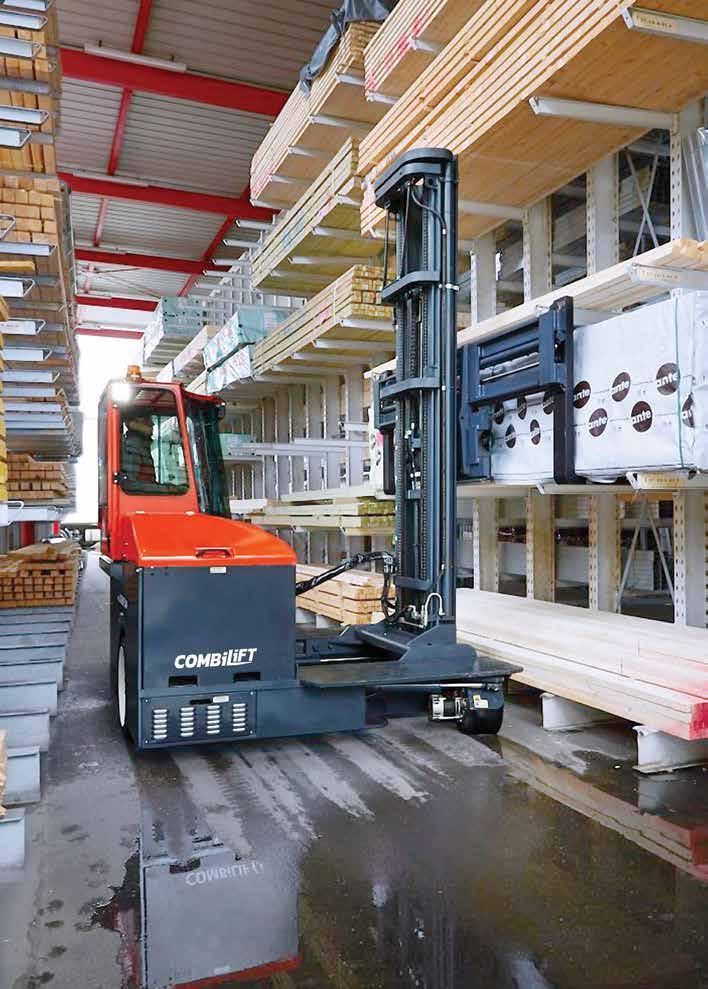
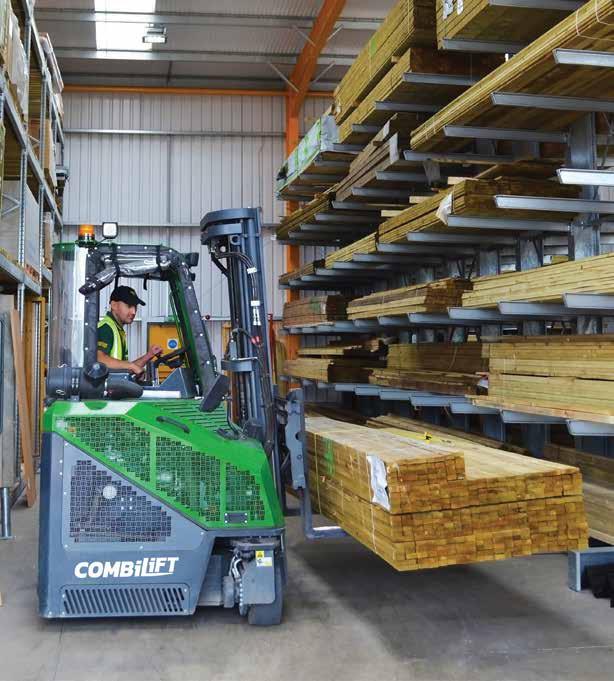
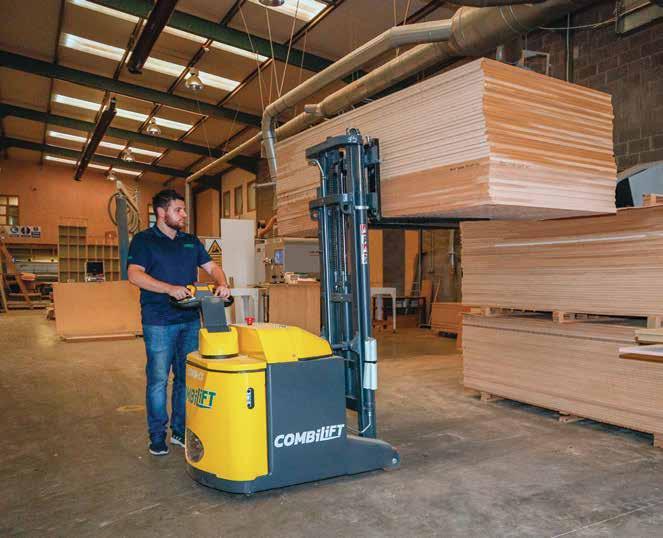
Manage
•
•
your timber more safely and more productively using less space with Combilift’s materials handling solutions
Safer product handling
Optimised production space
capacity
• Improved storage
• Increased productivity & output
combilift.com
• Enhanced profits
Manufacturing a biogenic built environment
Robert Hairstans discusses the Biogenic Built Environment Framework: collaborative projects where research, innovation, commercialisation and education work in concert.
There are clear and compelling arguments for using naturally renewable capital to deliver the built environment. However, barriers remain in areas such as market perception, business model and procurement approaches, and a lack of understanding on such issues as durability, cost and performance in fire.
A Biogenic Built Environment Framework of collaborating partners has been set up to tackle this issue. It aims to democratise knowledge and effect change at scale, focusing on accelerating the use of wood in construction through a series of aligned research, innovation, commercialisation and educational workstreams.
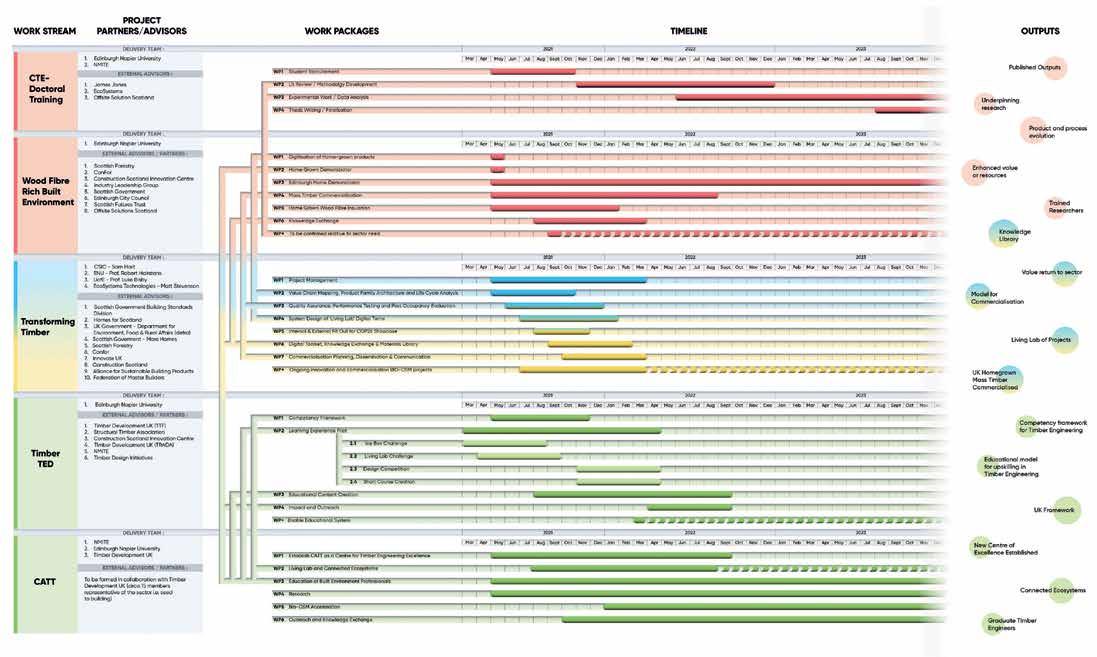
Underpinning research
Research is essential. Investing in exploring and acquiring new knowledge, alongside nurturing upcoming talent and fresh thinking, is important for resolving ongoing challenges in the construction sector. Edinburgh Napier University (ENU) has an established track record in this area, working with external partners and stakeholders to implement a pipeline of PhD studentships investigating a range of topics from the serviceability of engineered flooring systems to the digital twinning of net zero carbon homes.
Creating a cohort, or a ‘doctoral training centre’, encourages mentorship and cross-fertilisation of knowledge. The ENU studentships work closely with industry and external >>
Timber 2022 | 77 www.bmtrada.com
Aligned workstreams for knowledge exchange (red – research, yellow – innovation, blue – commercialisation, green – education). Source: Edinburgh Napier University Timber structures Off-site construction
Setting the standards for timber fastening.
Setting the standards for timber fastening.
Across Europe, BeA is the trusted fastening partner for some of the biggest and best known names in timber frame.
Across Europe, BeA is the trusted fastening partner for some of the biggest and best known names in timber frame.


We offer an unrivalled range of manual, semi-automatic and fully automated Autotec fastening solutions.
We offer an unrivalled range of manual, semi-automatic and fully automated Autotec fastening solutions.

All BeA fasteners used in the building of load bearing structures a re specified to Eurocode 5.
All BeA fasteners used in the building of load bearing structures a re specified to Eurocode 5.

Reliable products, competitive prices and the kind of service and delivery you can depend on from BeA.
Reliable products, competitive prices and the kind of service and delivery you can depend on from BeA.
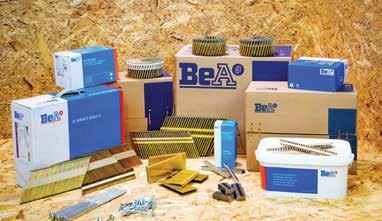

01482 889 911 sales@uk.bea-group.com
01482 889 911 sales@uk.bea-group.com
visit our new website www.bea-group.uk
visit our new website www.bea-group.uk

THE POWER OF FASTENING
THE POWER OF FASTENING
stakeholders via leveraged funding streams; there is scope to expand this network by collaborating with other university partners and increasing the research portfolio to address technical challenges.
Wood fibre rich built environment applied research
The UK currently produces approximately 3.4 million m3 of sawn softwood per annum, 30% of which is used for construction1 – there is significant opportunity to increase this. ENU has led the research effort to enhance the use of homegrown wood fibre in the built environment (see box), this has included demonstrating through a series of projects that it is both compatible with mass timber manufacturing processes and has the structural credentials to comply with the majority of design scenarios.2
Edinburgh Napier University research projects (with the Construction Scotland Innovation Centre (CSIC) and Scottish Forestry)
• Commercialisation of homegrown mass timber – collate, analyse and summarise the research base on mass timber and explore its viability for the UK construction industry, including the determination of manufacturing of set-up scenarios and the provision of technical specifications.
• Digitisation of homegrown timber products – determine the potential for the symbiosis of renewable resource (forestry, woody bio-mass and naturally replenishable), and the high value manufacture of a resilient and sustainable built environment leveraging the potential of Industry 4.0 (digitisation).
• Homegrown demonstrator – evaluate the current design for manufacture and assembly (DfMA) approaches of house types considering supply chain interactions, logistical operations and building performance standards to enable the use of homegrown timber.
• Homegrown wood fibre insulation – to test and prototype the use of homegrown wood fibre products to determine the route to market, certifications and performance criteria.
Working with industry partners, this applied research provides the evidence base and necessary information to unlock investment. There is, however, a need to disseminate this information more broadly to overcome the scepticism of specifiers and clients within the decisionmaking process.
Transforming Timber initiative – homegrown timber in construction

The Transforming Timber project, led by Construction Scotland Innovation Centre (CSIC) with support from ENU, ECOSystems Technologies, University of Edinburgh, SNRG and BSW Group, explores the mainstream use of homegrown timber in the construction sector. It has been awarded funding to create a fully functional prototype highlighting the business case for using UK timber resources in future building projects, and showcased the first two-storey modular home manufactured from UK mass timber during COP26 (the 2021 UN Climate Change Conference of the Parties).
The project creates the UK’s first dedicated homegrown timber resource library, as well as virtual reality and digital initiatives. Importantly, it will also look at the overall commercialisation strategy for homegrown engineered timber products.
Timber Technology Engineering and Design (TED): an educational approach
ENU, the New Model Institute for Technology and Engineering (NMITE) and Timber Development UK (formed from the Timber Trade Federation and TRADA) are working with external stakeholders to enable an educational system that will provide an accredited educational approach with comprehensive training in modern methods of timber construction. Initial development work was funded by the Edinburgh & South-East Scotland City Region Deal and the Ufi VocTech Trust’s 2021 Seed Fund.
Students will gain specialist timber construction knowledge and skills for ‘better, faster and greener’ delivery, addressing the climate emergency and affordable housing crisis. Underpinned by technical knowledge and meta-skills, the course content will be grounded in immersive ‘learning by doing’ activities, stimulating critical thinking, and instilling new knowledge and skills for net zero carbon, using the alternative NMITE educational ethos and blended learning techniques.
Students will be able to draw upon the course learning content and work remotely (individually or in groups) to design for manufacture and assembly of a timber off-site product. The learning will focus on real-world scenarios and learners will develop a full understanding of timber system performance attributes (thermal, acoustic, structural, productivity) through software simulation or testing. The emphasis is to ensure an understanding of timber as a structural material, the array of product options and how to respond sustainably to a design brief. It will also create a broader understanding of building performance (acoustic, thermal, durability and fire), whole life cost, digital design, and retrofit and restoration. The blended delivery approach will ensure industry relevance and collaborative thinking. >>
Timber 2022 | 79 www.bmtrada.com
SNRG Homegrown Mass Timber Volumetric Unit on display at CSIC COP26. Photo: CSIC
Timber structures Off-site construction
partner for optimal offsite
Boost your performance with a partner dedicated to optimising your productivity. At ITW Construction Products, our fully integrated approach to offsite fabrication has resulted in solutions that combine the power of automated prefabrication tools and fastening systems with the highest quality materials.
So you can enjoy greater efficiency and reliability from your production line.

Your
supply
fabrication itwcp-offsite.co.uk +44(0)1592 771132 orders@itwcp.com ITW Construction Products Offsite @ITWCPOffsite ITW Construction Products Offsite Brands for the offsite industry
integrated
Centre for Advanced Timber Technology (CATT)
The £7m CATT ‘Living Lab’ being built at NMITE is due for completion in July 2022. It will create the necessary conditions for research, innovation and industry-led education to collaborate in multi-contextual, empirical real-world environments, enabled by digital technologies. CATT’s objective is to stimulate co-operation across the industry both vertically (seed to end product) and horizontally (architecture, construction, digitalisation), together with demonstrating to a wider audience the rewards of a career in timber and partnering with Edinburgh Napier University, Timber Development UK, and other stakeholder partners and industry collaborators.
The CATT students will be hosted in a purpose-built learning space and connected to other living lab projects for an enriched curriculum and access to validated content for knowledge exchange.
Summary
To realise the full potential of timber in construction, research, innovation, commercialisation and education have to act in concert. Accessible information and a joined-up approach between academia, industry and external stakeholders is key to creating value return to the sector. This in turn will inform the industry’s necessary response to the climate crisis by enabling sustainable delivery of the built environment. n
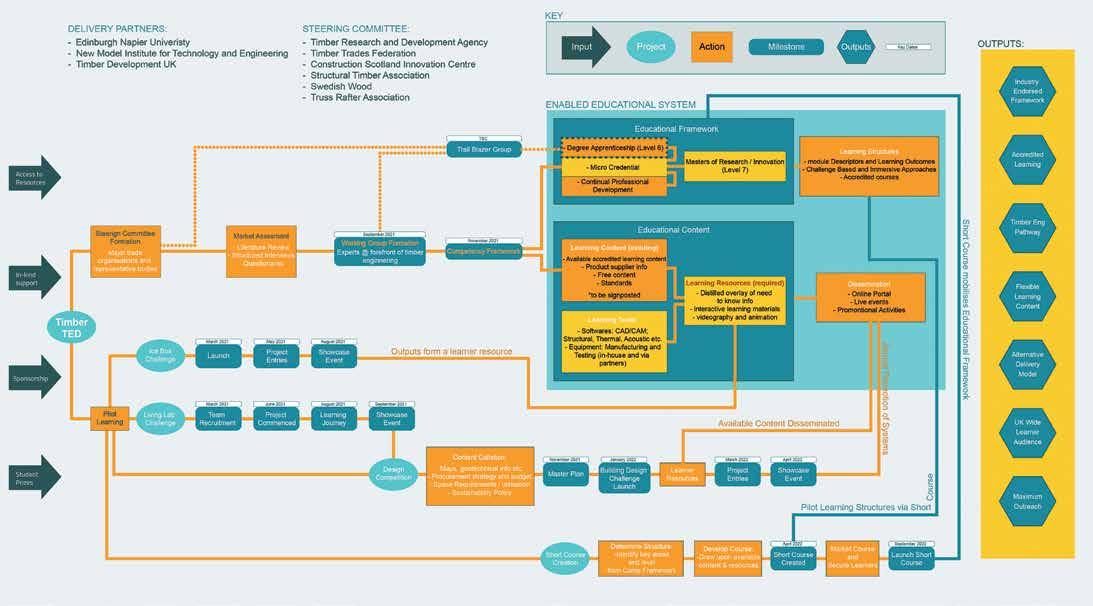
About the author
Professor Robert Hairstans
Founding Director
Centre for Advanced Timber Technology
New Model Institute of Technology and Engineering
Head of the Centre for Offsite Construction and Innovative Structures
Edinburgh Napier University
Robert would like to thank the following contributors for their input into this article:
• Andrew Livingstone, Edinburgh Napier University

• Sam Hart, Construction Scotland Innovation Centre
• Matt Stevenson, EcoSystems
• Tabitha Binding, TRADA/TTF (Timber Development UK)
Further reading
Off-site and industrialised timber construction, 2nd edition, ISBN 978-1-909594-81-4, BM TRADA, 2019
References
1. Stagg, R., ‘Forestry Statistics 2020’, Forest Research, pp1–307, September 2020
2. Crawford, D. et al., ‘Viability of cross-laminated timber from UK resources’, Proceedings of the ICE – Construction Materials, 168(CM3), pp110–120, 2015
Timber 2022 | 81 www.bmtrada.com
Timber Technology Engineering and Design Educational System. Source: Edinburgh Napier University
Timber structures Off-site construction


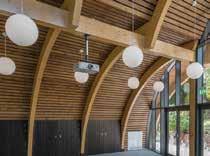


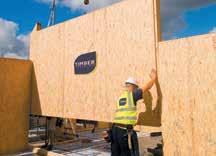




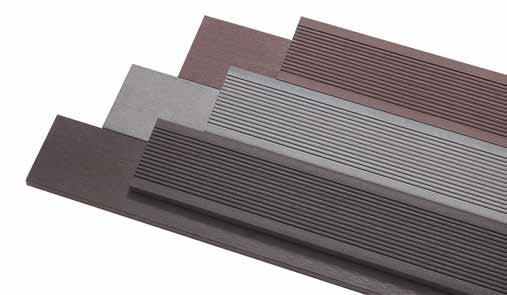


82 | Timber 2022 Timber Innovations TIMBER FRAME SIPS PASSIVHAUS, ZERO CARBON BUILDINGS & LARSEN TRUSS METAL WEB BEAMS GLULAM/OAK FLOOR & ROOF CASSETTES www.timberinnovations.co.uk Tel: 0121 314 7735 PORCHES SIPS EASI-JOIST GLULAM ROOF & FLOOR CASSETTES Leave a message on our web-site, call or e-mail: +46 31 44 86 32 sales@dynalyse.com Precigrader Approved for Douglas Fir, Larch and Spruce from UK forests Reliable grading into Cost-effective Stress Grading with Accurate in-process moisture meters www.dynalyse.com C16 C24 C27 TR26 Call sales: 01992 578877 smartboard-decking.co.uk P Low maintenance, with long lasting colour P Low potential for slip, HSE classification P Low environmental impact, 90% recycled P High density, reversible solid profile P Highly attractive, matt brushed finish

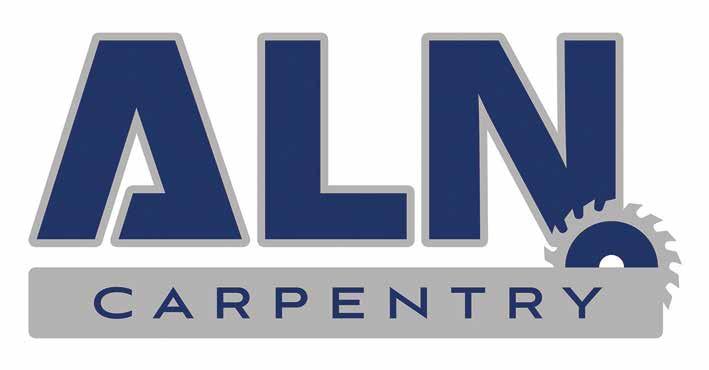
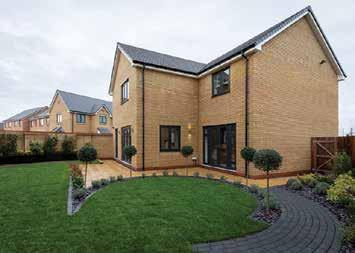



Commercial & Residential Carpentry Contractors working throughout East Anglia & the South East. www.alncarpentryandjoinery.co.uk
CLT for private residential projects
Cross-laminated timber (CLT) is an ideal solution for one-off residential projects, offering scope for design and innovation in one structural package. Lee Murphy talks to three architects about their recent CLT projects.

84 | Timber 2022
Lammasfield Farm.
Photo: Micah Jones
Timber structures Engineered timber
Many smaller architectural practices working predominantly in the private residential sector may not be aware that CLT is an option when they’re designing smaller scale, one-off private dwellings, extensions or garden buildings. Yet CLT is eminently suitable for these types of residential projects, resulting in beautifully designed and crafted, low embodied carbon, energy-efficient homes.
There is also a perception that building with CLT will be costly, whereas costs tend to be upfront and will generally be recouped through the speed and ease with which a building is installed and watertight once on site.
Here, three architects who worked with G-frame Structures to deliver their first CLT residential projects give advice to other architects interested in using CLT for the first time.
Lammasfield Farm
Micah Jones is an architect based in Northern Ireland who featured on Grand Designs in 2016 when he designed and built his own multi-award-winning, low-budget family home, County Down Barn, from CLT. He is currently on site with his second CLT project, Lammasfield Farm, which is due for completion in 2022.

‘The more forward planning you do with CLT the better, as this will allow you to design to the material’s full potential. The fundamental thing is to work with an established CLT contractor like G-frame; if you’ve never worked with CLT before you’d want to engage your specialist from a really early stage, even as early as conceptual level, to make sure everything is going to work.
‘We have been able to apply a lot of what we learned from our first CLT project to Lammasfield Farm as both projects have a CLT upper floor built above an existing concrete ground floor. CLT is a great solution for building above an existing structure because it is lightweight and fast, but a key consideration is airtightness at the connection between the new and existing parts of the building. Not getting this quite right on County Down Barn enabled us to learn and improve detailing for Lammasfield Farm. We also learned the value of doing a full M&E design before getting to planning stage and having it pre-machined at the factory, which makes the installation on site a lot easier. >>
Timber 2022 | 85 www.bmtrada.com
“CLT is a great solution for building above an existing structure because it is lightweight and fast, but a key consideration is airtightness at the connection between the new and existing parts of the building.”
Timber structures
Engineered timber
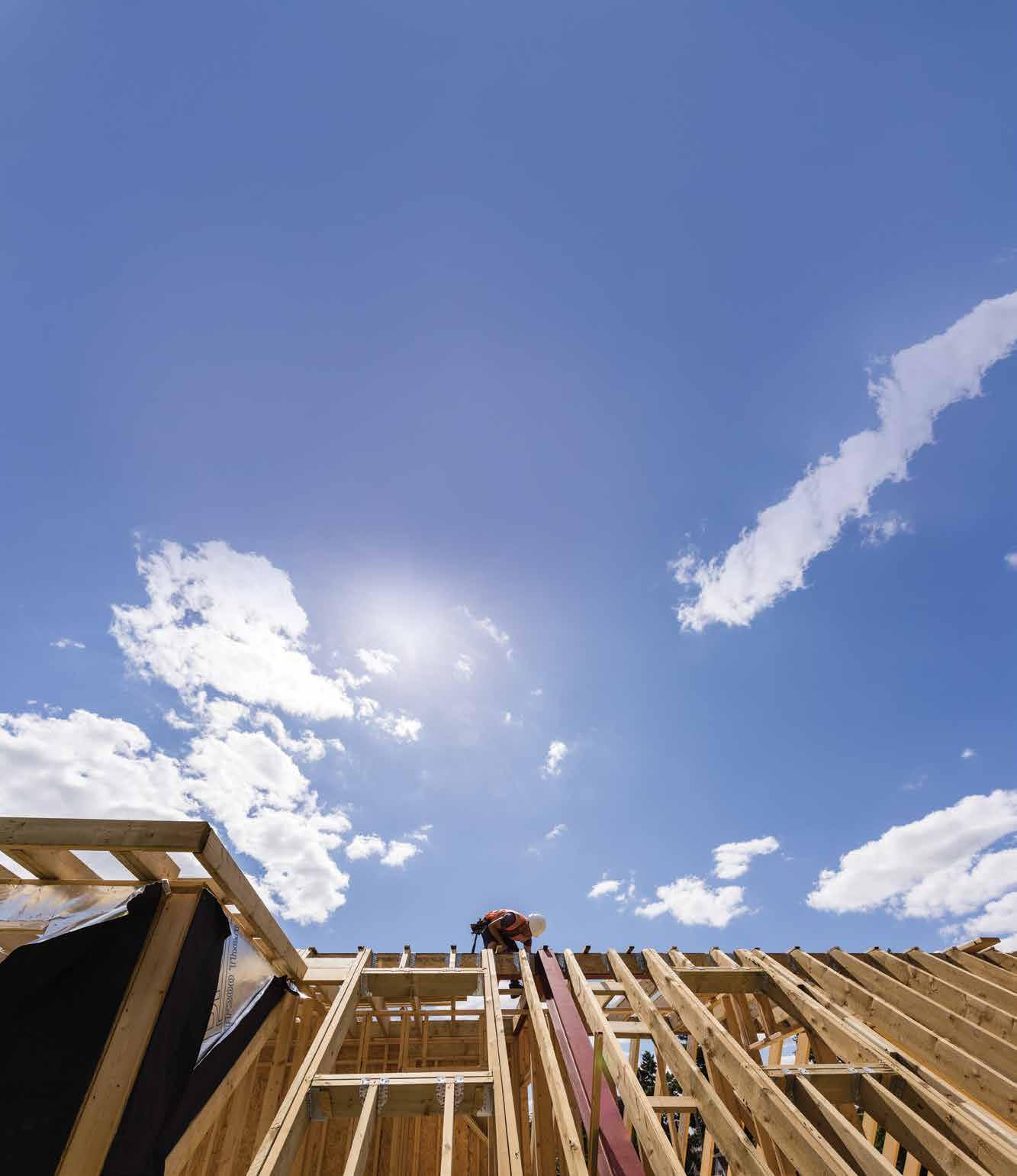




‘CLT brings everything together in one product: in addition to providing the superstructure of a building, it opens opportunities for design, aesthetics and minimising carbon footprint. This is an important factor for clients in the residential sector who are becoming more aware and are interested in paying a little more to achieve a low impact home.’
The Gatehouse
Alessio Cuozzo is a founding partner of London-based Cuozzo Fleming Architects who are currently on site with their first CLT project, The Gatehouse – a four-bedroom, wheelchairaccessible dwelling that sits within a stretch of protected ancient woodland on Sydenham Hill, South London. It forms part of the overall redevelopment of Beltwood House, a Grade II listed Victorian villa.
‘CLT suited the nature of the design of The Gatehouse, which has a simple plan of two squares with steeply pitched roofs, and this provided us with a good opportunity to try CLT at a scale that we could control, in order to avoid any visual structure between the roof planes.

‘One of the reasons we decided to use CLT was its speed and ease of construction: our client chose to self-build The Gatehouse and CLT enabled us to take some weight off his shoulders as the superstructure was being manufactured off-site with windows and doors pre-cut and then installed by G-frame.
‘Using CLT has given us the experience to understand its capabilities and be more innovative and ambitious on the next project. My advice to any architects thinking about using CLT for the first time would be to give it a go on something small that you’re comfortable trying it on and not to worry about the material being too big and too complex for your project. Try making a card model and scale it up; it will take away some of the mystique and you’ll be pleasantly surprised how simple the process is – if you can make it in cardboard, you can effectively make it in CLT.’
Origami House
Matt Keeler of KSKa Architects also began his first CLT project by creating a traditional card model when he designed Origami House, a unique folded plate origami structure that provides a one-bedroom family annex in the rear garden of a listed house in a West London conservation area.

‘Planning constraints around height meant we needed to keep the build-up as thin as possible. We were replacing an existing, dilapidated garden building and wanted something with dynamic visual strength to complement the site locality next to a church hall building. CLT was absolutely the right choice for the folded plate form of the building, which, though small, demonstrates CLT’s structural properties to its limits.
‘We started by building a model out of cardboard and as soon as we connected the triangles together, we felt it take on the characteristic strength of an origami form. To achieve the roof form, which is made of triangular shapes, we had to look at dimensional shapes and capabilities of the CLT, but it was not that challenging for us to massage the designs to meet the constraints that the material has in terms of panel sizes. >>
Timber 2022 | 87 www.bmtrada.com
Timber structures
Engineered timber
Lammasfield Farm CLT detail. Drawing: Micah Jones
Origami House. Photo: Agnese Sanvito
Engineered Timber Solutions

Please
RAPID 5 WORKING DAY LEAD TIME EXCELLENT CUSTOMER SERVICE COMPETITIVE PRICES HIGHLY ADVANCED MANUFACTURING

We provide our customers a complete package, not only do we design, manufacture and deliver the timberframe structure, but we also supply the windows, external doors, internal door sets,stairs, architrave, skirtings, finishings insulation, plasterboard and a whole lot more.



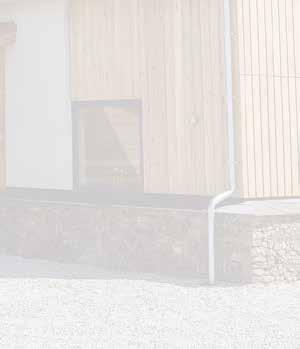

Scotframe Offices Sales & Manufacturing

Inverurie
Tel: 01467 624440
Cumbernauld
Tel: 01236 861200 www.scotframe.co.uk
Regional Sales Offices
Inverness
Tel: 01463 717328
Dundee
Tel: 01382 561772
Swindon
Tel: 01793 234503
Manchester
Tel: 0161 667 0225
88 | Timber 2022
Telford Tel: 01952 455837 quote TradaETS10 for 10% OFF your first order. T&Cs apply.
Roof Trusses & Engineered Metal Web Joists
‘I did a lot of research about CLT, particularly by consulting people who had used it before. We also visited a project with G-frame and that was illuminating. One of the biggest benefits of CLT is that you’re pre-determining things and sticking to the plan, so you need to understand the speed at which it goes up and you have to make sure the contractor understands this too because they must be ready with the follow-on very quickly.
‘CLT is a beautiful material to work with and the staggering thing is the level of precision and that it can be installed with such a small workforce, but it is essential to use a CLT specialist from the early stages for planning, organisation and expertise. The CLT supply chain is very streamlined.’
Summary
The resounding message from architects who have used CLT for the first time is to give it a go on something smaller, and make sure you’re working with a reputable CLT specialist from the early design stage. n
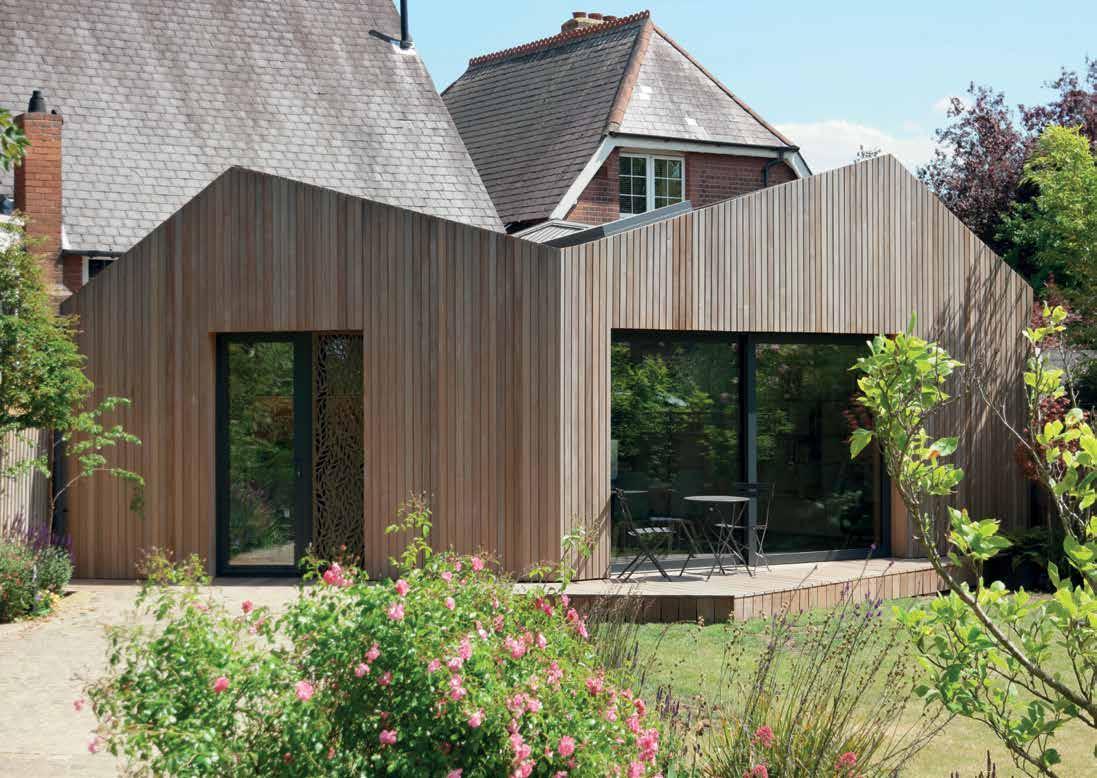
About the author
Lee Murphy Director G-frame Structures
Further information
To find out more about these projects, visit www.g-frame.co.uk
Further reading
• Cross-laminated timber: design and performance, ISBN 978-1-909594-63-0, BM TRADA, 2019
• WIS 2/3-61
Cross-laminated timber: introduction for specifiers, BM TRADA, 2019

• WIS 2/3-62
Cross-laminated timber: structural principles, BM TRADA, 2020
Timber 2022 | 89 www.bmtrada.com
Timber structures Engineered timber
Origami House exterior. Photo: Agnese Sanvito
ZÜBLIN Timber | Our Inspired Projects
‘HOUSE IN A GARDEN’, NOTTING HILL
The ‘House In A Garden’ from Gianni Botsford Architects is a highly unusual dwelling.
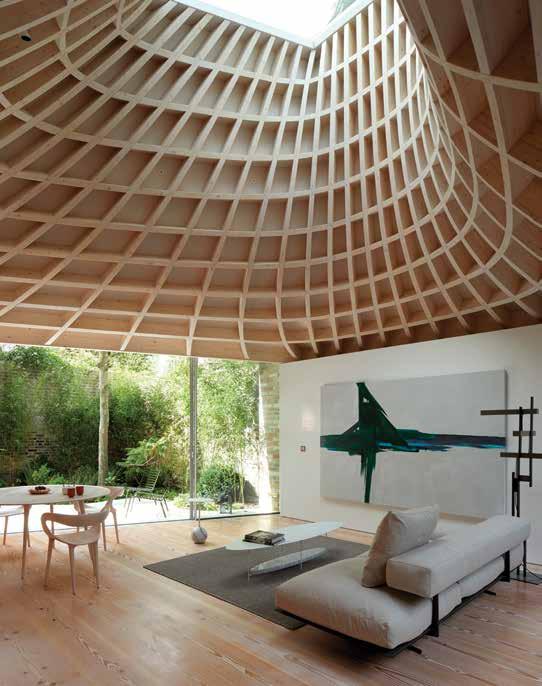
Inside, the roof comprises of a complex glulam timber structure made from spruce, with its double curvature concluding in a glazed oculus. Each individual and unique piece of the timber roof structure was prefabricated before being erected on-site by ZÜBLIN Timber.
STROUD CHAPEL
Stroud Chapel is a new building using Cross Laminated Timber Panels (CLT) and glulam as the structural material. The timber frame is exposed internally as a feature of the chapel space and uses an innovative ‘folded plate’ technique for the roof construction.
The construction has been designed using Finite Element software to quantify the inherent stiffness in the two-way spanning panel and composite action with the glulam rib stiffeners. ZÜBLIN Timber scope of works included the detail design, manufacturing and installation of the timber frame.

ZÜBLIN TIMBER | COMPANY PROFILE
No matter if your project is a multi-storey building, a geometrically complex structure or a building (timber glass) facade – ZÜBLIN Timber is your partner to realise your vision in timber.
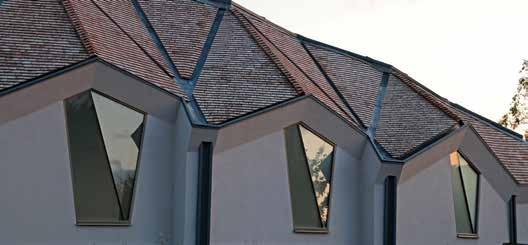
Design & Build - hand in hand with local project teams of architects and engineers ZÜBLIN Timber develop, design, produce and build timber solutions with 100% passion for your project.
LONDON AQUATICS CENTRE

With distinctive architecture from Zaha Hadid Architects, the London Aquatics Centre was constructed initially for the 2012 Olympic Games. Its 160m-long curved roof was inspired by the fluid geometry of water in motion, with its soffit made from 37,000 individual red louro timber strips.
Offsite Production - direct access to own modern production facilities ensures flexible and individual manufacturing of a high variety of timber components like CLT, glulam and timber facades. Key benefit of inhouse production is to deliver your project in time and budget.
Installation - using decades of experience in project management, project execution and the assembly of timber structures, ZÜBLIN Timber teams are able to guarantee clients a reliable, high-quality construction process.
www.zueblin-timber.com
01
04
IMAGES: 01. Edmund Sumner 02. Nicolas Pople 03. Corbett & Tasker 04. Hufton+Crow
ZÜBLIN Timber stands for ambitious and pioneered solutions in the field of timber construction. We are your single-source provider for the development, production, delivery and execution of high-quality timber construction systems, from simple to complex engineered timber structures, façades and turnkey project execution. Together with our clients we develop efficient solutions and a sustainable quality of life. www.zueblin-timber.com

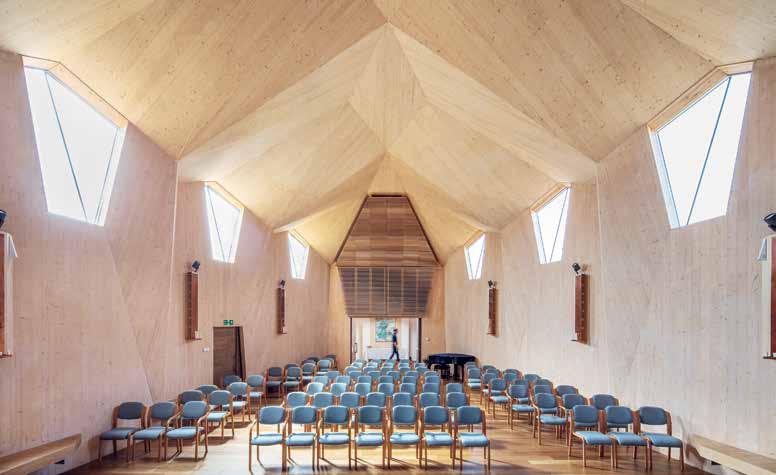

Gare Maritime Brussels, © Maxime Vermeulen
ZÜBLIN Timber, a “Stroud Chapel” project partner. & Tasker
Stroud Chapel, ©
Corbett
ZÜBLIN Timber, Industriestr. 2, 86551 Aichach/Germany, Tel. +49 8251 908-0, timber@zueblin.de
Timber Construction Competence
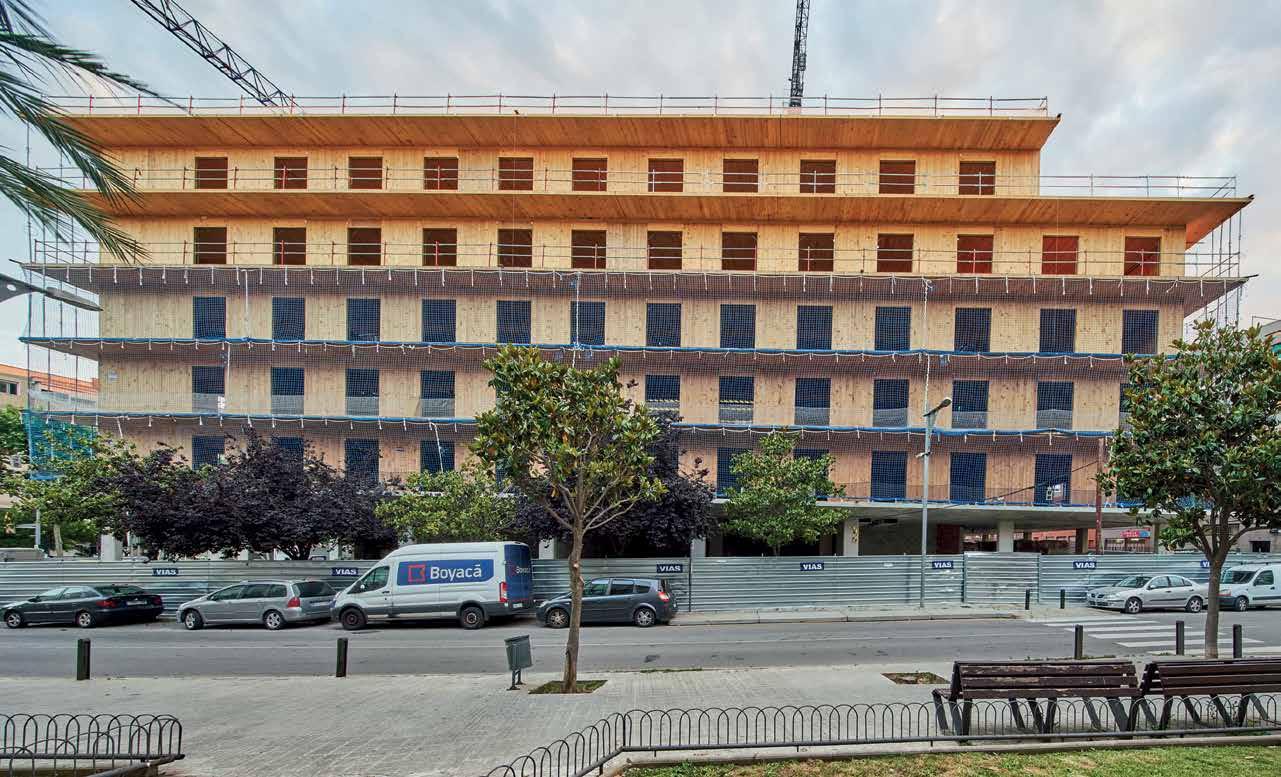

Moisture dynamics: the durability of CLT
Lewis Taylor summarises the findings from research on moisture dynamics in CLT by BM TRADA and Stora Enso.
Over the past 15 years there has been much talk about cross-laminated timber (CLT) and how this construction material has enabled designers to create taller, longer, wider and more elaborate timber buildings than had previously been possible. CLT has also provided new and exciting opportunities for low/negative carbon and sustainable buildings.
CLT has really taken off in the past decade with projects ranging from small houses, medium-rise residential, large school and university buildings to vast commercial office spaces. As with all ‘new’ construction materials, there has been a learning curve, with the industry’s understanding of CLT’s strengths and weaknesses evolving over time. One of the most common areas of debate with CLT is durability (and by extension, moisture).
Providing timber and wood-based products remain dry, they will have an almost indefinite life expectancy – modern lightweight timber frame buildings have nearly 100 years of use in the UK, with more mainstream use extending back 60 years. In addition, a large proportion of the UK housing stock has timber pitched roofs, many of which are centuries old. As a result, we now have a good understanding of how these lightweight timber structures behave, and how to design and detail them to achieve a long service life.
Moisture content
Timber is at risk of the development of fungal decay if its moisture content exceeds 20% for an extended period of time. In a well-designed and constructed timber frame building or pitched roof, moisture content in service will be between 10% and 14% – well below the fungal decay threshold.
While CLT follows the same durability principles as lightweight timber structures, its thickness and the mass of timber used present additional considerations when exposed to moisture. Timber studs, joists and rafters have a relatively large surface area to volume ratio and so typically dry rapidly when conditions allow. CLT has a much smaller surface area to volume ratio and so drying rates can be substantially slower.
Thermal insulation
CLT external walls and roofs should always be designed as ‘warm’ construction, i.e. all thermal insulation is placed on the outside face of the wall or roof panel. By placing the CLT panels within the thermal envelope of the building, panels are in what should normally be a warm and dry environment – ideal for timber durability.
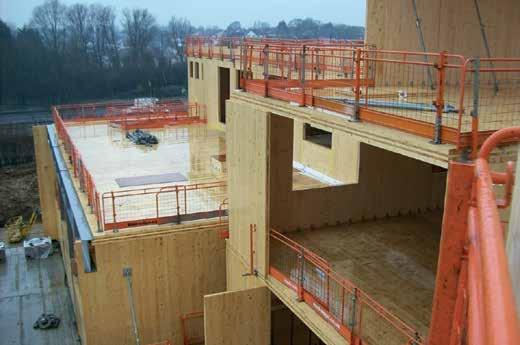
In the UK, the most common insulation material to be placed on the outside of CLT has been rigid foil-faced insulation boards (e.g. PIR/PUR/phenolic) installed to walls, flat roofs and pitched roofs. While these insulation materials have excellent thermal resistance and so provide good U-values for a given thickness, the foil facings limit the ability for the CLT panels behind to dry to the outside. Historically it was assumed that any wetting to the CLT panels (either through trapped construction moisture or cladding leaks/water ingress in service) would be able to dry through the panel to the inside of the building.
Moisture dynamics research
BM TRADA has been undertaking research work on moisture dynamics in CLT with Stora Enso, a leading global supplier of wood products including CLT. The two-part project looked at both wetting risk during construction and drying rates. This enables us to determine moisture distribution behaviour. >>
Timber 2022 | 93 www.bmtrada.com
CLT drying rates can affect durability
Timber structures Engineered timber
Award winning mass timber and hybrid structures
G-frame Structures is a family run construction firm specialising in the delivery of Cross Laminated Timber, glulam and hybrid frames. Our award winning projects range from rooftop extensions, small projects and bespoke private homes to multi-storey residential, educational and workspace buildings. Our parent company is a specialist in groundworks, formwork, rebar and concrete which enables us to deliver a unique hybrid mass timber, concrete and steel package. This unified approach simplifies the procurement route and achieves programme efficiencies in terms of speed, accuracy and overall project co-ordination.

01525 288022 | office@g-frame.co.uk | www.g-frame.co.uk
In the second phase of the research, the drying rates of fivelayer, 100mm-thick CLT panels were investigated; various configurations were tested, including covering the wet outer face of panels with foil to replicate panels covered with rigid foil-faced insulation boards and/or vapour control layers. This test set-up was intended to replicate typical UK construction build-ups for warm walls as well as flat and pitched roofs.
During testing of the covered panels, water in the wet outside face lamination was observed slowly passing through the thickness of the panels to the dry uncovered side, confirming the previously held assertion that panels could dry to the inside. However, with a starting moisture content of 35% in the wet outer lamination, it took almost 16 months for the moisture content to fall to 20%; with higher moisture contents and/or thicker panels, drying could potentially take years. Conversely, uncovered panels that were able to dry directly from the wet face took approximately six weeks for a similar moisture content reduction.
Long-term durability
A primary consideration to achieve long-term durability of timber structures is to provide a combination of drainage, ventilation and breathability. It is not normally an issue if timber gets wet, providing water can drain away quickly and the timber is subsequently allowed to dry. Slowing down or restricting drying though the use of high resistance insulation products and/or vapour control layers on the inner or outer faces of the panels can slow drying to an extent that the development of fungal decay may become a risk if panels are subjected to adverse conditions during construction or in service.
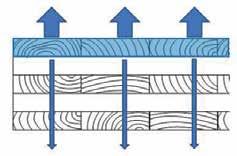

On the continent, CLT building systems are often paired with mineral wool or wood-fibre insulation products – these types of breathable insulation material are typically beneficial to timber building systems as they allow more rapid drying of the CLT panels if they are exposed to wetting during construction or in service. Figures 2 and 3 show example wall and pitched roof build-ups using mineral fibre insulation products – similar details can be used with wood-fibre insulation boards.
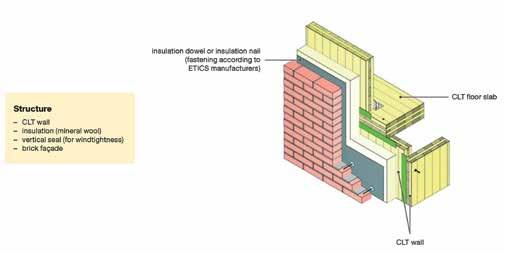
The use of these types of breathable insulation products, in conjunction with good overall design detailing and a moisture management plan for the construction phase, will have a significant positive impact on the long-term durability and robustness of CLT structures. n
About the author
Lewis Taylor Senior Timber Frame Consultant BM TRADA

Further information
Further information on this research will be published in 2022. More detailed guidance can be obtained from either BM TRADA or Stora Enso.
Further reading
• Cross-laminated timber: Design and performance, Revised reprint, ISBN 978-1-909594-63-0, BM TRADA, 2019
• WIS 2/3-61 Cross-laminated timber: introduction for specifiers, BM TRADA, 2019
• WIS 2/3-62 Cross-laminated timber: structural principles, BM TRADA, 2020
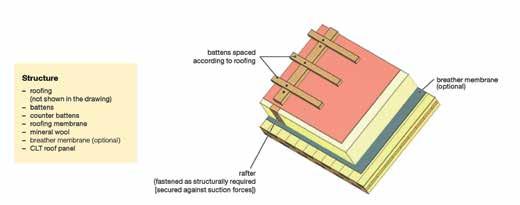
Timber 2022 | 95 www.bmtrada.com
Figure 1: The drying mechanism of five-layer, 100mm-thick CLT panels with (left) and without (right) foil coverings
Figure 3: CLT pitched roof panel with mineral fibre insulation product.
Source: Stora Enso
Figure 2: CLT wall with mineral fibre insulation product. Source: Stora Enso
Timber structures
Engineered timber
Understanding how to protect timber
Kevin Underwood explores the external factors that can have a negative effect on timber and ways that timber can be protected.

96 | Timber 2022
External timber should be protected to offer the best service life.
Protection
Photo: George Barnsdale
Preservation
Timber is an abundant, inherently non-toxic, recyclable, biodegradable, sustainable material. However, it does not come without its natural enemies.
Timber is at risk of attack by some fungi and insects that can affect its appearance, strength and long-term performance as a construction material. Employing protective measures allows us to:
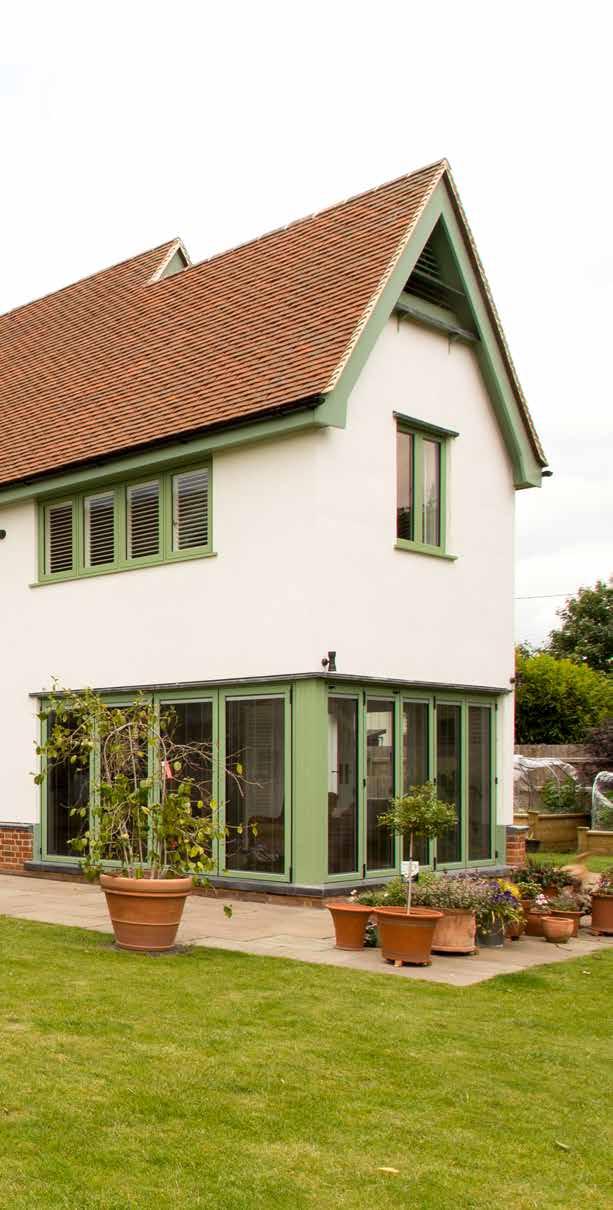
• increase its service life
• improve its characteristics
• make it more competitive against other materials.
Classifying wood
Timber is essentially composed of hollow fibres of cellulose, set in a matrix of lignin with discreet chemical extractives and moisture. This ligno-cellulosoic arrangement of components varies, creating a wide range of timber species, each with different appearances and performance characteristics.
Extractives give timber species their colour, smell and their level of natural resistance to attack by fungi and insects. Resistance to fungal or insect attack varies between species.
The inner heartwood contains extractives, but the outer sapwood, which is extractive free, is rich in starches and sugars; this limits the natural resistance of all sapwood to fungi and insects, should the conditions for attack be favourable.
BS EN 350:2016 1 gives guidance on methods for determining and classifying the durability of wood and wood-based materials against biological wooddestroying agents such as wood decay fungi. Annex B of BS EN 335:2013 2 defines five use classes that represent different service situations to which wood and wood-based products can be exposed, and indicates the biological agents relevant to each situation.
A use class is not a performance class and does not give guidance for how long wood and wood-based product will last in service. >>
Timber 2022 | 97 www.bmtrada.com
Protection
“Timber systems will benefit the most from high levels of protection from precipitation, wind and direct sunshine, for example windows and doors seated under deep eaves or recessed into walls or sheltered by balconies.”
Preservation



















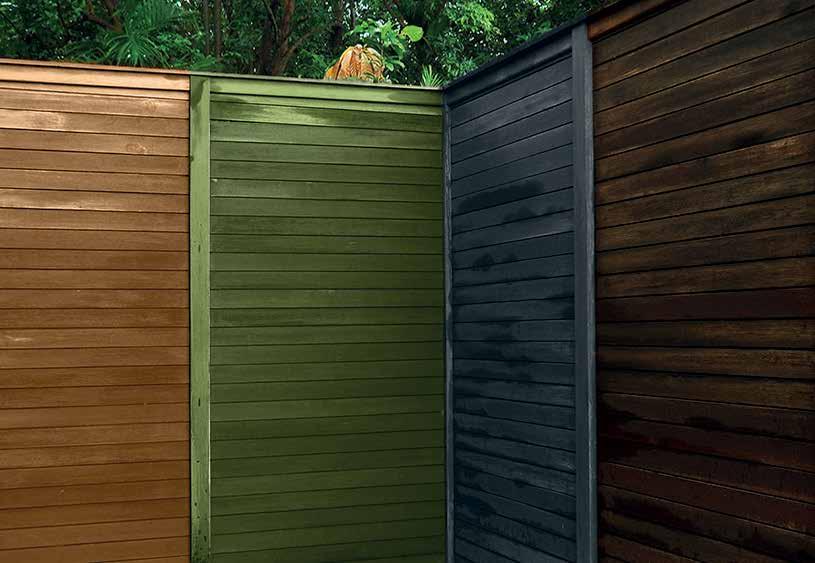



FOR MORE INFORMATION by Appointment to Her Majesty The Queen Manufacturers Of Wood Preservatives Protim Solignum Ltd Marlow, Buckinghamshire Protim Solignum Limited trading as Koppers Performance Chemicals. Koppers is a registered Trademark of Koppers Delaware, Inc. Whilst every attempt has been made to ensure the accuracy and reliability of the information contained in this document, Protim Solignum Limited gives no undertaking to that effect and no responsibility can be accepted for reliance on this information. Information will be updated when the need arises. Please ensure you have an up to date copy. All products are produced by independently owned and operated wood processing facilities. All other trademarks are trademarks of their respective owners. Koppers Performance Chemicals, Protim Solignum Limited, Fieldhouse Lane, Marlow, Buckinghamshire, SL7 1LS. Visit: www.kopperspc.eu, Email: kpc@koppers.eu, Call: +44 (0)1628 486644, Fax: +44 (0)1628 476757. Registered in England 3037845. © Copyright 2018. Visit: www.kopperspc.eu Email: kpc@koppers.eu Call: +44 (0)1628 486644 Fax: +44 (0)1628 476757 Protim Solignum Limited, Fieldhouse Lane Marlow, Buckinghamshire SL7 1LS Celcure FirePro Fire-X Aquatan Protim DELIVERING HIGH QUALITY TIMBER SOLUTIONS FOR DECADES The world leader in timber preservation technology
Wood shrinks to varying degrees along the three dimensional axes: very little along the grain and much more across the grain. The shrinkage in the direction of the growth rings (tangentially) is often up to double that at right angles to them (radially). As a result of this, and of irregular, interlocked or spiral grain, various forms of distortion are liable to occur as the piece of timber dries.
It is desirable that all the shrinkage and distortion has occurred before the timber is put to use and this is one reason why timber should be dried before it is used.
The table above, taken from WIS 2/3-71, 3 shows the relationship between use class and natural durability.

Moisture in timber
Wood has a cellular structure and the moisture in green, unseasoned timber is present in two forms:
• as free moisture in the cell spaces
• as bound moisture in the cell walls.
In drying, the free moisture in the cell spaces is the first to leave the wood, moving to the surfaces and evaporating. With further drying, the bound water leaves the cell walls and the wood starts to shrink and stress and distortion can develop.
The point at which the cells no longer contain free moisture is called the fibre saturation point and, from this stage of drying, if the wood fibres are free from constraint they will shrink to an extent that is roughly proportional to the loss in the bound moisture. In practice, the surface layers of any piece of timber tend to dry to the fibre saturation point before the centre and are brought into a state of tension. If the moisture gradient from the centre to the surface is too steep, splitting and checking may occur.
Fungi
Fungi can discolour timber, cause decay and reduce its strength. They are a form of plant life and require moisture, warmth, air and a suitable medium on which to grow. Unlike green plants fungi do not require light as they lack chlorophyll and are unable to build up organic matter from the carbon dioxide in the atmosphere. Fungi must have organic matter on which to live so they grow directly on living plants or on their dead remains. They cannot live on purely mineral soil.
Fungi decompose wood by secreting acids and enzymes, which, in the presence of moisture, render soluble some of the cellulose and other constituents of the wood. These are then used as nutrients by the fungus. The wood may be changed in composition and texture and lose strength before it is actually absorbed by the fungus.
The characteristic that usually determines whether timber in use remains sound or becomes decayed is its moisture content. Freshly felled green timber may contain its own weight of water and, unless this moisture is removed, decay can quickly become established. If dry timber is allowed to pick up moisture, or if it is used in contact with the soil, it again becomes susceptible to attack.
Fungi require air and respire to form carbon dioxide and water so, once an attack is established, the wood tends to get moister, accelerating the growth of the fungus.
In general, timber is susceptible to attack at any moisture content between fibre saturation point and complete saturation of the wood, which is when the cell cavities are filled with water.
Moisture content greater than 25% is required for active sapstain development, whereas surface mould growth can >>
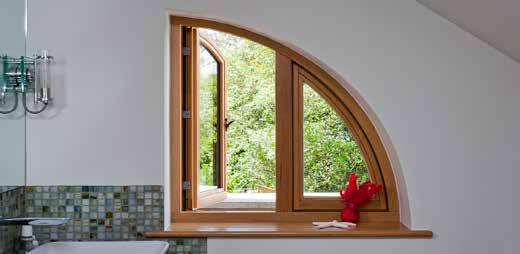
Timber 2022 | 99 www.bmtrada.com
Protection Preservation
Timber window. Photo: George Barnsdale
Table 1: Natural durability of commonly used structural timbers according to BS EN 350.
Impra Wood Protection
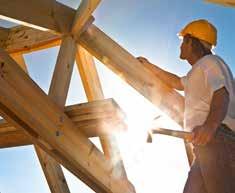

Impra Wood Protection is the trading name for RÜTGERS Organics GmbH which is part of the ICIG, a group of companies based in Frankfurt, Germany. Within the ICI Group there are 30 chemical and pharmaceutical companies operating worldwide, turning over circa €2bn and having approximately 6,000 employees.
The Impra Wood Protection manufactures at two locations in Europe at Mannheim in Germany and Barrow in Furness in the United Kingdom. Within the group there are also distribution companies in Germany, Finland and Poland with many more partners worldwide. We believe with our diverse manufacturing capabilities and having plants in both the UK and Germany we have a business model to suit all businesses throughout Europe and the UK.
Impra Wood Protection prides itself on a high level of research and development, which helps to keep the products and services at a high level meeting and exceeding the requirements of some of the most difficult applications within the timber industry, with products that have performed exceptionally in the past and will continue to do so well into the future. Impra Wood Protection works closely with its clients and approval authorities throughout the UK to stay ahead of the competition by providing solutions, which will keep its clients at the forefront of their markets, thus giving them many advantages over their competitors.
Impra Wood Protection has two distinctive product ranges for both Wood Treatment and Coatings.


The impra®lit range is made up of products that are suitable for either vacuum pressure impregnation, dipping and low pressure impregnation, protect against blue stain and mould with the addition of a large range of colourants. impra®lan and profilan® are a range of Wood Coatings for either industrial or professional use and are either solvent or water based depending on the application. These are available in a range of sizes and many different colours and can be applied by either dipping, flow coating or brushing.

Impra
Protection Limited Park Road Industrial Estate / Barrow in Furness Cumbria LA14 4EQ / United Kingdom info@impra.co.uk / +44 84 4800 9665 impra.co.uk
Wood
become established at approximately 18%. Both sap-stain and fungi feed on cell contents and stored food reserves in the timber (i.e. starches and sugars), and are therefore generally confined to sapwood. If high relative humidity persists and moisture content increases, sap-stain or mould growth can thrive and cause deterioration of protective coatings in service. The wood-destroying wet-rot and dry-rot fungi can develop when the moisture content of the timber is above 20%.
The first line of defence is to keep timber moisture content below 20%. In timber used externally above ground, this can be achieved by ensuring the design of a product:

• does not include water traps
• promotes the shedding of rainwater to minimise wetting
• promotes air movement.
Timber used internally is unlikely to reach this level of moisture content unless the timber is affected by water from, for example, a leaking pipe or roof. The spores of wood-decaying fungi (such as wet-rot and dry-rot) or staining fungi (such as sap-stain, blue stain and surface mould) are so widespread that preventing contact with these spores is not possible.
A long service life for timber in an environment suitable for fungal development depends on the level of natural durability of the timber species used or the effectiveness of any preservation treatment that has been employed.

Insects
Timber can become unserviceable due to the natural activity of insects, which tunnel into and devour the timber. However, with our relatively cold climate, timber in outdoor environments in the UK is very rarely affected by insect pests; their variety and veracity are not as great as that seen in warmer parts of the world.
Where insect attack is a concern, preservative treatment with a contact insecticide provides a practical preventative measure.
Preservative treatment
Where timber is susceptible to fungal decay or insect attack, it can be treated with a wood preservative. The process of selecting both the type of preservative and its method of application takes into account:
• the natural durability and treatability of the timber species
• the level of exposure to moisture
• the desired service life
• the organisms against which the preservative is to provide protection.
Modified wood
It is possible to alter the chemical and structural properties of wood to enhance its natural durability and to reduce the amount of movement that may occur due to variations in moisture content. Changing the structure of wood and/or limiting the availability of nutrients reduces or prevents fungal development and insect attack.
Timber modification processes include:
• heat treatment
• impregnation of timber with resin
• acetylation.
These processes essentially create a new timber product with enhanced durability and dimensional stability. These relatively new technologies provide a wider choice of material for designers and architects to consider – popular for cladding, decking, windows, external doors, landscaping and structural applications.
Protection from coatings
Well-maintained brush or spray-applied paints and stains can extend the service life and use of timber in outdoor conditions. These surface coatings enhance the appearance of the wood and protect it from deterioration as a result of weathering. >>
Timber 2022 | 101 www.bmtrada.com
UV and moisture levels can affect the durability of timber. Photo: AkzoNobel
Protection Preservation
Cladding is often treated with a wood preservative. Photo: AkzoNobel
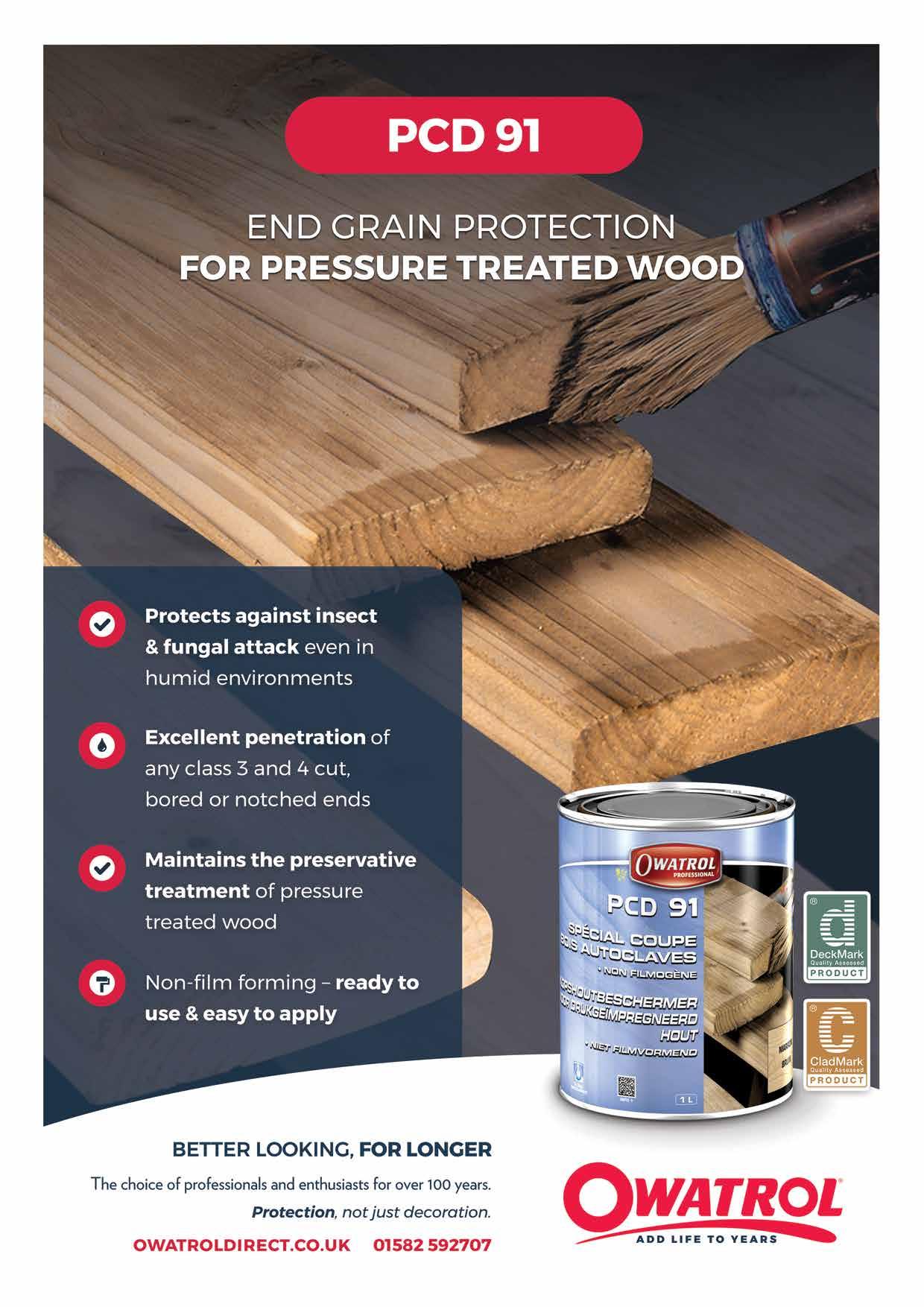
By limiting the take up of moisture, protective coatings can also limit dimensional changes in the wood and protect against stain fungi and surface moulds.
While providing protection to the timber, coatings themselves are at risk and need to have properties that make them resistant to ultraviolet light and any airborne chemicals present in rainfall or dew forming on the surface. They also need to be able to accommodate any movement in the timber.
Temperature affects the rate of chemical reactions, and this is influenced by the colour of the coating, the angle of exposure and other factors such as the specific heat and mass of the coated timber and ventilation due to air movement.
Direction of exposure
Levels of solar radiation, humidity, temperature and precipitation can vary considerably and will greatly influence the performance of a coated timber system. The impact of these factors is determined by the direction of exposure.
In the UK, south- and west-facing elevations are generally more demanding for coatings, due to their longer hours of exposure to direct and stronger sunlight than east- and northfacing elevations; the risks of mould and algae growth will generally be highest on north-facing walls. The use of darker coatings, which absorb more solar radiation, and become hotter, can exacerbate this effect.
Shelter
In practice, exposure conditions will depend not only on climate but also on the degree of shelter offered by the construction.
Timber systems will benefit the most from high levels of protection from precipitation, wind and direct sunshine, for example windows and doors seated under deep eaves or recessed into walls or sheltered by balconies.
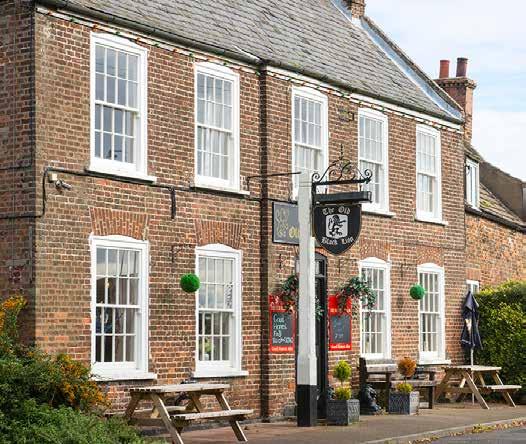
The inclination of the surface is also important. Decreasing the angle of exposure from vertical towards horizontal greatly increases the intensity of weathering for sheltered as well as less-sheltered parts.
Sustainability
The preservation of timber allows the specification of softwood species with lower natural resistance to fungi, as well as all sapwood, where these might otherwise not be used or offer only a very short service life outdoors. Making the most of the timber resource and contributing to waste minimisation and sustainability is imperative to retaining timber as a viable and easily obtained building material. In addition, this reduces pressure on the more naturally durable, scarcer and higher value species. n
About the author
Kevin Underwood Technical Director British Woodworking Federation

References
1. BS EN 350:2016 Durability of wood and wood-based products. Testing and classification of the durability to biological agents of wood and wood-based materials, BSI, 2016
2. BS EN 335:2013 Durability of wood and wood-based products. Use classes: definitions, application to solid wood and wood-based products, BSI, 2013
3. WIS 2/3-71 Specifying externally exposed structural timber, BM TRADA, 2019
Further reading
• WIS 2/3-1 Finishes for external timber, BM TRADA, 2020
• WIS 2/3-16 Preservative treatment for timber – a guide to specification, BM TRADA, 2021
• WIS 2/3-32 Fungi and insect pests in timber, BM TRADA, 2021
• WIS 2/3-60 Specifying timber exposed to weathering, BM TRADA, 2021
• WIS 2/3-63 Modified wood products, BM TRADA, 2021
Timber 2022 | 103 www.bmtrada.com
Paints can protect against weathering.
Protection Preservation
Photo: George Barnsdale
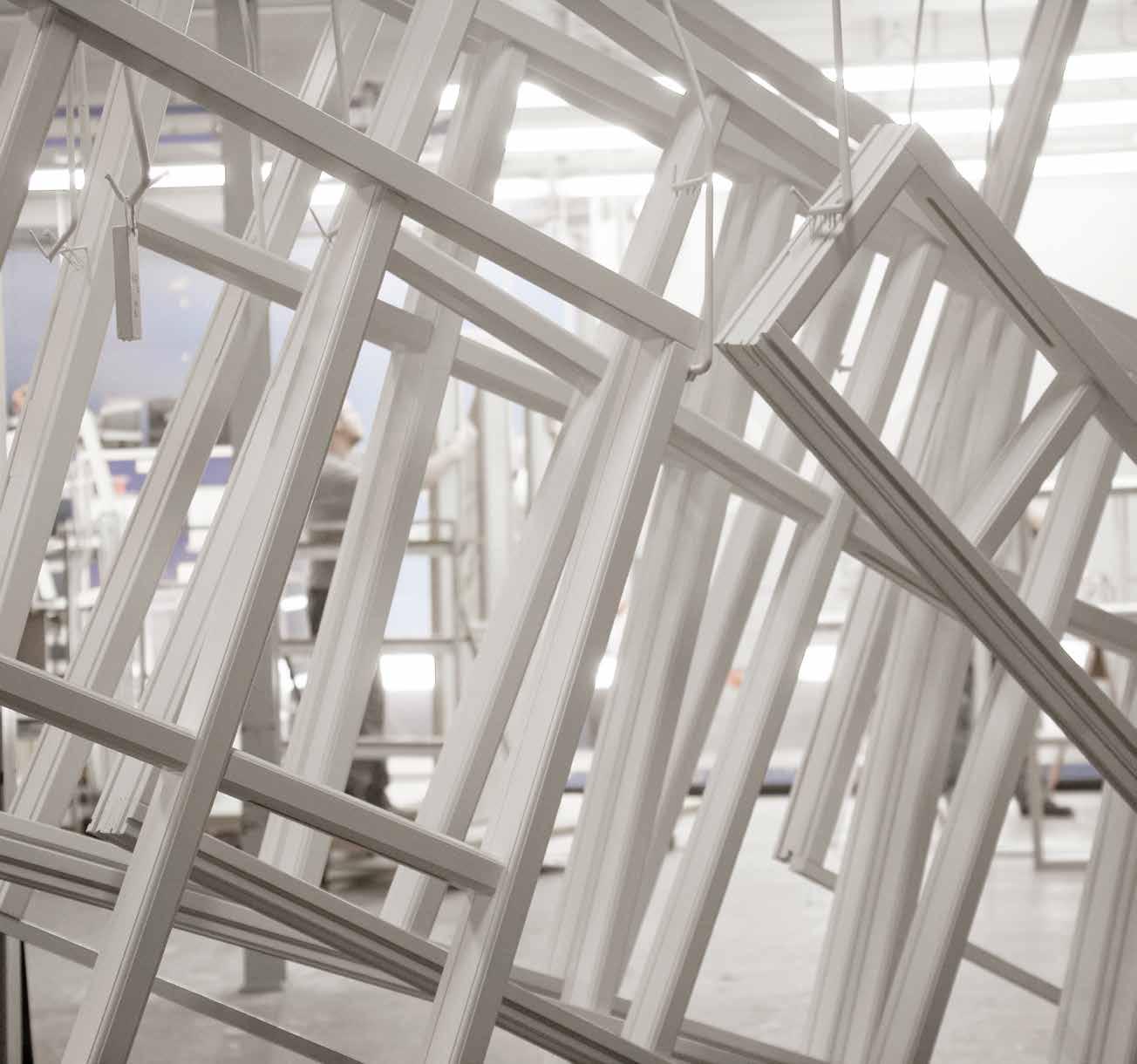



high quality, low-voc paints with sustainability at their core www.teknos.com | sales@teknos.co.uk | 01869208005 Scan here to learn more
Raising the bar on product information in the wood protection sector

The UK construction products sector is about to see a culture change on performance information with the publication of the Code for Construction Product Information (CCPI). Developed by the Construction Products Association, CCPI is in response to one of the key findings of the enquiry into the Grenfell fire, which confirmed that shortcomings in product information had contributed to the disaster. Particular concern was raised about inadequate specifier guidance, product information, marketing materials and performance testing claims.
What is the CCPI?
Covering all construction products and systems, the CCPI asks all those involved in marketing, sales, distribution
and installation of construction products to ensure that information provided to buyers is:
• clear
• unambiguous
• accurate
• up to date
• accessible.
This is so that any competent individual working with or installing the products can understand how and where to use them, how they will perform in service and the limitations of use.
For the time being, signing up to the CCPI and its associated auditing requirements will be voluntary. However, the benefits of being able to demonstrate best practice in such a vital area >>
Timber 2022 | 105 www.bmtrada.com
Protection Preservation
Gordon Ewbank explains how the new Code for Construction Product Information (CCPI) will help reinforce the drive for change in treated wood product information.
The CCPI will cover all construction products and systems.
Photo: Wood Protection Association
Fire Retardant Treatment (FireWright)
• Our Burnblock treatment is 100% natural and non toxic
• Fully CE marked process

• Tested and certified to the highest European standards: Euroclass B&C

• Large number of species possible
• Applications; cladding, walls, scaffolding, plywood and shuttering
Anti-Slip Decking (DeckWright)
• Transforms standard deck boards into fully tested and safe non-slip surfaces
• PTV score of 71, providing the perfect solution in high year areas
Specialists in timber preser vation, fire retardant treatments and anti-slip decking solutions
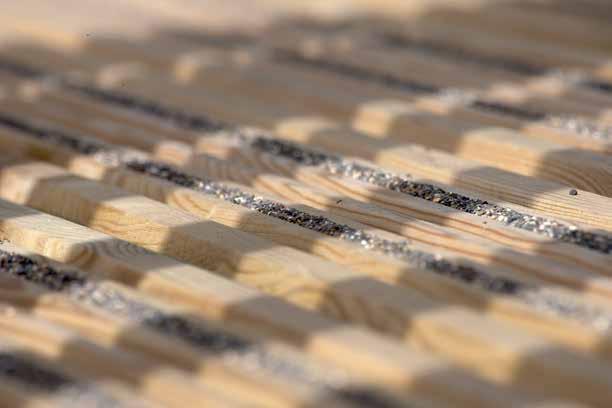
• Provided as both service where we fit to your deck boards, or as our own design decking available from stock
• 10 year warranty
Preservative Treatment (TreatWright)
• Accredited treatment and preservative service for UC2,3 & 4
• High and low pressure treatments and decorative coatings
• Timber protection from all forms of insects, wood-destroying fungi and other biological decay
• Consistently improves the durability and lifespan of timber
Sites in Hull, Rochester and Kirkburn
For more information: 01482 338 950 | info@wj-group.co.uk | wj-group.co.uk
are clear. Ensuring your company is ready to offer customers the highest levels of customer service, technical information and ethical standards of behaviour will enhance your reputation and your potential to improve sales.
How does this impact wood protection projects?
The Wood Protection Association (WPA) has been lobbying for these measures for many years and hopes the CCPI will help to tackle two key challenges for its members and trading partners:

• The safety critical issue of inadequate specifications, false claims and/or poorly performing flame-retardant products.
• The need for accurate, consistent and unambiguous specification of preservative-treated wood products.
Three practical examples of how the CCPI could work would be the avoidance of vague, ambiguous and potentially misleading terms, such as:
• ‘Garden sleepers’, which are not sleepers in the original sense of the word and will not perform to the same degree.
• ‘Green-treated wood’, where end-use application/use class is not specified, meaning that the wrong product may be supplied.
• ‘Flame-retardant-treated Far Eastern plywood’, where the precise species mix of the material is not specified and/ or there is inadequate or inappropriate supporting fire test certification data.
It is a mistake to assume that all pressure-treated wood is the same. While one piece of treated wood may look like any other, the level of preservative protection could be different. That’s because the British Standard for wood preservation, BS 8417, 1 requires that the loading and penetration of preservative impregnated into the wood is tailored to the desired end use. Applications for treated wood are therefore grouped into use classes.
The CCPI, made up of 11 clauses, aims to set the benchmark for how product information is presented and marketed by manufacturers. CCPI will help reinforce the drive for change in treated wood product information. It is recommended that manufacturers align themselves with the ethics behind the development of the CCPI and ensure they can demonstrate to customers their conformity with the principles and practices which it comprises. >>
Timber 2022 | 107 www.bmtrada.com
Protection Preservation
classes 2, 3 and 4.
Use
Source: Wood Protection Association
GIVE NEW WOOD AN AGED LOOK!!







Rubio WoodCream is a water-based cream, which makes wood water repellent after treatment. This results in a long-lasting pearl effect. Due to the cream structure, it is easy to apply, especially on vertical wood.


















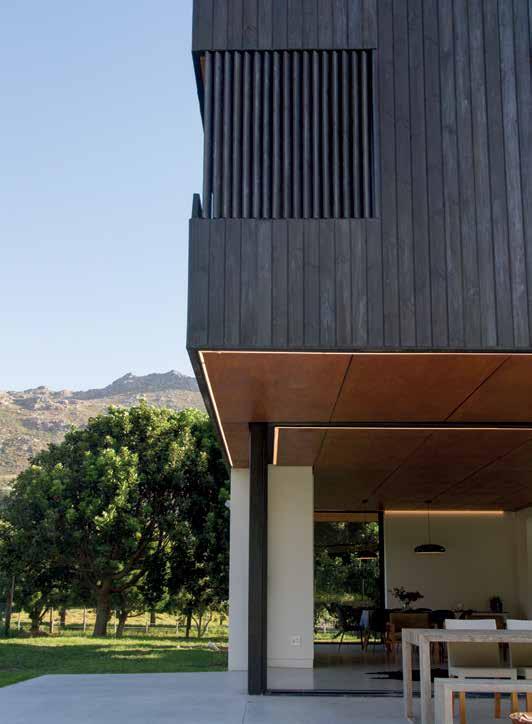

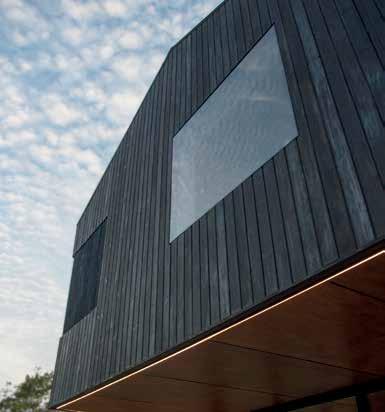
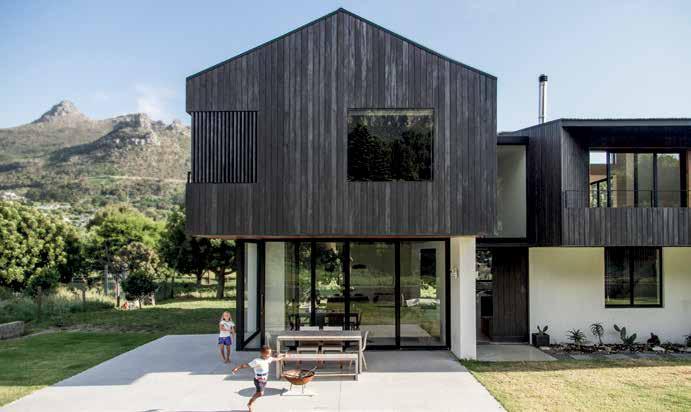
Unit 1, Purley Chase Industrial Estate, Pipers Lane, Nuneaton, CV10 0RG, +44 (0) 800 688 9661 WWW.RUBIOMONOCOAT.CO.UK
Code for Construction Product Information: 11 robust ways of working
Manufacturers of construction products who choose to sign up to the CCPI are agreeing to abide by the following requirements to give confidence to those in the supply chain using their product information. These products can therefore be relied on when making decisions about any stage of design, specification, installation, use, maintenance and disposal.
Information creation
1. Have in place a documented sign-off process for creating product information.
2. Have in place a formal version control process for all product information.
3. Do not use misleading or ambiguous wording, phrasing or imagery, and use plain English to ensure accurate representation of product information and performance claims.
Core information
4. Provide specific information where claiming compliance to, or achievement of any certification, classification or industry standard.
5. Provide verifiable information when making any product performance claims that are outside of certification, classification or industry standard tests.
6. Make available the descriptive and physical characteristics of the construction product.
7. Ensure product information is consistent with manufacturers’ supplied products.
Associated information
8. Publish and make easily accessible clear information on handling, installation, operation, maintenance and disposal of construction products.
9. Guarantees/warranties used in product information must state what is covered, excluded and required to comply with the terms. The guarantee/warranty should be transparent and in a format recognised by the relevant sector of industry.
Support and competence
10. Provide technical helpline contact details (telephone and/or email).
11. Have in place a robust training programme (for new and existing personnel) to ensure that anyone conveying product information is competent to the level of knowledge required for their role. n
About the author
Gordon Ewbank CEO Wood Protection Association (WPA)

Further information
WPA is introducing a new Training and Marketing Resources Accreditation Service. Applications will be assessed against the CCPI criteria and the broader need to support good practice throughout the supply chain. Please contact WPA for further details on how to apply for this accreditation.
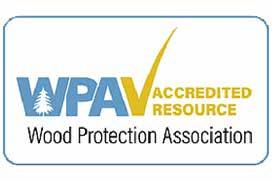
Further CCPI-related information, guidance and training resources for members’ management, sales and marketing teams are available from the WPA. See www.thewpa.org.uk/ resources-for-treated-wood
Further reading
• WIS 2/3-3 Flame-retardant treatments for timber products, BM TRADA, 2019
• WIS 2/3-16 Preservative treatment for timber – a guide to specification, BM TRADA, 2021
References
1. BS 8417:2011+A1:2014 Preservation of wood. Code of practice, BSI
Timber 2022 | 109 www.bmtrada.com
Protection Preservation


















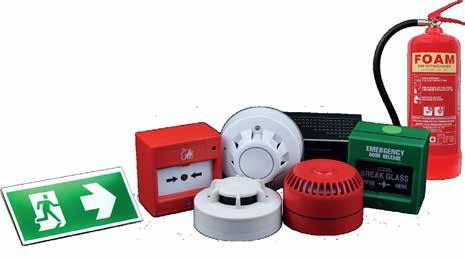
110 | Timber 2022 Prevention GROUP Doors PART OF THE DOORS PLUS GROUP. All Accreditations held by DOORS PLUS Ltd - UNIT 1, 2 & 9 HURN ROAD, DEREHAM, NR19 1WD TRADA Advert A4 Fire prevention advert DP FPP 2021.indd 1 26/02/2021 11:53 plusgroupltd.co.uk 08443 843125 EXPERTS IN COMPLIANCE WE: SURVEY • DESIGN • INSTALL • MAINTAIN Fire Prevention Plus are Third Party Accredited, Active & Passive Fire Protection Specialists. We are at the forefront of our industry, working with class leading fire protection suppliers and governing bodies to deliver the most up to date, certified and fully compliant solution. Our experienced team of specialists deliver quality, fully UKAS certified, fire protection products, services and solutions designed around our client’s specific requirements throughout the UK.

UP TO 60 MINS FIRE PROTECTION OR SBI RATING UP TO B, S1, D0 Our fire paints are rigorously tested to reach British & European Standards.
EASY TO APPLY AND QUICK DRYING TIME
Our fire paints can be applied to surfaces using brush, roller or spray.

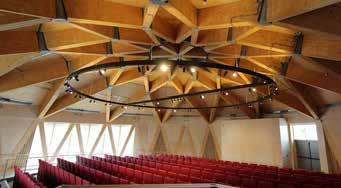
TESTED TO SUIT A VARIETY OF DIFFERENT SURFACES
Our fire paints are suitable for a wide range of different materials.

Envirograf ®
PROTECTING PROPERTY PROTECTING LIVES
At Envirograf we believe that one of the most important things in life is to feel safe. We have created a range of products that will help you protect the people and property you care about from fire.
Since 1983, Envirograf have manufactured over 200 different types of products. Including our wide range of paints which are suitable for different substrates including, timber, MDF, plasterboard, CLT and other wood derived materials.
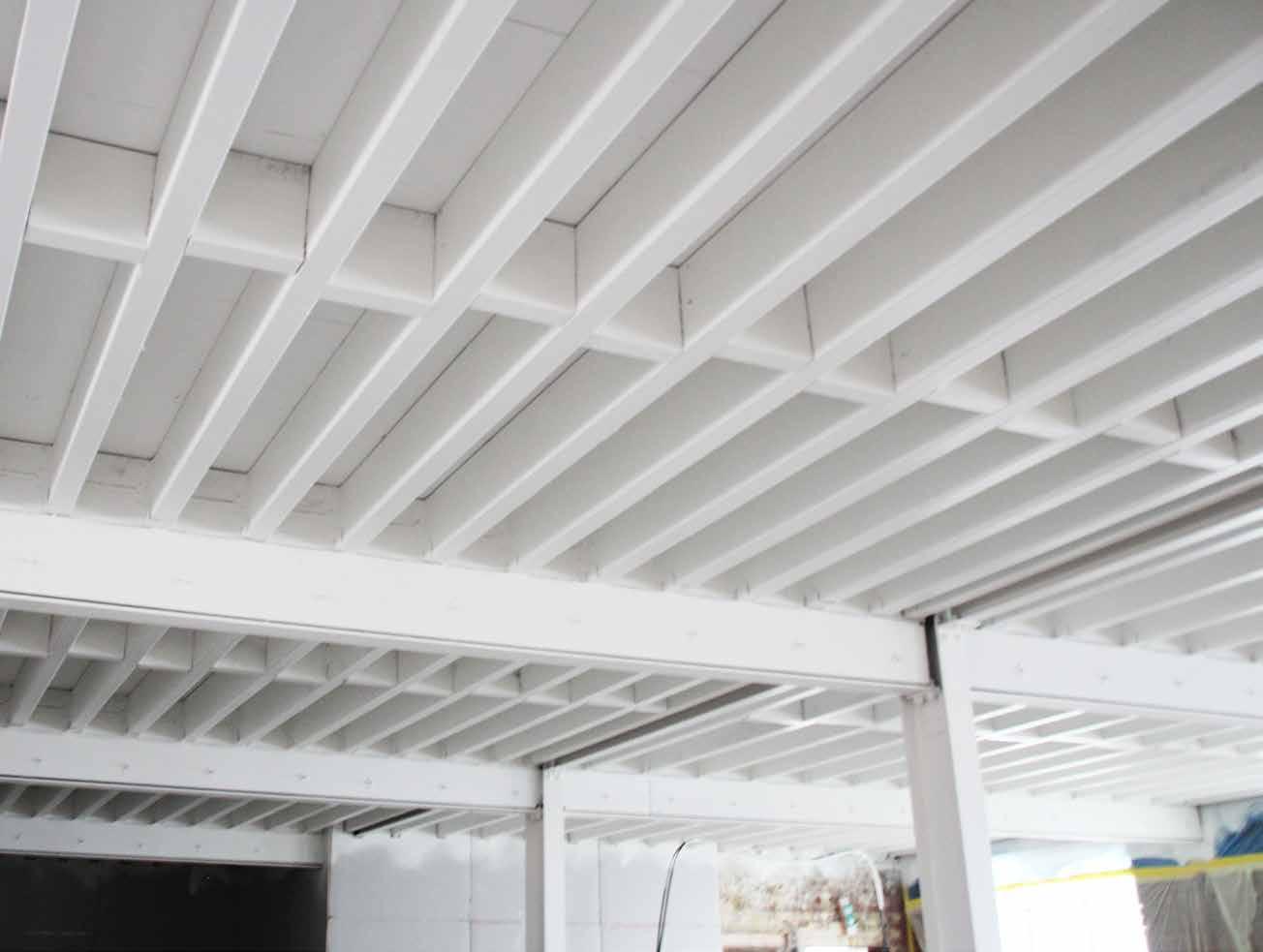
Our fire proof paints have been rigorously fire tested in accordance with a variety of British and European Norms (EN) standards for over 60 minutes fire integrity.
We have also tested our paints on different substrates for surface spread of flame ratings and have achieved British Standards Class 1 and Class 0 while also achieving B,s1,d0 on the European Single Burning Item (SBI) test.
Get in contact today to find out more.
01304 842 555 | www.envirograf.com
Security House, Wilson Street, Bonlea Trading Estate, Thornaby, Stockton on Tees
TS17 7AR
DRYWALL & PLASTERING
York Wall Systems install the three major manufacturers systems - British Gypsum, Knauf Drywall and Siniat.
RENDER & CLADDING
As well as the standard render and thermally efficient render systems we also install rain-screen render systems.
CEILINGS & WALLS
We install a range of ceilings such as mineral wool tile modular grid systems, metal pan tile systems, wooden lattice ceilings or acoustic ceilings.

01642 938456
info@yorkwallsystems.co.uk
www.yorkwallsystems.co.uk

DEMOUNTABLE PARTITIONS
Our demountable panel or glazed partitions can be designed to your specification with the style and look you require.
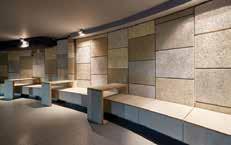
GLAZED PARTITIONS
We offer a range of glazed partitions which include single/double glazed, Fire rated, demountable partitions & acoustic partitions.
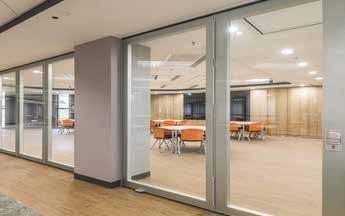
FIRE PROTECTION
York Wall Systems are on point with the market leading firestopping manufacturers and recent innovations.
We are firas accredited for:



Boarding structural steels | Cavity barriers | Fire rated partition systems
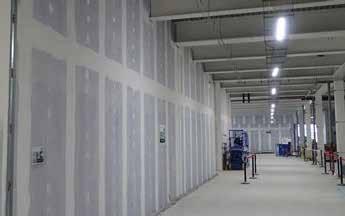

Timber door installation | Penetration sealing
- OUR ACCREDITATIONS -




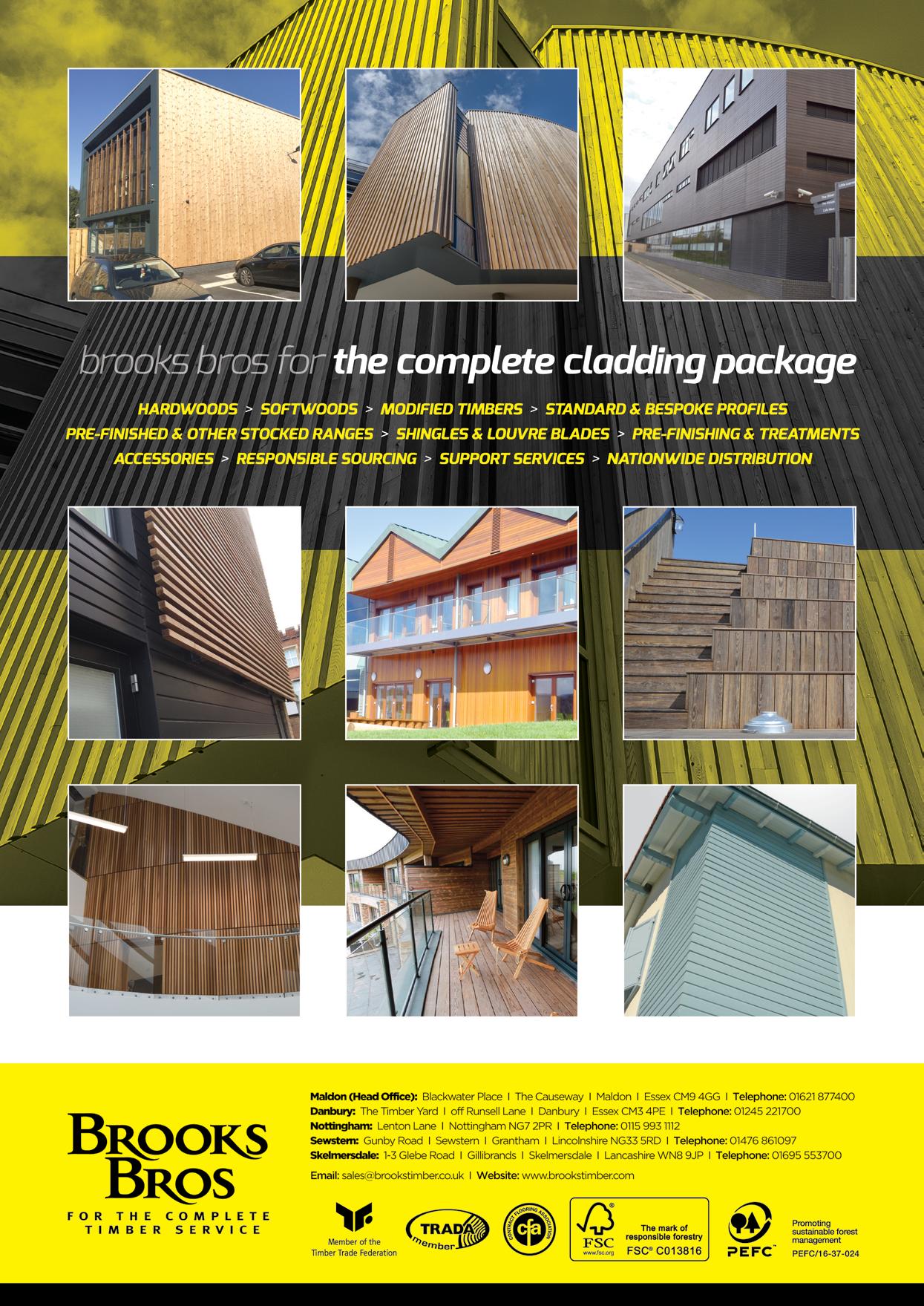
Avoiding common clangers
Janet Sycamore identifies how to rectify issues that can affect a cladding project.
Most cladding issues can be avoided through careful design and installation; they can be awkward and costly to rectify once a project is complete.
Fixing faux-pas
If a cladding board becomes detached from the wall or substructure, something is wrong – and it can be a mistake made with the fixing. Cladding fixings must be correctly specified and placed at specific intervals to properly secure the timber – typically dependent on timber species, board profile and arrangement.

Only high-performance coated steel or stainless steel specifically designed for use on external timber cladding should be used. Unsightly black stains (iron staining) are often a telltale sign that incorrect fixings have been used. Such staining is not easy to eradicate and ruins the aesthetic – and in the longer term there is potential for the fixing to consequentially fail.
Fixings placed too close to the board ends is also a common problem as the boards are more prone to splitting and becoming detached from the wall. As a general recommendation, fix at quarter points of board width and a minimum of 20mm in from the board end. Use two fixings at each fixing point unless the board is less than 100mm wide when one fixing can be used.
Figure 2 illustrates two issues – the fixing type and the fixing placement. The black streaks are caused by using nails unsuitable for outdoor use and the top board is fitted through the bottom board, restricting movement and going against good practice recommendations.
Timber is natural and it moves
Wood is hygroscopic – its moisture content is affected by changes in temperature and relative humidity of the surrounding environment. This causes movement across the grain of the timber. Timber cladding should be installed with a moisture content of 16% +/- 4%. This is the mid-range for timber conditions outdoors, which can fluctuate from around 10% to 22% depending on the season. Different species have different degrees of movement and are assigned to movement classes. Ideally, cladding timber should be classed as ‘small’ or ‘medium’ movement. It is also imperative that the design and installation will accommodate the natural seasonal movement of the timber by incorporating the correct movement gaps and/ or overlaps for the profile and species used. >>
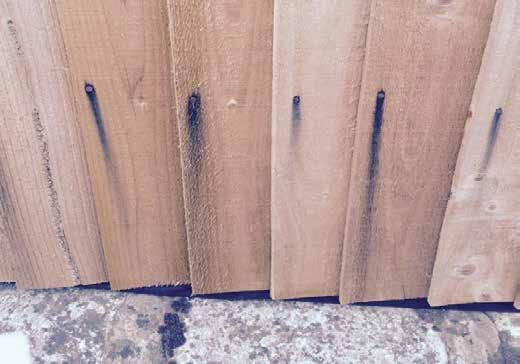
Timber 2022 | 115 www.bmtrada.com
Figure 2: An example of board-on-board fixing issues. Photo: TDCA
Landscape and exteriors Cladding
Figure 1: Standard cladding fixings. Source: TDCA
Tel: 01283 576089
sales@globaltimberproducts.co.uk globaltimberproducts.co.uk
Global Timber Products Ltd are specialist suppliers of clear grade softwoods and hardwoods to the trade. During their careers the Directors have worked hard to build a reputation for integrity with independent and national merchants, the joinery trade and the general public.

The company keeps extensive stocks of clear grade softwoods and hardwoods at their premises at Hixon near Stafford. Delivering nationwide the company offers a full machining and coating facility on all their timber products with many kept in stock for immediate delivery. We are able to machine both softwoods and hardwoods to any given profile.
Global Timber Products Ltd is a responsible purchaser of timber and has achieved Chain of Custody status and are therefore able to meet your requirements with regards to sustainable materials.
Services offered:
• Bespoke timber cladding profiles, applied with fire retardant treatment if required
• Bespoke mouldings
• Bespoke decking inserted with anti slip if required
• Constructional softwoods and hardwoods
• Marine application timbers
• Large section timbers graded to C16/18/24
116 | Timber 2022
Unit 1 Wellington Business Park, New Road, Hixon, Staffordshire, ST18 0HP
Landscape and exteriors Cladding
This is particularly relevant to interlocking cladding profiles such as tongued and grooved (T&G). There is a temptation to fit these boards tightly together, but problems are inevitable if you do, such as bowing or pulling away from the wall. For medium movement species, the recommended maximum width for a T&G board is 125mm, with an associated minimum tongue width of 15mm, to limit the potential for movementrelated issues.
What’s going on behind the cladding is just as important
Battens
A well-ventilated, free-draining cavity should always be included when installing cladding – to channel any moisture (wind-deflected rain) back to the building’s exterior. By using a series of timber battens, a cavity between the cladding and the backing wall structure can be created. Where cladding is used in a vertical arrangement with horizontal support battens, the use of a vertical counter batten is necessary to create a drainage plain and allow free passage of water through it. Counter battens should be a least 50mm wide and 25mm thick. For horizontal timber cladding, only vertical battens are required. These battens should be 50mm wide and 38mm thick, but can be 50mm x 25mm if no side jointing is to occur. These dimensions are to help ensure the battens will accept fixings without splitting.
The battens should be capable of delivering a similar or better service life than the cladding boards. Pressure-treated softwood such as spruce or pine is the go-to material for cladding battens. Pressure treatment should be to a use class 3 specification with the option of a desired service life of 15, 30 or 60 years (30 years being most common). This means that roofing battens are unsuitable as they are generally treated to use class 2 (an interior grade). You should obtain written evidence of treatment detailing appropriate use class and desired service life when you purchase your battens. It would be useful if this was mentioned in any specification notes to plans. The same goes if pressure-treated cladding boards are selected; they too should be treated to use class 3.
Breather membrane
Another common question is ‘where should the breather membrane be positioned?’ It should be placed behind the cladding battens to divide the wet and dry zones of the external wall – not between the batten and the cladding board. n
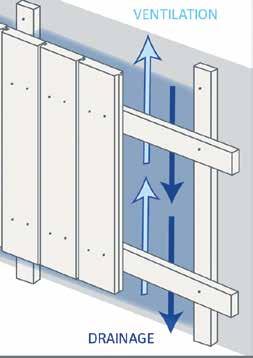
About the author
Janet Sycamore Timber Decking and Cladding Association (TDCA)

Further information
All the topics in this article and more are covered in The Timber Cladding Handbook, published by the Timber Decking and Cladding Association (TDCA). The TDCA is a not-for-profit company and the money generated from publication sales and inspection services goes towards its work to raise awareness of quality materials and installation good practice. www.tdca.org.uk
Further reading
• BS 8605-1:2014 External timber cladding – Method of specifying, BSI
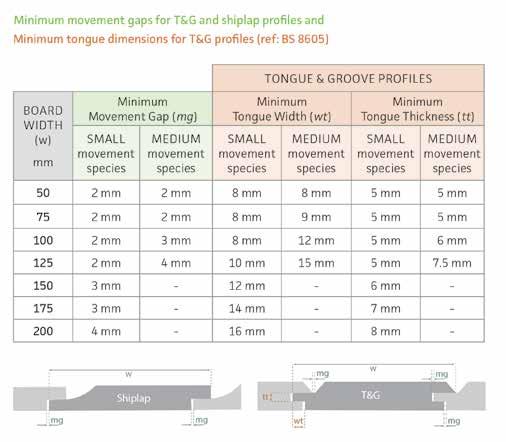
• External Timber Cladding, 4th edition, BM TRADA, to be published in 2022
• The Timber Cladding Handbook, TDCA and TTF, 2021. Available in digital and hard copy at www.tdca.org.uk/publications
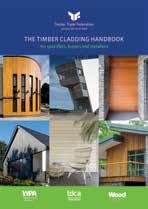
• WIS 1-49 Cladding for timber frame buildings, BM TRADA, 2018
• WIS 1-50 Timber cladding for building refurbishment, BM TRADA, 2019
Timber 2022 | 117 www.bmtrada.com
Figure 3: Minimum movement gaps for T&G and shiplap profiles and minimum tongue dimensions for T&G profiles. Source: TDCA
Figure 4: The correct arrangement for timber battens with vertical timber cladding. Source: TDCA
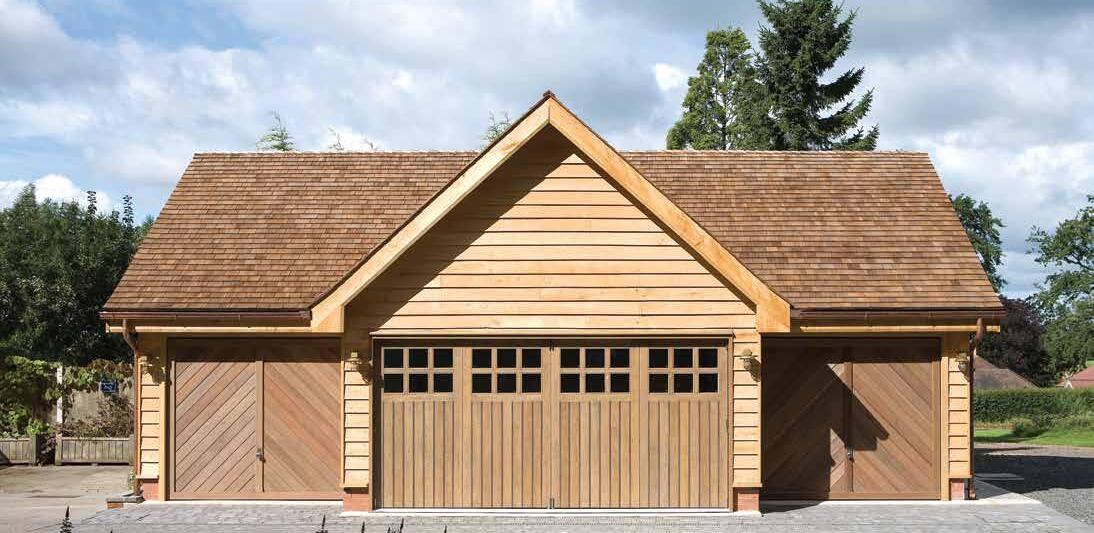




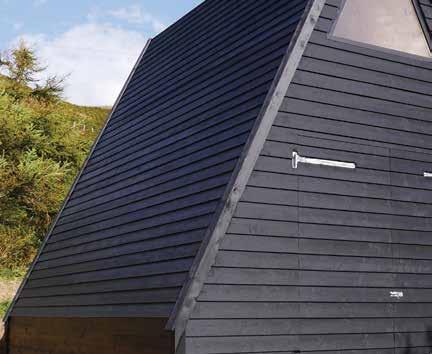




118 | Timber 2022 01630 661775 info@venbros.co.uk www.venablesoak.co.uk
Naturally Durable Sustainable Cladding Cladding solutions, available in a number of different profiles and species inc. Oak, Cedar, Larch. Oak Beams - Fresh Sawn, Air Dried Oak Flooring, Oak Decking, Oak Sleepers Bespoke Joinery - Doors, Windows, Staircases VENABLES OAK TRADA yearbook ad 2017.qxp_Venables Oak 21/12/2016 16:41 Page 2 01992 578877 hoppings.co.uk CLADDING > FEATHEREDGE > SHIPLAP > LOGLAP A range of painted and natural pre-treated cladding made from high quality certified softwood. What you need to know about UKCA marking • Summary of the EU CPR (including harmonised standards and European Assessment Documents) • Summary of the UK CPR (including 2019 and 2020 Amendments) • Manufacturer obligations (including dual marking, third country status and conformity) • Authorised representative obligations • Importer obligations • The risk of divergence in the regulation of construction products • Annex A – a list of EU tertiary legislation adopted by the UK CPR. Available to download from www.bmtrada.com/certification-services/ third-party-certification-non-fire/ukcamarking-for-construction-products
Choose
We’re transforming our supply chain into a seamless circle. Our unique integrated approach, from seed-to-sawn and back again, means we have the capability and connections to understand and deliver what the market needs, when and where it’s needed. By spanning supply and demand we make everything more efficient and reliable – a surprising approach, for fewer surprises.
thebswgroup.co.uk

SEE TIMBER IN A NEW LIGHT.
Our supply chain isn’t a chain.
Timber for use in garden and landscape construction
Paul Hensey explains how to specify timber for external use.

120 | Timber 2022
Timber clad wall made from offcuts of cedar.
Landscape and exteriors Specification
Photo: Green Zone Design Ltd
Timber is the most widely used and versatile of all construction materials1 for gardens and landscapes. Plentiful and easily worked, it has proven remarkably adaptable and durable, and belongs to a rare class of materials that can have both a structural and aesthetic value.
Specifying timber for external use
Timber can be used in almost any landscape or garden; however, without suitable selection and treatment many types of timber, when used in external environments and in contact with water, will have a limited service life. While timber is usually categorised into hardwood or softwood, not all are suitable for use in external construction and cladding applications. There are hardwoods that are poorly suited to external applications, such as birch, and softwoods with a natural resistance that perform well in external situations, such as Western red cedar. More practical classifications for the purposes of construction are applicable: see ‘Use classes’ below, and ‘Durability classes’ overleaf.
The majority of timber used externally, available in the UK, is derived from softwood. Hardwood is mostly limited to green oak (green identifies the timber as being unseasoned) and is usually used for simple structures such as raised beds and pergolas. Cost and reduced availability limit the use of hardwoods to specialist and statement items. Without the correct specification, the timber may be seriously compromised and unlikely to reach the intended service life. Designers and specifiers must understand what the intended application is, and therefore which use and durability classes will apply.
Use classes (outlined in BS EN 84172)
Timber is a natural product and, depending on its exposure to the elements, is prone to biological and physical degradation, including bacteria, fungal decay, wood-boring insects, marine borers, ultraviolet (UV) light, weathering and erosion, and movement.
BS EN 335 Durability of wood and wood-based products. Use classes: definitions, applications to solid wood and wood-based products lists five use classes of timber exposure:3
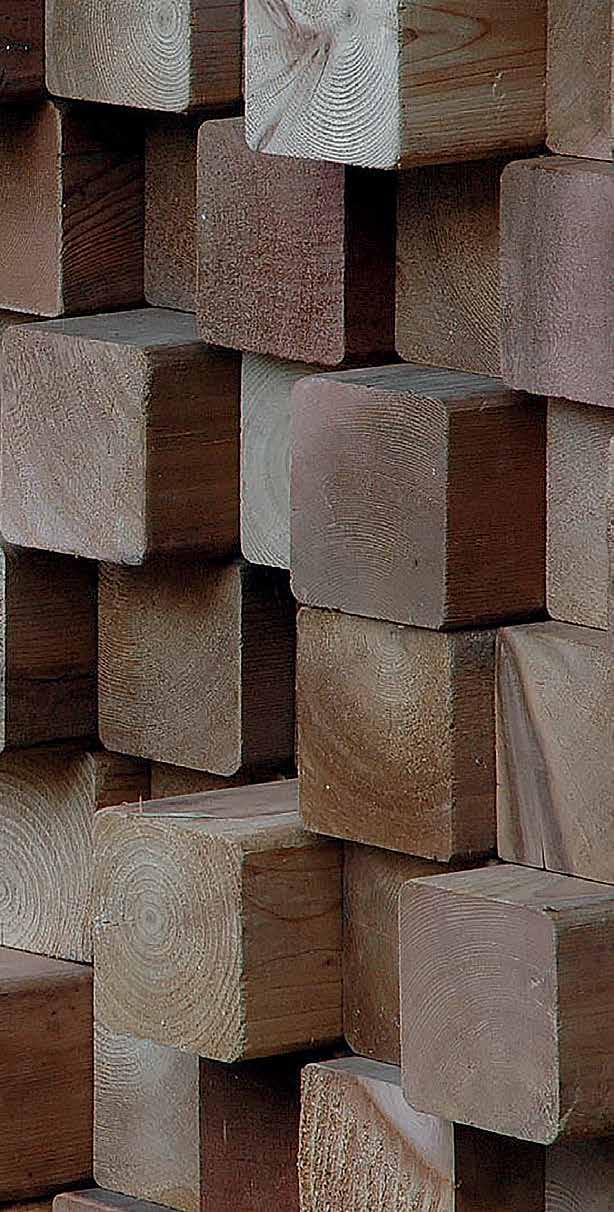
1. Internal – no risk of contact with water (roof timbers)
2. Internal – risk of contact with water (roof tile battens)
3. External – above ground/exposed (fence panels)
4. External – in contact with the ground/in freshwater (fence posts)
5. External – permanent contact with seawater (groynes). >>
Timber 2022 | 121 www.bmtrada.com
Landscape and exteriors Specification
“Timber should be specified by its use class and durability class, which will allow the selection of both an appropriate wood species and application of additional preservatives, if required.”
Landscape and exteriors Specification
The classification of the designed structure should be determined with some degree of common sense, for example timber decking boards fall into use class 3, but the accumulation of debris and soil may create areas of high water retention lifting the deck substructure into use class 4.
Durability classes
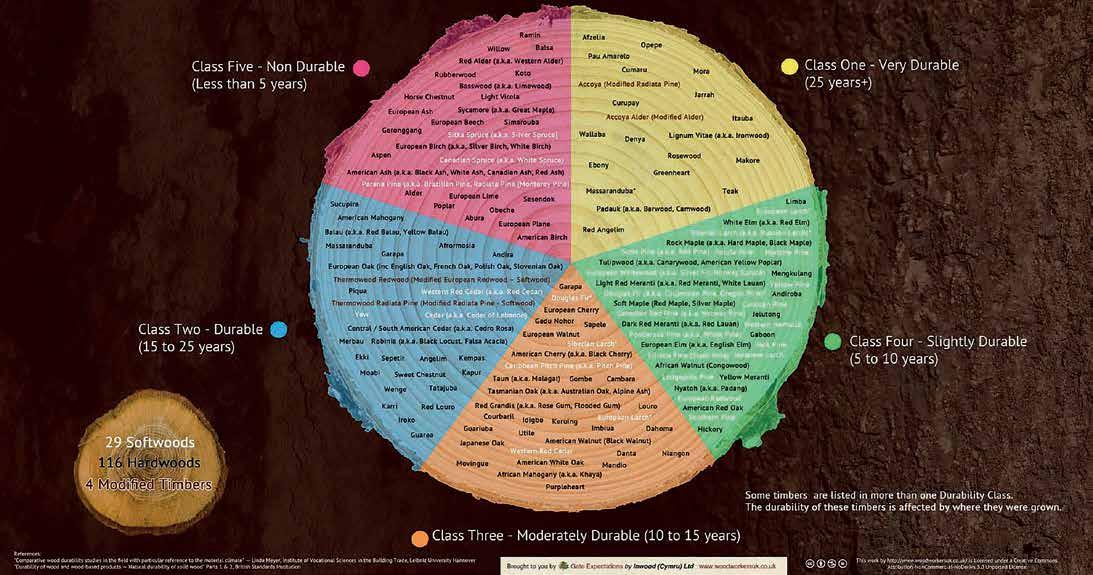
While use class defines the intended environment timber will be used in, durability classification supports the specification of an appropriate species to achieve a given service life.
Preservative treatment
While some timbers may naturally not achieve the higher classifications they can, with appropriately applied preservatives or processes, have their durability improved considerably. Some methods allow suppliers to offer periods of guarantee for applications in ground of ten years, 20 years or longer.5 The heartwood of some timbers has a natural resilience to decay either in ground or in contact with water and in some circumstances additional treatment may not be required.
Not all timber used externally requires treatment but even those in high durability classes can benefit from imparted protection (such as resistance to UV and rain penetration) and extending the life in service. All treatments benefit from repeated application and allow movement cracks and shakes (splits along the grain as timber ages) to be addressed as they emerge.
Weathering
Note: taken from BS EN 3504 / see Further reading for a useful chart *Timber is from heartwood
Timber should therefore be specified by its use class and durability class, which will allow the selection of both an appropriate wood species and application of additional preservatives, if required. Without treatment, timber may have less than satisfactory durability for structural applications, especially in use class 4 or 5 environments.
Untreated timber will naturally weather to a grey patina. The speed of weathering depends on several factors, including species, but within a year most timbers will have a matured, lead-coloured surface. It can be difficult for an untrained eye to distinguish between oak and cedar, for example. There are proprietary treatments that purport to accelerate the weathering process,6 which are useful for creating the impression of maturity and consistency across all surfaces where natural exposure may inconsistent.
122 | Timber 2022
Durability class Designation Timber* life 1 Very durable 25+ years 2 Durable 15–25yrs 3 Moderately durable 10–15yrs 4 Slightly durable 5–10yrs 5 Not durable 0–5yrs
Timber durability chart
Engineered and modified timbers
An alternative to natural, single species timber is the use of engineered or modified timbers. Engineered timbers consist of derivative wood products that are laminated or fixed into composite units such as plywood or glued laminated timber beams making them structurally superior to single species timbers and often suitable for external use, when protected from direct environmental exposure (for example, by an overhang).
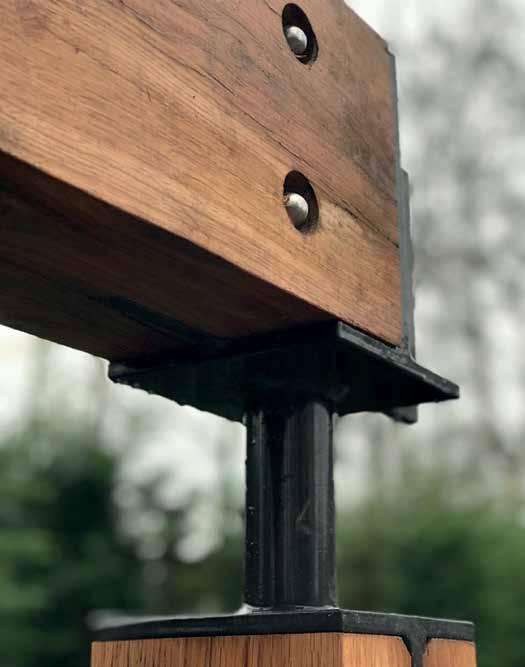
Alternatively, timber can be modified so that the cell structure is no longer capable of absorbing water or harbouring microbial activity. Treatment can be through thermal processes (such timbers are often identified as ‘thermo’ woods) or through acetylation (for example, Accoya). These treatments greatly improve the durability class of timbers that naturally might have a poor life in service.
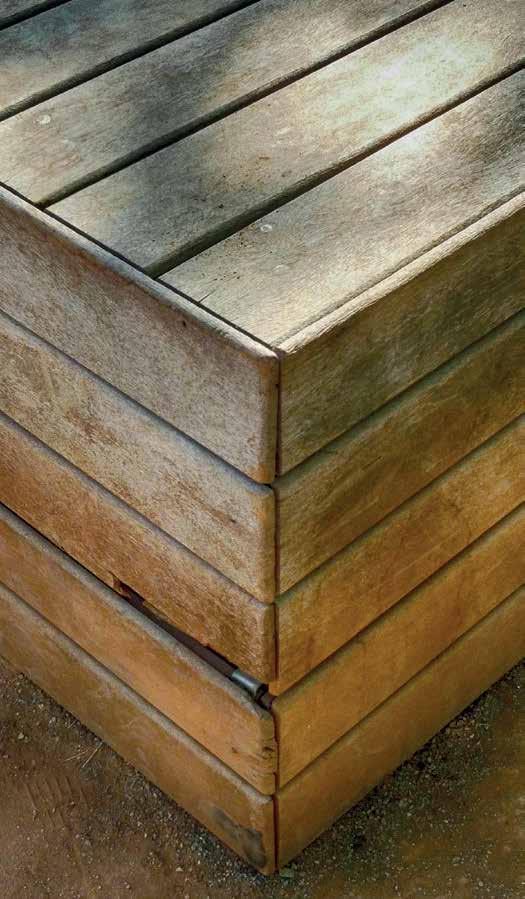
Other considerations
Fire
The use of combustible materials in construction has recently come under increased scrutiny; in particular on elevated structures (such as podiums and balconies). The use of timber in such structures is beyond the scope of this article. Advice and approval should be sought when designing for such locations.
Certification
Timber is a resource that requires constant renewal. Certification is not new, but it can easily be overlooked. The premiums once associated with timber certified by the Forest Stewardship Council® (FSC®), and the Programme for Endorsement of Forest Certification (PEFCTM) no longer apply. It is reasonable, ethical and practical to specify timber from certified sources. Some sources of timber, local plantations for instance, may not carry formal certification; where such a resource is available, it is diligent and worthwhile investigating both their provision and management practices. >>
Timber 2022 | 123 www.bmtrada.com
Oak clad bench stained from gravel pigmentation due to rainfall.
Photo: Green Zone Design Ltd
Landscape and exteriors Specification FSC A000503 / PEFC/16-44-002
Seasoned oak pergola beams assembled with galvanised steel brackets and A4 bolts. Photo: Green Zone Design Ltd

SLEEPERS | POLES | GATES | FENCES Suppliers of pressure treated wood, available with Creosote or Celcure finish. Discover more about our quality treated timber, contact our team on 01205 358866 or email enquiries@caldersandgrandidge.com
Designing for durability
Simple design principles can be applied that will extend the life in service of timber components:
• protect end grain (rounded, chamfered or preferably capped, end-grain sealant)
• avoid unnecessary cross-cuts or notching
• use seasoned timber (this reduces splits and cracks)
• use heartwood rather than sapwood
• prefabricate as much of the structure as possible prior to the application of any treatments
• ensure on-site cuts and holes are sealed using end-grain sealant
• avoid holes close to the end of beams
• decking boards should be placed heartwood side down
• use austenitic stainless steel connections (A2/A2 for screws and fasteners)
• allow for ventilation and air movement around timbers
• avoid timber being in direct ground contact with damp paving, brick or concrete.
Whatever the structure, the design should accommodate periodic inspection, maintenance and replacement, without inconvenient or complex dismantling. The ultimate failure of timber should be anticipated, along with the recommended period and nature of servicing and treatment reapplication. n
About the author
Landscape and exteriors Specification
Paul Hensey FSGD, MCIHort Green Zone Design Ltd

Landscape engineering and Garden Design
References
1. Reynolds, T. and Suttie, E., (both BRE), and Coggins. C., (Wood Protection Association), External Timber Structures (DG503), BRE, 2007
2. BS EN 8417:2011+A1:2014 Preservation of wood. Code of practice, BSI
3. BS EN 335:2013 Durability of wood and wood-based products. Use classes: definitions, application to solid wood and wood-based products, BSI
4. BS EN 350 Durability of wood and wood-based products. Testing and classification of the durability to biological agents of wood and wood-based materials, BSI
5. Wood Protection Association (WPA) code of practice, January 2021: www.thewpa.org.uk/preservative-treatments
6. Sansin WoodForce™ Accel
Further information
• The Timber Decking and Cladding Association (TDCA) www.tdca.org.uk
• Timber Trade Federation (TTF) www.ttf.co.uk
• Wood Protection Association (WPA) www.thewpa.org.uk
Further reading
• BS 8417:2011+A1:2014 Preservation of wood. Code of practice, BSI
• BS EN 350:2016 Durability of wood and wood-based products. Testing and classification of the durability to biological agents of wood and wood-based materials, BSI
• Choose & Use: Timber for garden projects, TRADA Technology, 2012
• WIS 1-31 Timber for landscape architecture, BM TRADA, 2020

• WIS 2/3-1 Finishes for external timber, BM TRADA, 2020
• WIS 2/3-60 Specifying timber exposed to weathering, BM TRADA, 2021
• WIS 2/3-63 Modified wood products, BM TRADA, 2021
• WIS 2/3-71 Specifying externally exposed structural timber, BM TRADA, 2019
• WIS 4-28 Durability by design, BM TRADA, 2019
• Wood Protection Association (WPA) code of practice
January 2021: www.thewpa.org.uk/preservative-treatments
• www.trada.co.uk/media/12056/timber-durability-chart.pdf
Timber 2022 | 125 www.bmtrada.com
Cumaru seating, part of the legacy plan for the London 2012 Olympic site.
Photo: Claire Borley Photography / LDA Design
Setting the Standards
Through our industry schemes – the BWF Stair Scheme and the BWF Fire Door Alliance – we champion best practice, innovation, industry standards and longevity in design.


The BWF is the trade association for the woodworking and joinery manufacturing industry in the UK. We offer advice, support and regulatory information to our 500+ members, as well as guidance for those looking to specify timber products.
w. bwf.org.uk e. bwf@bwf.org.uk

Innovative renovation
How windows and staircases can be used to transform a space, no matter the size.
The Two and a Half Storey House is a masterwork of three-dimensional imagination in timber and an ingenious solution to a common problem: how to create an extra bedroom in a two-storey terrace house. In the case of the conventional terrace house with a doublepitched roof, a loft extension would have been the obvious answer; however this was not a conventional terrace but part of a two-storey two-bedroom 1970s terrace in a former council housing estate in Stoke Newington, London.
The front brick wall rises above the first floor where it is clad with vertical tile-hanging and supports a mono-pitched tiled roof sloping down to the rear wall. The local planners would not permit any loft extension that rose above the highest point of this existing roof and the owners had already received two planning refusals for proposals for a single-storey loft extension which exceeded this height.
Spacious solutions
The owners, a couple with a young child and a second baby on the way, needed more space, but were unable to afford a threebedroom house in the same area. They asked the practice Bradley Van Der Straeten to investigate what could be done to fit another bedroom within these restrictions. The architect approached the design as an interlocking jigsaw, as George Bradley explains: ‘We knew the half height of the loft was fixed so the design was all about creating two interlocking floor levels in the space of one and half floors. We may have given less footprint but we created more volume and an additional bedroom by using it creatively. The whole design of the project hinged on using the ceiling of the bedroom below as a bed platform for the bedroom above, which is spacious and light due to effective use of roof windows. Integrating the bedframe into the fabric of the design allowed space to be freed up for other things such as the communal circulation spaces.’
Timber, in particular Finnish birch-faced plywood, was the key material in the achievement of a design that was dependent on close attention to detail. The timber frame structure is stiffened and lined with birch-faced plywood to create wall linings and ingenious storage spaces. The birch-faced plywood panels link the new loft bedroom with the updated first-floor bedrooms, and the warm and tactile nature of the birch finish enhances the spaces.
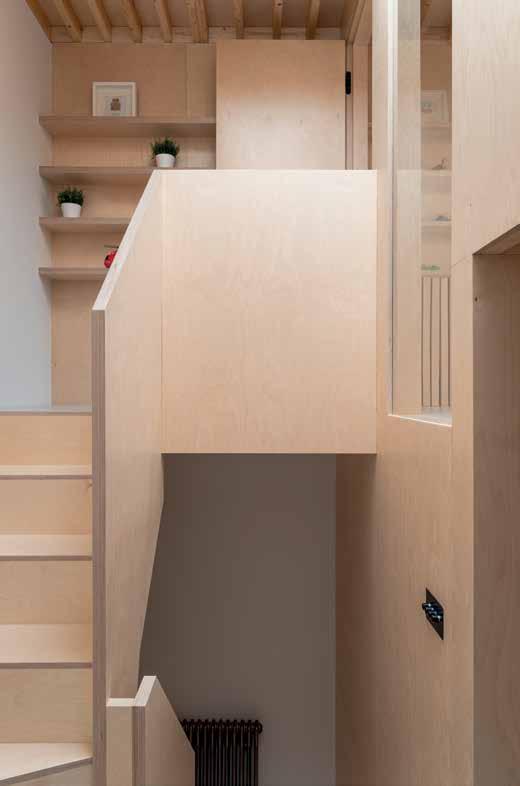
Creating light and new levels
The key to the achievement of the new loft bedroom was the creation of a series of interlocking volumes designed precisely to achieve the necessary headroom heights on each floor. The new loft bedroom extends with a very gently sloped roof from front to rear, terminating in a dormer window that looks west over the garden and the surrounding roofscape.
Directly below the dormer window is the bed platform, raised 600mm above the floor and rising to a ceiling with exposed timber joists and a headroom height of 1450mm. The bed platform is lined on all three sides with birch-faced plywood >>
Timber 2022 | 127 www.bmtrada.com
Joinery Case study
Next to the staircase is an internal window that links upper and lower spaces.
Photo: FRENCH+TYE

Joinery Case study
and built-in plywood shelves and storage spaces. Other walls of the loft bedroom are lined with shelves and cupboards of birch-faced plywood with exposed edges and the radiator is screened by a set of plywood strip louvres.

The floor-to-ceiling height of the loft bedroom is 2150mm –a height that has been achieved by lowering the floor immediately below it to a height of 1500mm. This lowered section on the first floor is used for a variety of storage spaces; a large storage room with double doors opening off the corridor, another storage cupboard opening off the half landing to the staircase and a wardrobe that runs the full length of the internal wall to the second bedroom.
At one side of the loft bedroom is a raised plinth that accommodates the 2100mm headroom height to the first-floor corridor immediately below it. The plinth is used as a bench seat, the base of a built-in wardrobe and as a bookshelf.
The construction of the loft bedroom consists of a highly insulated timber frame with a single-ply membrane roof covering and a dormer window clad with roof tiles. Two raised roof windows in the roof, one above the staircase and another above the bed, flood the interior with light. The new timber staircase was built directly above the original staircase flight and is flanked by a solid balustrade of paired 24mm plywood
Project details
Completion date: 2019
Building type: Terrace house extension
Location: Stoke Newington, London
Architect: Bradley Van Der Straeten Architects
Structural engineer: Constant Structural Design
Main contractor and joinery: Gregos Builders and Decorators
Timber supplier: James Latham
Timber elements: Roof extension structure, wall linings and internal fittings
Timber species: Finnish PEFCTM and FSC®certified birch-faced plywood
Awards
Wood Awards 2020
– Highly Commended, Interiors
New London Architecture 2021
– Winner, Compact Design of the Year
panels. The loft bedroom is separated from the staircase by a fire-rated door and a panel of 8mm toughened fire-rated glass; it gives a visual link to the floor below, allowing parents to keep an eye on their eldest son playing in his new bedroom.
On the first floor the original bathroom has been retained and a new en-suite bathroom has been installed alongside with access from the master bedroom. The first-floor cupboards have a timber frame with birch-faced plywood panels and fire-resistant plasterboard to achieve 30-minute fire-resistant construction. The ground floor of the house has also been opened up to create a generous living, dining and kitchen area overlooking the garden, with a large sliding glass door that leads out onto an area of timber decking. n
Further reading
• The full case study can be downloaded from www.trada.co.uk
• WIS 4-16 Timber in joinery, BM TRADA, 2020
Timber 2022 | 129 www.bmtrada.com
Two large roof windows flood the interior with light.
Photo: FRENCH+TYE
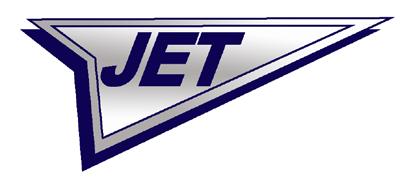
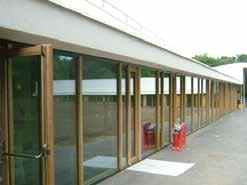

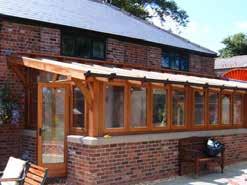
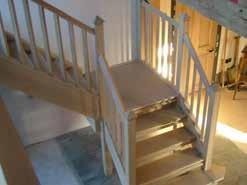


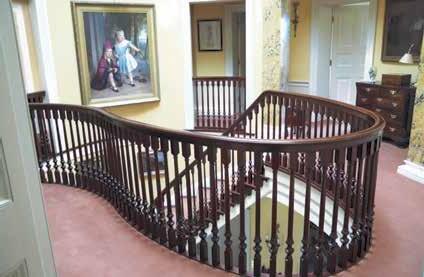

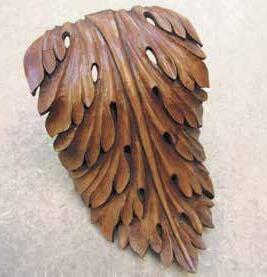
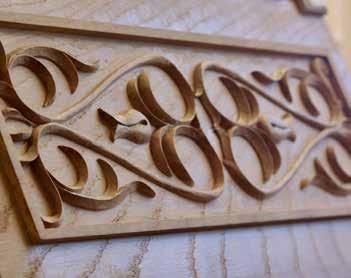
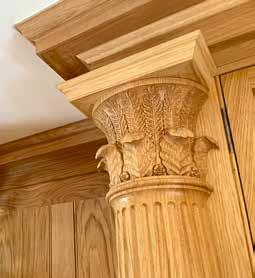

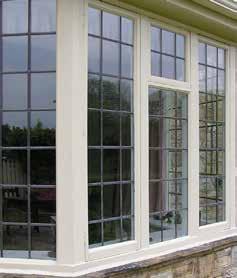
130 | Timber 2022 Commercial & Domestic Joinery Supplies www.jetjoinery.co.uk Email: eric@jet-joinery.co.uk Tel: 01623 755560 Jet Joinery Timber Supplies is a UK privately owned timber supplier and manufacturing company with over thirty five years experience in the trade. Services include bespoke joinery, a full site fixing service, machined timber service complete with full modern workshop facilities and competent staff, and a good stock and selection of timber mouldings and sheet materials. Jet Joinery Timber Supplies are happy to give you help and guidance on the suitable timber for your particular project. • Traditional Windows • External Wooden Doors • Timber Stairs • Reception Counters • Screens • Bespoke Joinery • Timber Conservatories • Planed Timbers • Rough Sawn • Tanalised Softwoods and Hardwoods • Internal Wooden Doors • Bespoke Furniture • External Timber Porches • Box Sash Windows * Products are FSC® certified on request only. From sympathetic repairs & restoration through to extensive schemes of work. Visit our website to view examples of our beautifully crafted doors, windows, wallpanelling, staircases, libraries, kitchens, bathroom fitments, oak frames, furniture, fine woodcarving, repairs & maintenance. www.houghtonsofyork.co.uk Tel – 01904 489193. Houghtons of York Specialists in traditional, high quality bespoke joinery and fine woodcarving.






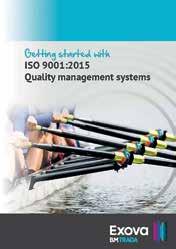


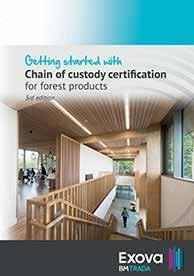

Bookshop Getting started with guides from the experts at BM TRADA Expertise in timber design and construction Order online at http://bookshop.bmtrada.com
UKCA marking for pedestrian doorsets with fire-resisting and smoke control characteristics
There is still significant confusion among fire door manufacturers regarding UKCA marking, as the situation is not as straightforward as it is for other construction products. Peter Barker explains the current regulatory and legislative landscape.

132 | Timber 2022 Joinery Fire doors
Fire doors in test conditions
All construction products that were previously CE marked under the Construction Products Regulation will need to be UK Conformity Assessed (UKCA) by the 1 January 2023 to be placed on the market in Great Britain.1
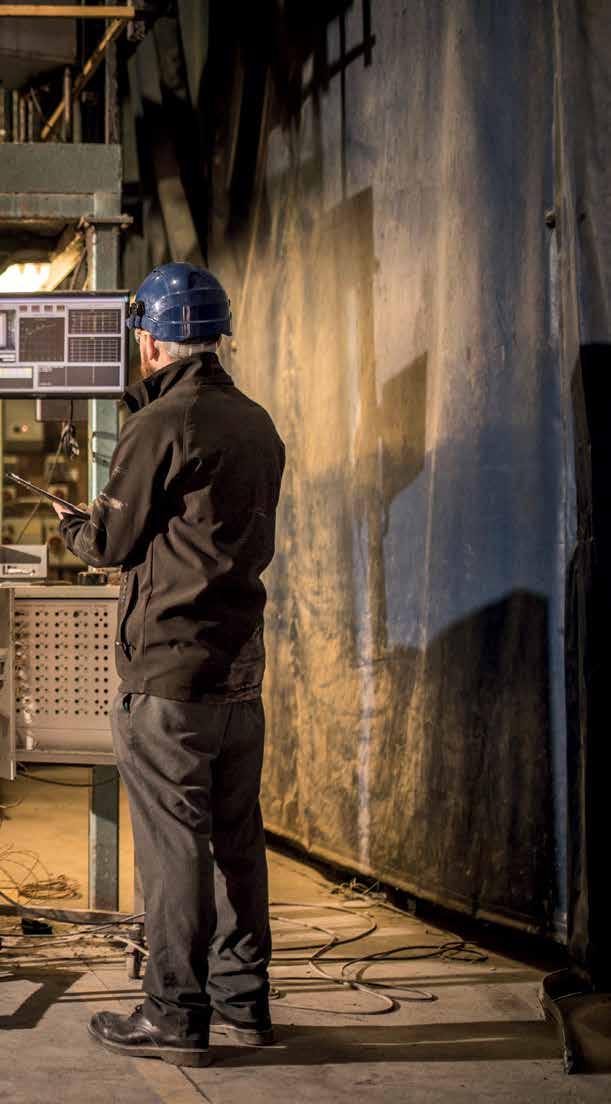
UKCA marking
UKCA marking was introduced as a consequence of the UK leaving the EU and replaces CE marking when placing construction products on the market within Great Britain. The relevant legislation that makes amendments to the regime for construction products in Great Britain is the Construction Products (Amendment etc) (EU Exit) Regulations 20191 and 20201 which, broadly speaking, is a copy of the Construction Products Regulation that continues to be used within the EU27 (the 27 member countries within the EU).
In Northern Ireland, CE marking will continue to be accepted, as it will across the EU27; alternatively, a CE UKNI mark can be used for construction products that will be sold for use only within Northern Ireland.
At present, only products that are covered by the scope of a designated standard need to be UKCA marked. In future, UKCA marking will also be required for products that conform to a UK Technical Assessment, where one has been issued for the particular product type.
Designated standards
All harmonised standards that gave presumption of conformity with EU law, such as the Construction Products Regulation, became designated standards in the UK on 1 January 2021. The designation process is a formal recognition of the standard by government and does not change the content of the standard. Therefore any product within the scope of a harmonised standard will also be within the scope of a designated standard.
For fire-resisting pedestrian doorsets there are two designated standards (often termed product standards) that are of relevance: EN 14351-1 2 and EN 16034 3 >>
Timber 2022 | 133 www.bmtrada.com Joinery Fire doors
“UKCA marking is currently a continuation of CE marking but for application in Great Britain only; however, after the Building Safety Bill has been enacted we are likely to see a strengthened Construction Products Regulation, with other regulatory requirements called for when placing safety critical construction products on the market.”
-L ATERALLY TESTED, UKAS ACCREDITED

TIMBER FIRE DOORSETS
WHY CHOOSE FIRE DOORS PLUS
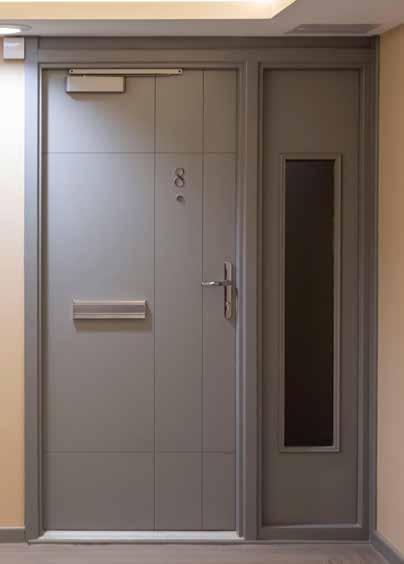
We are a BM TRADA certified, UKAS accredited company, we have held all three of our Q-Marks since 2013.

We are experts in our field and specialise in the supply, installation and ongoing maintenance of Fire Doorsets.
We offer our services to Government Organisations, Local Authorities, Housing Associations, Housing Trusts, Historical Authorities, Education Facilities, Health Trusts and Blue Light Services throughout the UK.
We deliver quality works and programmes designed around our clients' bespoke needs and requirements provided by our own DBS verified staff.
OUR SERVICES INCLUDE
Full Building Solutions – Including glazed or unglazed Flat Entrance, Communal and Service Room Doorsets in either FD30s or FD60s specification
All Fire Doorsets conform to BS476 Part 22, they carry Primary Test Evidence and are UKAS Accredited. They conform to the very latest Legislation and Regulations and are all Bi-Laterally Tested and CE Marked
Secured by Design & PAS24:2016 certified







Includes factory fitted CCS data pin for effortless cloud-based, real time asset management




Installed by our very own, experienced team of BM TRADA Accredited engineers
UKAS accredited Fire Doorset Inspection, Survey, Maintenance and Servicing Solutions
Fully Certified, 48hr Responsive, Emergency Fire Doorset Supply & Installation service
Essential Service Provider status with Covid-Secure safeguarding policies & procedures in place




DELIVERY WITHIN 6 WEEKS FROM POINT OF ORDER FOR BOTH SOLID & GLAZED TIMBER FIRE DOORSETS

plusgroupltd.c o.uk GROUP Doors PART OF THE DOORS PLUS GROUP. All Accreditations held by DOORS PLUS Ltd - UNIT 1, 2 & 9 HURN ROAD, DEREHAM, NR19 1WD SUPPLY & INSTALL ATION OF PRIMARY CERTIFIED,
08443 843125
BI
Fire-resisting and smoke control doorsets
Reading the scope of the designated standard to see what products are listed and what products are specifically excluded is key to understanding whether a particular door needs to be UKCA marked. Fire-resisting doors are unusual as EN 14351-1 has to be used with EN 16034, so only a fire-resisting door that falls within the scope of both standards is required to be UKCA marked.
Currently, it is only necessary to UKCA mark fire-resisting and smoke control doorsets that separate the internal climate from the external climate of a construction, where the doorset is intended to be used in fire and/or smoke compartmentation and/or escape routes, and when it is supplied complete with all essential parts and from a single manufacturer. It is not currently possible to UKCA mark internal doorsets, as the standard EN 14351-2 4 was not cited in the Official Journal of the European Union at the time the UK officially exited the EU, and the standard has not yet been designated by the UK Government.
If the door is not supplied with all components and it is necessary to source components from another manufacturer to complete the construction, it is termed a ‘door assembly’ and this falls outside the scope of the designated standards and cannot be UKCA marked.
British Standard test evidence
British Standard (BS) test evidence is still listed as a way of demonstrating the performance of fire-resisting doors in the guidance documents used for complying with UK Building Regulations; however, it is necessary to understand the difference between the Building Regulations and the Construction Products Regulation.
Building Regulations
Building Regulations set the requirements for the performance of buildings and construction works, and therefore the performance of construction products. There are different statutory guidance documents used within the UK that provide practical guidance about how to meet the functional requirements of the various parts of the Building Regulations. For example, Approved Document B5 provides guidance for meeting the fire safety requirements of the Building Regulations in England and Wales, and Approved Document 76 gives guidance on how to establish the fitness of materials and adequacy of workmanship for building work.
The building design, occupancy and location of a doorset within a building is likely to lead to several different performance requirements covering health and safety, welfare and convenience, access and conservation of fuel and power; this is what shapes the specification of a doorset for a particular location within a building.
Construction Products Regulation
The Construction Products Regulation is a separate regulatory regime that places legal obligations onto manufacturers that are making products available on the market, where the products fall within the scope of the designated standards. In the case of external fire-rated pedestrian doorsets a manufacturer must meet the requirements of the Construction Products Regulation to place the product on the market, as well as satisfy the performance requirements of the Building Regulations. The designated standards call up European Norm (EN) test and classification standards and BS test evidence cannot therefore be used.
Building Safety Bill
CE marking within the EU was intended to remove technical barriers by introducing a common technical language to facilitate the single market; at the moment, UKCA marking follows the same legal framework and requirements. However, the Building Safety Bill7 (new primary legislation) that is currently progressing through Parliament will create regulations to make sure that:
• construction products on the market are subject to a general safety requirement;
• existing arrangements for products that perform to a designated standard are retained; and
• new requirements are established for a list of safety critical products.
The purpose of the Building Safety Bill is to:
• enhance market surveillance powers;
• allow for regulation of the accuracy of claims about product performance; and
• provide powers to repeal and redesign the construction products regulatory regime to meet the demands of the UK market.
It is not possible to know precisely what will happen with UKCA marking until the Building Safety Bill has been enacted along with the raft of secondary legislation. However, on reading the proposed Building Safety Bill and the clear intention of enhancing the existing regulatory regime for the UK market, it is reasonable to assume that we are likely to see an increase in specific conformity assessment and market regulatory requirements for safety critical construction products, such as fire-resisting doorsets.
National third-party certification schemes
National certification schemes for construction products (Type 5 product schemes as defined in ISO 17067 8), such as Q-Mark and Certifire, go beyond the requirements given in designated product standards and their associated Assessment and Verification of Constancy of Performance level. For example, the Q-Mark and Certifire schemes for fire-resisting doors include additional labelling and traceability requirements in addition >>
Timber 2022 | 135 www.bmtrada.com
Joinery Fire doors
SUPPLIERS OF EXPERTLY CRAFTED INTERNAL DOORS AND ACCESSORIES OF OUTSTANDING QUALITY

With an extensive range of beautifully crafted stylish doors, Deanta offers a solution for every space.
Internal doors
Fire doors
Bespoke door design
In-house glazing service
Folding systems
Pocket door systems
Door hardware
Door lining sets, architrave & skirting
Fire safety is at the core of our business. At Deanta we manufacture all our doors, ensuring that every single component not only meets the required standards, but exceeds them. We believe in investing heavily in research to develop the safest, most reliable fire safety products on the market. We extensively test our product range through independent, third-party certification schemes. Every single fire door in our collection has BM TRADA accreditation and all Deanta Architectural FD30 fire doors are Certifire approved and acoustic tested up to 31dB.


Deanta UK Ltd 400 Lancaster Way Business Park, Ely, Cambridgeshire, CB6 3NW 01353 698 602 | sales@deanta.co.uk www.deanta-architectural.co.uk | www.deanta.co.uk FD30 FD60 WARRANTY
to a centralised listing for certified manufacturers, as well as technical updates to maintain the state of the art regarding product scope or scheme requirements, as necessary.
The Q-Mark and Certifire schemes also incorporate ongoing audit testing, which is a higher requirement than that specified for doorsets covered by EN 14351-1 and EN 16034. Audit testing provides feedback loops on system and product performance. It is particularly important, as materials and processes often change over time, which can lead to an unexpected fall in product performance compared with that demonstrated by the initial type testing.
While national certification schemes can offer increased added assurance in terms of product compliance with the relevant performance standards, they do not negate the need to comply with the Construction Products Regulation and associated designated product standards. National certification schemes can be used in addition to UKCA marking where they offer enhanced safety, but must not conflict with the requirements of the Construction Products Regulation.
Third-party certification continues to demonstrate to the consumer the highest level of added assurance for product compliance. Certification schemes also help to plug gaps in the regulatory system, in terms of assessing conformity.
Conclusion
It is entirely possible that a project involving fire and/or smoke doorsets that are both internal and external will have to meet the same national Building Regulation requirements in terms of the level of fire resistance and smoke leakage performance, but with the fire-rated external doorsets also requiring UKCA marking before they can be placed on the market and installed within the building.
UKCA marking is currently a continuation of CE marking but for application in Great Britain only; however, after the Building Safety Bill has been enacted we are likely to see a strengthened Construction Products Regulation, with other regulatory requirements called for when placing safety critical construction products on the market. For further information and guidance on the construction products regulatory framework, it is worth referring to the factsheet9 that has been produced by the Department for Levelling Up, Housing & Communities (DLUHC).
Given the announcement by Ministry of Housing Community and Local Government (MHCLG) in August 2021 extending the deadline for acceptance of CE marking within the GB market to the end of 2022, there is a little more breathing space within the industry to understand UKCA marking and comply with the Construction Products Regulation – but time is running out. n

About the author
Peter Barker Technical Manager Warringtonfire
Further information
To find out more about Warringtonfire’s certification schemes, visit www.warringtonfire.com
Further reading
• Technical Bulletin: UKCA marking, BM TRADA, 2022 (www.bmtrada.com/certification-services/third-partycertification-non-fire/ukca-marking-for-construction-products)
• WIS 1-13 Performance of fire-resisting timber-based doorsets, BM TRADA, 2018
• WIS 1-32 Upgrading timber joinery doors for fire resistance, BM TRADA, 2020
• WIS 1-47 Timber external doors, BM TRADA, 2019
References
Note: The BSI numbering policy is to adopt the European Committee for Standardisation (CEN) numbering, prefaced with BS when the standard is published for use in the UK
1. www.gov.uk/guidance/construction-products-regulation-ingreat-britain
2. EN 14351-1:2006+A2:2016 Windows and doors – Product standard performance characteristics – Windows and external pedestrian doorsets, BSI
3. EN 16034:2014 Pedestrian doorsets, industrial, commercial, garage doors and openable windows – Product standard, performance characteristics – Fire resisting and/or smoke control characteristics, BSI
4. EN 14351-2:2018 Windows and doors – Product standard, performance characteristics – Internal pedestrian doorsets, BSI
5. Approved Document B, Volume 2, 2019 Edition: www.gov.uk/ government/publications/fire-safety-approved-document-b
6. Approved Document 7, 2013 edition incorporating 2018 amendments – for use in England: www.gov.uk/government/ publications/material-and-workmanship-approved-document-7
7. https://publications.parliament.uk/pa/bills/cbill/58-02/0139/ en/210139en.pdf
8. BS EN ISO/IEC 17067:2013 Conformity assessment –Fundamentals of product certification and guidelines for product certification schemes, BSI
9. www.gov.uk/government/publications/building-safety-billfactsheets/construction-products-regulatory-framework-factsheet
Timber 2022 | 137 www.bmtrada.com
Joinery Fire doors
• Bespoke carpentry solutions

• t hird party certified maintenance packages



• t hird p arty certified installation of fire doors



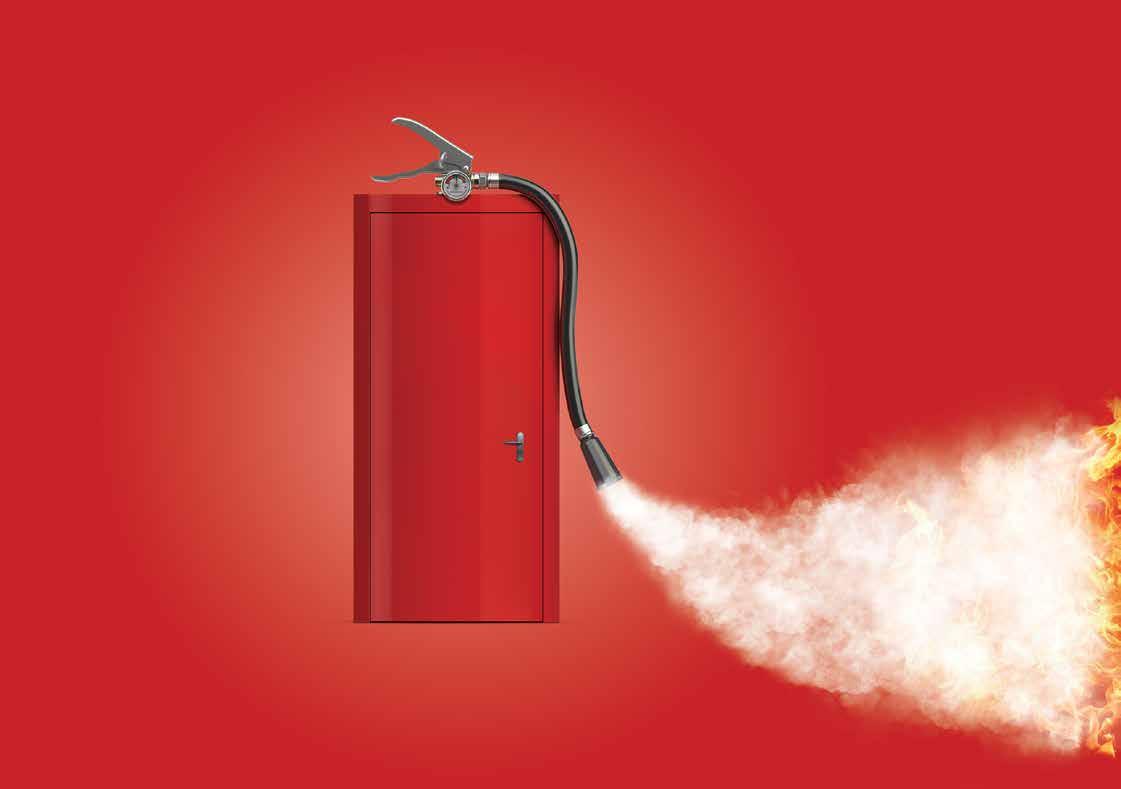
• f irst f ix, s econd f ix and f inal carpentry works



• s upply and install composite and a 1 fire decking
• 01279 734160 • info@oakwell B uilding.co.uk

138 | Timber 2022 C M Y CM MY CY CMY K Advertising Fire Vicaima_Project Scotland_2020.pdf 1 10/03/20 11:11
— who we work with — — accredited —
• www.oakwell B uilding.co.uk — B m trada certified —


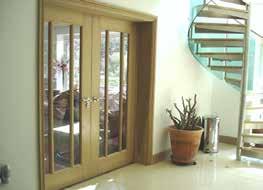


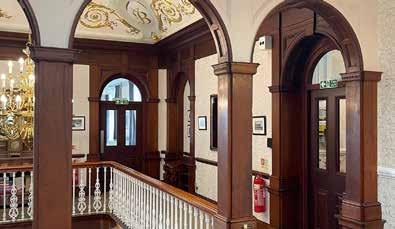

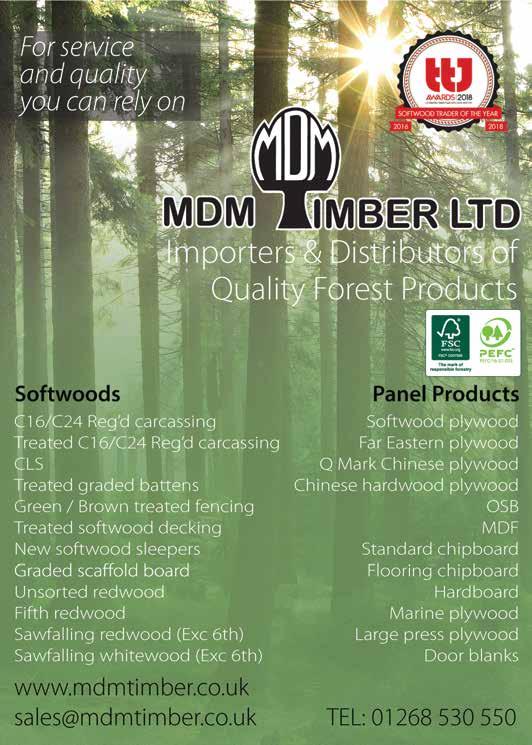




140 | Timber 2022 RB Doors & Joinery Ltd specialise in manufacturing doors to order, incorporating our customers designs. RB Doors & Joinery Ltd Unit A2, Larkfield Trading Estate, New Hythe Lane, Larkfield, Kent ME20 6SW Tel: 01622 792015 / 6 Fax: 01622 882035 Email: rbdoors@hotmail.co.uk www.rbdoors.co.uk • Veneered • Laminate • Panelled • Vision Panels • Fire rated to FD30, FD60, FD90 & FD120 • Acoustic • Colour Protection • Painted / Primed • Joinery • Louvered • TGV Boarded • Non Fire Bespoke Door & Joinery Manufacturer Make Woodworking Limited undertake all aspects of first and second fix carpentry for commercial, new build and one-off builds. Based in the East Midlands, Make Woodworking Limited offers a fully insured and qualified service with a skilled and dedicated team of carpenters providing you with a high-quality reliable service. www.makewoodworking.co.uk 01536 521594 | info@makewoodworking.co.uk
IT IS ESSENTIAL THAT FIRE DOORSETS ARE INSPECTED & MAINTAINED REGULARLY
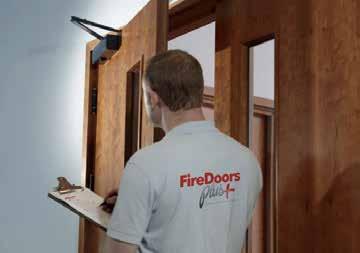

FIRE DOORSET SERVICES
Accredited Fire Doorset Survey & Inspection services



UKAS Certified Maintenance & Remediation solutions







CCS Fire Doorset Data Pin services with a Cloud Based Asset Management solution. Comprehensive range of Certified Fire Doorset Servicing Programmes
Fire Doorset Supply & Installation services

EXPERTS IN FIRE DOORSETS
We have unparalleled and extensive experience with Fire Doorsets and Fire Stopping works, holding no less than three UKAS Certifications among many other accreditations and endorsements.
We are Third Party Accredited for Fire Doorset Installation, Fire Doorset Maintenance and Fire Stopping Works, all of which we have held for over 8 years and are awarded by BM TRADA.
We are certified to carry out a full, comprehensive inspection of all your Fire Doorsets using the Q Mark system, once the inspection is completed a comprehensive report is then generated, detailing the overall condition of the Doorset and any areas of non-compliance that will necessitate further work. The report will then be added to your database, creating an asset register of Fire Doorsets. This register will then hold all the relevant information and certification for each individual Doorset and be the basis for planning future inspections and works.
MAINTENANCE OF FIRE DOORSETS
A Fire Doorset is an intricately designed and engineered device that is conceivably the most significant fire safety measure on your premises.
Installed correctly, it will slow down the distribution of fire and smoke within the building by containing it to a particular compartment or room, giving the buildings occupants vital extra time to escape and the Fire Service longer to respond appropriately. A Fire Doorset will also help to reduce the risk of the building integrity being damaged beyond viable repair in the event of a fire.
Too often Fire Doorsets are installed inadequately or merely left in a state of disrepair. It is imperative that your Fire Doorsets are regularly inspected and maintained accordingly, allowing them to perform as they were designed to, on the one and only occasion that they will be required to do so.
It is your responsibility to ensure that adequate measures are in place for the inspection and maintenance needs of your Fire Doorsets, with the maintenance records being made available should you need to substantiate them.
OUR CLIENTS
Housing Associations & Private Landlords


Universities & Colleges
Hospitals & Healthcare Centres
Councils & Local Authorities
Care Homes & Sheltered Schemes
Hotel Chains & Holiday Parks
FIRE DOORSET CHECKLIST:
• Is the Doorset certified?

• Do you have maintenance records for the Doorset available?
• Is the correct Doorset in place?
• Does the leaf thickness meet the required standard for the scenario it is intended for?
• Is the Doorset bowed, twisted, warped or damaged?
• Does the Doorset have the correct seals fitted? Are they damaged or missing?
• Does the Doorset close correctly? Will it self-close onto the latch correctly?
• Is there a consistent gap around the edge of the frame within the allowed tolerance of 2-4mm?



• Are the frames and architraves in good condition? Do they meet the required thickness? Are they made from the correct material? Are they securely fitted and installed correctly using the correct fire stopping materials?
• Are the correct number of hinges on your Doorset? Are they to the required certified standard and carry a CE Mark? Are they fitted correctly with no missing screws? Are they in good condition and work correctly?
• Is the correct certified glass within your Doorset? Is the glass free from damage? Are the beads holding the glass firmly in place?
• Is the correct signage visible on the Doorset?
• Are your Doorsets inspected and maintained by a Third-Party Accredited, UKAS Certified company?

01362 697152 plusgroupltd.co.uk GROUP Doors PART OF THE DOORS PLUS GROUP. All Accreditations held by DOORS PLUS Ltd - UNIT 1, 2 & 9 HURN ROAD, DEREHAM, NR19 1WD
FIRE DOORSET MAINTENANCE
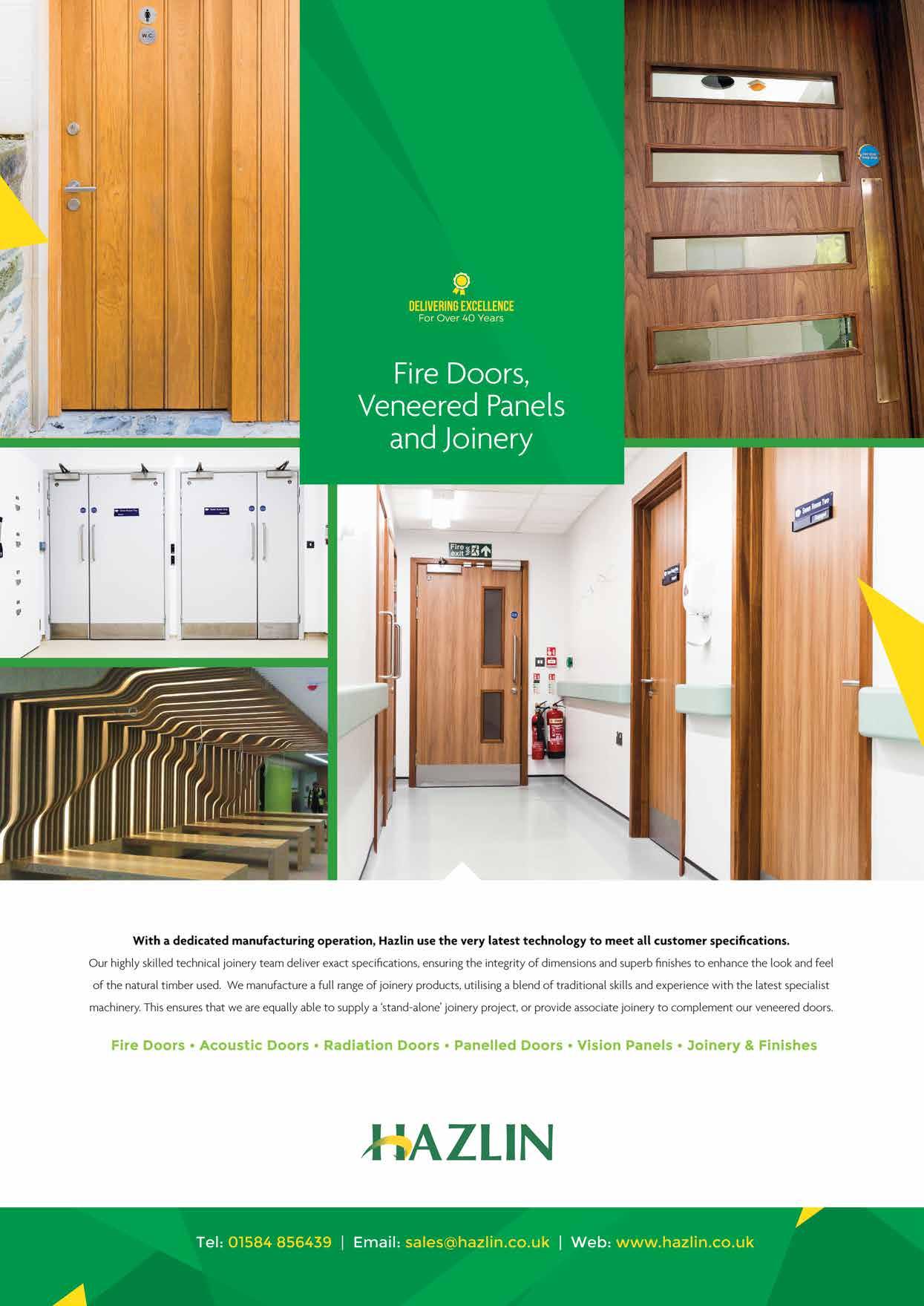


Explaining UKCA marking
After 47 years of membership, the UK left the EU on 31 January 2020. There followed a transition period during which the UK continued to participate in the EU Customs Union and the European single market. A Trade and Cooperation Agreement was negotiated so that the transition period ended at 11pm on 31 December 2020 with a deal called the EU-UK Withdrawal Agreement.
For the UK construction industry, the obligation to comply with the EU Construction Products Regulation (EU CPR) ended with the termination of the transition period and a new regulatory framework applies for construction products from 1 January 2021. This framework retains most of the characteristics of the EU CPR, but is complex in the way requirements vary between Great Britain (GB), Northern Ireland and countries within the European single market.
The UK Construction Products Regulations (UK CPR)
In 2019, as part of the UK Government’s preparations for leaving the EU, a new Statutory Instrument SI 2019 No. 4651 (the 2019 Amendment) was passed combining several pieces of existing legislation for Construction Products. These were:
• Regulation (EU) No. 305/2011 – the EU CPR.
• SI 2013 1387 – UK CPR 2013; these are the UK regulations that came into force with the EU CPR and made provision for its enforcement.
• Tertiary legislation originating in the EU, which was amended or, in a few cases, repealed. The amendments substituted references to the UK for references to the EU, rather than making technical alterations.
The list of tertiary legislation included in the 2019 Amendment is extensive (see Annex A2), but the legislation provides the legal basis for many assumptions made for construction products. In particular, the legislation establishes the reaction-to-fire classification of construction products and sets the system of assessment and verification of constancy of performance, commonly referred to as the Attestation and Verification of Constancy of Performance (AVCP) system or AVCP level, that must be applied for each product type. Standards committees and bodies involved in testing and certification may not change these assumptions.
The principal objective of the 2019 Amendment was to retain the EU CPR with as few changes as possible after the UK left the EU. In particular, the Amendment introduced UKCA marking (UK Conformity Assessment) to replace CE marking and provided for UKbased Approved Bodies to fulfil the tasks of EU Notified Bodies.
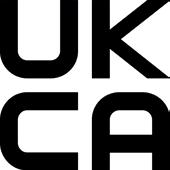

Negotiation of the Trade and Cooperation Agreement in 2020 led to a special status for Northern Ireland, enshrined in the Northern Ireland Protocol, so a further Amendment, SI 2020 No. 1359 (the 2020 Amendment), was necessary before the 2019 Amendment came into force. The 2020 Amendment ensures that the EU CPR continues to apply in Northern Ireland and restricts the 2019 Amendment to GB only (England, Scotland and Wales). Therefore, construction products that are CE marked can continue to be placed on the market in Northern Ireland.
However, if that CE mark is based on an assessment by a body in the UK (including Northern Ireland) it must be accompanied by a UK(NI) indication (i.e. CE+UK(NI) marking) since the assessment is not accepted outside the UK. Similarly, UKCA marking is not accepted in Northern Ireland and CE+UK(NI) marking is not accepted in GB for goods that originate in GB.
Within the NI Protocol the UK Government has undertaken to provide qualifying Northern Ireland goods unfettered access to the GB market, so these goods should be accepted in GB irrespective of their marking.
Neither Amendment is a consolidated text, so it is still necessary to refer to the original legislation for its substance. The 2019 Amendment is helpful in that it has hyperlinks to all the pieces of legislation that it cites. >>
Timber 2022 | 145 www.bmtrada.com
This extract comes from a BM TRADA technical bulletin and helps make sense of the post-Brexit changes to the certification of construction products.
UK(NI) mark
Materials Certification
UKCA mark



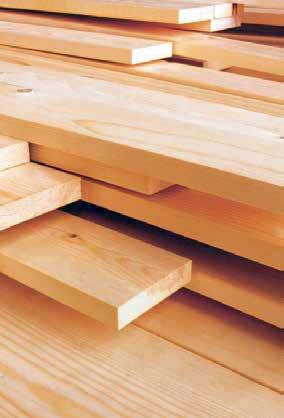
internationaltimber.com info@internationaltimber.com Setting the timber standard. Total solutions from International Timber HARDWOODS SOFTWOODS SPECIALIST PANEL ENGINEERED MODIFIED CLADDING
The changes
The Amendments came into force on 1 January 2021. The most important changes are shown in Table 1, whereby it is clear that the structure of the EU CPR is retained in its entirety.

The change in applicability of conformity marking by market is shown in Table 2 for the period 2020–22. Transitional arrangements allow CE-marked goods that meet EU requirements to be placed on the GB market until 1 January 2023, but there is no reciprocal arrangement for UK-assessed products to be placed on the EU single market during 2022.

The UK Government has legislated to provide a definition of qualifying Northern Ireland goods (SI 2020 14543) that will enjoy unfettered market access to the GB market. The definition includes any domestic goods that have undergone processing operation in NI only and which are not under any kind of customs restrictions.
Until 1 January 2023, products that meet Northern Ireland’s requirements and are appropriately marked (i.e. CE marking with or without UK(NI) indication) can be placed on the entire UK market irrespective of whether they are qualifying Northern Ireland goods.
Manufacturer obligations
The obligation on manufacturers to make a Declaration of Performance (DoP) and affix a mark on their product is unchanged. However, they must now decide in which markets they wish to place their products: the EU single market, Great Britain or Northern Ireland.
Dual marking
Dual marking is not prohibited, so a product can be placed on any one of these markets providing the relevant mark is affixed. The exception is the combination of CE marking with CE+UK(NI) marking since the two instances of ‘CE’ make conflicting claims of conformity.
Each marking will require its own DoP, AVCP certificate or Assessment of Performance (as applicable) and supporting documentation.
Third country status
From 1 January 2021, manufacturers based in GB are in a third country with respect to the European single market and Northern Ireland. Conversely, manufacturers in the European single market are in a third country with respect to GB, although the requirements for marking only apply from 1 January 2023. Manufacturers in Northern Ireland are effectively in the European single market, but also enjoy unfettered access to GB, which implies they are not subject to third country manufacturer obligations in either of these markets.
Once a manufacturer has established whether or not it is in a third country, its obligations are essentially unchanged to those in 2020. If the product falls within the scope of a designated standard or a harmonised standard, the manufacturer must:
• ensure all the necessary assessment tasks are completed in accordance with the system of attestation of conformity specified for the product
• compile the required technical documentation, make a DoP available and affix the conformity marking to the product
• establish and maintain a factory production control system. >>
Timber 2022 | 147 www.bmtrada.com
Table 2: Conformity marking by market, 2020–23
Materials Certification
Table 1: Summary of changes from the EU CPR to the UK CPR
Sustainable sourcing through Global Supply Chain arrangements

When it comes to choosing the right wholesale supplier for your business, you can count on ELLEN ENTERPRISES for quality products at affordable prices. We offer a wide selection of goods to individuals or businesses globally.
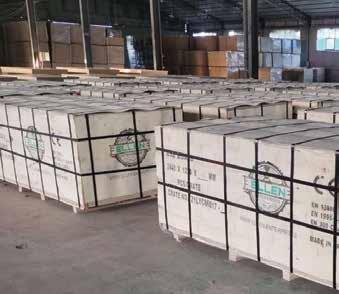
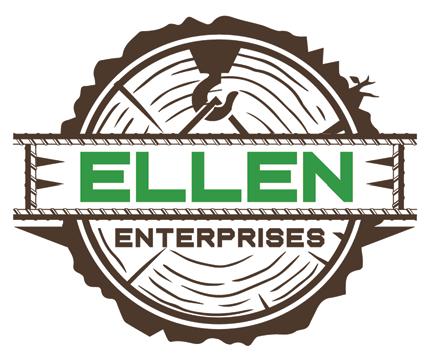
Some of the products and goods available include:
ShEET MaTERIaLS
VaRIouS PLywood aNd
oRIENTEd STaNdaRd BoaRdS (oSB)


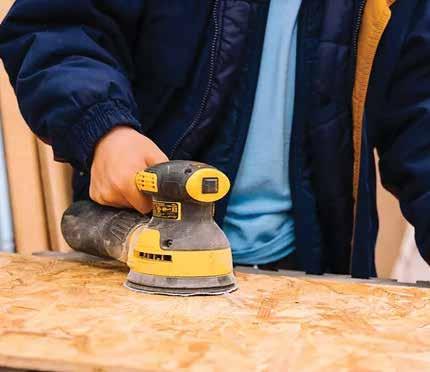
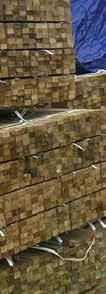
Our extensive range of sheet materials comprises everything you need for timber frame construction down to smaller decorative projects. We stock floor grade chipboard, MDF, Plywood, OSB and even laminated boards for shelving.
SoLId SawN LuMBER




SwaN CaRCaSSINg & CLS
Our sawn Carcassing Timber is treated to prolong the life, strength graded and stamped C16 or C24 and regularised for consistent sizing. We can also offer Austrian Whitewood Canadian Lumber Standard Timber (CLS Timber) Treated or Untreated.

SCaffoLdINg
woodEN aNd LVL SCaffoLdINg
This item is among the best selling products we supply and is a real customer favourite due to the high quality and commercially favourable prices and terms we can offer. Our items include galvanised end-banded BS2482:2009 wooden board or LVL scaffolding.
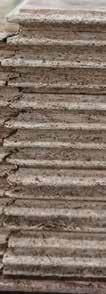
INSuLaTIoN
PLaSTERBoaRd
PLuMBINg SuPPLIES
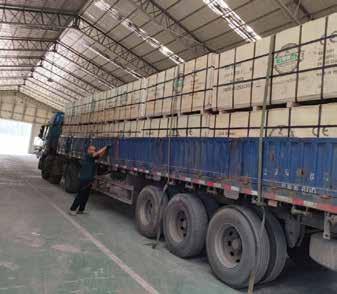
Call 020 4551 9589 today or visit www.ELLEN.enterprises Contact us to discuss your requirements or to use our fREE product specification service for your project.
Conformity
Depending on the AVCP system for the product, the manufacturer may need to appoint a Conformity Assessment Body (CAB), which is a Notified Body for the European single market or an Approved Body for the UK market. The CAB may be designated as a testing body or a certification body.

The UK Government has published a list of designated standards that is the same as the Official Journal of the European Union (OJEU) list of harmonised standards. This provides a basis for UK Approved Bodies to carry out their tasks.
If the product falls within the scope of a European Assessment Document (EAD), and the manufacturer wishes to affix CE marking for the EU single market, it must first arrange for a European Technical Assessment (ETA) to be issued, then complete the same tasks as for a harmonised standard. For the GB market, the UK Government has recently adopted a list of pre-Exit EADs that can be used to produce UK Technical Assessments (UKTAs) as a basis for UKCA marking. The cited EADs are those that were current in the EU immediately before 31 December 2020, which includes some European Technical Assessment Guidelines (ETAG) that could be used as EADs at that point in time, but excludes any new or revised EADs that have been adopted in the EU since.
There are several systems of AVCP for the attestation of conformity that are summarised in Table 3. The requirements for CAB involvement at each system are common to both the European single market and the UK market, but there is no mutual recognition of the CABs. The European Commission has withdrawn recognition of UK CABs with effect from 1 January 2021 and the UK is likely to reciprocate on 1 January 2023.
For AVCP 1, the test laboratory should be International Laboratory Accreditation Cooperation (ILAC) accredited to BS EN ISO/ IEC 17025:2017, 4 but the responsible CAB is a certification body. The laboratory should also meet the independence requirements of Article 43 of the CPR; using laboratories that are Notified or Approved Bodies ensures this is met. This implies that Notified Certification Bodies in the EU may continue to choose to accept test evidence from accredited laboratories based in the UK. UK Approved Certification Bodies working at AVCP 1 are similarly entitled to accept test evidence from laboratories based outside the UK to support UKCA marking.
For AVCP 3, the Commission has decided not only that future AVCP 3 test evidence is not accepted, but has retrospectively withdrawn the recognition of historic AVCP 3 test evidence from UK-based laboratories. This is of concern to manufacturers placing products on the European single market that have hitherto relied on this evidence for their DoPs. The UK will accept AVCP 3 test evidence from EU-based laboratories to support CE marking until 31 December 2022, but based on current understanding requires evidence from UK-approved laboratories for UKCA marking from 1 January 2023, which may give rise to further concerns for manufacturers supplying the UK market.
Authorised representative obligations
An authorised representative is mandated by the manufacturer to act on its behalf within the European Single market or the UK market. The representative must be established within the territory of the market where it is acting, irrespective of where the manufacturer is based. There is no obligation on the manufacturer to mandate a representative, but it may be useful for third country manufacturers.
The authorised representative must carry out the obligations in the mandate, which as a minimum include obligations to respond to requests for information from national authorities and to cooperate with national authorities to eliminate risks. The representative may be mandated to place the conformity mark on the product, but the manufacturer may not delegate its obligation to draw up technical documentation. The manufacturer must include the contact details of any authorised representatives in the DoP for the product. >>
Timber 2022 | 149 www.bmtrada.com
Materials Certification
Table 3: Summary of AVCP systems applicable to both the EU CPR to the UK CPR
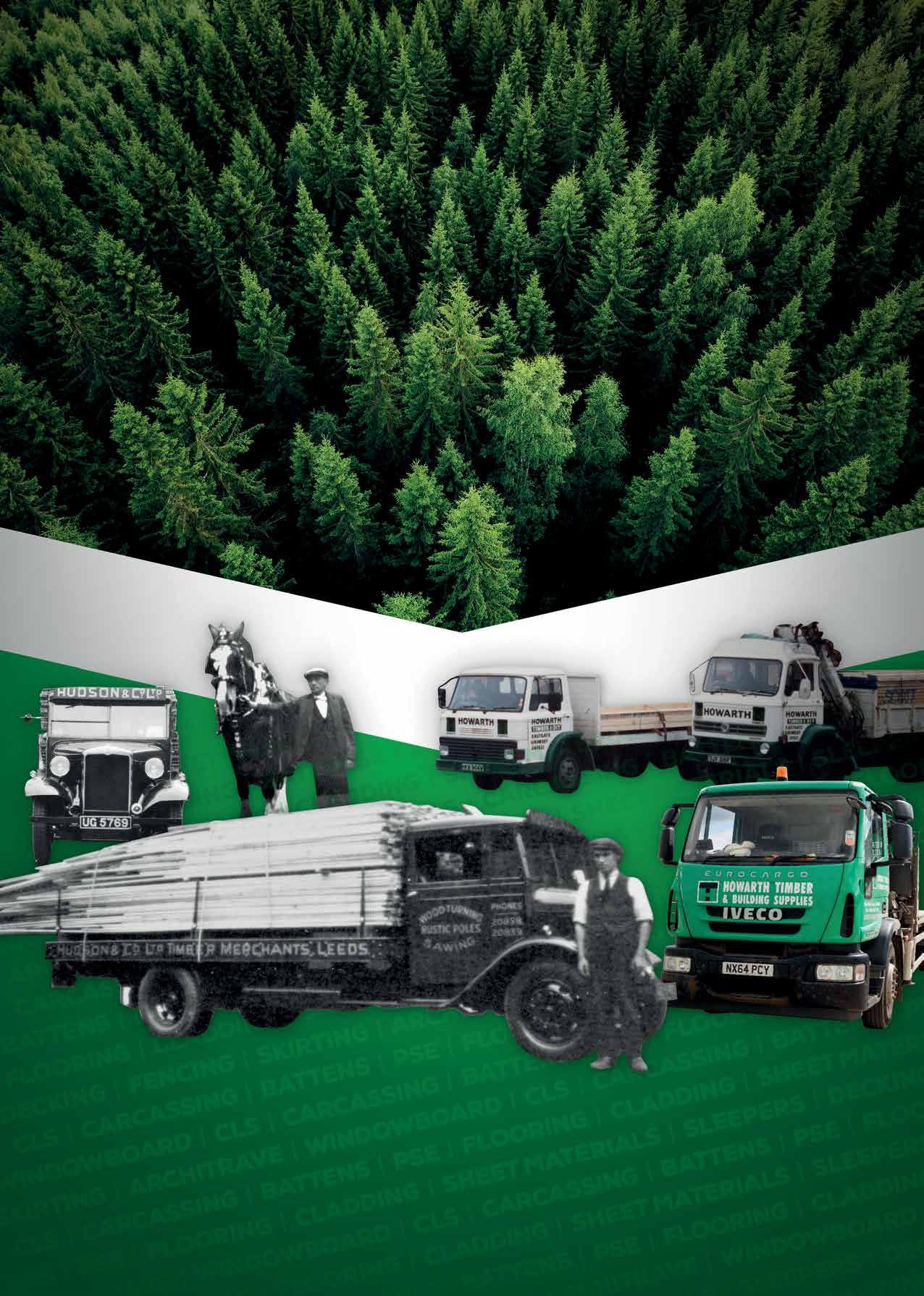
ORDER ONLINE 24/7 howarth-timber.co.uk Timber excellence across the years Always deliveringSINCE 1840 2021 Timber Garden Product Supplier of the Year WINNER ETHICALLY SOURCED & EXPERTLY SOLD Chain Of Custody Accredited Timber
Importer obligations
Many distributors in the UK market and the European single market may become importers as a consequence of Brexit. As with authorised representatives, importers must be established within the territory of the market where they operate. Importers have greater obligations than distributors since they are bringing the product into the market for the first time and must ensure it is compliant. Their obligations may be summarised as follows:
• ensure the conformity assessment has been carried out and that the manufacturer has drawn up the technical documentation and the DoP
• ensure that the product is marked correctly for the market
• provide their contact details with the product
• check the instructions are in a language easily understood by consumers
• keep registers of complaints and recalls, and conduct checks on the product if warranted
• inform market surveillance authorities (Trading Standards in the UK) if they realise the product is non-compliant
• provide information to market surveillance authorities on request
• keep records for at least ten years.
Many companies are well equipped to handle these obligations as they will previously have imported goods from outside the EU. However, some companies may look for guidance to industry associations and representatives.
The risk of divergence in the regulation of construction products
The complexity of the marking requirements, arising from creating three markets where previously only one existed, masks the current complete alignment of the technical requirements for designated and harmonised standards. It is in the interest of manufacturers for this alignment to continue, as it is likely to reduce the cost of compliance for those that operate in more than one market.

However, there are many reasons to assume that divergence will occur. For instance, the UK may decide to cite current published standards as designated standards rather than persist with the same versions as the EU, or the current review of the EU CPR by the Commission may lead to a revision that the UK does not wish to adopt. Divergence already exists in that EADs adopted in the EU since 1 January 2021 are not cited for UKCA marking. It remains to be seen whether UK Technical Assessment Bodies will produce new UK Assessment Documents that align with the EADs published by the European Organisation for Technical Assessment (EOTA) since the EU exit date.
Furthermore, the UK Government has announced the establishment of a Regulator for construction products, explicitly driven by evidence from the Grenfell Tower Inquiry. The announcement states: ‘Businesses must ensure that their products are safe before being sold in addition to testing products against safety standards.’ Although few details are yet available, the announcement implies that the UK Government is already looking beyond the current UK CPR. n
Further information
Prepared by the BM TRADA publishing team with the assistance of Hugh Mansfield-Williams, Niresh Somlie and Philip Howard. The full bulletin is available to download from the TRADA website: https://www.trada.co.uk/publications/ other-technical-guidance/technical-bulletin-ukca-marking/
References
1. STATUTORY INSTRUMENTS 2019 No. 465. The Construction Products (Amendment etc.) (EU Exit) Regulations 2019 www.legislation.gov.uk/uksi/2019/465/ contents/made
2. Annex A can be found in the full technical bulletin at www.trada.co.uk/publications/other-technical-guidance/ technical-bulletin-ukca-marking
3. STATUTORY INSTRUMENTS 2020 No. 1454 The Definition of Qualifying Northern Ireland Goods (EU Exit) Regulations 2020
4. BS EN ISO/IEC 17025:2017 General requirements for the competence of testing and calibration laboratories, BSI
Timber 2022 | 151 www.bmtrada.com
Materials
Certification
T:
Since the merger GP Wood is committed to investing 5 million in a range of initiatives including product enhancements.
the merger, GP Wood have invested heavily in a range of upgrades and initiatives to modernise our facilities and enhance our products.
GP Wood is one of Ireland’s largest suppliers of sawn softwood products.
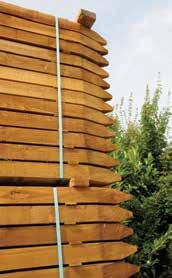
GP Wood is one of Ireland’s largest suppliers sawn softwood products.
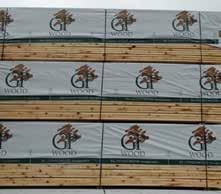
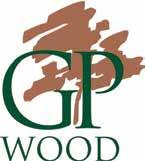
Contact Details:
Ireland HQ GP Wood, Main Street, Enniskeane, Co. Cork. Ireland
T: +353 (0)23 882 2500
F: +353 (0)23 884 7698 email: info@gpwood.ie
GP Wood understands the importance of softwood as a valuable renewable resource and is committed to promoting its use in an expanding range of new sustainable applications.
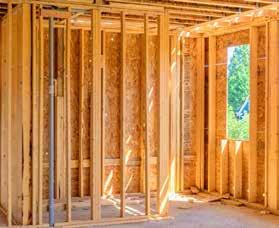
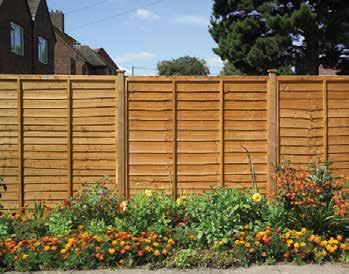


GP Wood was formed in April 2013 as a result of the merger of two of Ireland’s most successful and long established timber processing companies; Grainger Sawmills Ltd and Palfab Ltd, both based in County Cork. UK
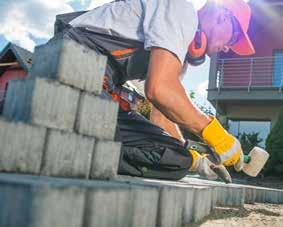

Taylor Maxwell House, The Promenade, Clifton, Bristol, BS8 3NW
T: (+44) (0)117 974 1382
F: (+44) (0)117 974 1402 email: bristol@taylor.maxwell.co.uk
web: www.gpwood.ie
152 | Timber 2022
Sales Office
Suppliers of Quality Timber & Building Materials
333
E: enquiries@alsfordtimber.com Timber • Sheet Materials • Bricks • Blocks • Aggregates Cement • Insulation • Landscaping • Joinery • Doors • Windows
Trade Prices Online www.alsfordtimber.com Suppliers of quality Timber & Building Materials
01322 333 088
enquiries@alsfordtimber.com
Timber Sheet Materials Bricks Blocks Aggregates Cement Insulation Landscaping Joinery Doors Windows Half Page.indd 4 18/01/2018 10:19:41 Suppliers of quality Timber & Building Materials
01322 333 088
Website:
Timber Sheet Materials Bricks Blocks Aggregates Cement Insulation Landscaping Joinery Doors Windows Half Page.indd 4 18/01/2018
01322
088
Access
Tel:
Email:
Website: www.alsfordtimber.com
Tel:
Email: enquiries@alsfordtimber.com
www.alsfordtimber.com
W L WEST & SONS LTD


Selham, Petworth West Sussex
GU28 0PJ
T: 01798 861611
W: www.wlwest.co.uk
E: sales@wlwest.co.uk

@wlwestsons
/wlwestandsons
Heritage and Expertise built from 1865
Family owned Sawmillers, Timber Merchants, Machinists and Fencing Contractors.
We offer bespoke machining facilities using 4 head and 7 head moulder.

Our workshop services facility includes a 5 Axis CNC - a Felder Format 4 Profit H350 which allows manufacture of complex shapes in timber, an edgebander for solid lipping’s and a Heated Press for paper card finishes and veneers.

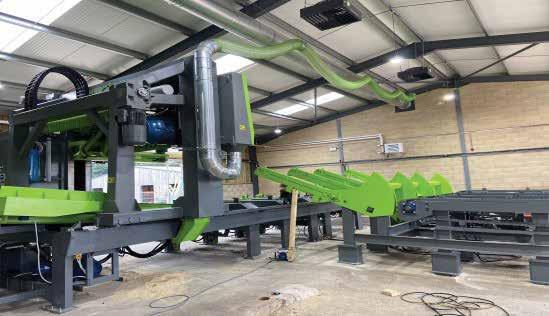

With our log sawmilling capability, a MEBOR HTZ1400 Extreme 20 - we are able to mill logs up to 8 metres long and 1.9 metres in diameter.
Please call our Sales Team to discuss your next project.



154 | Timber 2022





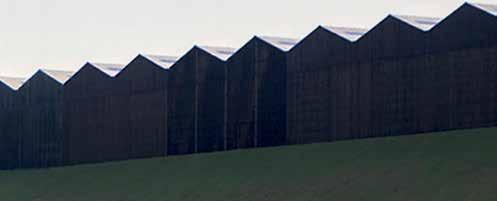




Contact Bergstraat 25 8511 Aalbeke Belgium vandecasteele.be genevieve@vandecasteele.be +32 56 43 33 00 dave@vandecasteele.be +44 15 94 83 43 32 Huge stock in certified timber: 120,000 m3, more than 140 different species. Our investments for engaged partnerships Post Brexit: we set up a company in the UK –Vandecasteele Timber LTD to facilitate our collaboration with UK partners Calculate your environmental impact on our website vandecasteele.be 2025 – our aim is to trade in Certified timber only from 2025 onwards
life,
Choose
Choose wood
New in the BM TRADA Bookshop
• Offers a comprehensive engineering guide to the specific topic of timber connections
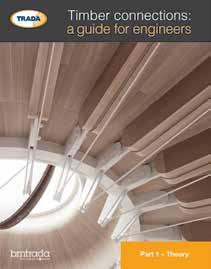
• Assists engineers with connection typology, design detail and the steps involved in verification by calculation
• Technical illustrations, calculations and worked examples support the comprehensive textual analysis of the topics and challenges of timber connections.

Order online at bookshop.bmtrada.com or bookshop.trada.co.uk
In this first part, the underlying theory of connections is explored. Part 2 – Further topics, Part 3 – Worked examples and Part 4 – Proprietary connectors will be released in due course. A full book bringing the four parts together will also be released, with an additional chapter of case studies demonstrating engineering aspects of connections.
Timber Frame Consultancy
BM TRADA’s frameCHECK✔ timber frame consultancy specialists inspect and report on the timber frame elements to help ensure that the building is being constructed in accordance with the specification and best practice, specifically looking at:
• Timber frame detailing
• Durability
• Fire resistance
• Acoustic performance
• Thermal performance
frameCHECK✔ timber frame consultancy can be carried out during the construction process, or on completed or stalled projects, giving you assurance that the timber frame building you have commissioned is being built correctly and to your requirements.
frameCHECK✔ timber frame consultancy services:
This specialist service aims to help improve the quality of build, reduce call backs and confirm compliance.
It is designed to benefit users of timber frame including:




• Affordable housing providers


• House builders
• Developers
• Warranty and control bodies
• Architects
For more information, visit www.bmtrada.com/advisory-services/timber-frame-consultancy
156 | Timber 2022

Sustainable wood flooring: an analysis
Peter Kaczmar examines the meaning of ‘environmentally sustainable’ wood flooring.
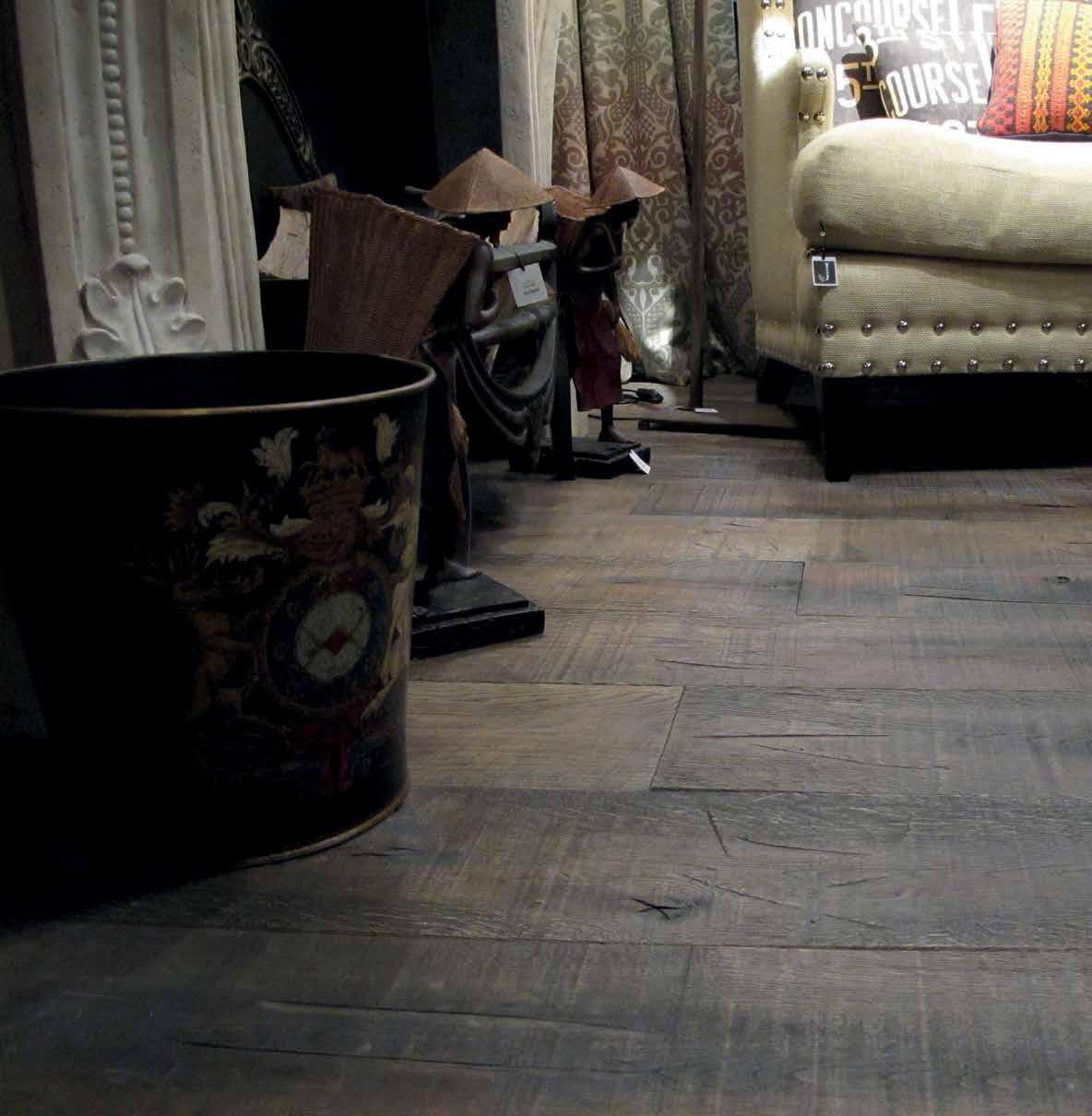
158 | Timber 2022
Select cask oak flooring.
Photo: Jeffreys Interiors
Materials
Timber flooring
Timber flooring has enjoyed a strong market position over the past two decades and much of the rationale behind this has been due to its unique visual appeal as a naturally sourced building material. However, more recently, and increasingly, the use of timber floor coverings has been advanced on the grounds of its environmental credentials.
Environmental sustainability
Converting a log to boards generally uses little energy and produces less toxic pollution to the environment than the production of most other construction materials, although the extent of transport, drying, machining and coating required, together with the maintenance demand of the end product, all have an obvious bearing on its total embodied energy.
The ‘environmental’ dialogue has shifted away from notions of embodied energy to those of ‘sustainability’, principally motivated by the need to maximise carbon sequestration in harvested products within the built environment.
Daly’s principles
Sustainability is the ability to continue a defined behaviour indefinitely. However, this definition, in the context of the built environment, makes little or no allowance for the environmental impact of that behaviour. This has subsequently led to the concept of ‘environmental sustainability’ based on pioneering work by Herman Daly1 who, in 1990, proposed that:
1. For renewable resources, the rate of harvest should not exceed the rate of regeneration (sustainable yield);
2. The rates of waste generation from projects should not exceed the assimilative capacity of the environment (sustainable waste disposal);
3. For non-renewable resources, the depletion of the non-renewable resources should require comparable development of renewable substitutes for that resource.
By applying Daly’s principles to the manufacture of solid wood and wood-based floor coverings, the first two principles can be met, some would say, relatively easily by ensuring that >>
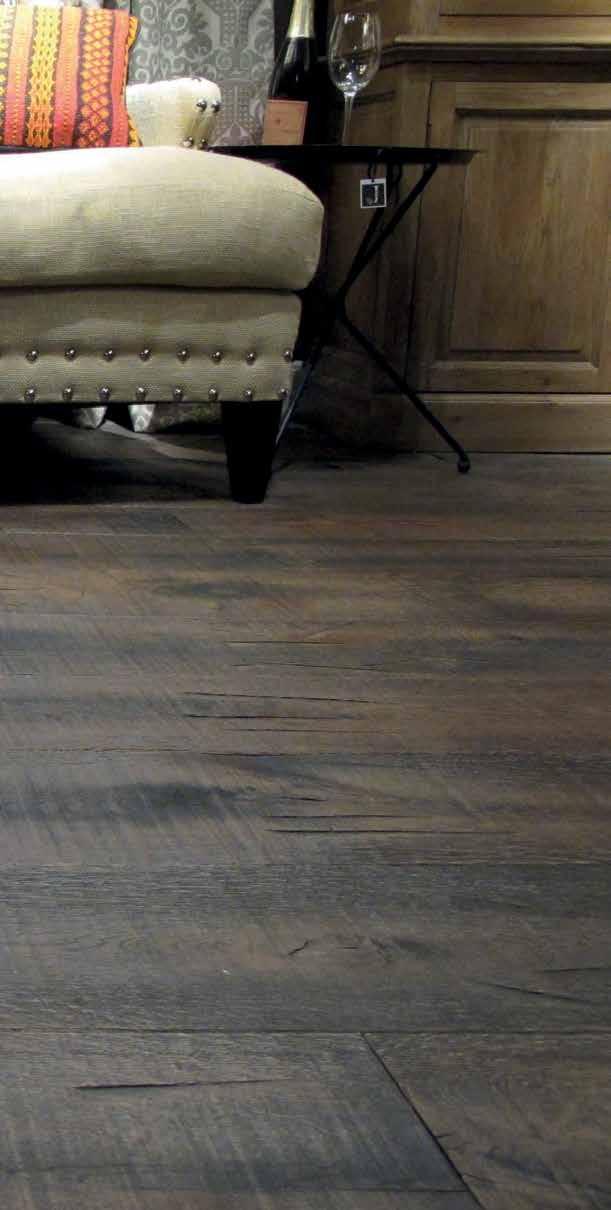
Timber 2022 | 159 www.bmtrada.com
“For timber flooring to be considered as truly sustainable, its in situ service life must exceed, or at least equal, the time taken for the wood from which it is made to have grown in the first place .”
Materials Timber flooring
Freedom to design with complete peace of mind
MAXimum Design Possibilities
MAXimum Flame Retardance*
MAXimum Environmental Commitment
SMARTPLY MAX FR B Industry leading Euroclass B OSB

Let’s do the right thing!
Comprising all the properties you would expect from a SMARTPLY OSB panel – strength, moisture resistance and no added formaldehyde – SMARTPLY MAX FR B is a new and innovative product which offers increased levels of fire protection for the creation of safer, more resilient buildings.
With a Euroclass B reaction to fire rating, SMARTPLY MAX FR B offers reliable assurance to specifiers, of its ability to suppress fire

To find out how we are setting new standards in timber panel engineering, go to www.mdfosb.com/max-fr-b
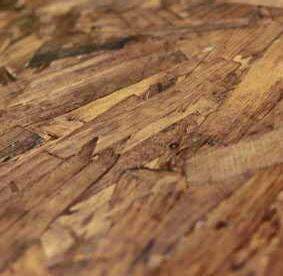
ignition and growth in the critical early stages of development, making it an appropriate consideration for modern methods of construction.
Smart, consistent and strong, with even greater flame retardance, ‘B’ sure to do the right thing with SMARTPLY MAX FR B**.
*Maximum Euroclass rating for a timber panel **This panel complies with the FR/FR Build performance requirements in accordance with STA’s (Structural Timber Association) “Design guide to separating distances during construction”.
all timber used in its manufacture (i.e. during primary and secondary processing) is:
• sourced, harvested and processed using certified and legitimate renewable stocks;
• harvested, processed, manufactured and installed using renewable energy sources;
• disposed of at end of life in a manner that can be assimilated by the environment.
In today’s parlance, the latter is likely to mean either incineration for energy generation or composting, but only if the amount of carbon released can be demonstrably balanced by the regenerative demands of successive plantations used in the manufacture of any future wood or wood-based flooring products that are used to replace it on a ‘quantum-for-quantum’ basis.
Not all wood flooring will necessarily be in compliance with Daly’s third principle since this will depend on whether all the resources used in its manufacture can be shown to be renewable (and biodegradable). This may include a host of man-made polymers and composites used in the production of multi-layered and engineered flooring, including the adhesives used in its manufacture or indeed the materials going into the production of the seals, lacquers or overlays that are used to finish it. The demands of Daly’s third principle are unlikely to be satisfied by flooring variants whose manufacture involves non-renewable materials such as melamines or non-degradable polymers and composites. In reality, this means that only flooring made from unlacquered and untreated solid wood is likely to come close to satisfying the above principles of environmental sustainability.
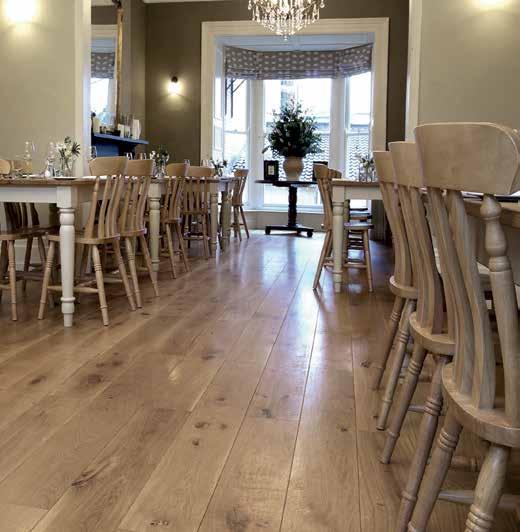

Social and economic factors
Since their original introduction, it is now generally recognised that Daly’s principles do not take account of social or economic factors that a sustainable system, reasonably, should be capable of supporting. This automatically introduces additional pressure on whether a particular commodity can truly be said to be environmentally sustainable since the achievement (and maintenance) of a given quality of life is likely to go hand in hand with regular alterations in lifestyles and/ or local environment. This can be driven by a variety of factors from moving house to fashion or even boredom which, in the case of wood flooring, may prompt its regular and premature replacement before its functional service life has come to an end, as fashions or needs dictate.
This introduces a conundrum in the concept of environmental sustainability in that it exerts additional pressure on Daly’s first two principles of sustainable yield and sustainable waste generation. Expressed in simple terms, for timber flooring to be considered as truly sustainable, its in situ service life must exceed, or at least equal, the time taken for the wood from which it is made to have grown in the first place. By curtailing its in situ service life through premature and/or frequent replacement, a carbon deficit will be produced and any credentials of environmental sustainability of the flooring will be diminished or lost >>
Timber 2022 | 161 www.bmtrada.com
Materials Timber flooring
Tectonic® Regency Antique Grey Aged Oak boards, Georgian House, Somerset.
Photo: Chaunceys Timber Flooring
Bristol Tectonic™ – FSC®-certified oak flooring at The Cow Shed Restaurant, Bristol.
Photo: Chaunceys Timber Flooring


Your Local Timber Specialist Timber decking In Hardwood or Softwood 01634 290909 www.morgantimber.co.uk Morgan Timber • Knight Road • Rochester • ME2 2BA (Please use postcode ME2 2AH to find us on satellite navigation) Solid Timber Worktops In stock or made to measure Huge Stocks of Timber Top quality hardwood and softwood Cut and planed to your sizes Any profile matched Solid Hardwood Flooring Produced to order in any timber Oak Fireplace Beams Cut to size from seasoned oak Quality Timber Hardwood Softwood MDF Plywood Bespoke Machining Decking Cladding Structural Timber Thermally Modified Hardwood
Cascading timber utilisation
To offset this phenomenon, the concept of cascading timber use can show how to prolong the useful lifetime of the timber from which the flooring was made over and above the time taken for the wood to grow. This can be done through a process of recycling and re-use of the original flooring either by reworking or through its incorporation into new products (e.g. laminated window sections), or even by chipping to be used in the fabrication of alternative building products such as oriented strand board (OSB) or fibreboard. In this manner, end use diversification of a particular wood resource (in this case wood flooring) can be achieved and its useful lifespan extended so as to bring any carbon deficit back into balance and achieve better circularity within the natural carbon cycle.
Summary
Ultimately the level of environmental sustainability that can realistically be achieved through the selection of wood and wood-based flooring depends, in part, on the type of resources and processes involved in making it but, more importantly, on the manner in which it is used over the whole of its life and the time frame during which it can serve a useful purpose. This may or may not involve its incorporation into alternative products whose function differs markedly from that of the original.
Given the pivotal role environmental sustainability has to play in light of our own man-made climatic crisis, today’s producers are eager to make claims of sustainability for commercial advantage which, all too frequently, are themselves ‘unsustainable’ when examined critically. It is not possible to simply brand a product such as wood flooring as ‘sustainable’ without knowing how it will be used, how frequently it will be replaced and, more importantly, how and when it will be integrated into the carbon cycle at the end of its life. n
About the author
Peter Kaczmar Senior Consultant BM TRADA

Further information
To find out more about timber and sustainability, visit www.trada.co.uk/sustainability
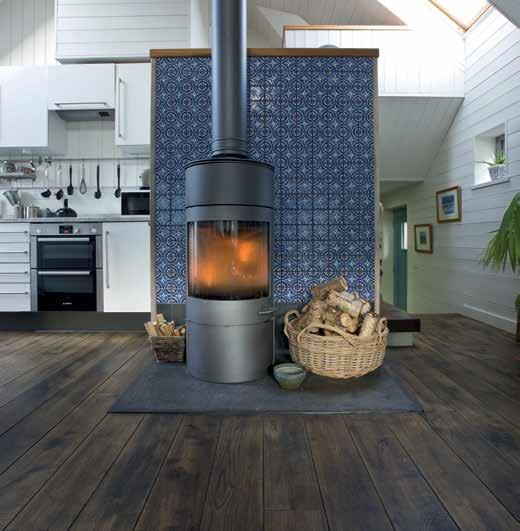

Further reading
• WIS 2/3-59 Recovering and minimising wood waste, BM TRADA, 2020
• WIS 4-31 Life cycle costing, BM TRADA, 2019
• www.ukgbc.org/ukgbc-work/net-zero-whole-life-roadmap-forthe-built-environment
• https://woodforgood.com/lifecycle-database
References
1. Daly, H. E., ‘Toward some operational principles of sustainable development’, Ecological Economics, 2:1–6, 1990
Timber 2022 | 163 www.bmtrada.com
Timber
Materials
flooring
Unfinished character B oak flooring
hand-finished with Russwood antique hardwax oil. Photo: Russwood
Express Ebony Oak Flooring. Photo: John Paul Photography
Forest Stewardship Council® (FSC) UK web: uk.fsc.org / email: info@fsc-uk.org / phone: +44
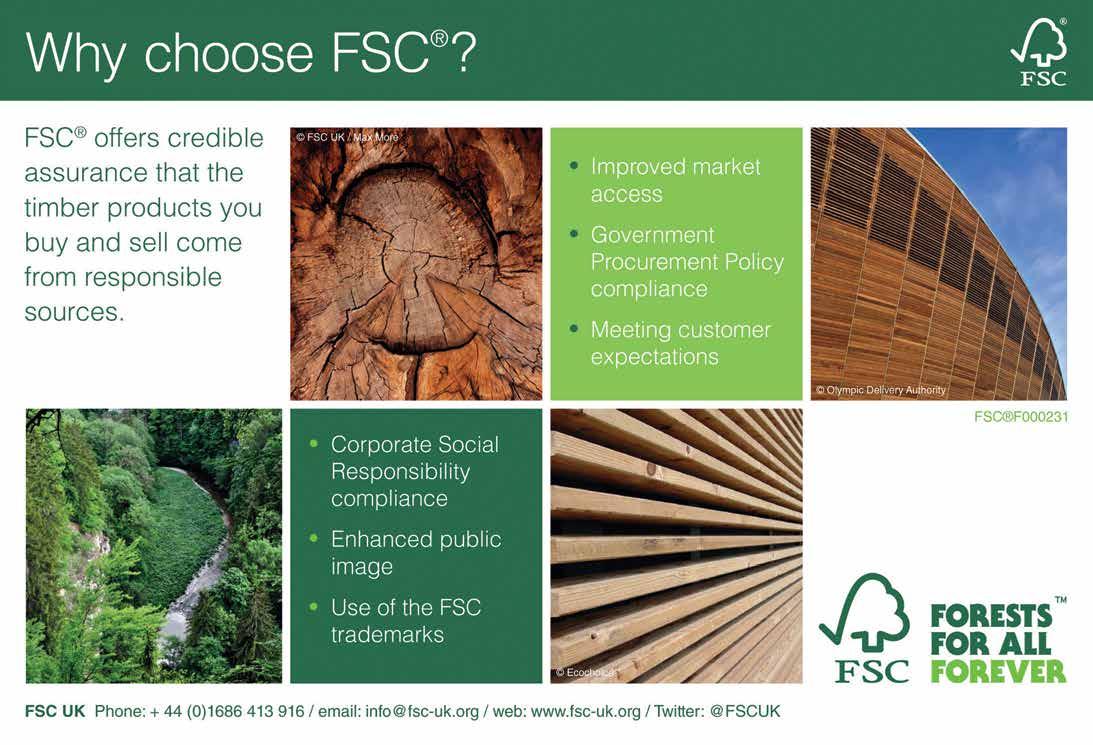


FSC®F000231
Importers and Distributors of Quality Plywood and Panel Products

Tel: 01989 769011
Website: www.altripanuk.com
• Fax: 01989 481019
• Email: sales@altripanuk.com
Associated Companies
ALTRIPAN N.V
ALTRIPAN AGENCIES LTD
Plywood and Panel Product Agents
Importers of: MALAYSIAN, INDONESIAN, BRAZILIAN, CHINESE, CANADIAN, ARGENTINIAN, CHILEAN, AMERICAN, RUSSIAN, URUGUAYAN PLYWOODS AND PANEL PRODUCTS

ALTRIPAN N.V The European Plywood Platform Altripan was founded in 1968 and are the leading independent importer on the continent for wooden panels from all over the world.
LUTHAGEN HAVEN 19, 2030 ANTWERPEN, BELGIUM
Tel: +32 (0)3 542 61 60
Email: info@altripan.be
Web: www.altripan.be
PANEL PRODUCT RANGE, PLYWOOD, BLOCKBOARD, MDF, OSB, CHIPBOARD & HARDBOARD
Look for our FSC®-certified products: FSC® SOFTWOOD PLYWOOD / FSC® HARDWOOD PLYWOOD / FSC® MDF / FSC® CHIPBOARD. PEFC SOFTWOOD PLYWOOD / PEFC HARDWOOD PLYWOOD / BIRCH PLYWOOD / WIRE MESH PLYWOOD / FILM FACED PLYWOOD / HARDWOOD PLYWOOD / SOFTWOOD PLYWOOD / MARINE PLYWOOD / BLOCKBOARD / LARGE SIZE PLYWOOD & SPECIAL PANEL PRODUCTS.
siberian timber ( uk) LtD has been invoLveD in the import of siberian sawn Larch into the uk anD the majority of other european countries since 2001.

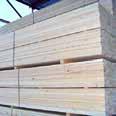
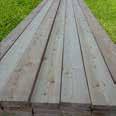
We have also longstanding customers in the USA, Japan, Kazakhstan and recently acquired orders from India. Siberian Timber are now increasing volumes of Russian redwood (pine) and spruce for the UK market.
Prices for all products are competitive and quality is consistent and assured. Please contact our sales office for quotations on price and delivery.
UK office Bob Wynne
Siberian Timber U.K. LTD


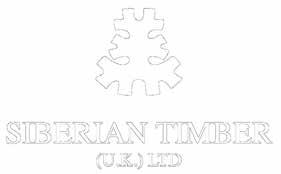
UK, CIS & Baltics States Managing Director
GSM: +44 7821 322 532
Land line: +44 1352 756 866 e-mail: bob@siberiantimber.co.uk
www.siberiantimber.co.uk
164 | Timber 2022
(0)
916
1686 413
WE’RE SERIOUS ABOUT TIMBER
We offer a wide range of high quality timber products from sustainable sources. Our knowledgable staff can help out with any questions you may have.
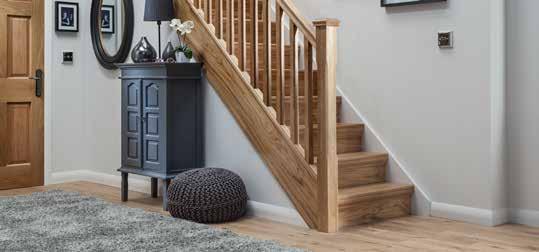
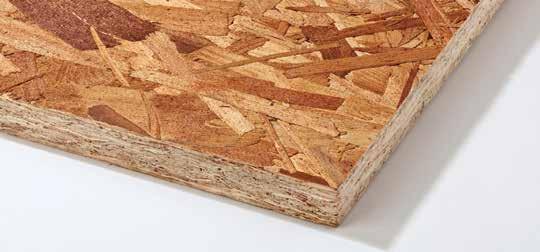
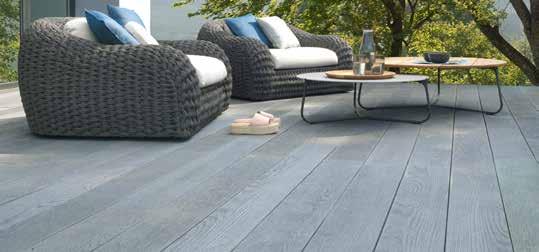
To ensure your timber needs are fulfilled, work closely with your local branch & forward plan your requirements.
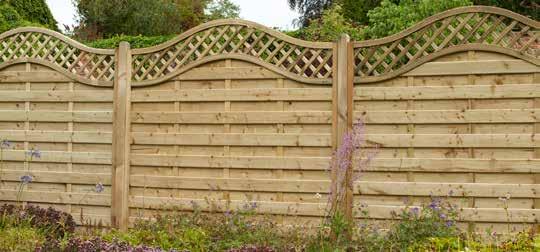
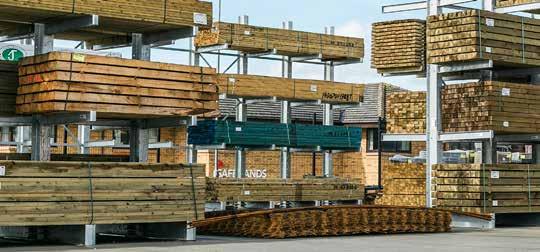
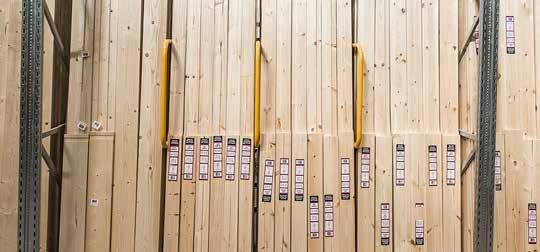
There’s an MKM near you... OPEN TO TRADE & PUBLIC - MONDAY TO SATURDAY 0330 333 1555 | mkmbs.co.uk
DECKING
SHEETS PSE & MDF MOULDINGS JOINERY CARCASSING FENCING
SOmeRSeT BASeD TimBeR SuppLieRS
Unit 16, Walronds Park, Isle Brewers Lane, Taunton, Somerset, TA3 6QP
T 01460 281225
www.co2timber.co.uk

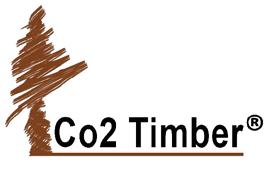
Specialists in producing cladding, decking and flooring in a number of different types of timber to suit your budget and taste. Our experienced team is always on hand to offer guidance on all aspects of the products we produce.
Canadian Western Red Cedar | Siberian Larch | Red Grandis | American Douglas Fir Balau | Lignia | British Western Red Cedar
We specialise in producing Timber Cladding in a variety of styles suitable for you to timber clad your projects.
We pride ourselves in quality and customer service we provide. If you are concerned about your carbon footprint, sustainability and the effects you are having on our planet, Co2 Timber are the company to choose.
We can deliver Nationwide via the Pallet Courier Network – International deliveries also available.
All the timber we supply has a low carbon footprint without compromising the quality of the timber. Here at Co2 Timber we aim to keep our carbon footprint and that of the products we produce to a minimum and encourage sustainable practices. We use our off cuts in our commercial wood burning stove to heat our workshop in winter and provide heat for our kiln drying process.
We supply to Trade, DIY’s, Contractors, Builders, Manufacturers, Architects. Being a sawmill we offer a bespoke service for all those non standard size planks, boards and cladding and can cut to size and finish as required.

166 | Timber 2022
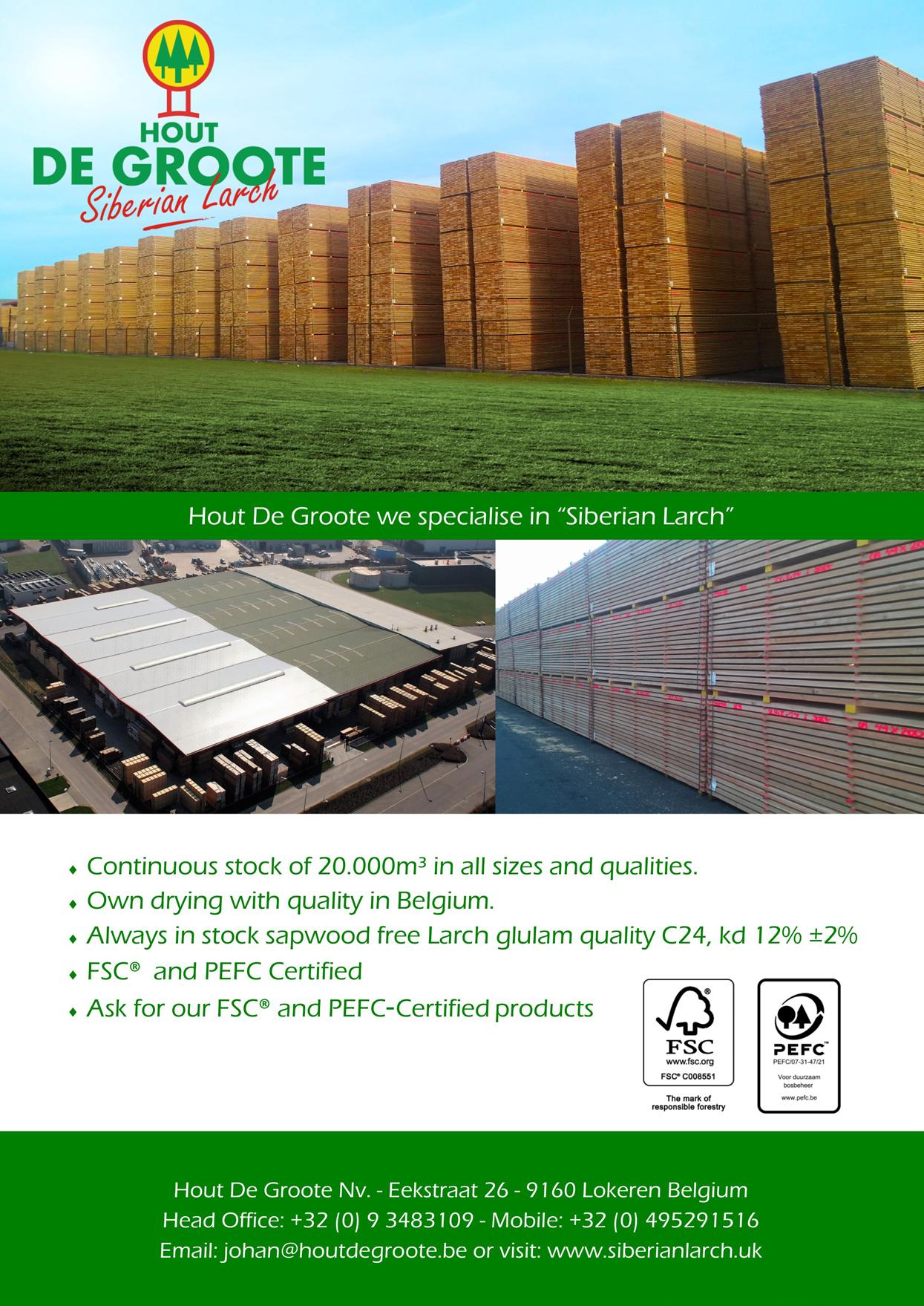
We are an independent family owned and run timber importer based in Goxhill, North Lincolnshire. We mainly specialise in large-section timber, irregular sizes and long lengths and are able to provide the non-standard sizes that many others cannot.
• Specialists in large section timber, irregular sizes and long lengths. Sections 600 x 600 and lengths to 15m
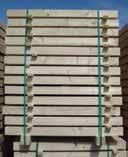
• British and European white wood, red wood, Douglas-fir and Oak

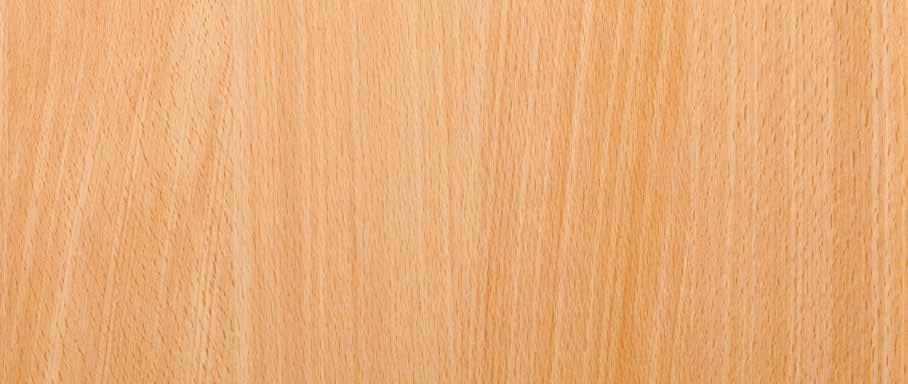
• Delivery nationwide. From full direct loads to small orders, or custom sawn and cross cut to exact specification
• Strength grading C16/C24 to BS 4978
• Planed, treated timber, railway sleepers, tile battens, arris rail, feather edge boards, telegraph poles, glulam and more


• Our customer base consists of timber importers and merchants as well as national chains of builders’ merchants

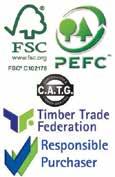

T: 01469 532 922 E: info@longlengths.com W: www.longlengths.co.uk
Let's talk about the wood house effect
Cities are growing, and so are trees. With wood as a construction material, we can bring the forest to the city by building higher, lighter and stronger than ever before. By 2060, global housing needs to double, and emissions need to go down. When using wood as a renewable material that keeps growing back, a truly sustainable future of building is possible. We call this the wood house effect. storaenso.com/WoodHouseEffect

168 | Timber 2022
StoraEnso_STA_UK_210x148.indd 1 2021-09-02 16:09:51

Studio Bark – No Building As Usual
Addressing learning, diversity and the climate emergency through a live build. Tabitha Binding reports.

170 | Timber 2022
No
Building As Usual (NBAU) project – week 8.
Photo: Studio Bark
Education Architecture
Afeature on Grand Designs in 2014 led to clients approaching Studio Bark to develop a single-storey eco-home that would meet their accessibility and lifetime needs, and enable planning permission to be obtained on agricultural land in a Herefordshire hamlet.
Could this project become a cross-sector live-build climateliterate summer school with students from across the UK?
Wilf Meynell thought so, ‘We found that we can teach better through a live build rather than within the context of a university […] there’s no point just us as a practice designing (and building) a few eco-homes if we’re not passing on knowledge to the next generation of designers.’

U-Build, developed by Studio Bark and Structure Workshop, is a is totally demountable, expandable, reusable, repairable and recyclable modular system based on CNC-cut plywood panels that click and screw together to form open or closed boxes (cassettes). These boxes are bolted together, insulated, membraned and clad to form ridged frames for studios or homes that can be self-built. Conceived as a low-carbon impact building for the circular economy, the foundations are often concrete free using adjustable foundation systems, such as Jackpads®
Learning via a live build
From more than 120 applications, a diverse group of 12 students, with a balance of ages, backgrounds and skill levels, was selected for the No Building As Usual (NBAU) project.
Ada, Aurora, Gracious, Jay, Kyle, Maria, Matilda, Matt, Mersei, Rose, Salome and Terri-Louise arrived in Herefordshire to build their off-grid camp and ready the site for construction. They stayed for ten weeks, some a little longer, and built Nest House.
I caught up with Terri-Louise, Salome, Gracious and Rose to hear about their experiences.
Terri-Louise Doyle is undergoing her sixth year as a Part 2, MArch Architecture student at Sheffield Hallam University.
‘I applied for NBAU as it aligned with my core values, ethos of sustainability and inclusivity. >>
Timber 2022 | 171 www.bmtrada.com
Education
“These 12 diverse university students from across the UK have added invaluable practical knowledge to their theoretical knowledge and learnt how to build simply and sustainably with timber in a warming climate.”
Architecture
Education Architecture
I learned about the processes for putting a building together, from start to finish, and how to make intentional choices in my design work to positively impact society and the planet.
‘I enjoyed how theory and practice went hand in hand, allowing for a truly in-depth and pragmatic learning experience. Lewis Taylor from BM TRADA spoke to us about the tolerances that we would need to design in on account of the expansion and shrinking of the material before we prototyped the cladding designs with Douglas fir.
‘Being immersed in the work prompted questions that we wouldn’t usually think to ask and we gained insights from construction professionals across the industry.’
‘My highlights included the physical building, from our camp to Nest House and raising the roof on the lower barn. Experiencing first-hand the actual output from reading a drawing to building from it is incredible; coordinating with the team and external contractors provided a sense of holistic understanding and respect.
‘Living with 11 other people, sharing food, cultural exchanges and experiences, as a team, it felt as if there was nothing we couldn’t accomplish together and we found strength in our differences.

‘Some challenges included rain – scaffolding did not arrive so we had to improvise a large tarpaulin covering to keep the build dry as we built before we could make the house watertight with a breathable membrane.
‘The teaching was really effective; we received training from practising professionals and then applied what we learned to build a modular U-Build house from scratch. This enabled us to retain information more effectively as we physically applied the shared knowledge on the next construction stage.
‘NBAU has firmed up my aspirations to work in harmony with the natural environment, to design better spaces and futures from low-impact, local materials, reducing waste and to work collaboratively with other multifaceted built environment professionals.’
Salome Mulenga is in her first year studying for a BA in Architecture and Landscape at the University of Sheffield.
‘I applied to gain a better understanding of sustainable building design. Through hands-on experience and workshops,
Gracious Muzamhindo has completed Part 1 Architecture at Liverpool John Moore’s University.
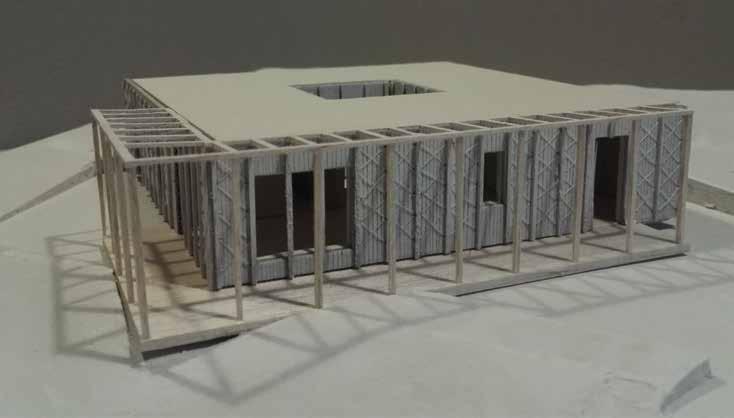
‘NBAU was a once-in-a-lifetime opportunity to learn more about using sustainable solutions to design and construct buildings – something I had never heard much about before. Each choice made throughout the build was to minimise the environmental impact of the building. It has significantly impacted how I will design.
‘I learned in depth about how timber can be included in almost every part of a build, and the basics about species, products, moisture, fire and designing for durability and longevity. I led on insulating the roof, building the roof beams, cutting the cladding and on the interior design, but it worked because we were a great team.
‘It has been such an amazing experience to see how every element of a build translates from paper to real life; I enjoyed performing tasks that showed visible progress, especially with
172 | Timber 2022
Nest House concept model. Source: Studio Bark
The NBAU students: Standing (left to right) – Jay, Maria, Gracious, Salome, TerriLouise, Rose, Kyle, Matilda. Seated (left to right) – Mersei, Aurora, Matt, Ada.
Photo: Studio Bark
such a supportive group of people. It has affected what I think architecture is and the role I want to play – and given me an appreciation for engineers and construction workers.’

Rose McKiernan is in her second year studying Part 1 Architecture at Queen’s University Belfast.
‘I had no practical experience in construction but was keen to learn about timber and its use in sustainable architecture, work with my peers and with a practice at the forefront of eco design and modern methods of construction.
‘I learnt about using hand tools and power tools and choosing the right fixings; about the properties of timber, its age and moisture content. We used different types of timber and timber products in the construction, and I was able to see which is best for each part of the house.
‘We also constructed our own temporary barn structure using offcuts, sapwood pieces and other materials on site. It was very rewarding to be resourceful and put knowledge into practice.
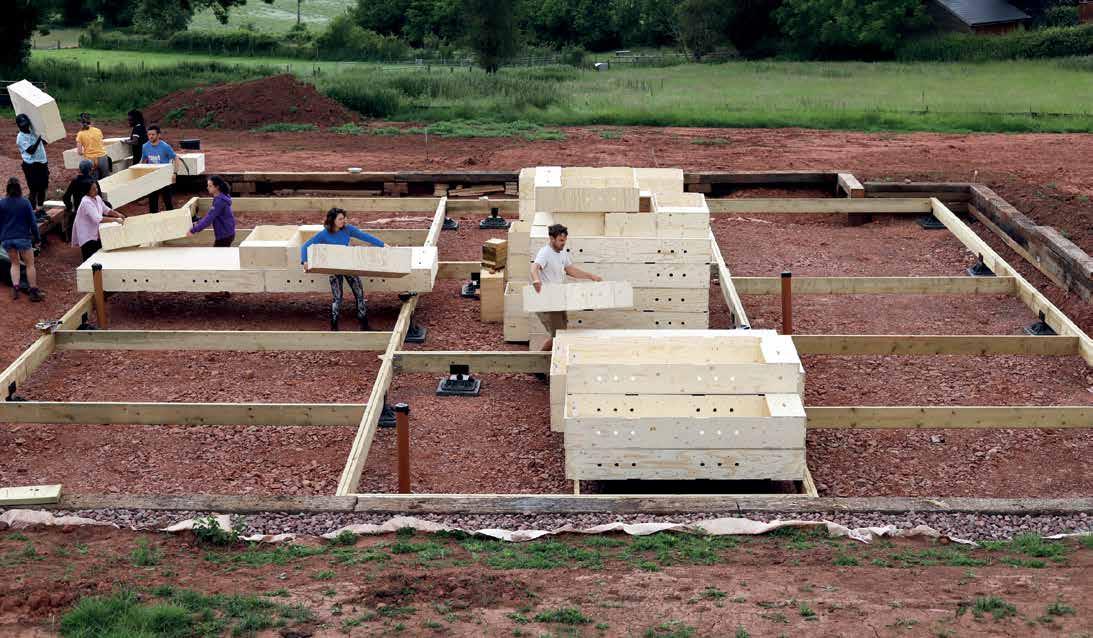
‘I have benefited immensely from working on each step of the process, from the drawings to the completed home. I’d now like to focus on sustainable architecture, especially finding ways of using materials with less environmental impact and with low embodied carbon.’
End result
These 12 diverse university students from across the UK have added invaluable practical knowledge to their theoretical knowledge and learnt how to build simply and sustainably with timber in a warming climate. n
About the author
Tabitha Binding
Education and Engagement
TRADA
Timber Trade Federation
Timber Development UK
Further information
Studio Bark is an award-winning architectural practice set up in 2014 by Wilf Meynell and Nick Newman to create high-quality, sensitive, environmental design.
The NBAU Programme was sponsored by www.cgluk.com | www.kinrise.com | www.thermafleece.com | www.grimshaw. global | www.makearchitects.com | www.darlingassociates.net | www.ttf.co.uk | www.nmite.ac.uk | www.forbo.co.uk and supported by RIBA, Structure Workshop, TRADA and ACAN.
Timber 2022 | 173 www.bmtrada.com
Week 1 of the live build.
Education Architecture
Photo: Studio Bark
Wood Information Sheets (WIS)
Comprising more than 70 specialist documents, these form a comprehensive source of vital information on timber and its use in construction. They are updated on a ‘rolling needs’ basis.
WISs are available to purchase at bookshop.bmtrada.com or bookshop.trada.co.uk
Number Title
TIMBER – GENERAL
WIS 0-14Specifying timber for healthy buildings
WIS 2/3-6Wood decorative and practical
WIS 2/3-10Timbers – their properties and uses
WIS 2/3-28Introducing wood
WIS 2/3-37Softwood sizes
WIS 2/3-56CE marking: implications for timber products
WIS 2/3-58Sustainable timber sourcing
WIS 2/3-59Recovering and minimising wood waste
WIS 2/3-63Modified wood products
WIS 2/3-66Specifying timber species in marine and freshwater construction
WIS 2/3-67Specifying British-grown timbers
WIS 2/3-70 Specifying metals for use with timber
WIS 2/3-72 Carbon and timber in construction for building designers
WIS 4-14Moisture in timber
WIS 4-31Life cycle costing
WIS 4-33Life cycle assessment
TIMBER FRAME CONSTRUCTION
WIS 0-3Introduction to timber frame construction
WIS 0-5Timber frame building: materials specification
WIS 0-10Surveys of timber frame houses
WIS 0-11Improving the thermal performance of existing timber frame buildings
WIS 1-35Breather membranes for timber frame walls
WIS 1-48Sole plates in timber frame construction
WIS 1-49Cladding for timber frame buildings
WIS 2/3-64Timber frame design for flood-prone sites
WIS 2/3-65Principles of green oak construction
WIS 4-15Condensation control in dwellings
WIS 4-30Fire performance of timber frame dwellings
WIS 4-32Acoustic performance in residential timber frame developments
STRUCTURAL USES
WIS 0-1Timber in swimming pool hall construction
WIS 1-6Glued laminated timber
WIS 1-17Structural use of hardwoods
WIS 1-34Assessment and repair of structural timber
WIS 1-37Introduction to Eurocode 5
WIS 1-42Timber I-joists: applications and design
WIS 2/3-31Adhesives for structural use
Number Title
WIS 2/3-36Design of structural timber connections
WIS 2/3-51Timber engineering hardware and connectors
WIS 2/3-52Fasteners for structural timber: nails, screws, dowels and bolts
WIS 2/3-62Cross-laminated timber: structural principles
WIS 2/3-68SIPs: introduction for specifiers
WIS 2/3-69SIPs: structural principles and design
WIS 4-7Timber strength grading and strength classes
WIS 4-22Adhesive-bonded repair systems for structural timber
WIS 4-23Non-destructive testing of timber
FLOORS/ROOFS
WIS 1-10Principles of pitched roof construction
WIS 1-29Trussed rafters
WIS 1-36Timber joist and deck floors – avoiding movement
WIS 1-41Strutting in timber floors
WIS 1-46Decorative timber flooring
PANELS
WIS 2/3-11Specification and use of wood-based panels in exterior situations
WIS 2/3-17Wood-based sheet materials for formwork linings
WIS 2/3-23Introduction to wood-based panel products
WIS 2/3-57Specifying wood-based panels for structural use
WIS 2/3-61Cross-laminated timber: introduction for specifiers
JOINERY
WIS 1-13Performance of fire-resisting timber doorsets
WIS 1-32Upgrading timber doorsets for fire resistance
WIS 1-47Timber external doors
WIS 4-16Timber in joinery
EXTERIOR USES
WIS 0-13Timber in playground equipment
WIS 1-12Timber fencing
WIS 1-31Timber for landscape architecture
WIS 1-50Timber cladding for building refurbishment
WIS 2/3-60Specifying timber exposed to weathering
WIS 2/3-71 Specifying externally exposed timber structures
WIS 4-28Durability by design
PROTECTION
WIS 2/3-1Finishes for external timber
WIS 2/3-16Preservative treatment for timber – a guide to specification
WIS 2/3-32Fungi and insect pests in timber
WIS 4-12Care of timber and wood-based products on building sites
WIS 4-17Insect pests in houses
FIRE
WIS 2/3-3Flame retardant treatments for timber products
WIS 4-11Wood-based panel products and timber in fire
NEW
Denotes WISs that are mentioned in the NATIONAL STRUCTURAL TIMBER SPECIFICATION
WIS YB Advert 2022.indd 1 16/02/2022 13:45:48
Publications
The best books on timber design and construction are available from the BM TRADA bookshop

bookshop.bmtrada.com
Timber connections: a guide for engineers
Part 1 – Theory
Timber connections will assist the engineer with connection typology, design detail and the steps involved in verification by calculation. Technical illustrations, calculations and worked examples support the comprehensive textual analysis of the topics and challenges of timber connections. In this first part, the underlying theory of connections is explored.
Designing timber structures: an introduction
An essential primer for those new to designing and engineering with timber. It is written in a clear and engaging style and the book’s notable strength is its full-colour illustrative detail that brings the subject to life.

Site check: The timber frame pocket guide

A concise summary of on-site best practice in timber frame construction. Checklists and illustrations of core activities enable you to verify that work is of the highest standard. Researched and written by experts representing BM TRADA and the STA.

Eurocode 5 span tables 4th edition
Frequently highlighted by Building Control officers, this guide to common span tables (including trimmers) is referenced in building regulations (Approved Document A) and widely used by engineers, building designers and builders.


Timber connections: a guide for engineers
Part 2 – Further topics
Structural timber elements: A prescheme design guide


2nd edition
An at-a-glance reference guide to structural timber options for use during the pre-scheme design process.
National Structural Timber Specification

V2.0
A game-changing publication for timber specifiers. A worked example with a project specification template is also available.
Timber frame construction: 5th edition
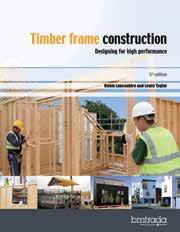
The leading manual for professionals on conventional timber frame design and construction methods.
For more information on publications and standards available, visit bookshop.bmtrada.com or contact the bookshop on: +44 (0)1494 569 602 or email bookshop@bmtrada.com
Timber 2022 | 175 www.bmtrada.com BM TRADA Bookshop


176 | Timber 2022
BM TRADA cer tified companies
for the supply of timber products and services
How to use this director y
Specifiers and purchasers can use this directory to find suppliers who have achieved third-party certification through BM TRADA.

• The data in the following directory section is extracted from the BM TRADA certification database and is correct as of 31 December 2021
• A more comprehensive entry for each certified company is maintained in the online database www.bmtrada.com/certified-companies, where users can confirm the latest information on services, scope and certificate information.
• Companies are listed in alphabetical order under each certification scheme.
• The EA number is the European Accreditation code.
• A valid certification mark indicates that the company or individual meets the requirements of the certification scheme.
• For the grading schemes listed, note that the individual grader is certified, not the company.
Sustainable sourcing
BM TRADA also provides chain of custody certification for timber products, but please note that certified companies are listed separately here: https://info.fsc.org/ www.pefc.org/find-certified
Timber 2022 | 177 www.bmtrada.com
BM TRADA Certified companies
MACHINE STRENGTH GRADING
Q-Mark Machine Strength
Grading BS EN 14081-1
EA Code: 6
John Gordon & Son Ltd
Balblair Road, Nairn, Nr Inverness, Scotland IV12 5LT
Contact: Mr Lukasz Kozlowski
Email: Lukasz@gordontimber.co.uk
Tel: 01667 453223
Establishment ID: 005/0347.001
Certificate Number: 5/51
Q-MARK BUILDING SYSTEMS
ETAG 007 Timber Frame Building Kits
EA Code: 28
English Heritage Buildings
Coldharbour Farm Estate, Woods Corner, East Sussex TN21 9LQ
Contact: Mr Steve Adams
Email: Stephen.Adams@ehbp.com
Tel: 01424 838685
Establishment ID: 024/2553
Certificate Number: BSYS-006
Willerby Ltd
Willerby Special Projects, 799 Hedon Road, Hull, East Yorkshire HU9 5NA
Contact: Mr Gary Crosbie
Email: gcrosbie@whh.co.uk
Tel: 01482 707808 Ext 299/Ext 364
Establishment ID: 024/2731
Certificate Number: BSYS-008
ETAG 025
EA Code: 28
Caledonian Modular Ltd
Carlton Works, Ossington Road, Carlton-On-Trent, Newark,NG23 6NT
Contact: Ms Dawn Bromley
Email: dbromley@caledonianmodular.com
Web: www.caledonianmodular.com
Tel: 01636 821645
Establishment ID: 024/8087
Certificate Number: BSYS-001
Q-MARK DOOR BLANK
STD 047
EA Code: 6
Egger (UK) Ltd
Anick Grange Road, Hexham, Northumberland NE46 4JS
Contact: Mr Dan Mather
Email: info@egger.com / dan.mather@egger.com
Web: www.egger.co.uk
Tel: 01434 602191
Establishment ID: 047/10095
Certificate Number: 002
Falcon Panel Products Ltd
Clock House, Station Approach, Shepperton, Middlesex TW17 8AN
Contact: Mr Mark Percival
Email: mpercival@falconpp.co.uk / doortechnical@falconpp.co.uk
Web: www.falconpp.co.uk
Tel: 01932 256580
Establishment ID: 047/11750.CO
Certificate Number: 012
Halspan Ltd
Unit 5, Bilton Road, Hitchin, Hertfordshire SG4 0SB
Contact: Ms Sue Webberley
Email: swebberley@halspan.com / doors@halspan.com
Tel: 01506 827538 / 01279 815285
Establishment ID: 047/11351.10
Certificate Number: 005
Halspan Ltd
Unit 10, M11 Business Link, Parsonage Lane, Stansted, Essex CM24 8GF
Contact: Ms Sue Webberley
Email: swebberley@halspan.com / doors@halspan.com
Tel: 01506 827538 / 01279 815285
Establishment ID: 047/11508.CO
Certificate Number: 005
Q-MARK ENGINEERED WOOD PRODUCTS
ETAG 011 I-Beams
EA Code: 28
James Jones & Sons Ltd: Timber Systems Division
Greshop Industrial Estate, Forres, Morayshire, Scotland IV36 2GW
Contact: Mr Abel Munoz
Email: a.munoz@jamesjones.co.uk
Tel: 01309 671111
Establishment ID: 036/4033.001
Certificate Number: EWP-0001
Metsa Wood UK Ltd
Crossbank Road, King’s Lynn, Norfolk PE30 2HD
Contact: Mr Paul Bell
Email: paul.bell@metsagroup.com
Tel: 01553 732900
Establishment ID: 036/1792
Certificate Number: EWP-003
Staircraft Group Ltd
Colliery Lane North, Bayton Road Industrial Estate, Exhall, Coventry CV7 9NW
Contact: Mr Andrew Hamilton
Email: andy.hamilton@staircraft-ltd.co.uk
Tel: 024 7632 4120
Establishment ID: 036/3448
Certificate Number: 026
Q-MARK ENHANCED SECURITY DOOR
PAS 24:2016 and BS 644:2012 Timber
EA Code: 6
Allan Brothers Ltd
Allan House, Ord Road, Tweedmouth, Berwick Upon Tweed, Northumberland TD15 2XU
Contact: Mr Morten Bach Valstad / Mr Robert Frost
Email: mbv@allanbrothers.co.uk / robert.frost@allanbrothers.co.uk
Web: www.allanbrothers.co.uk
Tel: 01289 334600
Establishment ID: 050/2308
Certificate Number: 094
Benlowe Group Ltd
Park Road, Ratby, Leicester, Leicestershire LE6 0JL
Contact: Mr Derek Murby
Email: derek.murby@benlowe.co.uk
Web: www.benlowe.co.uk
Tel: 0116 238 8914
Establishment ID: 050/14959
Certificate Number: 157
Door-Stop International Ltd
Export Drive, Huthwaite, Nottinghamshire NG17 6AF
Contact: Mr Stephen Upton
Email: supton@masonite.com
Web: www.door-stop.co.uk
Tel: 01623 446336
Establishment ID: 050/10536.Timber
Certificate Number: 335
Doorlining.com Ltd
Unit 6 Lovedere Business Park, Goathurst, Bridgewater, Somerset TA5 2DD
Contact: Mr Lee Morgan
Email: lee.morgan@doorlining.com
Web: www.doorlining.com
Tel: 01278 662933
Establishment ID: 050/19212
Certificate Number: 281
European Wood Products Ltd
t/a European Doorsets
Langley Road, Burscough Industrial Estate, Ormskirk, Lancashire L40 8JR
Contact: Ms Paula Rule / Ms Lyn Farley / Mr Henderson
Email: p.rule@edsi.co.uk / l.farley@edsi.co.uk / m.henderson@edsi.co.uk
Tel: 01704 894999
Establishment ID: 050/1752
Certificate Number: 255
FR Shadbolt & Sons Ltd, t/a Shadbolt International
A J B Woodworking Ltd, 9 Earlstrees Road, Earlstrees Industrial Centre, Corby, Northants NN17 4AZ
Contact: Mr Amarjit Binji
Email: asb@ajb-group.co.uk
Tel: 01536 267139
Establishment ID: 050/0808.01
Certificate Number: 223
GE Door Manufacturing Ltd
Forge Industrial Estate, Maesteg, Nr Bridgend, Mid Glamorgan CF34 0AZ
Contact: Mr Phil Trebble
Email: phil@gedoormanufacturing.co.uk
Web: www.gedoormanufacturing.co.uk
Tel: 01656 730070
Establishment ID: 050/2419
Certificate Number: 328
Gerda Security Products Ltd
18 Fiston Way, Thetford IP24 1HT
Contact: Mr Piotr Zarnoch
Email: pzarnoch@gerdasecurity.co.uk
Web: www.gerdasecurity.co.uk
Tel: 01638 711028
Establishment ID: 050/2318.02
Certificate Number: 051
Gerda Security Products Ltd
54 Chiswick Avenue, Mildenhall, Bury Saint Edmunds, Suffolk IP28 7AY
Contact: Mr Piotr Zarnoch
Email: pzarnoch@gerdasecurity.co.uk / c-dash@gerdasecuirty.co.uk
Web: www.gerdasecurity.co.uk
Tel: 01638 711028
Establishment ID: 050/2318.CO
Certificate Number: 051
Gerda Security Products Ltd
Station Business Park, Station Road, Thetford IP24 2PD
Contact: Mr Piotr Zarnoch
Email: pzarnoch@gerdasecurity.co.uk

Web: www.gerdasecurity.co.uk
Tel: 01638 711028
Establishment ID: 050/2318.03
Certificate Number: 051
Henley Construct
1 Lyon Close, Woburn Road Industrial Estate, Kempston, Bedfordshire MK42 7SB
Contact: Mr Damian Obuchowicz
Email: damian@henleyconstruct.com
Establishment ID: 050/19220
Certificate Number: 298
John Watson Joinery Ltd t/a John Watson High Performance Doorsets
Usworth Road Industrial Estate, Belle Vue Way, Hartlepool TS25 1JZ
Contact: Mr Eddie Watson
Email: eddie.watson@jwdoors.co.uk / sales@jwdoors.co.uk Web: www.johnwatson-joinery.co.uk
Tel: 01429 222023
Establishment ID: 050/5874
Certificate Number: 034
Kingsbury Group PC
Cranborne Industrial Estate, Cranborne Road, Potters Bar EN6 3JN
Contact: Mr Govind Kerai
Email: g.kerai@kingsburygroup.co.uk
Tel: 01707 642279
Establishment ID: 050/17979
Certificate Number: 249
Principal Doorsets Ltd
Riverside Road, Pottington Business Park, Barnstaple, Devon EX31 1NB
Contact: Mr Stan Bond
Email: stan@principaldoorsets.co.uk
Tel: 01237 439152
Establishment ID: 050/16398
Certificate Number: 220
Rowan Manufacturing Ltd
Main Street, Plains, Airdrie, Scotland ML6 7JE
Contact: Mr Billy Cameron
Email: billy.cameron@rowanmanufacturing.co.uk
Web: www.rowan-timber.co.uk
Tel: 01236 814000
Establishment ID: 050/1222. Timber
Certificate Number: 028
Scotdor t/a DorSuite
Roman House, Granitehill Road, Northfield, Aberdeen, Scotland AB16 7AW
Contact: Mr Daryl White
Email: daryl.white@dorsuite.com
Web: www.scotdor.com
Tel: 01355 229966
Establishment ID: 050/17897
Certificate Number: 247
Southern Doors and Cubicles Ltd
Unit 1A, Wyncolls Road, Severalls Industrial Park, Colchester, Essex CO4 9HU
Contact: Mr Darren Watson
Email: darren.watson@sdconline.co.uk
Tel: 01206 222080
Establishment ID: 050/17544
Certificate Number: 225
Winkhaus (UK) Ltd
2950 Kettering Parkway, Kettering, Northants NN15 6XZ
Contact: Mr Chris Flaherty
Email: chris.flaherty@winkhaus.co.uk
Tel: 01536 316000
Establishment ID: 050/17023
Certificate Number: 259
Woodmarque Ltd
16 Mullaghbane Road, Dungannon, Co Tyrone, Northern Ireland BT70 1SR
Contact: Mr Ronan Quinn
Email: ronan.quinn@woodmarque.co.uk
Tel: 028 8772 4907
Establishment ID: 050/17663
Certificate Number: 248
PAS 24:2016 and BS 644:2012 Timber
EA Code: 14
ABL Doors & Windows Ltd
Unit 2, Lancaster Way, Earls Colne, Colchester, Essex CO6 2NS
Contact: Mr Andy Williams
Email: andy@abldoors.co.uk
Web: www.abldoors.co.uk
Tel: 01787 220485
Establishment ID: 050/16103
Certificate Number: 316
Ahmarra Ltd Incorporating Ahmarra Door Solutions Ltd, Ahmarra Door Installations Ltd, Ahmarra Installations Ltd, Doran & Sons Ltd and Doran Asset Management Ltd
Unit 2 Hermitage Park, Harts Farm Way, Havant, Hampshire PO9 1FA
Contact: Ms Vicki Boulton
Email: vicki.boulton@ahmarra.co.uk
Web: www.ahmarra.co.uk
Tel: 023 9238 9076
Establishment ID: 050/1618
Certificate Number: 156
178 | Timber 2022 www.bmtrada.com/certified-companies
Arnold Laver & Co Ltd
Arnold Laver, Oxclose Park Road North, Sheffield, South Yorkshire S20 8GN
Contact: Mr David Hallam
Email: davidhallam@inteldoors.co.uk
Tel: 0113 270 4086
Establishment ID: 050/15332.CO
Certificate Number: 266
Arnold Laver & Co Ltd
Robson Avenue, Teeside Industrial Estate, Thornaby, Stockton on Tees TS17 9LS
Contact: Mr David Hallam
Email: david.hallam@inteldoors.co.uk / david.hallam@laver.co.uk
Tel: 01642 753284
Establishment ID: 050/15332.02
Certificate Number: 266
Bairds Windows Ltd
1 Slaughterhouse Road, Creeside Industrial Estate, Newton Stewart, Dumfries DG8 6JY
Contact: Mr Malcom Baird
Email: office@bairdswindows.co.uk
Tel: 01671 402737
Establishment ID: 050/15694
Certificate Number: 176
Beamfast Ltd t/a Secure Fire Doors and t/a Security Fire Doors
Units F, H & I, Forest Industrial Park, Forest Road, Hainault, Essex IG6 3HL
Contact: Mr Jaswinder Nandra / Mr Jagjit Nandra
Email: jas.nandra@beamfast.co.uk / jagjit.nandra@beamfast.co.uk
Web: www.beamfast.co.uk
Tel: 020 8502 7700
Establishment ID: 050/7221
Certificate Number: 333
Bridgman IBC Ltd
Greatham Street, Longhill Industrial Estate (North), Hartlepool, Cleveland TS25 1PU
Contact: Mr Stewart Hind
Email: s.hind@bridgman-ibc.com
Tel: 01429 221111
Establishment ID: 050/2076
Certificate Number: 301
Caledonian Plywood Company Ltd
Unit 16 Inter City Way, Bramley, Leeds LS13 4LY
Contact: Mr Jon Plummer
Email: jon@cpcply.co.uk
Tel: 0113 236 1666
Establishment ID: 050/11335
Certificate Number: 324
CCG (Manufacturing) Ltd
1 Cambuslang Road, Cambuslang Investment Park, Glasgow, Scotland G32 8NB
Contact: Mr John Paton
Email: jpaton@c-c-g.co.uk
Tel: 0141 643 3733
Establishment ID: 050/14199
Certificate Number: 138
Central Doorset Manufacturing Ltd
Unit 1 Mill Hill, North West Industrial Estate, Peterlee, SR8 2HR
Contact: Mr Martyn Sandison
Email: martyn@central-manufacturing.co.uk
Tel: 0191 521 4051
Establishment ID: 050/19594
Certificate Number: 343
Complete Doorset Solutions
Unit 10, Dyffryn Industrial Estate, Pool Road, Newtown, Powys SY16 3BD
Contact: Mrs Giverny Allen-Raftery
Email: giv@completedoorsetsolutions.com
Tel: 01293 787280
Establishment ID: 050/18164
Certificate Number: 286
Concept Doors Ltd
Pegrams Road, Harlow, Essex CM18 7PT
Contact: Mr Matt Parker
Email: mp@conceptdoors.net
Web: www.conceptdoors.net
Tel: 01279 780201
Establishment ID: 050/16169
Certificate Number: 178
Cotswold Doors Ltd
Unit 1 Whelford Industrial Estate, Whelford Road, Fairford, Gloucestershire GL7 4DT
Contact: Mr Philip Warner
Email: philwarner@cotswolddoors.com
Web: cotswolddoors.com
Tel: 01285 863222
Establishment ID: 050/19518
Certificate Number: 296
Dorplan Contracts
Bexwell House, Karoo Close, Bexwell Business Park, Downham Market, Norfolk PE38 9GA
Contact: Mr Russell Evershed
Email: russell.evershed@dorplan.co.uk
Web: www.dorplan.co.uk
Tel: 01366 386800
Establishment ID: 050/19172
Certificate Number: 290
Dovetail Enterprises (1993) Ltd
Block 5, Dunsinane Avenue, Dundee DD2 3QN
Contact: Mr Scott Merrilees
Email: s.merrilees@dovetailenterprises.co.uk
Tel: 01382 810099
Establishment ID: 050/17379
Certificate Number: 346
E&SW Knowles & Co Ltd Moor Lane Industrial Estate, Perrywell Road, Witton, Birmingham B6 7AT
Contact: Mr Dalvinder Pulah
Email: dalvinder.pulahi@eswknowles.co.uk
Web: www.knowlesdoors.co.uk
Tel: 0121 356 7046
Establishment ID: 050/19488
Certificate Number: 329
Elite Door Solutions Ltd
Unit 2 Carlton Depot, Carlton Industrial Estate, Industry Road, Barnsley, South Yorkshire S71 3PQ
Contact: Mr Lee Agus
Email: lee@elitedoorsolutions.co.uk
Tel: 0333 358 3339
Establishment ID: 050/19180
Certificate Number: 319
Falcon Panel Products Ltd Clock House, Station Approach, Shepperton, Middlesex TW17 8AN
Contact: Mr Neil Harrison
Email: mpercival@falconpp.co.uk / doortechnical@falconpp.co.uk
Web: www.falconpp.co.uk
Tel: 07826 515165
Establishment ID: 050/1605.CO
Certificate Number: 297
Forza Doors Ltd
24a - 24c Star Road Industrial Estate, Star Road, Partridge Green, West Sussex RH13 8RA
Contact: Mr Philip Duckworth
Email: philipduckworth@forza-doors.com
Web: www.forza-doors.com
Tel: 01403 711126
Establishment ID: 050/19050
Certificate Number: 279
Hall & Tawse Joinery
Roman House, Granitehill Road, Northfield, Aberdeen, Scotland AB16 7AW
Contact: Mr Chris Newton / Mr Daryl Whie
Email: chris.newton@hallandtawse.com / daryl.white@dorsuite.com
Web: www.hallandtawse.com
Tel: 01224 392700
Establishment ID: 050/15742
Certificate Number: 169
Hanson and Beard Ltd
Spring Hall Works, Spring Hall Grove, Halifax HX2 0BU
Contact: Mr Steve Loughtman
Email: steve.loughtman@hansonandbeards.co.uk
Web: www.hansonandbeards.co.uk
Tel: 01422 306830
Establishment ID: 050/11363
Certificate Number: 077
Hurst Joinery Projects Ltd
t/a Aynsley Doors
640 Armytage Road, Armytage Road Industrial Estate, Brighouse, West Yorkshire HD6 1PT
Contact: Mr Shaun Carter
Email: shaun.carter@thehurstgroup.co.uk
Tel: 01274 670077
Establishment ID: 050/13076.Timber
Certificate Number: 305
Integrated Doorset Solutions Ltd
Millennium Business Park, Concorde Way, Mansfield, Nottinghamshire NG19 7JZ
Contact: Mr Stephen Hutsby
Email: stephen.hutsby@integrateddoorsets.com
Tel: 07590 910406
Establishment ID: 050/16591
Certificate Number: 300
London Fire Solution Ltd
Unit 9 Moss Lane Industrial Estate, Royton, Oldham, Greater Manchester OL2 6HR
Contact: Mr Jim Hannon
Email: jimhannon@londonfiresolutions.co.uk
Web: www.londonfiresolutions.co.uk
Tel: 020 7732 3771
Establishment ID: 050/12959.03
Certificate Number: 104
London Fire Solution Ltd
Unit 20, Kent Park Industrial Estate, Ruby Street, London SE15 1LR
Contact: Mr Jim Hannon
Email: jimhannon@londonfiresolutions.co.uk
Web: www.londonfiresolutions.co.uk
Tel: 020 7732 3771
Establishment ID: 050/12959.02
Certificate Number: 104
Northern Fire Solutions Ltd
Unit 9 Moss Lane Industrial Estate, Moss Lane, Oldham, Greater Manchester OL2 6HR
Contact: Mr Steve Carter
Email: steve@nfsdoors.com
Tel: 07545 075044
Establishment ID: 050/19389
Certificate Number: 288
O’Kane Woodworking (2010) Ltd
t/a Compass Windows & Doors
13 Hass Road, Blackbog, Dungiven, Co Derry, Northern Ireland BT47 4QH
Contact: Mr Liam McCarney
Email: liam.mccarney@compasswd.com
Web: www.compasswd.com
Tel: 028 7774 1705
Establishment ID: 050/11322.TIMBER
Certificate Number: 193
On Wood Products Ltd
Unit 1 Wealdhall Farm, Canes Lane, North Weald, Epping, Essex CM17 9LD
Contact: Mr Neil Galloway
Email: Sales@on-woodproducts.co.uk / n.galloway@on-woodproducts.co.uk
Tel: 01992 570541
Establishment ID: 050/15769
Certificate Number: 158
Pendle Doors
Anchor Mill, Moss Fold Road, Darwen, Lancashire BB3 0AQ
Contact: Mr Robert Morgan
Email: robert.morgan@pendledoors.co.uk
Tel: 01254 870850
Establishment ID: 050/18908
Certificate Number: 271
Performance Doorset Solutions
Greenvale Business Park, Todmorden Road, Littleborough, Greater Manchester OL15 9AZ
Contact: Mr Ben Davies
Email: bdavies@pdsdoorsets.co.uk
Web: www.pdsdoorsets.co.uk
Tel: 01706 754791
Establishment ID: 050/2251
Certificate Number: 137
Premdor Crosby Ltd
Birthwaite Business Park, Huddersfield Road, Darton, Barnsley, South Yorkshire S75 5JS
Contact: Mr Stephen Upton
Email: supton@Masonite.com
Web: www.Premdor.com
Tel: 0844 209 0008
Establishment ID: 050/1812
Certificate Number: 002
PWIDF Ltd
Unit B24 Langland Park West, Langland Way, Newport, South Wales NP19 4ED
Contact: Mr Paul White
Email: paul@pwidf.co.uk
Tel: 01633 264777
Establishment ID: 050/19965
Certificate Number: 323
RW Joinery Ltd
Unit 26, Mersey Street, Stockport, Cheshire SK1 2HX
Contact: Mr Peter Andrew
Email: peter.andrew@rwjoinery.co.uk
Tel: 0161 480 8722
Establishment ID: 050/6511
Certificate Number: 345
Sentry Doors Ltd
Brooklands Road, Carcroft, Doncaster DN6 7BA
Contact: Mr Ty Aziz
Email: ty@sentrydoors.co.uk
Web: www.sentrydoors.co.uk
Tel: 01302 337473
Establishment ID: 050/11326
Certificate Number: 097
Sheen Projects Ltd
Unit 3 Crigglestone Industrial Estate, High Street, Crigglestone, Wakefield WF4 3HT
Contact: Mr Carl Sykes
Email: carl@sheenprojects.co.uk
Web: www.sheenprojects.co.uk
Tel: 01924 254466
Establishment ID: 050/15320
Certificate Number: 282
Southern Doors and Cubicles Ltd
Millennium Doors Systems t/a ZMR, MBP House, Spartan Industrial Estate, Brickhouse Lane, Great Bridge B70 0DH
Contact: Mr Darren Watson
Email: darren.watson@sdconline.co.uk
Tel: 01206 222080
Establishment ID: 050/17544.01
Certificate Number: 225
Southern Fire Doors Unit 4,Homeland Farm, Three Legged Cross, Wimborne, Dorset BH21 6QZ
Contact: Mr Tony Ellingworth
Email: paul@southernfiredoors.co.uk / sales@southernfiredoors.co.uk
Tel: 01425 627637
Establishment ID: 050/12229
Certificate Number: 349
Unity Doors Ltd JCK Joinery
8 Heanor Street, Leicester, Leicestershire LE1 4DD
Contact: Ms Emma Heathcote
Email: emma@jckjoinery.co.uk / enquiries@jckjoinery.co.uk
Web: www.jckjoinery.co.uk
Tel: 0116 291 2288
Establishment ID: 050/1918
Certificate Number: 003
Youngs Doors Ltd
Central Road, Cromer, Norfolk NR27 9BW
Contact: Mr Ben Walpole
Email: mail@youngs-doors.co.uk
Tel: 01603 629889
Establishment ID: 050/12133.01
Certificate Number: 299
Youngs Doors Ltd
City Road Works, City Road, Norwich, Norfolk NR1 3AN
Contact: Mr Ben Walpole
Email: mail@youngs-doors.co.uk
Tel: 01603 629889
Establishment ID: 050/12133
Certificate Number: 299
Timber 2022 | 179 www.bmtrada.com/certified-companies BM TRADA Certified companies
Certified companies
PAS 24:2016 and BS 644:2012 Timber;
PAS 24:2016 and BS 6510:2010 Steel
EA Code: 6
Multi Installations Ltd
502-504 Honeypot Lane, Stanmore, Middlesex HA7 1JR
Contact: Mr Ril Pindoria
Email: ril@multi1.co.uk
Tel: 020 8731 1212
Establishment ID: 050/12971
Certificate Number: 269
Q-MARK ENHANCED SECURITY WINDOW
PAS 24:2016 and BS 644:2012 Timber
EA Code: 6
Allan Brothers Ltd
Allan House, Ord Road, Tweedmouth, Berwick Upon Tweed, Northumberland TD15 2XU
Contact: Mr Morten Bach Valstad / Mr Robert Frost
Email: mbv@allanbrothers.co.uk / robert.frost@allanbrothers.co.uk
Web: www.allanbrothers.co.uk
Tel: 01289 334600
Establishment ID: 031/2308
Certificate Number: 058
Benlowe Group Ltd
Park Road, Ratby, Leicester, Leicestershire LE6 0JL
Contact: Mr Derek Murby
Email: derek.murby@benlowe.co.uk
Web: www.benlowe.co.uk
Tel: 0116 238 8914
Establishment ID: 031/14959
Certificate Number: 132
O’Kane Woodworking (2010) Ltd
t/a Compass Windows & Doors
13 Hass Road, Blackbog, Dungiven, Co Derry, Northern Ireland BT47 4QH
Contact: Mr Liam McCarney
Email: liam.mccarney@compasswd.com
Web: www.compasswd.com
Tel: 028 7774 1705
Establishment ID: 031/11322.TIMBER
Certificate Number: 168
PAS 24:2016 and BS 644:2012 Timber
EA Code: 14
Bairds Windows Ltd
1 Slaughterhouse Road, Creeside Industrial Estate, Newton Stewart, Dumfries DG8 6JY
Contact: Mr Malcolm Baird
Email: office@bairdswindows.co.uk
Tel: 01671 402737
Establishment ID: 031/15694
Certificate Number: 131
Q-MARK FIRE DOOR MANUFACTURE
STD 006
EA Code: 6
ABL Doors & Windows Ltd
Unit 2, Lancaster Way, Earls Colne, Colchester, Essex CO6 2NS
Contact: Mr Andy Williams
Email: andy@abldoors.co.uk
Web: www.abldoors.co.uk
Tel: 01787 220485
Establishment ID: 006/16103
Certificate Number: 1740
Acorn Doorsets Ltd
Unit B2, Wardley Industrial Estate, Fallons Road, Worsley, Manchester M28 2NY
Contact: Mr Paul Bowes
Email: paulbowes@acorndoorsets.com
Web: www.acorntimber.com
Tel: 0161 914 5552
Establishment ID: 006/16884
Certificate Number: 872
ADCAS (1997) Ltd
Unit 12a, Park View Road West, Park View Industrial Estate, Hartlepool, Cleveland TS25 1PG
Contact: Mr Colin Keightley
Email: colin@adcas1997.co.uk
Web: www.adcas1997.co.uk
Tel: 01429 283212
Establishment ID: 006/1640
Certificate Number: 022
Advanced Timber Systems
Oakwood Farm, Tanhouse Lane, Botley, Southampton SO30 2SZ
Contact: Mr Alistair Potts
Email: alistair@advancedtimberuk.com
Tel: 01489 799508
Establishment ID: 006/14534
Certificate Number: 737
Ahmarra Ltd Incorporating Ahmarra Door Solutions Ltd, Ahmarra Door Installations Ltd, Ahmarra Installations Ltd, Doran & Sons Ltd and Doran Asset Management Ltd
Unit 2 Hermitage Park, Harts Farm Way, Havant, Hampshire PO9 1FA
Contact: Ms Vicki Boulton
Email: vicki.boulton@ahmarra.co.uk
Web: www.ahmarra.co.uk
Tel: 023 9238 9076
Establishment ID: 006/1618
Certificate Number: 033
Aspire UK Interiors Ltd
Unit 4 Valley Mills, Southfield Street, Nelson, Lancashire BB9 0LD
Contact: Mr Tony Garnett
Email: tony@aspireukinteriors.co.uk
Web: www.aspireukinteriors.co.uk
Tel: 01282 881503
Establishment ID: 006/11912
Certificate Number: 439
Assa Abloy Opening Solutions
21 Ferguson Drive, Knockmore Hill Industrial Park, Lisburn, Lisburn BT28 2EX
Contact: Mr Martin Marron
Email: martin.marron@assaabloy.com
Web: www.assaabloy.com
Tel: 07880 784944
Establishment ID: 006/19534
Certificate Number: 1514
B Batch Shopfitters Ltd
2025 Spring Bank West, Hull, North Humberside HU5 5EP
Contact: Mr Paul Windross
Email: paul.windross@bbatchgroup.com
Web: www.bbatchgroup.com
Tel: 01482 506903
Establishment ID: 006/10073
Certificate Number: 276
Beamfast Ltd
t/a Secure Fire Doors and t/a Security Fire Doors
Units F, H & I, Forest Industrial Park, Forest Road, Hainault, Essex IG6 3HL
Contact: Mr Jaswinder Nandra / Mr Jagjit Nandra
Email: jas.nandra@beamfast.co.uk / jagjit.nandra@beamfast.co.uk
Web: www.beamfast.co.uk
Tel: 020 8502 7700
Establishment ID: 006/7221
Certificate Number: 083
Bellsure
46 Buckland Road, Penmill Trading Estate, Yeovil, Somerset BA21 5EL
Contact: Mr Chris Brown
Email: chris.brown@bellsure.co.uk
Web: www.bellsure.co.uk
Tel: 01730 719292
Establishment ID: 006/19834
Certificate Number: 2117
Bespoke Complete Services Ltd
Construction House, Unit 4, Olive Lane, Darwen, Lancashire BB3 3DJ
Contact: Mr Lee R McMahon
Email: sales@bcs-l.com
Tel: 01254 777142
Establishment ID: 006/17171
Certificate Number: 941
Birmingham Joinery Ltd
Unit 4, Small Heath Business Park, Talbot Way, Birmingham, Small Heath B10 0HJ
Contact: Mr Ian Sabin
Email: Ian@birminghamjoinery.com
Web: www.birminghamjoinery.com
Tel: 0121 772 8683
Establishment ID: 006/15204
Certificate Number: 746
Bridgman IBC Ltd
Greatham Street, Longhill Industrial Estate (North), Hartlepool, Cleveland TS25 1PU
Contact: Mr Neil Scott
Email: sales@bridgman-ibc.com / n.scott@bridgman-ibc.com
Web: www.bridgman-ibc.com
Tel: 01429 221111
Establishment ID: 006/2076
Certificate Number: 008
C W Fields & Son Ltd
Station Road Industrial Estate, Epworth, Nr Doncaster, South Yorkshire DN9 1JZ
Contact: Ms Francesca Dalla-Riva
Email: francesca@cwfields.co.uk
Web: www.cwfields.co.uk
Tel: 01427 872368
Establishment ID: 006/1528
Certificate Number: 017
Caledonian Plywood Company Ltd
1 Cardowan Park, Tannochside Park, Uddingston, Scotland G71 5PF
Contact: Mr Derrick Bartlett
Email: derrickb@cpcply.co.uk
Web: www.caledonianplywood.com
Tel: 01698 811666
Establishment ID: 006/4585
Certificate Number: 034
Caledonian Plywood Company Ltd
Unit 16 Inter City Way, Bramley, Leeds LS13 4LY
Contact: Mr Jon Plummer
Email: jon@cpcply.co.uk
Tel: 0113 236 1666
Establishment ID: 006/11335
Certificate Number: 034
Carve Interiors Ltd
Units 9-11, Ohio Grove, Burslem, Stoke-on-Trent ST6 2BL
Contact: Mr Mick Frain
Email: mick.frain@carveinteriors.co.uk
Web: www.carveinteriors.co.uk
Tel: 01782 536522 / 822008
Establishment ID: 006/15807
Certificate Number: 815
CCG (Manufacturing) Ltd
1 Cambuslang Road, Cambuslang Investment Park, Glasgow, Scotland G32 8NB
Contact: Mr John Paton
Email: jpaton@c-c-g.co.uk

Tel: 0141 643 3733
Establishment ID: 006/14199
Certificate Number: 687
Central Doorset Manufacturing Ltd
Unit 1 Mill Hill, North West Ind. Est., Peterlee SR8 2HR
Contact: Mr Martyn Sandison
Email: martyn@central-manufacturing.co.uk
Tel: 0191 521 4051
Establishment ID: 006/19594
Certificate Number: 1745
Commercial Door Systems Ltd
Unit 6 Birch Road, Broadmeadow Trade Park, Dumbarton, Scotland G82 2RE
Contact: Mr Michelle Daniels
Email: michelle@Commercialdoorsystems.co.uk
Tel: 01389 298120
Establishment ID: 006/19015
Certificate Number: 1304
Complete Doorset Solutions
Unit 10, Dyffryn Industrial Estate, Pool Road, Newtown, Powys SY16 3BD
Contact: Mrs Giverny Allen-Raftery
Email: giverny.allenraftery@ completedoorsetsolutions.com
Tel: 01293 787280
Establishment ID: 006/18164
Certificate Number: 1090
Concept Doors Ltd
Pegrams Road, Harlow, Essex CM18 7PT
Contact: Mr Lee Harris
Email: LH@conceptdoors.net
Tel: 01279 780201
Establishment ID: 006/16169
Certificate Number: 1563
Conduit Construction Network Ltd (CCN Ltd)
3 Waldridge Way, South Shield, Tyne & Wear NE34 9PZ
Contact: Mr Laurence Maguire / Andrew McNichol
Email: lem@ccn-uk.com
Web: www.ccn-uk.com
Tel: 0191 427 7779
Establishment ID: 006/19083
Certificate Number: 1579
Construction Specialties (UK) Ltd 1010 Westcott Venture Park, Westcott, Aylesbury, Buckinghamshire HP18 0XB
Contact: Mr Ken Barber
Email: ken.barber@c-sgroup.co.uk / enquiries@c-sgroup.co.uk
Tel: 01296 652800
Establishment ID: 006/15048
Certificate Number: 702
Construction Specialties (UK) Ltd Oakwood Farm, Tanhouse Lane, Botley, Southampton SO30 2SZ
Contact: CS: Ken Barber / ATS: Alistair Potts Email: CS: ken.barber@c-sgroup.co.uk; ATS: Alistair@advancedtimberuk.com
Tel: CS: 01296 652800/ ATS: 01489 799508
Establishment ID: 006/15048. Factory 1
Certificate Number: 702
Construction Specialties (UK) Ltd Ovi House, Ratcher Way, Mansfield, Nottingham NG190FS
Contact: CS: Ken Barber / IDSL: Mr Hutsby Email: CS: ken.barber@c-sgroup.co.uk /
IDSL: stephen.hutsby@integrateddoorsets.com
Tel: CS: 0129 665 2800/IDSL: 0116 366 5698
Establishment ID: 006/15048. Factory 2
Certificate Number: 702
Construction Specialties (UK) Ltd Station Works, Bromfield, Nr Ludlow, Shropshire SY8 2BT
Contact: CS: Ken Barber / Hazlin: Christopher Jones Email: CS: ken.barber@c-sgroup.co.uk / Hazlin: sales@hazlin.co.uk
Tel: CS: 01296 652800/Hazlin: 01584 856439
Establishment ID: 006/15048. Factory 4
Certificate Number: 702
Cotswold Doors Ltd
Unit 1 Whelford Industrial Estate, Whelford Road, Fairford, Gloucestershire GL7 4DT
Contact: Mr Philip Warner
Email: philwarner@cotswolddoors.com
Web: cotswolddoors.com
Tel: 01285 863222
Establishment ID: 006/19518
Certificate Number: 1583
180 | Timber 2022 www.bmtrada.com/certified-companies
BM TRADA
FIRE

Wulf Protective manufacture high quality, bespoke fire doors that resist the spread of fire and smoke in a building. We pull together the very best of our range of experience to bring you the highest standard of end-to-end service possible. We’re committed to becoming the leading manufacturer of both high-quality doors and door sets, Certified under Q-Mark.
Our years of experience have taught us that visualising our product is often difficult due to how many bespoke options we are able to offer. Our step-by-step videos on YouTube will help you to understand exactly what your project requires.
We’ll also deliver, install, and maintain your door sets, regardless of the scale of the project.
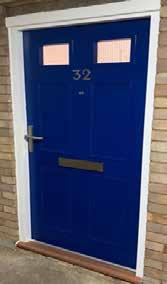

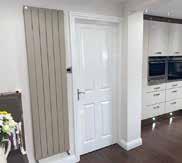
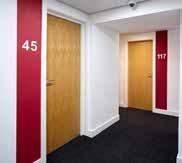
We are a British manufacturer that means all our timber is responsibly sourced and expertly crafted by our trusted team in West Yorkshire. Whether you need help with specification details on a particular project, glass aperture dimensions or further details on Wulf’s Fire Door Sets – we are here to assist and guide you to fulfil your requirements







Please do not hesitate to contact us with any questions, visit our showroom and subscribe to our YouTube channel!

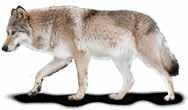

Speak to our sales team today to discuss your project or enquire further about our bespoke services.






Timber 2022 | 181 www.bmtrada.com/certified-companies
what’s important, Wulf Protective our service doesn’t stop at the door reliability is the key when it comes to your fire doors Call: 01274 653 100 | Email: sales@wulfprotective.co.uk | www.wulfprotective.co.uk celebrating seven years EST. 2014 THE LONDON FIRE DOOR CO
LONDON
DOOR CO. Specialists in Fire stopping. Fire door manufacture, installation and maintenance. Steel doorsets, timber doors and screens. For more information, please call 0207 206 2719 or visit our website www.londonfiredoors.co.uk
Protect
THE
Certified companies
Cotswold Doors Ltd
Unit 4, Farthing Road Ind. Est., Ipswich, Suffolk IP1 5AP
Contact: Mr Philip Warner
Email: philwarner@cotswolddoors.com
Web: cotswolddoors.com
Tel: 01473 240744
Establishment ID: 006/19518.01
Certificate Number: 1583
Derbyshire County Council
Joiners Shop, Prospect Road, Denby, Ripley DE5 8JS
Contact: Mr Sparham
Email: joe.sparham@derbyshire.gov.uk
Tel: 01332 781515
Establishment ID: 006/10225
Certificate Number: 304
Door Solutions Group Ltd
Unit 2, Wortley Court, Fallbank Industrial Estate, Dodworth, Barnsley, South Yorkshire S75 3LS
Contact: Mr Donovan Watkins
Email: info@doorsolutionsgroup.co.uk
Tel: 01226 731359
Establishment ID: 006/18055
Certificate Number: 1038
Doorlining.com Ltd
Unit 6 Lovedere Business Park, Goathurst, Bridgewater, Somerset TA5 2DD
Contact: Mr Lee Morgan
Email: lee.morgan@doorlining.com
Web: www.doorlining.com
Tel: 01278 662933
Establishment ID: 006/19212
Certificate Number: 1380
Dorplan Contracts
Bexwell House, Karoo Close, Bexwell Business Park, Downham Market, Norfolk PE38 9GA
Contact: Mr Russell Evershed
Email: russell.evershed@dorplan.co.uk
Web: www.dorplan.co.uk
Tel: 01366 386800
Establishment ID: 006/19172
Certificate Number: 1554
Dovetail Enterprises (1993) Ltd
Block 5, Dunsinane Avenue, Dundee DD2 3QN
Contact: Mr Charlie Marr
Email: c.marr@dovetailenterprises.co.uk
Tel: 01382 810099
Establishment ID: 006/17379
Certificate Number: 945
E Batty (Contractors) Ltd

t/a Batty Joinery
101 West Dock Street, Hull, East Yorkshire HU3 4HH
Contact: Mr Asghar Hoque
Email: asgharhoque@battyjoinery.co.uk
Web: www.battyjoinery.co.uk
Tel: 01482 326377
Establishment ID: 006/16843
Certificate Number: 924
E&SW Knowles & Co Ltd
Moor Lane Industrial Estate, Perrywell Road, Witton, Birmingham B6 7AT
Contact: Mr Dalvinder Pulah
Email: dalvinder.pulahi@eswknowles.co.uk
Web: www.knowlesdoors.co.uk
Tel: 0121 356 7046
Establishment ID: 006/19488
Certificate Number: 1609
Ecosse Doors Ltd
4 MacDowall Street, Paisley, Scotland PA3 2NB
Contact: Mr Archie McIntyre
Email: archie@ecossedoors.co.uk
Tel: 0141 840 2266
Establishment ID: 006/1660
Certificate Number: 049
EE Smith Contracts Ltd
25 Morris Road, Clarendon Industrial Estate, Leicester, Leicestershire LE2 6AL
Contact: Mr Chris Peel - Mr John Sutcliffe
Email: chris.peel@eesmith.co.uk / john.sutcliffe@eesmith.co.uk
Web: www.eesmith.co.uk
Tel: 0116 270 6946
Establishment ID: 006/19392
Certificate Number: 1459
Egger (UK) Ltd
Anick Grange Rd, Hexham, Northumberland NE46 4JS
Contact: Mr Dan Mather
Email: info@egger.com / dan.mather@egger.com
Web: www.egger.co.uk
Tel: 01434 602191
Establishment ID: 006/10095
Certificate Number: 364
Elite Door Solutions Ltd
Unit 2 Carlton Depot, Carlton Industrial Estate, Industry Road, Barnsley, South Yorkshire S71 3PQ
Contact: Mr Lee Agus
Email: lee@elitedoorsolutions.co.uk
Web: www.elitedoorsolutions.co.uk
Tel: 0333 358 3339
Establishment ID: 006/19180
Certificate Number: 1328
European Wood Products Ltd
t/a European Doorsets
Langley Road, Burscough Industrial Estate, Ormskirk, Lancashire L40 8JR
Contact: Ms Lyn Farley / Mr Paul Bailey / Paula Rule
Email: l.farley@edsi.co.uk / d.ferguson@edsi.co.uk / p.bailey@edsi.co.uk / p.rule@edsi.co.uk
Web: www.edsi.co.uk
Tel: 01704 894999
Establishment ID: 006/1752
Establishment ID: 006/1752.Portugal
Certificate Number: 409
Falcon Panel Products Ltd
Clock House, Station Approach, Shepperton, Middlesex TW17 8AN
Contact: Mr Mark Percival
Email: mpercival@falconpp.co.uk / doortechnical@falconpp.co.uk
Web: www.falconpp.co.uk
Tel: 01932 256580
Establishment ID: 006/1605.CO
Certificate Number: 020
Fit Out (UK) Ltd
27 Abbey Road, Park Royal, London NW10 7SJ
Contact: Mr Gavin Grant
Email: gavingrant@fitoutuk.com
Web: www.fitoutuk.com
Tel: 020 8963 6900
Establishment ID: 006/2401
Certificate Number: 170
Forza Doors Ltd
24a - 24c Star Road Industrial Estate, Star Road, Partridge Green, West Sussex RH13 8RA
Contact: Mr Philip Duckworth
Email: philipduckworth@forza-doors.com
Web: www.forza-doors.com
Tel: 01403 711126
Establishment ID: 006/19050
Certificate Number: 1369
FR Shadbolt & Sons Ltd,
t/a Shadbolt International
7-9 Springwood Drive, Springwood Industrial Estate, Braintree, Essex CM7 2YN
Contact: Ms Emily-Rose Don / Mr Peter McDowall
Email: erd@shadbolt.co.uk / pjm@shadbolt.co.uk
Web: www.shadbolt.co.uk
Tel: 01376 333 376
Establishment ID: 006/0808
Certificate Number: 006
Frontier Joinery Ltd
Unit 191A, Mersey Wharf Business Park, Bromborough, Merseyside CH62 4SF
Contact: Mr Andrew Merriman
Email: andy@frontierdevelopments.co.uk
Tel: 07710 492365
Establishment ID: 006/20061
Certificate Number: 2075
Gariff Construction Ltd
Village House, Eleventh Street, Trafford Park, Manchester M17 1JF
Contact: Mr Tony Cullen
Email: Anthonycullen@gariff.co.uk
Web: www.gariff.co.uk
Tel: 0161 873 0130
Establishment ID: 006/6677
Certificate Number: 055
GE Door Manufacturing Ltd
Forge Industrial Estate, Maesteg, Nr Bridgend, Mid Glamorgan CF34 0AZ
Contact: Mr Philip Trebble
Email: phil@gecarpentry.co.uk
Tel: 01656 812081
Establishment ID: 006/2419
Certificate Number: 181
Gerda Security Products Ltd
18 Fiston Way, Thetford IP24 1HT
Contact: Mr Piotr Zarnoch
Email: pzarnoch@gerdasecurity.co.uk
Web: www.gerdasecurity.co.uk
Tel: 01638 711028
Establishment ID: 006/2318.02
Certificate Number: 227
Gerda Security Products Ltd
54 Chiswick Avenue, Mildenhall, Bury Saint Edmunds, Suffolk IP28 7AY
Contact: Mr Piotr Zarnoch
Email: pzarnoch@gerdasecurity.co.uk / c-dash@gerdasecuirty.co.uk
Web: www.gerdasecurity.co.uk
Tel: 01638 711028
Establishment ID: 006/2318
Certificate Number: 277
Gerda Security Products Ltd
Station Business Park, Station Road, Thetford IP24 2PD
Contact: Mr Piotr Zarnoch
Email: pzarnoch@gerdasecurity.co.uk
Web: www.gerdasecurity.co.uk
Tel: 01638 711028
Establishment ID: 006/2318.03
Certificate Number: 227
Hall & Tawse Joinery
Roman House, Granitehill Road, Northfield, Aberdeen, Scotland AB16 7AW
Contact: Mr Chris Newton / Mr Daryl White
Email: chris.newton@hallandtawse.com / daryl.white@dorsuite.com
Tel: 01224 392700
Establishment ID: 006/15742
Certificate Number: 1073
Halspan Ltd
Unit 5, Bilton Road, Hitchen, Hertfordshire SG4 0SB
Contact: Ms Sue Webberley
Email: swebberley@halspan.com / doors@halspan.com
Tel: 01506 827538 / 01279 815285
Establishment ID: 006/11351.10
Certificate Number: 014
Halspan Ltd
Unit 10, M11 Business Link, Parsonage Lane, Stansted, Essex CM24 8GF
Contact: Ms Sue Webberley
Email: swebberley@halspan.com / doors@halspan.com
Web: www.halspan.com
Tel: 01506 827538 / 01279 815285
Establishment ID: 006/11508.CO
Certificate Number: 014
Hanson and Beard Ltd
Spring Hall Works, Spring Hall Grove, Halifax HX2 0BU
Contact: Mr Steve Loughtman
Email: steve.loughtman@hansonandbeards.co.uk
Web: www.hansonandbeards.co.uk
Tel: 01422 306830
Establishment ID: 006/11363
Certificate Number: 645
Hazlin of Ludlow Ltd
Station Works, Bromfield, Nr Ludlow, Shropshire SY8 2BT
Contact: Mr Christopher Jones
Email: sales@hazlin.co.uk
Tel: 01584 856439
Establishment ID: 006/3652
Certificate Number: 007
Henley Construct
1 Lyon Close, Woburn Road Industrial Estate, Kempston, Bedfordshire MK42 7SB
Contact: Mr Damian Obuchowicz
Email: damian@henleyconstruct.com
Establishment ID: 006/19220
Certificate Number: 1601
Hi-Tec Joinery Products Ltd
26 Tarrington Road, Gloucester, Gloucestershire GL1 4PF
Contact: Mr Ian Matthews
Email: accounts@hi-tecjoinery.uk
Web: www.hi-tecjoinery.org
Tel: 01452 386444
Establishment ID: 006/2139.01
Certificate Number: 222
Hi-Tec Joinery Products Ltd
Unit 3B, Northbrook Road, Gloucester, Gloucestershire GL4 3DP
Contact: Mr Ian Matthews
Email: accounts@hi-tecjoinery.uk
Web: www.hi-tecjoinery.org
Tel: 01452 386444
Establishment ID: 006/2139
Certificate Number: 222
Hurst Joinery Projects Ltd
t/a Aynsley Doors
640 Armytage Road, Armytage Road Industrial Estate, Brighouse, West Yorkshire HD6 1PT
Contact: Mr Richard Corke
Email: richard.corke@thehurstgroup.co.uk
Web: www.thehurstgroup.co.uk
Tel: 01484 723501
Establishment ID: 006/13076
Certificate Number: 557
John Watson Joinery Ltd
t/a John Watson High Performance Doorsets
Usworth Road Industrial Estate, Belle Vue Way, Hartlepool TS25 1JZ
Contact: Mr Eddie Watson
Email: eddie.watson@jwdoors.co.uk / sales@jwdoors.co.uk
Web: www.johnwatson-joinery.co.uk
Tel: 01429 222023
Establishment ID: 006/5874
Certificate Number: 158
JP Corry 648 Springfield Road, Belfast, N. Ireland BT12 7EH
Contact: Mr Chris Collins
Email: chris.collins@jpcorry.co.uk
Web: www.jpcorry.com
Establishment ID: 006/19216
Certificate Number: 1453
KBI Contracts Ltd
Unit 16a Boxer Place, Moss Side Industrial Estate, Leyland, Preston PR26 7QL
Contact: Mr Craig Visser
Email: cnmjoinery@outlook.com
Tel: 07793 131508
Establishment ID: 006/18398
Certificate Number: 1211
Kent Flush Doors and Joinery Ltd
Unit 2, Rose Lane Industrial Estate, Rose Lane, Lenham Heath, Kent ME17 2JN
Contact: Mr Robert Foster
Email: info@kentflushdoors.com
Web: www.kentflushdoors.com
Tel: 01634 712 451
Establishment ID: 006/13396
Certificate Number: 555
Kingsbury Group PC
Cranborne Industrial Estate, Cranborne Road, Potters Bar EN6 3JN
Contact: Mr Govind Kerai
Email: g.kerai@kingsburygroup.co.uk
Tel: 01707 642279
Establishment ID: 006/17979
Certificate Number: 1042
182 | Timber 2022 www.bmtrada.com/certified-companies
BM TRADA
Kingsway Group
Unit 2 Teardrop Centre, London Road, Swanley, Kent BR8 8TS
Contact: Mr Ben Hall
Email: ben.hall@kingswaygroup.co.uk
Web: www.kingswaygroup.co.uk
Tel: 01959 577727
Establishment ID: 006/15399
Certificate Number: 802
London Fire Solution Ltd
Unit 9 Moss Lane Industrial Estate, Royton, Oldham, Greater Manchester OL2 6HR
Contact: Mr Jim Hannon
Email: jimhannon@londonfiresolutions.co.uk
Web: www.londonfiresolutions.co.uk
Tel: 020 7732 3771
Establishment ID: 006/12959.03
Certificate Number: 528
London Fire Solution Ltd
Unit 20, Kent Park Industrial Estate, Ruby Street, London SE15 1LR
Contact: Mr Jim Hannon
Email: jimhannon@londonfiresolutions.co.uk
Web: www.londonfiresolutions.co.uk
Tel: 020 7732 3771
Establishment ID: 006/12959.02
Certificate Number: 528
Meeks Projects Ltd
Blackberry Barn, Hives Lane, North Scarle, Lincoln LN6 9HA
Contact: Mr Benjamin Meeks
Email: benjamin@meeksjoinery.com
Web: https://meeksprojects.com
Tel: 07815 935372
Establishment ID: 006/15161
Certificate Number: 1638
Multi Installations Ltd
502-504 Honeypot Lane, Stanmore, Middlesex HA7 1JR
Contact: Mr Ril Pindoria
Email: ril@multi1.co.uk
Web: www.multi1.co.uk
Tel: 020 8731 1212
Establishment ID: 006/12971
Certificate Number: 1244
O’Kane Woodworking (2010) Ltd
t/a Compass Windows & Doors
13 Hass Road, Blackbog, Dungiven, Co Derry, Northern Ireland BT47 4QH
Contact: Mr Liam McCarney
Email: liam.mccarney@compasswd.com
Web: www.compasswd.com
Tel: 028 7774 1705
Establishment ID: 006/11322
Certificate Number: 1402
Octagon Bespoke Joinery Ltd
Octagon House, 54 Lower Marsh Lane, Kingston, London KT1 3BJ
Contact: Mr Brian Crossingham / Mr Simon Hehir
Email: sales@octagonlimited.co.uk
Web: www.octagonlimited.co.uk
Tel: 020 8942 1111
Establishment ID: 006/16368
Certificate Number: 817
One Stop Joinery Ltd
Caldyne Park, Wallage Lane, Rowfant, Crawley, W. Sussex RH10 4NQ
Contact: Mr Paul Glasgow
Email: info@onestopjoinery.com
Web: www.onestopjoinery.com
Tel: 01293 889693
Establishment ID: 006/7403
Certificate Number: 098
Pandor Ltd
Units F2/F3 London Road Trading Estate, Sittingbourne, Kent ME10 1NQ
Contact: Mr Mike Hill
Email: mike@pandor.ltd
Tel: 020 8279 7611
Establishment ID: 006/16525
Certificate Number: 823
Pendle Doors
Anchor Mill, Moss Fold Road, Darwen, Lancashire BB3 0AQ
Contact: Mr Robert Morgan
Email: robert.morgan@pendledoors.co.uk
Tel: 01254 870850
Establishment ID: 006/18908
Certificate Number: 1255
Performance Doorset Solutions
Greenvale Business Park, Todmorden Road, Littleborough, Greater Manchester OL15 9AZ
Contact: Mr Ben Davies
Email: bdavies@pdsdoorsets.co.uk
Web: www.pdsdoorsets.co.uk
Tel: 01706 754791
Establishment ID: 006/2251
Certificate Number: 240
Prestige Fire Door Services Ltd
Unit 6 Wotton Trading Estate, Wotton Road, Ashford, Kent TN23 6LL
Contact: Mr David Almond
Email: david.almond@sunraydoors.co.uk
Tel: 01252 960399
Establishment ID: 006/17488
Certificate Number: 972
Principal Doorsets Ltd
Riverside Road, Pottington Business Park, Barnstaple, Devon EX31 1NB
Contact: Mr Stan Bond
Email: stan@principaldoorsets.co.uk
Web: www.principal-doorsets.com
Establishment ID: 006/16398
Certificate Number: 821
Public Sector Prison Industries
Post Point 6, 14th Floor, Southern House, Wellesley Grove, Croydon CR0 1XG
Contact: Mr David Anderson
Email: david.anderson@noms.gsi.gov.uk
Tel: 0300 047 5254
Establishment ID: 006/13508
Certificate Number: 627
Rowan Manufacturing Ltd
Main Street, Plains, Airdrie, Scotland ML6 7JE
Contact: Mr Billy Cameron
Email: billy.cameron@rowanmanufacturing.co.uk
Web: www.rowan-timber.co.uk
Tel: 01236 814000
Establishment ID: 006/1222
Certificate Number: 130
Royal Borough Greenwich, Asset Management Birchmere Business Site, Eastern Way, Thamesmead, London SE28 8BF
Contact: Mr Neil Carrick
Email: neil.carrick@royalgreenwich.gov.uk
Tel: 020 8921 6879
Establishment ID: 006/13204
Certificate Number: 591
RW Joinery Ltd
Unit 26, Mersey Street, Stockport, Cheshire SK1 2HX
Contact: Mr Peter Andrew
Email: peter.andrew@rwjoinery.co.uk
Web: www.rwjoinery.co.uk
Tel: 0161 480 8722
Establishment ID: 006/6511
Certificate Number: 051
Scotdor t/a DorSuite
Roman House, Granitehill Road, Northfield, Aberdeen, Scotland AB16 7AW
Contact: Mr Daryl White
Email: daryl.white@scotdor.com
Web: www.scotdor.com
Tel: 01355 229966
Establishment ID: 006/17897
Certificate Number: 1122
Sentry Doors Ltd
Brooklands Road, Carcroft, Doncaster DN6 7BA
Contact: Mr Ty Aziz
Email: ty@sentrydoors.co.uk
Tel: 01302 337473
Establishment ID: 006/11326
Certificate Number: 879
SFD Group Ltd
Unit 2 Scotia Road Business Park, Fitzgerald Way, Tunstall, Stoke-on-Trent ST6 4HG
Contact: Mr Mark Daniels
Email: enquiries@sfd-group.co.uk
Web: www.dancoltd.co.uk
Tel: 01782 880045
Establishment ID: 006/14629
Certificate Number: 677
Sheen Projects Ltd
Unit 3 Crigglestone Industrial Estate, High Street, Crigglestone, Wakefield WF4 3HT
Contact: Mr Carl Sykes
Email: carl@sheenprojects.co.uk
Web: www.sheenprojects.co.uk
Tel: 01924 254466
Establishment ID: 006/15320
Certificate Number: 740
Simpson (York) Ltd
PO Box 289, 10 Hassacarr Close, Chessingham Park, Dunnington York YO19 5SN
Contact: Mr Steve Morrod
Email: joinersshop@simpsonyork.co.uk
Web: www.simpsonyork.co.uk
Tel: 01904 562481 / 07802 641863
Establishment ID: 006/2350
Certificate Number: 154
Southern Fire Doors
Unit 4,Homeland Farm, Three Legged Cross, Wimborne, Dorset BH21 6QZ
Contact: Mr Tony Ellingworth
Email: paul@southernfiredoors.co.uk / sales@southernfiredoors.co.uk
Web: www.southernfiredoors.co.uk
Tel: 01425 627637
Establishment ID: 006/12229
Certificate Number: 907
Specialist Door Solutions
Unit 1 Bordon Trading Estate, Old Station Way, Bordon, Surrey GU35 9HH
Contact: Mr Laurie Ware
Email: laurie@specialistdoorsolutions.com
Tel: 01420 543222
Establishment ID: 006/16449
Certificate Number: 850
Starbank Panel Products Ltd
Sankey Valley Ind. Est., Unit 2 Anglezark Road, Newton-le-Willows, Merseyside WA12 8DJ
Contact: Mr John McCaffrey
Email: john.mccaffrey@starbank-uk.com
Web: www.starbank-uk.com
Tel: 01925 223965
Establishment ID: 006/6684
Certificate Number: 782
STJ Projects Ltd
t/a Scunthorpe Timber & Joinery
Normanby Grange Farmyard, Normanby, North Lincolnshire DN15 9HT
Contact: Mr Lee Cranidge / Mr Mike Pearson
Email: lee@stj.uk.com / mike@stj.uk.com
Web: www.stj.uk.com
Tel: 01724 720977
Establishment ID: 006/16983
Certificate Number: 1652
T Manners and Sons Ltd
Peel House, Dovecot Hill, South Church Enterprise Park, Bishop Auckland, Co Durham DL14 6XW
Contact: Mr Thomas Lowes / Mr Steve Hodges / Mr Wayne Harris
Email: thomas.lowes@tmanners.co.uk / steve.hodges@tmanners.co.uk / wayne.harris@tmanners.co.uk
Tel: 01388 774030
Establishment ID: 006/17961
Certificate Number: 1054
Taylor Made Joinery Interiors Ltd
Manor Wood, Ipswich Road, Bildeston, Ipswich, Suffolk IP7 7BH
Contact: Ms Sarah Mann
Email: smann@tmjinteriors.com
Web: www.taylor-made-joinery.co.uk
Tel: 01449 743305
Establishment ID: 006/3257
Certificate Number: 041
The Community Housing Group Ltd
Oakleaf House, Finepoint Way, Kidderminster, Worcestershire DY11 7FE
Contact: Mr Luke Roberts
Email: luke.roberts@oakleafcs.com
Web: www.oakleafcs.com
Tel: 0800 169 5454
Establishment ID: 006/12777
Certificate Number: 829
Traynor Williams Door Solutions Ltd
9 Loanbank Place, Lanarkshire, Glasgow
Contact: Mrs Gillian Murchie
Email: gillian@tw-ltd.com
Tel: 0141 889 7216
Establishment ID: 006/17952
Certificate Number: 1045
Unit Line Systems Ltd
Fitzgerald Way, Hillbottom Road, Sands Industrial Estate, High Wycombe, Bucks HP12 4HJ
Contact: Mr Phil Chatterton
Email: thomas@unitline.com / Phil@unitline.com
Tel: 01494 440045
Establishment ID: 006/13752
Certificate Number: 592
Unity Doors Ltd JCK Joinery
8 Heanor Street, Leicester, Leicestershire LE1 4DD
Contact: Ms Emma Heathcote
Email: emma@jckjoinery.co.uk / enquiries@jckjoinery.co.uk
Web: www.jckjoinery.co.uk
Tel: 0116 291 2288
Establishment ID: 006/1918
Certificate Number: 675
Winkhaus (UK) Ltd
2950 Kettering Parkway, Kettering, Northants NN15 6XZ
Contact: Mr Chris Flaherty
Email: chris.flaherty@winkhaus.co.uk
Tel: 01536 316000
Establishment ID: 006/17023
Certificate Number: 1131
Woodtech Joinery Ltd
8 Newcomen Road, Skippers Lane Industrial Estate, Middlesbrough, Yorkshire TS6 6PS
Contact: Mr Andrew Simpson
Email: andrew.simpson@woodtechjoinery.co.uk
Web: www.woodtechjoinery.com
Tel: 01642 440666
Establishment ID: 006/19110
Certificate Number: 1738
Youngs Doors Ltd
Central Road, Cromer, Norfolk NR27 9BW
Contact: Mr Adrian Buck
Email: mail@bullenjoinery.co.uk
Tel: 01263 511264
Establishment ID: 006/12133.01
Certificate Number: 1006
Youngs Doors Ltd
City Road Works, City Road, Norwich, Norfolk NR1 3AN
Contact: Mr Ben Walpole
Email: mail@youngs-doors.co.uk
Web: www.youngs-doors.co.uk
Tel: 01603 629889
Establishment ID: 006/12133
Certificate Number: 472
STD 006
EA Code: 14
Arnold Laver & Co Ltd
Arnold Laver, Oxclose Park Road North, Sheffield, South Yorkshire S20 8GN
Contact: Mr David Hallam
Email: davidhallam@inteldoors.co.uk
Tel: 0113 270 4086
Establishment ID: 006/15332.CO
Certificate Number: 792
Timber 2022 | 183 www.bmtrada.com/certified-companies BM TRADA Certified companies
Arnold Laver & Co Ltd
Robson Avenue, Teeside Industrial Estate, Thornaby, Stockton on Tees TS17 9LS
Contact: Mr David Hallam
Email: david.hallam@inteldoors.co.uk / david.hallam@laver.co.uk
Tel: 01642 753284
Establishment ID: 006/15332.02
Certificate Number: 792
Central Doorset Manufacturing Ltd
Redwells Joinery, 1 Crompton Road, Glenrothes, Scotland KY6 2SF
Contact: Ms Sandra Patterson
Email: sandra@redwellsjoinery.co.uk
Tel: 01592 772010
Establishment ID: 006/19594.01
Certificate Number: 1745
Custom Precision Joinery Ltd
Catheralls Industrial Estate, Brook Hill Way, Buckley, Flintshire CH7 3PS
Contact: Mr Peter Hoyland
Email: peter@cpjoinery.co.uk
Web: www.cpjoinery.co.uk
Tel: 01244 550444
Establishment ID: 006/19979
Certificate Number: 2128
FR Shadbolt & Sons Ltd, t/a Shadbolt International
A J B Woodworking Ltd, 9 Earlstrees Road, Earlstrees Industrial Centre, Corby, Northants NN17 4AZ
Contact: Ms Emily-Rose Don / Mr Peter McDowall
Email: erd@shadbolt.co.uk / pjm@shadbolt.co.uk
Tel: 01536 267139
Establishment ID: 006/0808.01
Certificate Number: 006
Joinery Fixing and Finishing Ltd
Unit P1, London Road Trading Estate, London Road, Sittingbourne, Kent ME10 1NQ
Contact: Mr Chris Tester
Email: chris@joineryfixingandfinishing.com
Web: www.Joineryfixingandfinishing.com
Tel: 01795 429821
Establishment ID: 006/19355
Certificate Number: 1572
Lewis Aldridge Joinery Ltd
Redhouse Industrial Estate, Middlemore Lane, Aldridge, Walsall WS9 8DL
Contact: Mr Paul Lewis
Email: paul.lewis@lewisaldridgejoinery.co.uk
Tel: 01922 455513
Establishment ID: 006/19967
Certificate Number: 2095
Northern Fire Solutions Ltd
Unit 9 Moss Lane Industrial Estate, Moss Lane, Oldham, Greater Manchester OL2 6HR
Contact: Mr Steve Carter
Email: steve@nfsdoors.com
Tel: 07545 075044
Establishment ID: 006/19389
Certificate Number: 1513
On Wood Products Ltd
Unit 1 Wealdhall Farm, Canes Lane, North Weald, Epping, Essex CM17 9LD
Contact: Mr Neil Galloway
Email: Sales@on-woodproducts.co.uk / n.galloway@on-woodproducts.co.uk
Tel: 01992 570541
Establishment ID: 006/15769
Certificate Number: 781
PWIDF Ltd
Unit B24 Langland Park West, Langland Way, Newport, South Wales NP19 4ED
Contact: Mr Paul White
Email: paul@pwidf.co.uk
Tel: 01633 264777
Establishment ID: 006/19965
Certificate Number: 1870
RJ Parry Joinery Ltd
Armstrong House, Minerva Avenue, Chester, Cheshire CH1 4QL
Contact: Ms Joyce Parry
Email: joyce@parryjoinery.co.uk
Web: www.parryjoinery.co.uk
Tel: 01244 371571
Establishment ID: 006/19401
Certificate Number: 1567
The London Fire Door and Carpentry Company Ltd
1 Clipper Court, Clipper Close, Medway City Estate, Rochester, Kent ME2 4QR
Contact: Mr Rob Ellis
Email: rob@lfdcc.co.uk
Tel: 01634 328 291
Establishment ID: 006/18350
Certificate Number: 1631
Wulf Protective Ltd
Pearl House, Commondale Way, Euroway Trading Est., Bradford, Yorkshire BD4 6SF
Contact: Mr Mark Dunn
Email: mark.dunn@wulfprotective.co.uk
Tel: 01274 653100
Establishment ID: 006/20133
Certificate Number: 2045
STD 006
EA Code: 28
Integrated Doorset Solutions Ltd
Millennium Business Park, Concorde Way, Mansfield, Nottinghamshire NG19 7JZ
Contact: Mr Stephen Hutsby
Email: stephen.hutsby@integrateddoorsets.com
Tel: 01623 343111
Establishment ID: 006/16591.01
Certificate Number: 873
Q-MARK TIMBER FRAME ELEMENTS
prEN 14732 Timber Structures
EA Code: 28
Flitcraft Ltd

Tarnacre Hall Business Park, Tarnacre Lane, St Michaels, Preston PR3 0SZ
Contact: Mr Ryan McDermott
Email: ryan@flitcraft.co.uk
Tel: 01995 679444
Establishment ID: 06B/3406
Certificate Number: QTF-010
LoCaL Homes - Part of Accord Housing Association
Airfield Drive, Aldridge, Walsall, West Midlands WS9 0RE
Contact: Miss K’Lee Green
Email: klee.green@greensquareaccord.co.uk
Tel: 0300 111 7002
Establishment ID: 06B/2830
Certificate Number: QTF-003
Roofspace Solutions
Abbey Mills, Birmingham Road, Alcester, Warwickshire B49 5JG
Contact: Mr Paul Terry
Email: paul.terry@roofspacesolutions.co.uk
Web: www.roofspacesolutions.co.uk
Tel: 01789 209006
Establishment ID: 06B/2756
Certificate Number: QTF-005
Saint Gobain - Scotframe Timber Engineering Ltd
4 Grayshill Road, Westfield Industrial Estate, Cumbernauld, Scotland G68 9HQ
Contact: Mr Trevor Norval
Email: trevor.norval@scotframe.co.uk
Establishment ID: 06B/3592
Certificate Number: QTF-008
Saint Gobain - Scotframe Timber Engineering Ltd
Inverurie Business Park, Souterford Avenue, Inverurie, Aberdeenshire, Scotland AB51 0ZJ
Contact: Mr Justin Dumigan
Email: Justin.dumigan@scotframe.co.uk
Tel: 01467 624440
Establishment ID: 06B/3592.01
Certificate Number: QTF-007
Stewart Milne Group Ltd
Falcon House, Curbridge Business Park, Downs Road, Witney, Oxon OX29 7WJ
Contact: Mr Stewart Dalgarno
Email: sdalgarno@stewartmilne.com
Web: www.stewartmilne.com
Tel: 01865 303900
Establishment ID: 06B/19075
Certificate Number: QTF-012
SCAFFOLD BOARD GRADING
BS 2482:2009
EA Code: 6
TRAD Hire & Sales Ltd
TRAD House, Cromwell Road, Bredbury, Stockport SK6 2RF
Contact: Mr Nick Smith
Email: nicksmith@trad.co.uk
Tel: 0161 494 2999
Establishment ID: 007/2696.Smith
Certificate Number: 2696
BS 2482:2009
EA Code: 28
Generation UK Ltd
Trinity Street, Off Tat Bank Road, Oldbury, West Midlands B69 4LA
Contact: Mr Mark Clifford
Email: mark.clifford@altraduk.co.uk
Tel: 0121 543 2950
Establishment ID: 007/2581.Clifford
Establishment ID: 007/2581.Wilkinson
Certificate Number: 2581
TRUSSED RAFTER
Q-Mark Trussed Rafters BS EN 14250
EA Code: 28
David Smith St Ives Ltd
Marley Road, St Ives, Cambridgeshire PE27 3EX
Contact: Mr Tony Maxwell
Email: tonymaxwell@davidsmith.co.uk
Tel: 01480 309909
Establishment ID: 003/0248
Certificate Number: 003/0248
Dover Trussed Roof Company
Shelvin Manor, Shelvin, Canterbury, Kent CT4 6RL
Contact: Mr Darren Moore
Email: darren@dovertruss.co.uk
Web: www.dovertruss.co.uk
Tel: 01303 844303
Establishment ID: 003/0628
Certificate Number: 003/0628
J Scott (Thrapston) Ltd
Bridge Street, Thrapston, Northamptonshire NN14 4LR
Contact: Mr I Foster / Mr Peter Waddup
Email: ianf@scottsofthrapston.co.uk
Tel: 01832 732366
Establishment ID: 003/0934
Certificate Number: 3/934
John B Smith Ltd
Dugdale Street, Stockton On Tees, TS18 2NE
Contact: Mr Alan Dobby
Email: alan.dobby@johnbsmith.co.uk
Tel: 01642 675096
Establishment ID: 003/0631
Certificate Number: 003/631
Nuneaton Roof Truss Ltd
Units 1 & 2 Weddington Terrace, Nuneaton, Warwickshire CV10 0AG
Contact: Mr Scott McEwan
Email: dave@nuneatonrooftruss.co.uk
Tel: 024 7632 7722
Establishment ID: 003/1868
Certificate Number: 3/1868
Pinewood Structures Ltd
The Station, Gamlingay, Nr Sandy, Bedfordshire SG19 3HB
Contact: Mr Nicholas Worboys
Email: nick.worboys@pinewood-structures.co.uk
Tel: 01767 651218
Establishment ID: 003/0626
Certificate Number: 003/626
Read Bros Ltd
Burnett Road, Sweet Briar Road Industrial Estate, Norwich, Norfolk NR3 2BS
Contact: Mr Matthew Read
Email: matt@readbrothers.co.uk
Tel: 01603 401319
Establishment ID: 003/3980
Certificate Number: 3/3980
Talbot Timber Ltd
Warrior Way, Waterloo West, Pembroke Dock, Dyfed, Wales SA72 6UB
Contact: Mr Shaun Smith
Email: ssmith@talbottimber.co.uk
Tel: 01646 686480
Establishment ID: 003/3978
Certificate Number: 3/3978
Triad Timber Components Ltd
Unit A, Peter Road, Lancing Business Park, Lancing, West Sussex BN15 8TH
Contact: Mr Darren Moore
Email: darren@triadtimber.co.uk
Tel: 01903 765167
Establishment ID: 003/0629
Certificate Number: 3/629
Truss Form (Midlands)Ltd
Ladfordfields, Seighford, Stafford, Staffordshire ST18 9QE
Contact: Mr Stefan Rypel
Email: midsales@trussform.co.uk
Web: www.trussform.co.uk
Tel: 01785 282833
Establishment ID: 003/3975
Certificate Number: 003/3975
Truss Form Ltd
Hollins Bridge, Burnley Road East, Waterfoot, Rossendale, Lancashire BB4 9JR
Contact: Mr Stefan Rypel
Email: sales@trussform.co.uk
Tel: 01706 212238
Establishment ID: 003/3976
Certificate Number: 003/3976
Truss-Tech Ltd
Park Lane Business Park, Park Lane, Kirkby-in-Ashfield, Nottinghamshire NG17 9LE
Contact: Mr D Smith
Email: trusstech@btconnect.com
Tel: 01623 688480
Establishment ID: 003/3836
Certificate Number: 3836
Walker Nene Truss Co.
Osborne Road, Wisbech, Cambridgeshire PE13 3JS
Contact: Mr David Smith
Email: dave.smith@walkernene.com
Tel: 01945 582215
Establishment ID: 003/0097
Certificate Number: 003/0097
184 | Timber 2022 www.bmtrada.com/certified-companies
TRADA
BM
Certified companies
150 YEARS HERITAGE. A MODERN VISION.
‘Regardless of how demanding our specific requirements, the quality of JCK Joinery doors and the level of service they provide from start to finish is just impeccable. Thanks, and keep doing what you do!’
BESPOKE. UNIQUE. HERITAGE.
There are so many words we could use for what we do at JCK Joinery. The bottom line is, when you work with us, we’ll help you realise exactly what you envisaged for your timber door project. Thanks to our talented joinery team we’re able to offer the highest specifications, with dual certification for fire and security. enquiries@jckjoinery.com
jckjoinery.com
English Heritage Buildings started with one man’s fascination with restoring oak frames in the late 70s; leading to the formation of our company and the manufacture of new oak frame buildings in 1990. This ignited a British revival in oak framing and since then we have led the way in oak frame manufacture.
With our dedication to continued improvement in both product quality and the service we provide, we became the first - and still the only
- oak frame manufacturer to achieve Q-Mark certification from BM TRADA. Our Green Oak Building System BSYS-006 is also recognised as a NHBC accepted MMC system.


With our vast experience and understanding of oak framing - carpentry, technical details, weathering and structural requirements - we have been producing oak frame buildings for three decades. From garages to extensions, garden rooms, leisure buildings and stabling, each building





MD,
is tailored and designed to your own specification and exclusively manufactured here in the UK. We deliver both across the country and export around the world. By coupling traditional English craftsmanship with modern manufacturing techniques, we will transform your dream project into a reality. Our precision, attention to detail and unparalleled quality sets us apart from the competition, leaving you with a beautiful and timeless addition to your home.
Timber 2022 | 185 www.bmtrada.com/certified-companies
Only oak frame company to achieve Q-Mark certification verified by BM TRADA Recognised as a NHBC MMC accepted building system www.ehbp.com 01424 838643 We require agents based North of Birmingham - call 01424 838643 for further information
ANDY TIER,
BENTIER HOMES
UKCA MARKING OF RESINBONDED PARTICLE BOARD
BS EN 13986:2004 + A1:2015
EA Code: 28
Norbord Europe Ltd
Station Road, Cowie, Stirlingshire, Scotland FK7 7BQ
Contact: Mr Malcolm Stanger
Email: malcolm.stanger@norbord.net
Tel: 01786 819347
Establishment ID: 139/5902
Certificate Number: 1224-CPR-0011
UKCA MARKING OF STRENGTH GRADED TIMBER
BS EN 14081-1:2005+A1:2011
EA Code: 6
Abbeygate Builders Merchants Ltd
Unit 5, Arkwright Road, Poyle, Heathrow SL3 0HL
Contact: Mr Peter Simons
Email: peter@abbeygate.com
Tel: 020 8567 8903
Establishment ID: 101/1478
Certificate Number: 1224-CPR-0512
Allen & Orr Ltd
Albion Sawmills, Union Walk, Chesterfield, erbyshire S40 4SA
Contact: Mr Graham Ede
Email: martin@allen-orr.co.uk
Web: www.allen-orr.com
Tel: 01246 232426
Establishment ID: 101/1156
Certificate Number: 1224-CPR-0832
Alsford Timber Ltd
Ness Road, Erith, Kent DA8 2LD
Contact: Mr Rick Paget
Email: rick.paget@alsfordtimber.com
Tel: 01322 333088
Establishment ID: 101/0146
Certificate Number: 1224-CPR-0386
AW Champion Ltd Curtis Road Industrial Estate, Dorking, Surrey RH4 1EJ
Contact: Mr Steve Samler
Email: dorking@championtimber.com
Tel: 01306 884418
Establishment ID: 101/3381
Certificate Number: 1224-CPR-1086
Basildon Timber Merchants Ltd
Honywood House, Honywood Road, Basildon, Essex SS14 3EN
Contact: Mr John Cordery
Email: john@basildontimber.com
Tel: 01268 531444
Establishment ID: 101/1123
Certificate Number: 1224-CPR-0490
Capricorn Eco Timber
Unit D, Ladfordfields Industrial Estate, Seighford, Stafford, Staffordshire ST18 9QE
Contact: Mr Roger Arveschoug
Email: r.arveschoug@btinternet.com
Tel: 01785 282307
Establishment ID: 101/2723
Certificate Number: 1224-CPR-0430
Charles Gregory and Sons (Timber) Ltd
Tansley Sawmills, Nottingham Road, Tansley, Nr Matlock, Derbyshire DE4 5FR
Contact: Mr Richard Gregory
Email: charlesgregoryandsons@unicombox.co.uk
Tel: 01629 582376
Establishment ID: 101/1680
Certificate Number: 1224-CPR-0457
Chiltern Timber
Unit DC4 Prologis Park, Maylands Gateway, Blossom Way, Hemel Hempstead, Hertfordshire HP2 4ZB
Contact: Mr Gerry Barton

Email: gerry.barton@chilterntimber.co.uk
Web: www.chilterntimber.co.uk
Tel: 01442 248444
Establishment ID: 101/2343
Certificate Number: 1224-CPR-0834
Christchurch Timber & Trading Ltd
1 Stour Road, Christchurch, Dorset BH23 1PL
Contact: Mr Bill Craig / Mr Alex Rook
Email: alex@christchurchtimber.co.uk
Tel: 01202 483471
Establishment ID: 101/1558
Certificate Number: 1224-CPR-0853
CL Jones
Caernarfon Depot, Cibyn Industrial Estate, Caernarfon, Gwynedd LL55 2BD
Contact: Mr Ron Owens
Email: ronowens@cljonesltd.co.uk
Tel: 01286 676070
Establishment ID: 101/1984
Certificate Number: 1224-CPR-1072
Clarkes Of Walsham Ltd
Walsham Le Willows, Bury St Edmunds, Suffolk IP31 3BA
Contact: Mr Chris Fuller / Mr Andrew Sturgeon
Email: chris.fuller@clarkesofwalsham.co.uk / andrew.sturgeon@clarkesofwalsham.co.uk
Tel: 01359 259259
Establishment ID: 101/0727
Certificate Number: 1224-CPR-0514
Copford Sawmill
Copford Farm, Dern Lane, Waldron, Heathfield, East Sussex TN21 0PN
Contact: Mr Harry Gingell
Tel: 01435 813472
Establishment ID: 101/2759
Certificate Number: 1224-CPR-0473
David Cover & Son Ltd t/a Covers
Chatfields Yard, Cooksbridge, Lewes, East Sussex BN8 4TJ
Contact: Mr Darren Hartshorne
Email: darren.hartshorne@covers.biz
Tel: 01273 476133
Establishment ID: 101/0752
Certificate Number: 1224-CPR-0435
David Cover & Son Ltd t/a Covers
Station Yard, Bognor Regis, West Sussex PO21 1BT
Contact: Mr Paul Allwright / Mr Martin Hazard
Tel: 01243 785141
Establishment ID: 101/2327
Certificate Number: 1224-CPR-0439
David Cover & Son Ltd t/a Covers
Sussex House, Quarry Lane, Chichester, West Sussex PO19 8PE
Contact: Ms Sarah Swinton
Tel: 01243 785141
Establishment ID: 101/0546
Certificate Number: 1224-CPR-0438
David Cover & Son Ltd t/a Covers
Victoria Gardens, Victoria Industrial Estate, Burgess Hill, West Sussex RH15 9NB
Contact: Mr Terry Lace / Mr Derek Taylor
Email: terry.lace@covers.biz
Tel: 01243 791469
Establishment ID: 101/2572
Certificate Number: 1224-CPR-0441
Esgair Timber Company Ltd
Esgair Forest, Pantperthog, Machynlleth, Powys SY20 9AY
Contact: Mr Peter Bottoms
Email: info@esgairtimber.co.uk
Web: www.esgairtimber,co.uk
Tel: 01654 703804
Establishment ID: 101/2758
Certificate Number: 1224-CPR-0781
First Choice Building Supplies Ltd
Middlesex Business Centre, Bridge Road, Southall, Middlesex UB2 4AB
Contact: Mr Gurpreet Lachhar
Email: sales@middlesextimber.co.uk
Web: www.middlesextimber.co.uk
Tel: 020 8571 6866
Establishment ID: 101/2281
Certificate Number: 1224-CPR-0842
G and S Specialist Timber Inc
The Alpaca Centre Ltd, Snuff Mill Lane, Stainton, Penrith, Cumbria CA11 0HA
Contact: Mr Garry Stevenson
Email: info@toolsandtimber.co.uk
Tel: 01768 891445
Establishment ID: 101/2657
Certificate Number: 1224-CPR-0972
G&C Timber & Joinery Ltd
Stephenson Road, Severalls Industrial Park, Colchester, Essex CO4 9QR
Contact: Mr Colin Chaplin
Email: info@gcsoftwoods.com
Web: www.gcsoftwoods.com
Tel: 01206 752555
Establishment ID: 101/1050
Certificate Number: 1224-CPR-0841
GT Morrison Ltd
The Sawmills, 1 Sawmill Close, Felthorpe, Norwich, Norfolk NR10 4BH
Contact: Mr Julian Magnus
Email: gtmorrisonltd@aol.com
Tel: 01603 754223
Establishment ID: 101/2198
Certificate Number: 1224-CPR-0495
Hertfordshire Timber Supplies Ltd
Blackhorse Rd, Letchworth, Hertfordshire SG6 1HB
Contact: Mr Kevin Cox
Email: kevin@hertstimber.co.uk
Tel: 01462 686838
Establishment ID: 101/5821
Certificate Number: 1224-CPR-0394
Homeleigh Timber & Building Supplies
Station Road, Staplehurst, Tonbridge, Kent TN12 0PY
Contact: Mr Louis Jenkins
Email: louis.jenkins@homeleighgroup.co.uk
Tel: 01580 891958
Establishment ID: 101/1960
Certificate Number: 1224-CPR-1088
Hoppings Softwood Products Plc
The Woodyard, Epping Road, Epping, Essex CM16 6TT
Contact: Mr John Rhodes
Email: tonyf@hoppings.co.uk
Tel: 01992 578877
Establishment ID: 101/0307
Certificate Number: 1224-CPR-1045
In Wood Developments Ltd
The Woodlands Centre, Whitesmith, Nr Lewes, East Sussex BN8 6JB
Contact: Mr Peter Black
Email: pete@in-wood.co.uk
Tel: 01825 872 550
Establishment ID: 101/1985
Certificate Number: 1224-CPR-0865
John Gordon & Son Ltd
Balblair Road, Nairn, Nr Inverness, Scotland IV12 5LT
Contact: Mr Lukasz Kozlowski
Email: lukasz@gordontimber.co.uk
Tel: 01667 453223
Establishment ID: 101/0347
Certificate Number: 1224-CPR-0299
Jordan Timber Ltd
Pocket Nook Lane, Lowton, Warrington, Cheshire WA3 1AB
Contact: Mr John Barker
Email: sales@jordantimber.co.uk
Tel: 01942 683060
Establishment ID: 101/1443
Certificate Number: 1224-CPR-0474
Joseph Griggs & Co Ltd
Bristol Road, Gloucester, Gloucestershire GL1 5TD
Contact: Mr Kevin Cox
Email: kevin. cox@josephgriggs.com
Tel: 01452 520346
Establishment ID: 101/0132
Certificate Number: 1224-CPR-0991
KS Timber Ltd
The Timber Yard, Wharf Road, Stanford Le Hope, Essex SS17 0EQ
Contact: Mr David Sorenson / Ms Carol Wager
Email: david@kstimber.co.uk / carol@kstimber.co.uk
Tel: 01375 641624
Establishment ID: 101/2757
Certificate Number: 1224-CPR-0502
Lawsons (Whetstone) Ltd
53 Blundell Street, Camden Town, London N7 9BN
Contact: Mr Garry O’ Sullivan
Tel: 020 7619 6470
Establishment ID: 101/1152.06
Certificate Number: 1224-CPR-0419
Lawsons SE
Lawsons Sidcup, Unit 2, 5 Arches Business Estate, Maidstone Road, Sidcup, Kent DA14 5AE
Contact: Mr Simon Gregory
Email: simon.gregory@lawsons.co.uk
Tel: 020 8312 1902
Establishment ID: 101/1452
Certificate Number: 1224-CPR-0409
Llandre Sawn Wood Ltd
Hundred House, Llandriadod Wells, Powys, Wales LD1 5RS
Contact: Mr Gethin Price
Email: sales@llandresawnwood.co.uk
Tel: 01982 570329
Establishment ID: 101/3445
Certificate Number: 1224-CPR-1114
Marley Ltd
The Old Shipyard, Gainsborough, Linconshire DN21 1NG
Contact: Ms Jenni Forrest
Email: jenni.forrest@marley.co.uk
Tel: 01427 675546
Establishment ID: 101/6283
Certificate Number: 1224-CPR-0740
Melingoed Ltd
Station Road, Newcastle Emlyn, Carmarthenshire SA38 9BX
Contact: Mr J D Davies
Email: melingoedsaw@btconnect.com
Tel: 01239 711070
Establishment ID: 101/1346
Certificate Number: 1224-CPR-1103
MH Southern & Company Ltd
Green Lane Sawmills, Green Lane, Felling, Gateshead, Tyne & Wear NE10 0JS
Contact: Mr Mark Williamson
Email: markw@mhsouthern.co.uk
Tel: 0191 469 8743
Establishment ID: 101/2591
Certificate Number: 1224-CPR-0471
Mid-Sussex Timber Co Ltd
Station Road, Forest Row, Sussex RH18 5EL
Contact: Mr Craig Reeves
Email: craig.reeves@mstc.co.uk
Establishment ID: 101/0145
Certificate Number: 1224-CPR-0145
Morgan & Co (Strood) Ltd
Knight Road, Rochester, Kent ME2 2BA
Contact: Mr Nigel Major
Email: nigel.major@morgantimber.co.uk
Tel: 01634 290909
Establishment ID: 101/0750
Certificate Number: 1224-CPR-0405
Nicks & Co (Timber) Ltd
Canada Wharf, Bristol Road, Gloucester, Gloucestershire GL1 5TE
Contact: Mr Will O’Toole
Email: will@nickstimber.co.uk
Tel: 01452 300159
Establishment ID: 101/0159
Certificate Number: 1224-CPR-0867
186 | Timber 2022 www.bmtrada.com/certified-companies
BM TRADA Certified companies
Norton Timber
Long Lane, Shepherdswell, Dover, Kent CT15 7LU
Contact: Mr Terry Norton
Email: sales@nortontimber.co.uk
Tel: 01304 832525
Establishment ID: 101/2064
Certificate Number: 1224-CPR-1063
Orlestone Oak Ltd
Orlestone Oak Sawmill, Nickley Wood, Shadoxhurst, Ashford, Kent TN26 1LZ
Contact: Mr Jack Barton
Email: jack@orlestoneoak.co.uk
Tel: 01233 732179
Establishment ID: 101/2707
Certificate Number: 1224-CPR-0513
Percy A Hudson
Borough Sawmills, Northumberland Street, North Shields, Tyne & Wear NE30 1DW
Contact: Mr M A Hudson
Email: mark@percyahudson.co.uk
Tel: 0191 257 5099
Establishment ID: 101/0502
Certificate Number: 1224-CPR-0447
PGR Builders & Timber Merchants Ltd
91-97 Stadium Way, Benfleet, Essex SS7 3BN
Contact: Mr Dan Toomey
Email: dan.toomey@pgrtimber.co.uk
Tel: 01268 777600
Establishment ID: 101/2770
Certificate Number: 1224-CPR-0917
Premier Timber Unit 1 & 2, Cullet Drive, Queensborough, Kent ME11 5JS
Contact: Mr Andy Hayward
Email: premiertimber@aol.com
Tel: 01795 583 111
Establishment ID: 101/1557
Certificate Number: 1224-CPR-0831
Read Bros Ltd Burnett Road, Sweet Briar Road Industrial Estate, Norwich, Norfolk NR3 2BS
Contact: Mr Matthew Read
Email: matt@readbrothers.co.uk
Tel: 01603 401319
Establishment ID: 101/0575
Certificate Number: 1224-CPR-0478
Ridgeons Ltd
Herringswell Sawmills, Kennett Road, Herringswell, Bury St Edmunds IP28 6SS
Contact: Mr Eddie Hart
Email: ehart@ridgeons.net
Tel: 01638 555850
Establishment ID: 101/1052
Certificate Number: 1224-CPR-0454
Rother Valley Group Station Yard, Rolvenden, Cranbrook, Kent TN17 4QZ
Contact: Mr Robin Crispin
Email: robin@rvtimber.com
Tel: 01580 241555
Establishment ID: 101/1155
Certificate Number: 1224-CPR-0372
Rowan Manufacturing Ltd
Main Street, Plains, Airdrie, Scotland ML6 7JE
Contact: Mr Kevin Cahill
Email: kevin.cahill@rowanmanufacturing.co.uk
Tel: 01236 814000
Establishment ID: 101/1222
Certificate Number: 1224-CPR-1100
Scott Partnership
Polebrook Farm, Hever Road, Hever, Kent TN8 7NJ
Contact: Mr Simon Scott
Email: simon@scottimber.co.uk
Tel: 01732 864729
Establishment ID: 101/2704
Certificate Number: 1224-CPR-1096
Smith Bros Timber (East Anglia) Ltd
15 Cooke Road, South Lowestoft Ind. Est., Lowestoft, Suffolk NR33 7NA
Contact: Mr Jason Harness
Email: sales@smiths-timber.co.uk
Tel: 01502 569115
Establishment ID: 101/1525
Certificate Number: 1224-CPR-0516
South London Timber Co. Ltd
Questar Ind.Estate, Unit 236, Fawkes Avenue, Dartford DA1 1JQ
Contact: Mr Edward James
Email: edward@sltimber.co.uk
Tel: 020 7252 8383
Establishment ID: 101/2273
Certificate Number: 1224-CPR-0368
Stamco Ltd
Sussex Turney & Moulding Co Ltd t/a Stamco, Churchfields Mill, Highfield Drive, Churchfields Industrial Estate, St Leonards-on-Sea, East Sussex TN38 9TG
Contact: Mr Ray Reed
Email: ray.reed@stamco.co.uk
Tel: 01424 856800
Establishment ID: 101/1232
Certificate Number: 1224-CPR-0433
Sydenhams Ltd
Forest Road, Newport, Isle of Wight PO30 5YS
Contact: Mr Luke Menniss
Email: luke.menniss@sydenhams.co.uk
Tel: 01983 535187
Establishment ID: 101/1665
Certificate Number: 1224-CPR-0886
T Brewer & Co Ltd
Timber Mill Way, Gauden Road, Clapham, London SW4 6LY
Contact: Mr Roger Stevens
Email: sales@tbrewer.co.uk
Tel: 020 7720 9494
Establishment ID: 101/1262
Certificate Number: 1224-CPR-0880
Talbot Timber Ltd
Warrior Way, Waterloo West, Pembroke Dock, Dyfed, Wales SA72 6UB
Contact: Mr Shaun Smith
Email: ssmith@talbottimber.co.uk
Establishment ID: 101/1323
Certificate Number: 1224-CPR-0801
The Southern Timber Company Crokers Park, Edgelands Cross, Totnes Road, Ipplepen, Newton Abbot TQ12 5UG
Contact: Mr Andy Fewings
Email: andy@southern-timber.co.uk
Tel: 01803 813803 / 01752 600066
Establishment ID: 101/2080
Certificate Number: 1224-CPR-0500
The Timber Group Unit 3, Aerodrome Estate, Detling, Maidstone, Kent ME14 3HU
Contact: Mr Ian Ausher
Email: ian.ausher@thetimbergroup.co.uk
Tel: 01622 738246
Establishment ID: 101/1970
Certificate Number: 1224-CPR-0505
Thorogood Timber Ltd t/a Thorogoods
Colchester Road, Ardleigh, Colchester, Essex CO7 7PQ
Contact: Mr Peter Thorogood
Email: peter@thorogood.co.uk
Tel: 01206 233100
Establishment ID: 101/1114
Certificate Number: 1224-CPR-0499
Timb-A-Haul Ltd
The Sawmills, Brick Kiln Road, Hevingham, Norfolk NR10 5NN
Contact: Mr Peter Clark
Email: timbahaul@btconnect.com
Tel: 01603 754781
Establishment ID: 101/2303
Certificate Number: 1224-CPR-0829
Timberpride Ltd
Quercus Road, TETBURY, Gloucestershire GL8 8GX
Contact: Mr Alexander Golesworthy
Email: alec@timberpride.co.uk
Tel: 01666 504436
Establishment ID: 101/3300
Certificate Number: 1224-CPR-0889
Trace Remedial Building Services
Unit 7, Graphite Way, Hadfield, Glossop, Derbyshire SK13 1QH
Contact: Mr David Hockey
Email: david.hockey@traceremedial.co.uk
Tel: 01457 865165
Establishment ID: 101/2728
Certificate Number: 1224-CPR-0384
Travis Perkins Trading Co. Ltd.
Baltic Wharf, Boyn Valley Road, Maidenhead, Berkshire SL6 4EE
Contact: Mr Mark Wright
Email: julie.currington@travisperkins.co.uk
Tel: 01628 770577
Establishment ID: 101/0230
Certificate Number: 1224-CPR-0480
Travis Perkins Trading Co. Ltd.
Forstal Road, Aylesford, Maidstone, Kent ME20 7AG
Contact: Mr Brian Lea
Email: brian.lea@travisperkins.co.uk
Tel: 01622 710111
Establishment ID: 101/0092
Certificate Number: 1224-CPR-0489
Travis Perkins Trading Co. Ltd.
Middlebrook Way, Holt Road, Cromer, Norfolk NR27 9JR
Contact: Mr Rob Castle
Email: julie.currington@travisperkins.co.uk
Tel: 01263 511244
Establishment ID: 101/0112
Certificate Number: 1124-CPR-0470
Travis Perkins Trading Co. Ltd.
Park Lane Sawmills, Park Lane, Finchampstead, Berkshire RG40 4PT
Contact: Mr Michael Chotter-Marsh
Email: m.chotter-marsh@travisperkins.co.uk
Tel: 0118 976 1100
Establishment ID: 101/2353
Certificate Number: 1224-CPR-1118
Wenban-Smith Ltd
14 Newland Road, Worthing, West Sussex BN11 1JT
Contact: Mr Craig Milby
Email: craigm@wenbans.com
Tel: 01903 230311
Establishment ID: 101/5614
Certificate Number: 1224-CPR-0826
White Wood Management
48 Northfield Road, Okehampton, Devon EX20 1BA
Contact: Mr Richard James White
Email: info@whitewoodmanagement.co.uk
Tel: 01837 52011
Establishment ID: 101/2640
Certificate Number: 1224-CPR-0458
Yandle & Sons Ltd
Hurst Works, Martoch, Somerset TA12 6JU
Contact: Mr Alex Pickford-Waugh
Email: alex@yandles.co.uk
Tel: 01935 822207
Establishment ID: 101/3329
Certificate Number: 1224-CPR-1085
Youngs Timber & Builders
Merchants
19-23 Hythe Road, Dymchurch, Romney Marsh, Kent TN29 0LN
Contact: Mr John Levitt
Email: john@youngs-tbm.co.uk
Tel: 01303 875588
Establishment ID: 101/2208
Certificate Number: 1224-CPR-0388
BS EN 14081-1:2005+A1:2011
EA Code: 28
Anglo Norden Forest Products Ltd
Orwell Terminal, Duke Street, Ipswich, Suffolk IP3 0AJ
Contact: Mr Per Christensen
Email: pambarker@anglonorden.co.uk
Tel: 01473 233244
Establishment ID: 101/0945
Certificate Number: 1224-CPR-0930
Anthony Axford Ltd
Atlas Sawmills, King Street, Farnworth, Bolton, Lancashire BL4 7AD
Contact: Mr Paul Thomson
Email: paul@anthonyaxford.co.uk
Tel: 01204 571697
Establishment ID: 101/0781
Certificate Number: 1224-CPR-0432
Arbor Timber & Builders Merchants Ltd
Mill Road, Littleburn Ind. Est, Langley Moor, Durham DH7 8HE
Contact: Mr David Kayll
Email: accounts@arbortimber.co.uk
Tel: 0191 378 2016
Establishment ID: 101/1553
Certificate Number: 1224-CPR-0487
Arnold Laver & Co Ltd
Olympic Sawmills, Oxclose Park Road North, Mosborough, Sheffield S20 8GN
Contact: Mr Andrew Bowler
Email: andrewbowler@laver.co.uk
Tel: 0114 276 4700
Establishment ID: 101/1179
Certificate Number: 1224-CPR-0796
Arnwood Timber Ltd
61 Millbrook Road East, Southampton, Hampshire SO15 1HN
Contact: Mr Robert Arnold
Email: arnwoodtimber@btconnect.com
Tel: 023 8023 2327
Establishment ID: 101/1595
Certificate Number: 1224-CPR-0493
AW Champion Ltd Fircroft Way, Ind. Est., Edenbridge, Kent TN8 6EL
Contact: Mr Steve Samler
Email: ssamler@championtimber.com
Tel: 01732 864328
Establishment ID: 101/0413
Certificate Number: 1224-CPR-0398
Brooks Bros (London) Ltd
Unit 3, Portland Commercial Estate, Ripple Road, Barking, Essex IG11 0TW
Contact: Mr Deano Muir
Email: trade@brookslondon.co.uk
Tel: 020 8591 5300
Establishment ID: 101/0342
Certificate Number: 1224-CPR-0390
Buildbase Ltd
Burrfields Road, Portsmouth, Hampshire PO3 5NA
Contact: Mr Martin Watson
Email: martin.watson@buildbase.co.uk
Tel: 023 9266 9535 / 023 9266 2261
Establishment ID: 101/1045
Certificate Number: 1224-CPR-1050
English Woodlands Timber Ltd
Cocking Sawmills, Cocking, Nr Midhurst, West Sussex GU29 0HS
Contact: Mr C Luffman
Email: chris@englishwoodlandstimber.co.uk
Tel: 01730 816941
Establishment ID: 101/2301
Certificate Number: 1224-CPR-0376
Fleming Buildbase Ltd
Silverburn Place, Bridge Of Don, Aberdeen, Scotland AB23 8EG
Contact: Mr Chris McLean
Email: aberdeen@buildbase.co.uk
Tel: 01224 258200
Establishment ID: 101/0224
Certificate Number: 1224-CPR-0925
Timber 2022 | 187 www.bmtrada.com/certified-companies BM TRADA Certified companies
BM TRADA Certified companies
Fleming Buildbase Ltd
Wood Street, Grangemouth, Central Region, Scotland FK3 8LH
Contact: Mr David Baird
Email: davie.baird@buildbase.co.uk
Tel: 01324 665444
Establishment ID: 101/0360
Certificate Number: 1224-CPR-0992
Howarth Timber Group Ltd - TTL
Howarth House, Hollow Road, Bury St Edmunds, Suffolk IP32 7QW
Contact: Mr Richard Bettinson
Email: rbettinson@howarth-timber.co.uk
Tel: 01284 772700
Establishment ID: 101/0134
Certificate Number: 1224-CPR-0968
Parker Building Supplies Ltd
Jarvis Brook Goods Yard, Western Road, Crowborough, East Sussex TN6 3DS
Contact: Mr Mark Sumner
Email: crowborough@parkerbs.com
Tel: 01892 667000
Establishment ID: 101/1172
Certificate Number: 1224-CPR-1081
Robert Price (Timber & Roofing Merchants) Ltd
The Wood Yard, Forest Road, TAFFS Well, Cardiff CF15 7YE
Contact: Mr Gwyn Pritchard
Email: gpritchard@robert-price.co.uk
Tel: 029 2081 1681
Establishment ID: 101/0517
Certificate Number: 1224-CPR-1076
Ternex Ltd
The Sawmill, 27 Ayot Green, Welwyn, Herts AL6 9BA
Contact: Mr Vince Nevel
Email: vince@ternex.co.uk
Tel: 01707 324606
Establishment ID: 101/2008
Certificate Number: 1224-CPR-0830
Travis Perkins Trading Co. Ltd.
Navigation Road, Chelmsford, Essex CM2 6HX
Contact: Mr Brian Blackburn
Email: brian.blackburn@travisperkins.co.uk
Tel: 01245 490000
Establishment ID: 101/0107
Certificate Number: 1224-CPR-0488
Whippletree Hardwoods
Milestone Farm, Barley Road, Flint Cross, Nr Royston, Herts SG8 7QD
Contact: Mr Hugh Smart
Email: admin@whippletree.co.uk
Tel: 01763 208966
Establishment ID: 101/2237
Certificate Number: 1224-CPR-0940
UKCA MARKING OF TRUSSED RAFTERS
BS EN 14250:2010
EA Code: 6
Joseph Griggs & Co Ltd
Bristol Road, Gloucester, Gloucestershire GL1 5TD
Contact: Mr Kevin Cox
Email: kevin.cox@josephgriggs.com
Web: www.griggsfortimber.co.uk
Tel: 01452 428587
Establishment ID: 106/0132
Certificate Number: 1224-CPR-0310
BS EN 14250:2010
EA Code: 28
David Smith St Ives Ltd
Marley Road, St Ives, Cambridgeshire PE27 3EX
Contact: Mr Tony Maxwell / Mr Richard Britton
Email: tonymaxwell@davidsmith.co.uk
Tel: 01480 309909
Establishment ID: 106/0248
Certificate Number: 1224-CPR-0270
Dover Trussed Roof Company
Shelvin Manor, Shelvin, Canterbury, Kent CT4 6RL
Contact: Mr Darren Moore
Email: darren@dovertruss.co.uk
Web: www.dovertruss.co.uk
Tel: 01303 844303
Establishment ID: 106/0628
Certificate Number: 1224-CPR-0091
Gibbs Timber Frame Ltd
Colemans Farm, Colemans Lane, Porchfield, Isle of Wight PO30 4LX
Contact: Ms Emma Barry
Email: emma@gibbstimberframe.co.uk
Tel: 01983 522188
Establishment ID: 106/2448
Certificate Number: 1224-CPR-0355
Heywood Timber Engineering
Water Lane, Halifax, West Yorkshire HX3 9HG
Contact: Mr John Saxon
Email: john.saxon@heywoodrooftruss.com
Tel: 01422 331104
Establishment ID: 106/2816
Certificate Number: 1224-CPR-0327
Huws Gray Fitlock Ltd
Unit 13, Llandygai Ind Est, Bangor, Gwynedd LL77 4YH
Contact: Mr Osian Jones
Email: ojones@huwsgray.co.uk
Web: www.huwsgray.co.uk
Tel: 01248 750160
Establishment ID: 106/0105
Certificate Number: 1224-CPR-0345
J Scott (Thrapston) Ltd
Bridge Street, Thrapston, Northamptonshire NN14 4LR
Contact: Mr I Foster / Mr Peter Waddup
Email: ianf@scottsofthrapston.co.uk
Tel: 01832 732366
Establishment ID: 106/0934
Certificate Number: 1224-CPR-0265
Melingoed Ltd
Station Road, Newcastle Emlyn, Carmarthenshire SA38 9BX
Contact: Mr Dylan Davies
Email: melingoedsaw@btconnect.com
Tel: 01239 711070
Establishment ID: 106/1346
Certificate Number: 1224-CPR-0482
Nuneaton Roof Truss Ltd
Units 1 & 2 Weddington Terrace, Nuneaton, Warwickshire CV10 0AG
Contact: Mr Scott McEwan
Email: dave@nuneatonrooftruss.co.uk
Tel: 024 7632 7722
Establishment ID: 106/1868
Certificate Number: 1224-CPR-0263
OFP Timber Framed Homes Ltd
Unit 9 Anson Close, Pysons Road Industrial Estate, Broadstairs, Kent CT10 2YB
Contact: Mr Peter Allen
Email: pete@ofptimberframe.com
Web: www.ofptimberframe.com
Tel: 01304 613298
Establishment ID: 106/2100
Certificate Number: 1224-CPR-1216
Pasquill
3 Dalcross Industrial Estate, Inverness, Scotland IV2 7XB
Contact: Ms Lorraine Shrigley
Email: lorraine.shrigley@pasquill.co.uk
Tel: 01257 264851
Establishment ID: 106/2601
Certificate Number: 1224-CPR-0233
Pasquill
9 Grays Road, Green Elms Trading Estate, Uddingston, Glasgow G71 6ET
Contact: Ms Lorraine Shrigley
Email: lorraine.shrigley@pasquill.co.uk
Tel: 01257 264851
Establishment ID: 106/2602
Certificate Number: 1224-CPR-0240
Pasquill
Cooksland Road, Bodmin, Cornwall PL31 2RH
Contact: Ms Lorraine Shrigley
Email: lorraine.shrigley@pasquill.co.uk
Tel: 01208 75777
Establishment ID: 106/2644
Certificate Number: 1224-CPR-0229
Pasquill
Jawbone Industrial Estate, Wood Lane, Rothwell, Leeds, West Yorkshire LS26 0RS
Contact: Ms Lorraine Shrigley
Email: lorraine.shrigley@pasquill.co.uk
Tel: 01257 264851
Establishment ID: 106/2716
Certificate Number: 1224-CPR-0234
Pasquill
Salfords Industrial Estate, Salbrook Road, Salfords, Redhill, Surrey RH1 5GJ
Contact: Ms Lorraine Shrigley
Email: lorraine.shrigley@pasquill.co.uk
Tel: 01257 264851
Establishment ID: 106/2603
Certificate Number: 1224-CPR-0236
Pasquill
Station Road, Stoney Stanton, Leicester LE9 4LU
Contact: Ms Lorraine Shrigley
Email: lorraine.shrigley@pasquill.co.uk
Tel: 01257 264851
Establishment ID: 106/2006
Certificate Number: 1224-CPR-0235
Pasquill
Westway Road, Alexandra Dock, Newport, Gwent NP20 2WD
Contact: Ms Lorraine Shrigley
Email: lorraine.shrigley@pasquill.co.uk
Tel: 01257 264851
Establishment ID: 106/2517
Certificate Number: 1224-CPR-0237
Pasquill
Wigan Lane, Duxbury, Chorley, Lancashire PR7 4BU
Contact: Ms Lorraine Shrigley
Email: lorraine.shrigley@pasquill.co.uk
Tel: 01257 264851
Establishment ID: 106/0242
Certificate Number: 1224-CPR-0232
Pinewood Structures Ltd
The Station, Gamlingay, Nr Sandy, Bedfordshire SG19 3HB
Contact: Mr Nicholas Worboys / M. Mabe
Email: nick.worboys@pinewood-structures.co.uk
Tel: 01767 651218
Establishment ID: 106/0626
Certificate Number: 1224-CPR-0274
Read Bros Ltd
Burnett Road, Sweet Briar Road Industrial Estate, Norwich, Norfolk NR3 2BS
Contact: Mr Matthew Read
Email: matt@readbrothers.co.uk
Tel: 01603 401319
Establishment ID: 106/3980
Certificate Number: 1224-CPR-0272
Scotts Timber Engineering Ltd
45 Heming Road, Washford Industrial Estate, Redditch B98 0EA
Contact: Mr Ian Foster
Email: ianf@scottsofthrapston.co.uk
Web: www.scottste.co.uk
Tel: 0845 078 0335
Establishment ID: 106/1400
Certificate Number: 1224-CPR-0760
Sevenoaks Modular Ltd
Unit 1, Milland Road Industrial Estate, Neath, Swansea SA11 1NJ
Contact: Mr Julian Thomas
Email: jthomas@somodular.co.uk
Tel: 01639 620240
Establishment ID: 106/2861
Certificate Number: 1224-CPR-0508
Sydenhams Timber Engineering Ltd
Forest Road, Newport, Isle of Wight PO30 5YS
Contact: Mr Luke Menniss
Email: luke.menniss@sydenhams.co.uk
Web: www.sydenhams.co.uk
Tel: 01983 535187
Establishment ID: 106/2099
Certificate Number: 1224-CPR-0523
Tailor Made Designs Ltd
Twyford Road, Rotherwas Ind Est, Hereford, Hereford and Worcester HR2 6JR

Contact: Mr Richard Walker
Email: richard@tailormade-frames.co.uk
Tel: 01432 355046
Establishment ID: 106/2819
Certificate Number: 1224-CPR-0323
Talbot Timber Ltd
Warrior Way, Waterloo West, Pembroke Dock, Dyfed, Wales SA72 6UB
Contact: Mr Shaun Smith
Email: ssmith@talbottimber.co.uk
Tel: 01646 686480
Establishment ID: 106/3978
Certificate Number: 1224-CPR-0302
The Roof Truss Co (Northern) Ltd
2 Rainhill Close, Stephenson Industrial Estate, Washington, Tyne and Wear NE37 3HU
Contact: Mr Kevin Gray
Email: kevin.gray@roof-truss.co.uk
Web: www.roof-truss.co.uk
Tel: 0191 417 9040
Establishment ID: 106/2820
Certificate Number: 1224-CPR-0417
Triad Timber Components Ltd
Unit A, Peter Road, Lancing Business Park, Lancing, West Sussex BN15 8TH
Contact: Mr Darren Moore
Email: darren@triadtimber.co.uk
Tel: 01903 765167
Establishment ID: 106/0629
Certificate Number: 1224-CPR-0198
Truss Form (Midlands)Ltd
Ladfordfields, Seighford, Stafford, Staffordshire ST18 9QE
Contact: Mr Stefan Rypel
Email: midsales@trussform.co.uk
Web: www.trussform.co.uk
Tel: 01785 282833
Establishment ID: 106/3975
Certificate Number: 1224-CPR-0264
Truss Form Ltd
Hollins Bridge, Burnley Road East, Waterfoot, Rossendale, Lancashire BB4 9JR
Contact: Mr Stefan Rypel
Email: sales@trussform.co.uk
Tel: 01706 212238
Establishment ID: 106/3976
Certificate Number: 1224-CPR-0273
Truss-Tech Ltd
Park Lane Business Park, Park Lane, Kirkby-in-Ashfield, Nottinghamshire NG17 9LE
Contact: Mr D Smith
Email: trusstech@btconnect.com
Tel: 01623 688480
Establishment ID: 106/3836
Certificate Number: 1224-CPR-0275
Walker Nene Truss Co.
Osborne Road, Wisbech, Cambridgeshire PE13 3JS
Contact: Mr David Smith
Email: dave.smith@walkernene.com
Tel: 01945 582215
Establishment ID: 106/0097
Certificate Number: 1224-CPR-0271
188 | Timber 2022 www.bmtrada.com/certified-companies



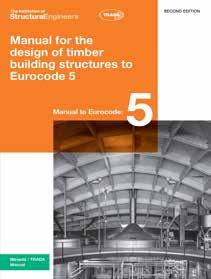





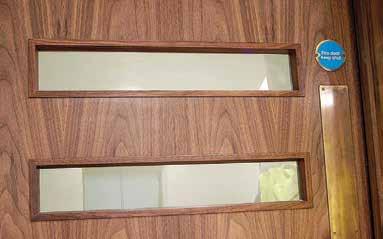



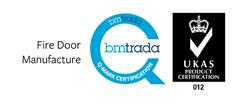
Timber 2022 | 189 www.bmtrada.com/certified-companies Visit the BM TRADA Bookshop • Technical books, e-books, information and standards • Easy to search, browse and buy • Special offers and bundles • Pre-order forthcoming books • Register for bookshop alerts Order online at bookshop.bmtrada.com or bookshop.trada.co.uk e: bookshop@bmtrada.com Tel: 01584 856439 | Email: sales@hazlin.co.uk | Web: www.hazlin.co.uk Quality you can trust Fire Doors • Acoustic Doors • Radiation Doors Panelled Doors • Vision Panels • Joinery & Finishes PROUD TO BE ACCREDITED WITH THE BM TRADA Q-MARK
Certified companies
VISUAL STRENGTH GRADING HARDWOOD
BS 5756:2007 + A1:2011; BS EN 16737
EA Code: 6
English Heritage Buildings
Coldharbour Farm Estate, Woods Corner, East Sussex TN21 9LQ
Contact: Mr Gavin Everton
Email: gavin.everton@ehbp.com
Tel: 01424 838200
Establishment ID: 030/2553.Anley
Establishment ID: 030/2553.Gallacher
Certificate Number: 2553
G and S Specialist Timber Inc
The Alpaca Centre Ltd, Snuff Mill Lane, Stainton, Penrith, Cumbria CA11 0HA
Contact: Mr Garry Stevenson
Email: info@toolsandtimber.co.uk
Tel: 01768 891445
Establishment ID: 030/2657.Stevenson
Certificate Number: 2657
Scott Partnership
Polebrook Farm, Hever Road, Hever, Kent TN8 7NJ
Contact: Mr Simon Scott
Email: simon@scottimber.co.uk
Tel: 01732 864729
Establishment ID: 030/2704.Scott
Certificate Number: 2704
White Wood Management
48 Northfield Road, Okehampton, Devon EX20 1BA
Contact: Mr Jim White
Email: jim@whitewoodmanagement.co.uk
Tel: 01837 52011
Establishment ID: 030/2640.White
Certificate Number: 2640
BS 5756:2007 + A1:2011;
EA Code: 28
Border Hardwood Ltd
BS EN 16737
Units E17 & E18 Wem Industrial Estate, Wem, Shropshire SY4 5SD
Contact: Mr Charlie Bevan-Jones
Email: charlie@borderhardwood.com
Tel: 01939 235550
Establishment ID: 030/1814.Bevan-Jones
Certificate Number: 1814
Copford Sawmill
Copford Farm, Dern Lane, Waldron, Heathfield, East Sussex TN21 0PN
Contact: Mr Harry Gingell
Tel: 01435 813472
Establishment ID: 030/2759.Gingell
Certificate Number: 2759
Duffield Timber
Green Lane, Melmerby, Ripon, North Yorkshire HG4 5JB
Contact: Mr Howard Duffield
Email: mike.hall@duffieldtimber.com
Tel: 01765 640564
Establishment ID: 030/2231.Hall
Establishment ID: 030/2231.Vauvert
Certificate Number: 2231
English Woodlands Timber Ltd
Cocking Sawmills, Cocking, Nr Midhurst, West Sussex GU29 0HS
Contact: Mr C Luffman
Email: chris@englishwoodlandstimber.co.uk
Tel: 01730 816941
Establishment ID: 030/2301.Racey
Certificate Number: 2301
GT Morrison Ltd
The Sawmills, 1 Sawmill Close, Felthorpe, Norwich, Norfolk NR10 4BH
Contact: Mr Julian Magnus
Tel: 01603 754223
Establishment ID: 030/2198.Downing
Establishment ID: 030/2198.Magnus
Certificate Number: 2198
In Wood Developments Ltd
The Woodlands Centre, Whitesmith, Nr Lewes, East Sussex BN8 6JB
Contact: Mr Peter Black
Email: pete@in-wood.co.uk
Tel: 01825 872550
Establishment ID: 030/1985.Black
Certificate Number: 1985
Morgan & Co (Strood) Ltd
Knight Road, Rochester, Kent ME2 2BA
Contact: Mr Nigel Major
Email: nigel.major@morgantimber.co.uk
Tel: 01634 290909
Establishment ID: 030/0750.Palmer
Certificate Number: 0750
Norton Timber
Long Lane, Shepherdswell, Dover, Kent CT15 7LU
Contact: Mr Terry Norton
Email: sales@nortontimber.co.uk
Tel: 01304 832525
Establishment ID: 030/2064.Norton
Certificate Number: 2064
Orlestone Oak Ltd
Orlestone Oak Sawmill, Nickley Wood, Shadoxhurst, Ashford, Kent TN26 1LZ
Contact: Mr Jack Barton
Email: jack@orlestoneoak.co.uk
Tel: 01233 732179
Establishment ID: 030/2707.Mills
Certificate Number: 2707
RYTS Ltd t/a Ryland Forestry
106 Bridge End, Warwick, Warwickshire CV34 6PD
Contact: Mr Terry Beanland
Email: rylandforestry@aol.com
Tel: 01926 843888
Establishment ID: 030/2125.Beanland
Certificate Number: 2125
Ternex Ltd
The Sawmill, 27 Ayot Green, Welwyn, Herts AL6 9BA
Contact: Mr Vince Nevel
Tel: 01707 324606
Establishment ID: 030/2008.Nevel
Certificate Number: 2008
Thorogood Timber Ltd
t/a Thorogoods
Colchester Road, Ardleigh, Colchester, Essex CO7 7PQ
Contact: Mr P Thorogood
Email: peter@thorogood.co.uk
Tel: 01206 233100
Establishment ID: 030/1114.Clarke
Establishment ID: 030/1114.Thorogood
Certificate Number: 1114
Timb-A-Haul Ltd
The Sawmills, Brick Kiln Road, Hevingham, Norfolk NR10 5NN
Contact: Mr Peter Clark
Tel: 01603 754781
Establishment ID: 030/2303.Clark
Establishment ID: 030/2303.Costello
Certificate Number: 2303
Timberpride Ltd
Quercus Road, TETBURY, Gloucestershire GL8 8GX
Contact: Mr Alexander Golesworthy
Email: alec@timberpride.co.uk
Tel: 01666 504436
Establishment ID: 030/3300.Golesworthy
Certificate Number: 030/3300
UK Timber Ltd
The Gas Depot, Weldon Rd, Corby, Northants NN17 5UD
Contact: Mr Christopher Coyle
Tel: 01536 267107
Establishment ID: 030/2708.Coyle
Certificate Number: 2708
Venables Brothers Ltd
Chipnall Sawmill, Cheswardine, Market Drayton TF9 2RB
Contact: Mr Thomas Venables
Email: tom@venbros.co.uk
Web: www.venablesoak.co.uk
Tel: 01630 661775
Establishment ID: 030/18785.Venables
Certificate Number: 18785
Whippletree Hardwoods
Milestone Farm, Barley Road, Flint Cross, Nr Royston, Herts SG8 7QD
Contact: Mr Hugh Smart
Email: admin@whippletree.co.uk
Tel: 01763 208966
Establishment ID: 030/2237.Smart
Establishment ID: 030/2237.Wright
Certificate Number: 2237
Yandle & Sons Ltd
Hurst Works, Martoch, Somerset TA12 6JU
Contact: Mr Alex Pickford-Waugh
Email: alex@yandles.co.uk
Tel: 01935 822207
Establishment ID: 030/3329.Pickford-Waugh
Certificate Number: 3329
VISUAL STRENGTH GRADING SOFTWOOD
BS 4978:2007 + A1:2011
EA Code: 6
Arfon Timber
8 Goronwy St No 2, Gerlan, Bethesda, Bangor LL57 3TT
Contact: Mr Mark Chapman
Email: mark@arfontimber.co.uk
Web: www.arfontimber.co.uk
Tel: 07534 188740
Establishment ID: 004/18978.Chapman
Certificate Number: 18978
Hales Sawmills Ltd
Western Way, Market Drayton, Shropshire TF9 3UY
Contact: Mr J C Parton

Email: julian@halessawmills.co.uk /
sales@halessawmills.co.uk
Web: www.halessawmills.co.uk
Tel: 01630 653359
Establishment ID: 004/2668.Butter
Establishment ID: 004/2668.Hassall
Certificate Number: 2668
White Wood Management
48 Northfield Road, Okehampton, Devon EX20 1BA
Contact: Mr Jim White
Email: jim@whitewoodmanagement.co.uk
Tel: 01837 52011 / 07974 217168
Establishment ID: 004/2640.White
Certificate Number: 2640
BS 4978:2007 + A1:2011
EA Code: 28
Abbeygate Builders Merchants Ltd
Unit 5, Arkwright Road, Poyle, Heathrow SL3 0HL
Contact: Mr Michael Parfitt
Email: michael@abbeygate.com
Tel: 020 8567 8903
Establishment ID: 004/1478.Parfitt
Establishment ID: 004/1478.Simons
Certificate Number: 1478
Adhectic Ltd
Phoenix House, Radley Road Industrial Estate, Abingdon, Oxfordshire OX14 3RY
Contact: Mr Alick Haynes
Email: sales@adhectic.co.uk
Tel: 01235 520738
Establishment ID: 004/1674.Jenkins
Certificate Number: 1674
Allen & Orr Ltd
Albion Sawmills, Union Walk, Chesterfield, Derbyshire S40 4SA
Contact: Mr Graham Ede
Tel: 01246 232859
Establishment ID: 004/1156.Waterhouse
Certificate Number: 1156
Alsford Timber Ltd
Ness Road, Erith, Kent DA8 2LD
Contact: Mr Rick Paget
Email: rick.paget@alsfordtimber.com
Tel: 01322 333088
Establishment ID: 004/0146.Cudmore
Establishment ID: 004/0146.Jones
Establishment ID: 004/0146.Paget
Establishment ID: 004/0146.Peaple
Certificate Number: 0146
Anglo Norden Forest Products Ltd
Orwell Terminal, Duke Street, Ipswich, Suffolk IP3 0AJ
Contact: Mr Per Christensen
Tel: 01473 233244
Establishment ID: 004/0945.Knight
Certificate Number: 0945
Anthony Axford Ltd
Atlas Sawmills, King Street, Farnworth, Bolton, Lancashire BL4 7AD
Contact: Mr Paul Jones
Email: paul@anthonyaxford.co.uk
Tel: 07966 459840
Establishment ID: 004/0781.Jones
Establishment ID: 004/0781.Lee
Certificate Number: 0781
Arbor Timber & Builders Merchants Ltd
Mill Road, Littleburn Ind. Est, Langley Moor, Durham DH7 8HE
Contact: Mr David Kayll
Tel: 0191 378 2016
Establishment ID: 004/1553.Kayll
Certificate Number: 1553
Arnold Laver & Co Ltd
Olympic Sawmills, Oxclose Park Road North, Mosborough, Sheffield S20 8GN
Contact: Mr Andrew Bowler
Email: andrewbowler@laver.co.uk
Tel: 0114 276 4700
Establishment ID: 004/1179.Adams
Certificate Number: 1179
Arnwood Timber Ltd
61 Millbrook Road East, Southampton, Hampshire SO15 1HN
Contact: Mr Robert Arnold
Tel: 023 8023 2327
Establishment ID: 004/1595.Arnold
Certificate Number: 1595
Avon Timber Merchants Ltd
Stonebridge Industrial Estate, Rowley Drive, Coventry CV3 4FG
Contact: Mr Steve Lomasney
Email: s.lomasney@avontimber.co.uk
Tel: 024 7630 4848
Establishment ID: 004/1142.Goalby
Certificate Number: 1142
AW Champion Ltd
Curtis Road Industrial Estate, Dorking, Surrey RH4 1EJ
Contact: Mr Steve Samler
Email: dorking@championtimber.com
Tel: 01306 884418
Establishment ID: 004/3381.Ridland
Certificate Number: 3382
AW Champion Ltd
Fircroft Way, Industrial Estate, Edenbridge, Kent TN8 6EL
Contact: Mr Steve Samler
Email: ssamler@championtimber.com
Tel: 01732 864328
Establishment ID: 004/0413.Samler
Establishment ID: 004/0413.Worley
Certificate Number: 0413
Basildon Timber Merchants Ltd
Honywood House, Honywood Road, Basildon, Essex SS14 3EN
Contact: Mr John Cordery
Email: bastim@ukonline.co.uk
Tel: 01268 531444
Establishment ID: 004/1123.Cordery
Certificate Number: 1123
Brooks Bros (London) Ltd
Unit 3, Portland Commercial Estate, Ripple Road, Barking, Essex IG11 0TW
Contact: Mr Peter Sherriff
Tel: 020 8591 5300
Establishment ID: 004/0342.Muir
Certificate Number: 0342
190 | Timber 2022 www.bmtrada.com/certified-companies
BM TRADA
Buckland Timber
Marsh End, Lords Meadow Industrial Estate, Crediton, Devon EX17 1DN
Contact: Mr Robin Nicholson
Email: info@bucklandtimber.co.uk
Tel: 01363 891363
Establishment ID: 004/2822.Dicks
Establishment ID: 004/2822.Glover
Certificate Number: 2822
Buildbase Ltd
Burrfields Road, Portsmouth, Hampshire PO3 5NA
Contact: Mr Martin Watson
Email: martin.watson@buildbase.co.uk
Tel: 023 9266 9535 / 023 9266 2261
Establishment ID: 004/1045.Wood
Certificate Number: 1045
Capricorn Eco Timber
Unit D, Ladfordfields Industrial Estate, Seighford, Stafford, Staffordshire ST18 9QE
Contact: Mr Roger Arveschoug
Tel: 01785 282307
Establishment ID: 004/2723.Arveschoug
Certificate Number: 2723
Carver Group of Companies
Neachells Lane, Wednesfield, Wolverhampton WV11 3RG
Contact: Mr Brian Warrington
Email: brianwarrington@carvers.co.uk
Tel: 01902 577000
Establishment ID: 004/2045.Watton
Certificate Number: 2045
Charles Gregory and Sons (Timber) Ltd
Tansley Sawmills, Nottingham Road, Tansley, Nr Matlock, Derbyshire DE4 5FR
Contact: Mr Richard Gregory
Email: info@charlesgregoryandsons.co.uk
Tel: 01629 582376
Establishment ID: 004/1680.Gregory
Certificate Number: 1680
Charles Ransford & Son Ltd
Station Street, Bishop’s Castle, Shropshire SY9 5AQ
Contact: Mr Peter Walters
Email: p.walters@ransfords.co.uk
Tel: 01588 638331
Establishment ID: 004/1143.Leitch
Establishment ID: 004/1143.Morgan
Certificate Number: 1143
Chiltern Timber
Unit DC4 Prologis Park, Maylands Gateway, Blossom Way, Hemel Hempstead, Hertfordshire HP2 4ZB
Contact: Mr Gerald Barton
Email: gerry.barton@chilterntimber.co.uk
Tel: 01442 248444
Establishment ID: 004/2343.Barton
Certificate Number: 2343
Christchurch Timber & Trading Ltd
1 Stour Road, Christchurch, Dorset BH23 1PL
Contact: Mr Bill Craig / Mr Alex Rook
Email: alex@christchurchtimber.co.uk
Tel: 01202 483471
Establishment ID: 004/1558.Sims
Certificate Number: 1558
CL Jones
Caernarfon Depot, Cibyn Industrial Estate, Caernarfon, Gwynedd LL55 2BD
Contact: Mr Ron Owens
Email: ronowens@cljonesltd.co.uk
Tel: 01286 676070
Establishment ID: 004/1984.Owens
Certificate Number: 1984
Clarkes Of Walsham Ltd
Walsham Le Willows, Bury St Edmunds, Suffolk IP31 3BA
Contact: Mr Andrew Sturgeon
Email: andrew.sturgeon@clarkesofwalsham.co.uk
Tel: 01359 259259
Establishment ID: 004/0727.Sturgeon
Certificate Number: 0727
David Cover & Son Ltd t/a Covers
110 Norway Road, Hilsea, Portsmouth, Hampshire PO3 5FT
Contact: Mr Dale Lambourne
Tel: 023 9267 1900
Establishment ID: 004/1616.Atkinson
Establishment ID: 004/1616.Tamblyn
Certificate Number: 1616
David Cover & Son Ltd t/a Covers
Chatfields Yard, Cooksbridge, Lewes, East Sussex BN8 4TJ
Contact: Mr Darren Hartshorne
Email: darren.hartshorne@covers.biz
Tel: 01273 476133
Establishment ID: 004/0752.Sandalls
Certificate Number: 0752
David Cover & Son Ltd t/a Covers
Imperial Park, Empress Road, Southampton, Hampshire SO14 0JW
Contact: Ms Rhea Sampson
Email: rhea.sampson@covers.biz
Web: www.covers.biz
Tel: 023 8055 6996
Establishment ID: 004/3262.Bowman
Certificate Number: 5727
David Cover & Son Ltd t/a Covers
Station Yard, Bognor Regis, West Sussex PO21 1BT
Contact: Mr Paul Allwright
Tel: 01243 785141
Establishment ID: 004/2327.Outen
Establishment ID: 004/2327.Sampson
Certificate Number: 2327
David Cover & Son Ltd t/a Covers
Sussex House, Quarry Lane, Chichester, West Sussex PO19 8PE
Contact: Ms Sarah Swinton
Email: sarah.swinton@covers.biz
Tel: 01243 785141
Establishment ID: 004/0546.Bracher
Establishment ID: 004/0546.Clare
Establishment ID: 004/0546.Irish
Establishment ID: 004/0546.Jeal
Establishment ID: 004/0546.Kemish
Certificate Number: 0546
David Cover & Son Ltd t/a Covers
Victoria Gardens, Victoria Industrial Estate, Burgess Hill, West Sussex RH15 9NB
Contact: Mr Terry Lace / Mr Derek Taylor
Email: terry.lace@covers.biz
Tel: 01444 233358
Establishment ID: 004/2572.Lane
Establishment ID: 004/2572.Wakeford
Certificate Number: 2572
Esgair Timber Company Ltd
Esgair Forest, Pantperthog, Machynlleth, Powys SY20 9AY
Contact: Mr Dan Artherton
Email: info@esgairtimber.co.uk
Tel: 01654 703904
Establishment ID: 004/2758.Evans
Certificate Number: 2758
FH Ives Ltd
217 Southend Road, Wickford, Essex SS11 8PG
Contact: Mr N Ives
Tel: 01268 732373
Establishment ID: 004/0313.Logan
Establishment ID: 004/0313.Woolley
Certificate Number: 0313
First Choice Building Supplies Ltd
Middlesex Business Centre, Bridge Road, Southall, Middlesex UB2 4AB
Contact: Mr Gurpreet Lachhar
Email: sales@middlesextimber.co.uk
Web: www.middlesextimber.co.uk
Tel: 020 8571 6866 / 020 8571 7006
Establishment ID: 004/2281.Lachhar
Certificate Number: 2281
Fleming Buildbase Ltd
Silverburn Place, Bridge Of Don, Aberdeen, Scotland AB23 8EG
Contact: Mr Mike MacLellan
Email: aberdeen@buildbase.co.uk
Tel: 01224 258200
Establishment ID: 004/0224.Black
Certificate Number: 0224
Fleming Buildbase Ltd
Wood Street, Grangemouth, Central Region, Scotland FK3 8LH
Contact: Mr David Baird
Email: davie.baird@buildbase.co.uk / grangemouth.admin@buildbase.co.uk
Tel: 01324 665444
Establishment ID: 004/0360.Savage
Certificate Number: 0360
G&C Timber & Joinery Ltd
Stephenson Road, Severalls Industrial Park, Colchester, Essex CO4 9QR
Contact: Mr Colin Chaplin
Email: info@gcsoftwoods.com
Tel: 01206 752555
Establishment ID: 004/1050.Chaplin
Certificate Number: 1050
Hertfordshire Timber Supplies Ltd
Blackhorse Rd, Letchworth, Hertfordshire SG6 1HB
Contact: Mr Kevin Cox
Email: kevin@hertstimber.co.uk
Tel: 01462 686838
Establishment ID: 004/5821.Barnes
Certificate Number: 5821
Homeleigh Timber & Building Supplies
Station Road, Staplehurst, Tonbridge, Kent TN12 0PY
Contact: Mr Louis Jenkins
Email: louis.jenkins@homeleighgroup.co.uk
Tel: 01580 891958
Establishment ID: 004/1960.Jenkins
Certificate Number: 1960
Hoppings Softwood Products Plc
The Woodyard, Epping Road, Epping, Essex CM16 6TT
Contact: Mr John Rhodes
Tel: 01992 578877
Establishment ID: 004/0307.Furlong
Certificate Number: 0307
Howarth Timber Group Ltd - TTL
Howarth House, Hollow Road, Bury St Edmunds, Suffolk IP32 7QW
Contact: Mr Richard Bettinson
Email: rbettinson@howarth-timber.co.uk
Tel: 01284 772700
Establishment ID: 004/0134.Butcher
Certificate Number: 0134
Huws Gray Fitlock Ltd
Llangefni Industrial Estate, Bridge Street, Llangefni, Anglesey, Gwynedd, Wales LL77 7JA
Contact: Mr David O Williams
Tel: 01248 421956
Establishment ID: 004/0105.EWilliams
Establishment ID: 004/0105.Jones
Certificate Number: 0105
Jordan Timber Ltd
Pocket Nook Lane, Lowton, Warrington, Cheshire WA3 1AB
Contact: Mr John Barker
Email: sales@jordantimber.co.uk
Tel: 01942 683060
Establishment ID: 004/1443.Barker
Certificate Number: 1443
Joseph Griggs & Co Ltd
Bristol Road, Gloucester, Gloucestershire GL1 5TD
Contact: Mr Kevin Cox
Email: kevin.cox@josephgriggs.com
Tel: 01452 520346
Establishment ID: 004/0132.Thomas
Certificate Number: 0132
Kent Blaxill & Co Ltd
129 - 139 Layer Road, Colchester, Essex CO2 9JY
Contact: Mr Nigel Hooker
Email: niger.hooker@kentblaxill.co.uk
Tel: 01206 575171
Establishment ID: 004/0972.Anderson
Certificate Number: 0972
Kingspan Timber Solutions Ltd
Eltisley Road, Great Gransden, Near Sandy, Bedfordshire SG19 3AR
Contact: Mr James Walker
Email: jamesa.walker@kingspan.com
Tel: 01767 676451
Establishment ID: 004/5622.Knibbs
Establishment ID: 004/5622.Peacock
Establishment ID: 004/5622.Scoot
Certificate Number: 5622
KS Timber Ltd
The Timber Yard, Wharf Road, Stanford Le Hope, Essex SS17 0EQ
Contact: Ms Carol Wager
Email: carol@kstimber.co.uk
Tel: 01375 641310
Establishment ID: 004/2757.Elbourn
Establishment ID: 004/2757.Sorenson
Certificate Number: 2757
Lawsons (Whetstone) Ltd
53 Blundell Street, Camden Town, London N7 9BN
Contact: Mr Garry O’ Sullivan
Tel: 020 7619 6470
Establishment ID: 004/1152.06.McGrath
Certificate Number: 1152
Lawsons SE
Lawsons Sidcup, Unit 2, 5 Arches Business Estate, Maidstone Road, Sidcup, Kent DA14 5AE
Contact: Mr Simon Gregory
Email: simon.gregory@lawsons.co.uk
Web: www.timberUK.com
Tel: 020 8312 1902
Establishment ID: 004/1452.Collins
Establishment ID: 004/1452.Young
Certificate Number: 1452
Llandre Sawn Wood Ltd
Hundred House, Llandriadod Wells, Powys, Wales LD1 5RS
Contact: Mr Gethin Price
Email: sales@llandresawnwood.co.uk / gary@llandresawnwood.co.uk
Web: www.llandresawnwood.co.uk
Tel: 01982 570329
Establishment ID: 004/3445.Price
Certificate Number: 3445
Marley Ltd
The Old Shipyard, Gainsborough, Linconshire DN21 1NG
Contact: Ms Jenni Forrest
Email: jenni.forrest@marley.co.uk
Tel: 01427 675546
Establishment ID: 004/6283.Largue
Establishment ID: 004/6283.Lightfoot
Certificate Number: 6283
Melingoed Ltd
Station Road, Newcastle Emlyn, Carmarthenshire SA38 9BX
Contact: Mr J D Davies
Email: dylan@melingoed.co.uk / marciamansel@hotmail.co.uk
Tel: 01239 711070
Establishment ID: 004/1346.Davies
Certificate Number: 1346
MH Southern & Company Ltd
Green Lane Sawmills, Green Lane, Felling, Gateshead, Tyne & Wear NE10 0JS
Contact: Mr Mark Williamson
Email: markw@mhsouthern.co.uk
Tel: 0191 469 8743
Establishment ID: 004/2591.Anderson
Establishment ID: 004/2591.Hall
Establishment ID: 004/2591.Thirkell
Certificate Number: 2591
Timber 2022 | 191 www.bmtrada.com/certified-companies BM TRADA Certified companies
Certified companies
Mid-Sussex Timber Co Ltd
Station Road, Forest Row, Sussex RH18 5EL
Contact: Mr Craig Reeves
Email: craig.reeves@mstc.co.uk
Tel: 01342 822191
Establishment ID: 004/0145.Dawes
Establishment ID: 004/0145.Demain
Establishment ID: 004/0145.Griffiths
Establishment ID: 004/0145.Jenkin
Establishment ID: 004/0145.Waters
Certificate Number: 0145
Monmouthshire Timber Supplies Ltd
P O Box 20, North End - Alexandra Dock, Newport, Gwent, Wales NP20 2YQ
Contact: Mr Bob Smith
Email: bob@montimber.co.uk
Tel: 01633 414410
Establishment ID: 004/1433.Smith
Certificate Number: 1433
Morgan & Co (Strood) Ltd
Knight Road, Rochester, Kent ME2 2BA
Contact: Mr Nigel Major
Email: nigel.major@morgantimber.co.uk
Tel: 01634 290909
Establishment ID: 004/0750.Coe
Establishment ID: 004/0750.Palmer
Certificate Number: 0750
NG Bell & Son Ltd
30 Greyabbey Road, Ballywalter, Newtownards, Northern Ireland BT22 2NY
Contact: Mr Graham Bell
Email: graham@ngbell.com
Tel: 028 4275 8243
Establishment ID: 004/1263.Bell
Certificate Number: 1263
Nicks & Co (Timber) Ltd
Canada Wharf, Bristol Road, Gloucester, Gloucestershire GL1 5TE
Contact: Mr Will O’Toole
Email: will@nickstimber.co.uk
Tel: 01452 300159
Establishment ID: 004/0159.Jeffcutt
Certificate Number: 0159
North Yorkshire Timber Ltd
t/a NY Timber.
Bridge Road, Brompton-on-Swale, North Yorkshire DL10 7HS
Contact: Mr Andrew Watters
Email: awatters@nytimber.co.uk
Tel: 01748 812953
Establishment ID: 004/2017.Hugill
Establishment ID: 004/2017.Wake
Certificate Number: 2017
P McDermott & Sons
11 Sedan Avenue, Omagh, Co Tyrone, Northern Ireland BT79 7AQ
Contact: Mr Mark McCafrey
Email: mark@pmcdermottsomagh.com
Tel: 028 8224 2066
Establishment ID: 004/1436.McCaffrey
Certificate Number: 1436
Parker Building Supplies Ltd
Jarvis Brook Goods Yard, Western Road, Crowborough, East Sussex TN6 3DS
Contact: Mr Mark Sumner
Email: crowborough@parkerbs.com
Tel: 01892 667000
Establishment ID: 004/1172.Puxty
Certificate Number: 1172
Percy A Hudson
Borough Sawmills, Northumberland Street, North Shields, Tyne & Wear NE30 1DW
Contact: Mr M A Hudson
Email: mark@percyahudson.co.uk
Tel: 0191 257 5099
Establishment ID: 004/0502.JHudson
Establishment ID: 004/0502.MHudson
Certificate Number: 0502
PGR Builders & Timber Merchants Ltd
91-97 Stadium Way, Benfleet, Essex SS7 3BN
Contact: Mr Dan Toomey
Email: dan.toomey@pgrtimber.co.uk
Tel: 01268 777600
Establishment ID: 004/2770.Ebsworth
Certificate Number: 2770
Premier Timber
Unit 1 & 2, Cullet Drive, Queensborough, Kent ME11 5JS
Contact: Mr Andy Haywood
Tel: 01795 583111
Establishment ID: 004/1557.Hayward
Certificate Number: 1557
Read Bros Ltd
Burnett Road, Sweet Briar Road Industrial Estate, Norwich, Norfolk NR3 2BS
Contact: Mr M Read
Tel: 01603 401319
Establishment ID: 004/0575.Murray
Certificate Number: 0575
Ridgeons Ltd - TTL
Herringswell Sawmills, Kennett Road, Herringswell, Bury St Edmunds IP28 6SS
Contact: Mr Eddie Hart
Tel: 01638 555850
Establishment ID: 004/1052.Danks
Establishment ID: 004/1052.Hart
Establishment ID: 004/1052.Jones
Establishment ID: 004/1052.Klimowicz
Certificate Number: 1052
Robert Price (Timber & Roofing Merchants) Ltd
The Wood Yard, Forest Road, TAFFS Well, Cardiff CF15 7YE
Contact: Mr Gwyn Pritchard
Email: gpritchard@robert-price.co.uk
Tel: 029 2081 1681
Establishment ID: 004/0517.Ellery
Establishment ID: 004/0517.Hemmings
Certificate Number: 0517
Rother Valley Group
Station Yard, Rolvenden, Cranbrook, Kent TN17 4QZ
Contact: Mr Robin Crispin
Email: robin@rvtimber.com
Web: www.rothervalleytimber.co.uk
Tel: 01580 241555
Establishment ID: 004/1155.Coles
Establishment ID: 004/1155.Green
Establishment ID: 004/1155.Sorsbie
Establishment ID: 004/1155.Wickenden
Certificate Number: 1155
Rowan Manufacturing Ltd
Main Street, Plains, Airdrie, Scotland ML6 7JE
Contact: Mr Kevin Cahill
Email: kevin.cahill@rowanmanufacturing.co.uk
Tel: 01236 814000
Establishment ID: 004/1222.Cahill
Certificate Number: 1222
RYTS Ltd t/a Ryland Forestry
106 Bridge End, Warwick, Warwickshire CV34 6PD
Contact: Mr Terry Beanland
Email: rylandforestry@aol.com
Tel: 07767 787868
Establishment ID: 004/2125.Beanland
Certificate Number: 2125
Smith Bros Timber (East Anglia) Ltd
15 Cooke Road, South Lowestoft Ind. Est., Lowestoft, Suffolk NR33 7NA
Contact: Mr Jason Harness
Email: jason.harness@smiths-timber.co.uk
Tel: 01502 569115
Establishment ID: 004/1525.Harness
Certificate Number: 1525
Sodra Wood Ltd
Units 18/19 Cirencester Business Park, Tetbury Road, Cirencester, Gloucestershire GL7 6JJ
Contact: Mr Simon Henry
Email: simon.henry@sodra.com
Tel: 01285 646000
Establishment ID: 004/1104.McShane
Establishment ID: 004/1104.Smith
Certificate Number: 1104
South London Timber Co. Ltd
Questar Ind.Estate, Unit 236, Fawkes Avenue, Dartford DA1 1JQ
Contact: Mr Edward James
Email: edward@sltimber.co.uk
Tel: 020 7252 8383
Establishment ID: 004/2273.Major
Certificate Number: 2273
Stamco Ltd
Sussex Turney & Moulding Co Ltd t/a Stamco, Churchfields Mill, Highfield Drive, Churchfields Industrial Estate, St Leonards-on-Sea, East Sussex TN38 9TG
Contact: Mr Ray Reed
Email: ray.reed@stamco.co.uk
Tel: 01424 856800
Establishment ID: 004/1232.Reed
Certificate Number: 1232
T Brewer & Co Ltd
Timber Mill Way, Gauden Rd, Clapham, London SW4 6LY
Contact: Mr Nick Smith
Tel: 020 7720 9494
Establishment ID: 004/1262.Stevens
Certificate Number: 1262
Talbot Timber Ltd
Warrior Way, Waterloo West, Pembroke Dock, Dyfed, Wales SA72 6UB
Contact: Mr Shaun Smith
Email: ssmith@talbottimber.co.uk
Tel: 01646 686480 / 685238
Establishment ID: 004/1323.Scoble
Certificate Number: 1323
The Southern Timber Company Crokers Park, Edgelands Cross, Totnes Road, Ipplepen, Newton Abbot TQ12 5UG
Contact: Mr Mike Tewson
Email: andy@southern-timber.co.uk
Tel: 01803 813803 / 01752 600066
Establishment ID: 004/2080.Fewings
Certificate Number: 2080
The Timber Group
Unit 3, Aerodrome Estate, Detling, Maidstone, Kent ME14 3HU
Contact: Mr Ian Ausher
Email: ian.ausher@thetimbergroup.co.uk
Tel: 01622 738246
Establishment ID: 004/1970.Ausher
Establishment ID: 004/1970.Couzens
Establishment ID: 004/1970.Wells
Certificate Number: 1970
Thorogood Timber Ltd
t/a Thorogoods
Colchester Road, Ardleigh, Colchester, Essex CO7 7PQ
Contact: Mr P Thorogood
Email: peter@thorogood.co.uk
Tel: 01206 233100
Establishment ID: 004/1114.Thorogood
Certificate Number: 1114
Timberlink Ltd
Sutton Road, Tern Hill, Market Drayton, Shropshire TF9 2JH
Contact: Mrs Kirsty Metcalfe
Email: operations@timberlink.co.uk
Tel: 01630 638111
Establishment ID: 004/2712.Jervis
Certificate Number: 2712
Trace Remedial Building Services
Unit 7, Graphite Way, Hadfield, Glossop, Derbyshire SK13 1QH
Contact: Mr David Hockey
Email: david.hockey@traceremedial.co.uk
Tel: 01457 865165
Establishment ID: 004/2728.Hockey
Certificate Number: 2728
Travis Perkins Trading Co. Ltd
Baltic Wharf, Boyn Valley Road, Maidenhead, Berkshire SL6 4EE
Contact: Mr Martin Wright
Email: julie.currington@travisperkins.co.uk
Tel: 01628 770577
Establishment ID: 004/0230.Wright
Certificate Number: 0230
Travis Perkins Trading Co. Ltd
Forstal Road, Aylesford, Maidstone, Kent ME20 7AG
Contact: Mr Brian Lea
Email: brian.lea@travisperkins.co.uk
Tel: 01622 710111
Establishment ID: 004/0092.Lea
Establishment ID: 004/0092.Wright
Certificate Number: 0092
Travis Perkins Trading Co. Ltd

Middlebrook Way, Holt Road, Cromer, Norfolk NR27 9JR
Contact: Mr Rob Castle
Email: robert.castle@travisperkins.co.uk
Tel: 01263 511244
Establishment ID: 004/0112.Hanlon
Certificate Number: 0112
Travis Perkins Trading Co. Ltd.
Navigation Road, Chelmsford, Essex CM2 6HX
Contact: Mr Brian Blackburn
Email: brian.blackburn@travisperkins.co.uk
Tel: 01245 490000
Establishment ID: 004/0107.Aggar
Establishment ID: 004/0107.Greenleaf
Certificate Number: 0107
Travis Perkins Trading Co. Ltd. Park Lane Sawmills, Park Lane, Finchampstead, Berkshire RG40 4PT
Contact: Mr Michael Chotter-Marsh
Email: m.chotter-marsh@travisperkins.co.uk
Tel: 0118 976 1100
Establishment ID: 004/2353.Chipper
Certificate Number: 2353
Tudors Building Supplies (Hereford) Ltd
Northwood Yard, Burcott Road, Hereford, Herefordshire HR4 9LW
Contact: Mr Darren Burge
Email: darren.burge@tudors.uk.com
Tel: 01432 265071
Establishment ID: 004/1442.Fitzer
Certificate Number: 1442
W G Burbidge
The Timberyard, Pysons Road, Ramsgate, Kent CT12 6RL
Contact: Mr Andy Burbridge
Email: andyburbridge20@gmail.com
Tel: 01843 581906
Establishment ID: 004/1697.Burbridge
Certificate Number: 1697
Wenban-Smith Ltd
14 Newland Road, Worthing, West Sussex BN11 1JT
Contact: Mr Craig Milby
Tel: 01903 230311
Establishment ID: 004/5614.Hammond
Establishment ID: 004/5614.Ide
Certificate Number: 5614
WH Bond & Sons Ltd
t/a Bond Timber
Bake Sawmills, Trerulefoot, Saltash, Cornwall PL12 5BW
Contact: Ms Amy Shepherd
Email: amy@whbond.co.uk
Web: www.whbond.co.uk
Tel: 01503 240308
Establishment ID: 004/2054.Getson
Establishment ID: 004/2054.Ivey
Establishment ID: 004/2054.Slowik
Certificate Number: 2054
William Kirkwood & Sons
5-9 Newcastle Road, Castlewellan, Co Down, Northern Ireland BT31 9DP
Contact: Mr Colin Kirkwood
Email: wkirkwoodandsons@btconnect.com
Tel: 028 4377 8276
Establishment ID: 004/2737.Kirkwood
Certificate Number: 2737
Youngs Timber & Builders Merchants
19-23 Hythe Road, Dymchurch, Romney Marsh, Kent TN29 0LN
Contact: Mr John Levitt
Email: john@youngs-tbm.co.uk
Tel: 01303 875588
Establishment ID: 004/2208.Levitt
Certificate Number: 2208
192 | Timber 2022 www.bmtrada.com/certified-companies BM TRADA


Timber 2022 | 193 www.bmtrada.com CHAIN OF CUSTODY CERTIFICATION FROM THE INDUSTRY EXPERTS • FSC ® Chain of custody • PEFC ™ Chain of custody • FSC Project • PEFC Project • Responsibly Sourced Forest Products Find out more at www.bmtrada.com BM TRADA’s timber experts offer independent timber inspection, timber surveys and timber consultancy in a wide variety of industrial and residential applications. www.bmtrada.com
TIMBER TRAINING COURSES 2022
VISUAL STRENGTH GRADING: SOFTWOODS
The Horse Trust, Princes Risborough, Buckinghamshire, HP27 0PP
28 March – 1 April 2022
6–10 June 2022
3–7 October 2022
£1375 + VAT per delegate
VISUAL STRENGTH GRADING: HARDWOODS
The Horse Trust, Princes Risborough, Buckinghamshire, HP27 0PP
11–12 May 2022
8–9 November 2022
£750 + VAT per delegate
TIMBER FRAME CONSTRUCTION
BM TRADA, High Wycombe, Buckinghamshire, HP14 4ND
1 March 2022
7 June 2022
8 September 2022
1 December 2022
£340 + VAT per delegate
TIMBER FRAME FOR ENGINEERS
BM TRADA, High Wycombe, Buckinghamshire, HP14 4ND
9 May 2022
3 November 2022
£340 + VAT per delegate
EUROCODE 5

Online
Essentials: 18 May 2022
Connections: 20 September 2022


£340 + VAT per delegate

ENQUIRE ABOUT THESE COURSES: +44 (0)1494 569 750 TCAdmin@bmtrada.com bmtrada.com/training/timber-training OUR TRAINERS
Robin Lancashire Senior Timber Frame Consultant
Phil O’Leary Technical Manager
Lewis Taylor Senior Timber Frame Consultant
Dr Keerthi Ranasinghe Principal Engineer – Structural Timber

+ 44 ( 0 ) 1494 569601
196 | Timber 2022 www.bmtrada.com Timber 2022 Advertisers’ index A W Champion Ltd.......................................................... 152 ALN Carpentry 83 Alsford Timber Ltd 152 Altripan UK Ltd................................................................ 164 BeA Fastening Systems 78 BM TRADA ......118, 131, 143, 156, 174, 189, 193, 194 -195 Border Merchant Systems Ltd 154 British Woodworking Federation 126 Brooks Bros (UK) ...................................................... 02, 114 BSW Group 119 Calders & Grandidge ...................................................... 124 Co2 Timber ...................................................................... 166 Combilift 76 Constructional Timber (Manufacturers) Ltd.................. 46 Crendon Timber Engineering Ltd 48 Deanta UK Ltd ................................................................. 136 Doors Plus Group .......... 110, 134, 141, Inside Back Cover Dorset Timber Engineering Ltd 52 DWB Timber Engineering ................................................ 64 Dynalyse 82 Eco Homes Direct ............................................................. 52 Egoin Wood Group............................................................ 92 Ellen Enterprises Holdings Ltd 74, 148 Engineered Timber Solutions Ltd ................................... 88 English Heritage Buildings 185 Enviro Eco Wall Panels Ltd 111 Envirograf........................................................................ 112 Fabric Flare Solutions 110 Fallen & Found Artisans Ltd ............................................ 12 Forest Stewardship Council (FSC) UK 164 G-Frame Structures Ltd 94 Global Timber Products Ltd........................................... 116 Glosford SIPS 60 GP Wood .......................................................................... 152 Hanson Plywood Limited 42 Harmony Timber Frame UK 36 Harmony Timber Solutions UK ........................................ 74 Hazlin of Ludlow 142, 189 Hoppings Softwood Products ........................... 60, 82, 118 Houghtons of York 130 Hout De Groote Nv. 167 Howarth Timber & Building Supplies ........................... 150 HSBCAD 50 Huws Gray Timber Engineering ...................................... 62 Ian Chalk Architects 28 Impra Wood Protection Limited 100 International Timber ...................................................... 146 ITW Construction Products 80 JCK Joinery ..................................................................... 185 Jet Joinery Supplies 130 Kingston Modular 56 Koppers Performance Chemicals ................................... 98 Lakeland Timber Frame 36 Lane Civil Engineering ..................................................... 64 LFS Fire Solutions & Maintenance 139, 176 Make Woodworking Ltd ................................................ 140 Malaysian Timber Council 144 MDM Timber Ltd 140 Medite Smartply ............................................................. 160 MiTek 66 MKM Building Supplies Ltd ........................................... 165 Morgan Timber ............................................................... 162 Murray Timber Group 6, 24, 70, 157, Outside Back Cover NHG Timber Ltd .............................................................. 169 Oakwell Building Services 138 Openwall Offsite Innovation ............................................ 58 Owatrol 102 Paramount Timber Frame 86 Piveteaubois ..................................................................... 40 QTF Services Ltd 60 List of advertisers RB Doors & Joinery Ltd ................................................. 140 Repair Care International Ltd ........................................ 128 Robertson Timber Engineering ....................................... 61 Rotafix ............................................................................... 53 Rubio Monocoat ............................................................. 108 Rushmoor Engineering .................................................... 52 Scotframe.......................................................................... 88 Siberian Timber (UK) Ltd ............................................... 164 Siero Lam ........................................................................ 116 Simpson Strong-Tie ......................................................... 75 SIPCO ................................................................................. 48 Steico ................................................................................. 72 Stora Enso ....................................................................... 168 Teknos UK Ltd ................................................................. 104 The London Fire Door Co. .............................................. 181 Tilly Holzindustrie ........................................................... 154 Timber Connection ........................................................... 10 Timber Development UK ...................................... 14 -15, 44 Timber Frame Management ........................................... 38 Timber Frameworks (Alba) Ltd....................................... 36 Timber Innovations .......................................................... 82 Vandecasteele Houtimport ............................................ 155 Venables Oak ............................................................ 42, 118 Vicaima 138 W L West & Sons Ltd 153 Wardell Long Lengths 168 West Fraser 08 Whitmore’s Timber Ltd 166 WJ Group 106 Woodsafe Timber Protection Inside Front Cover - 01 Wulf Protective 181 Wyckham Blackwell 56 York Wall Systems 113 Züblin Timber 90 - 91
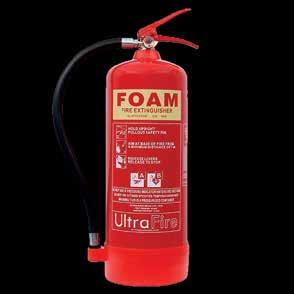
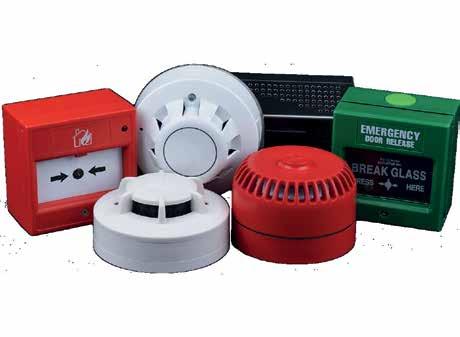



















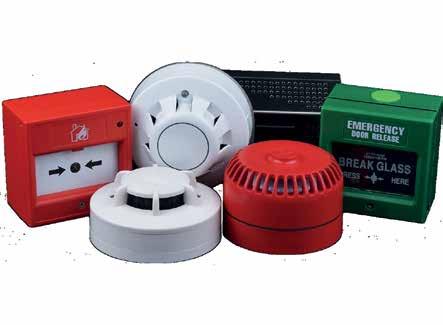







































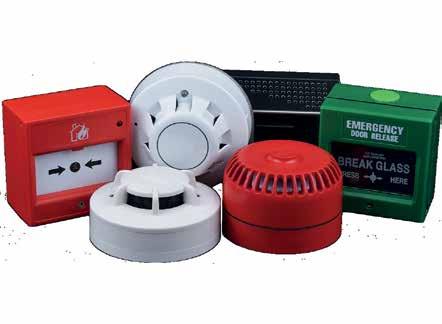


















Prevention 08443 843125 plusgroupltd.co.uk GROUP Doors PART OF THE DOORS PLUS GROUP. All Accreditations held by DOORS PLUS Ltd - UNIT 1, 2 & 9 HURN ROAD, DEREHAM, NR19 1WD FIRE STOPPING & FIRE BARRIERS FIRE RISK ASSESSMENTS BUILDING COMPLIANCE ASSESSMENTS BUILDING & LOFT COMPARTMENTATION FIRE ALARM SYSTEMS SMOKE ALARM SYSTEMS EMERGENCY LIGHTING SOLUTIONS EMERGENCY SIGNAGE SOLUTIONS FIRE SUPPRESSION & MISTING SYSTEMS ELECTRICAL COMPLIANCE TESTING FIRE EXTINGUISHER INSTALLATION, SERVICING & MAINTENANCE ACTIVE SMOKE VENTILATION SYSTEMS PASSIVE SMOKE VENTILATION SYSTEMS FIRE STOPPING EXPERTS IN COMPLI ANCE S SURVEY • DESIGN • INSTALL • MAINTAIN Fire Prevention Plus are Third Party Accredited, Active & Passive Fire Protection Specialists. Prevention 08443 843125 plusgroupltd.co.uk GROUP Doors PART OF THE DOORS PLUS GROUP. All Accreditations held by DOORS PLUS Ltd - UNIT 1, 2 & 9 HURN ROAD, DEREHAM, NR19 1WD FIRE STOPPING & FIRE BARRIERS FIRE RISK ASSESSMENTS BUILDING COMPLIANCE ASSESSMENTS BUILDING & LOFT COMPARTMENTATION FIRE ALARM SYSTEMS SMOKE ALARM SYSTEMS EMERGENCY LIGHTING SOLUTIONS EMERGENCY SIGNAGE SOLUTIONS FIRE SUPPRESSION & MISTING SYSTEMS ELECTRICAL COMPLIANCE TESTING FIRE EXTINGUISHER INSTALLATION, SERVICING & MAINTENANCE ACTIVE SMOKE VENTILATION SYSTEMS PASSIVE SMOKE VENTILATION SYSTEMS FIRE STOPPING EXPERTS IN COMPLI ANCE S SURVEY • DESIGN • INSTALL • MAINTAIN Fire Prevention Plus are Third Party Accredited, Active & Passive Fire Protection Specialists. Prevention 08443 843125 plusgroupltd.co.uk GROUP Doors PART OF THE DOORS PLUS GROUP. All Accreditations held by DOORS PLUS Ltd - UNIT 1, 2 & 9 HURN ROAD, DEREHAM, NR19 1WD FIRE STOPPING & FIRE BARRIERS FIRE RISK ASSESSMENTS BUILDING COMPLIANCE ASSESSMENTS BUILDING & LOFT COMPARTMENTATION FIRE ALARM SYSTEMS SMOKE ALARM SYSTEMS EMERGENCY LIGHTING SOLUTIONS EMERGENCY SIGNAGE SOLUTIONS FIRE SUPPRESSION & MISTING SYSTEMS ELECTRICAL COMPLIANCE TESTING FIRE EXTINGUISHER INSTALLATION, SERVICING & MAINTENANCE ACTIVE SMOKE VENTILATION SYSTEMS FIRE STOPPING EXPERTS IN COMPLI ANCE S SURVEY • DESIGN • INSTALL • MAINTAIN Fire Prevention Plus are Third Party Accredited, Active & Passive Fire Protection Specialists. TRADA Advert A4 Fire prevention advert DP FPP 2021.indd 1 26/02/2021 11:53 Prevention 08443 843125 plusgroupltd.co.uk GROUP Doors PART OF THE DOORS PLUS GROUP. All Accreditations held by DOORS PLUS Ltd - UNIT 1, 2 & 9 HURN ROAD, DEREHAM, NR19 1WD FIRE STOPPING & FIRE BARRIERS FIRE RISK ASSESSMENTS BUILDING COMPLIANCE ASSESSMENTS BUILDING & LOFT COMPARTMENTATION FIRE ALARM SYSTEMS SMOKE ALARM SYSTEMS EMERGENCY LIGHTING SOLUTIONS EMERGENCY SIGNAGE SOLUTIONS FIRE SUPPRESSION & MISTING SYSTEMS ELECTRICAL COMPLIANCE TESTING FIRE EXTINGUISHER INSTALLATION, SERVICING & MAINTENANCE ACTIVE SMOKE VENTILATION SYSTEMS PASSIVE SMOKE VENTILATION SYSTEMS FIRE STOPPING EXPERTS IN COMPLI ANCE S SURVEY • DESIGN • INSTALL • MAINTAIN Fire Prevention Plus are Third Party Accredited, Active & Passive Fire Protection Specialists. TRADA Advert A4 Fire prevention advert DP FPP 2021.indd 1 26/02/2021 11:53





 Credits to: Adam Mørk
Credits to: Adam Mørk



































 Ibstock Place School Refectory
Photo: Jack Hobhouse
Ibstock Place School Refectory
Photo: Jack Hobhouse



























































 Environmental Structural Engineers
Environmental Structural Engineers












































































 COP26 House - image by Fourfifteen
UHI Student Accommodation
COP26 House - image by Fourfifteen
UHI Student Accommodation























































































































































































































































































































































































































































































